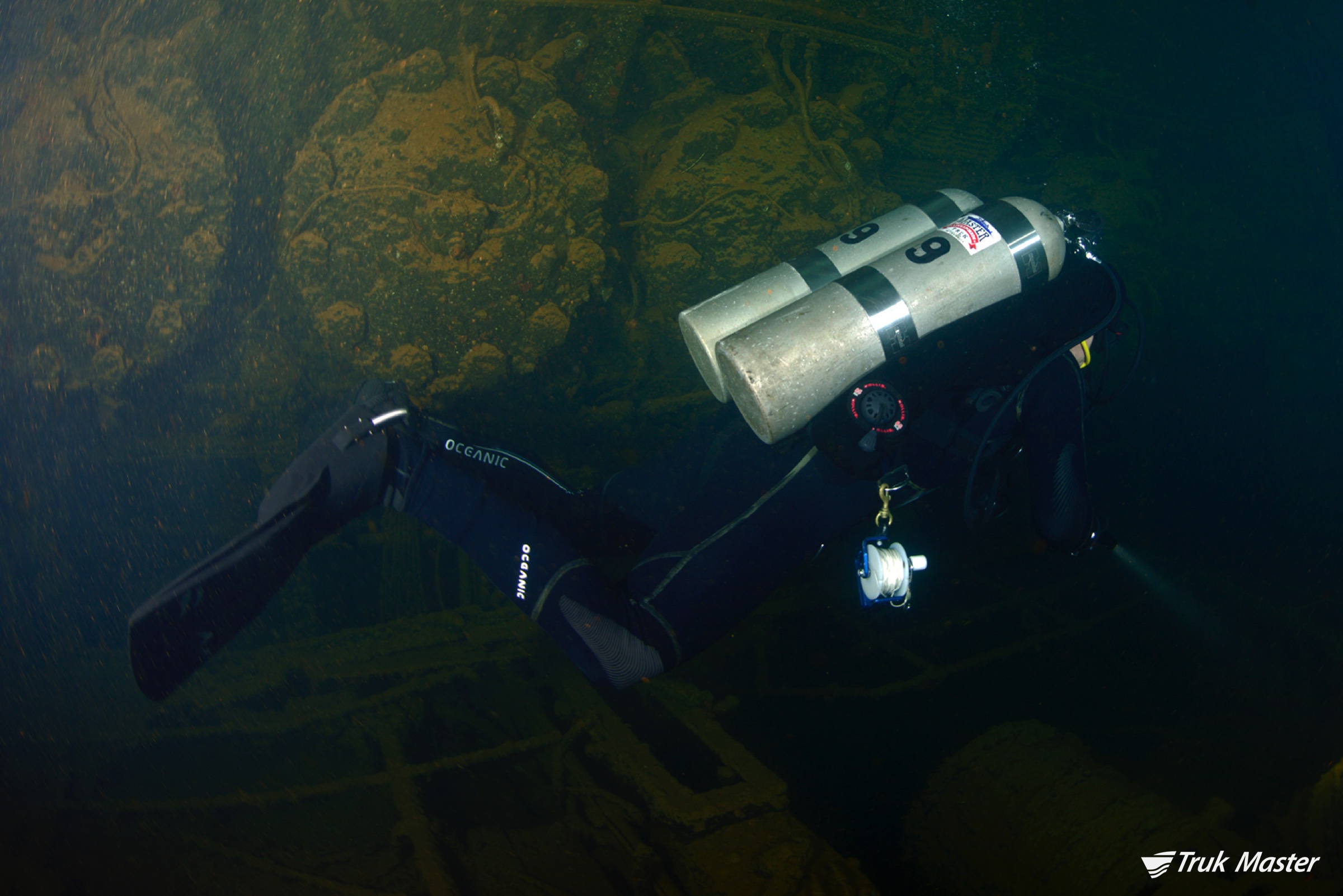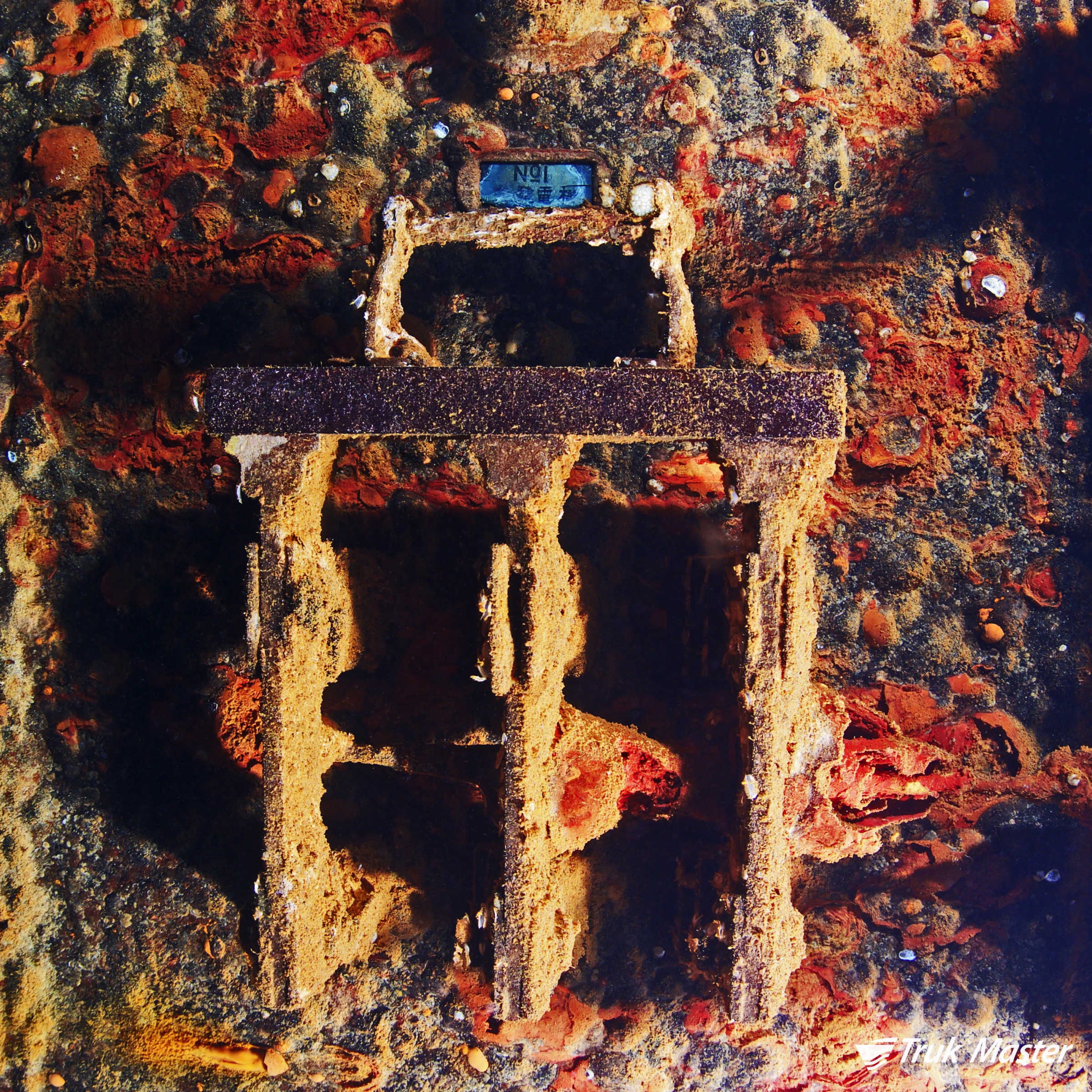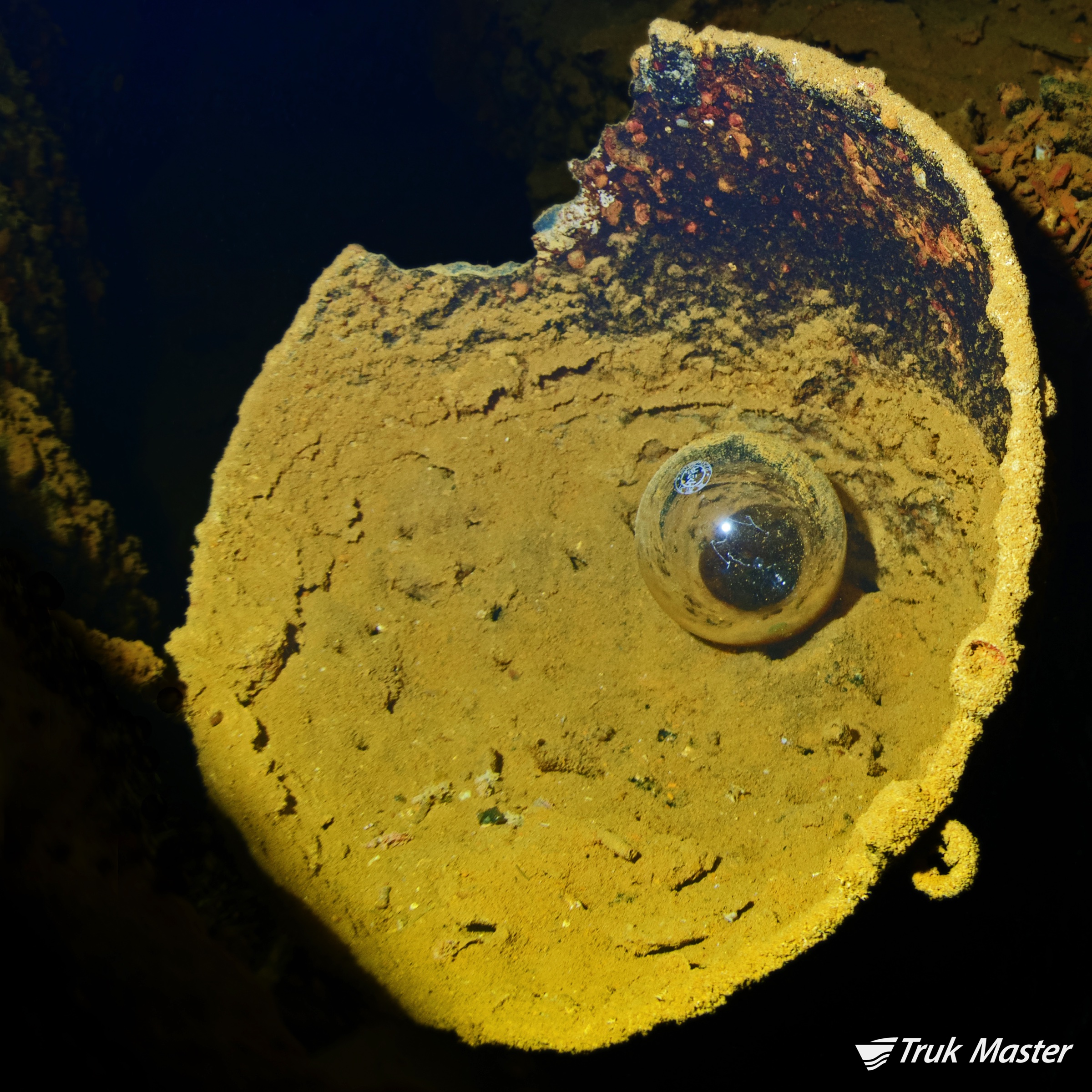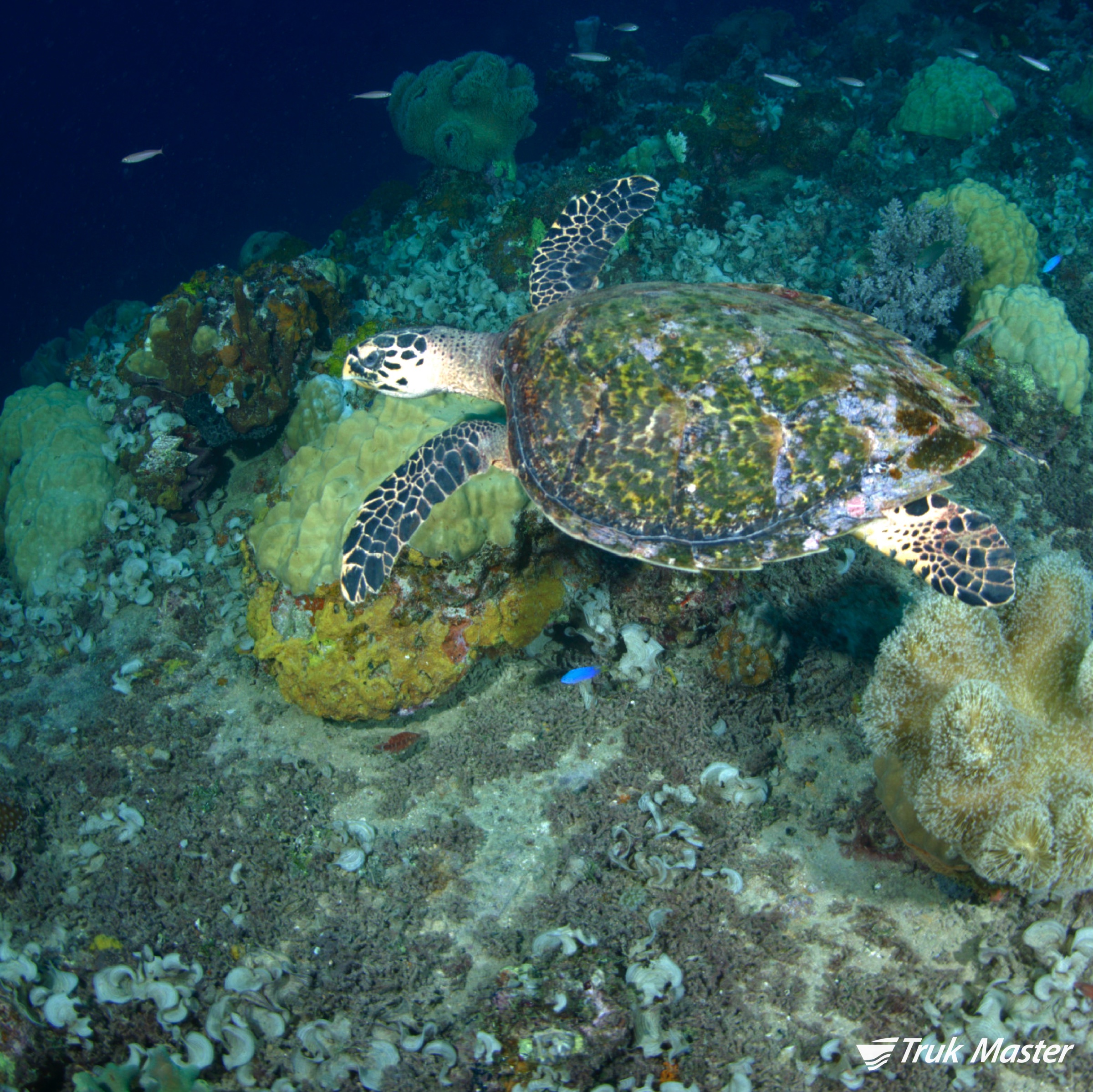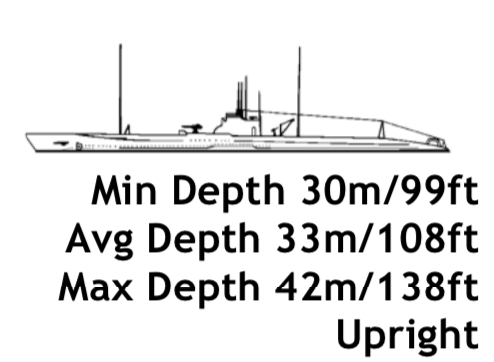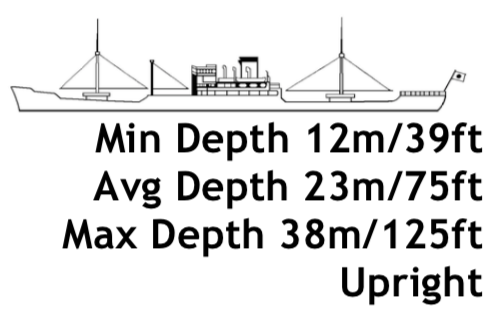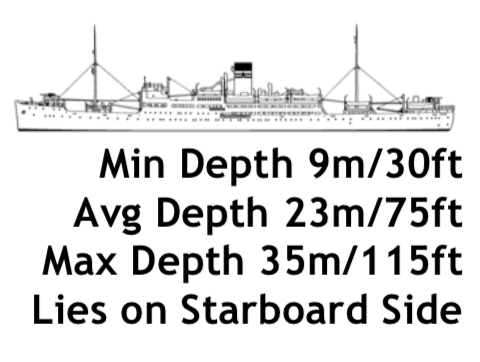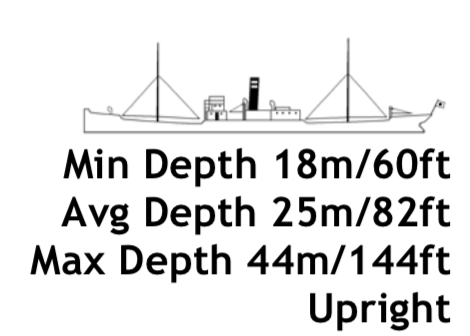The intensive bombardment of Truk Lagoon resulted in around 50 wrecks, with more yet to be discovered. Historians call the attack America’s answer to Pearl Harbor but divers know Truk better as the Lagoon of Lost Ships and the home of world-class wreck diving.
The Dirty Dozen trips explore the lesser visited wrecks in Truk Lagoon and the absolute classics. Our itineraries are flexible and designed for the divers on board. Join us for a one-of-a-kind diving experience with a team that understands wreck diving and the thirst for exploration.
Here are a few of the wrecks that we think showcase the best recreational diving in Truk Lagoon:
Betty Bomber
The Betty Bomber is a relatively intact Japanese bomber, although the two engines are located a short swim away from the main wreck itself. The seabed surrounding the plane is littered with artifacts from inside the aircraft including the radio, machine guns, and toilet. It’s possible to enter the fuselage and swim all the way through the wreck.
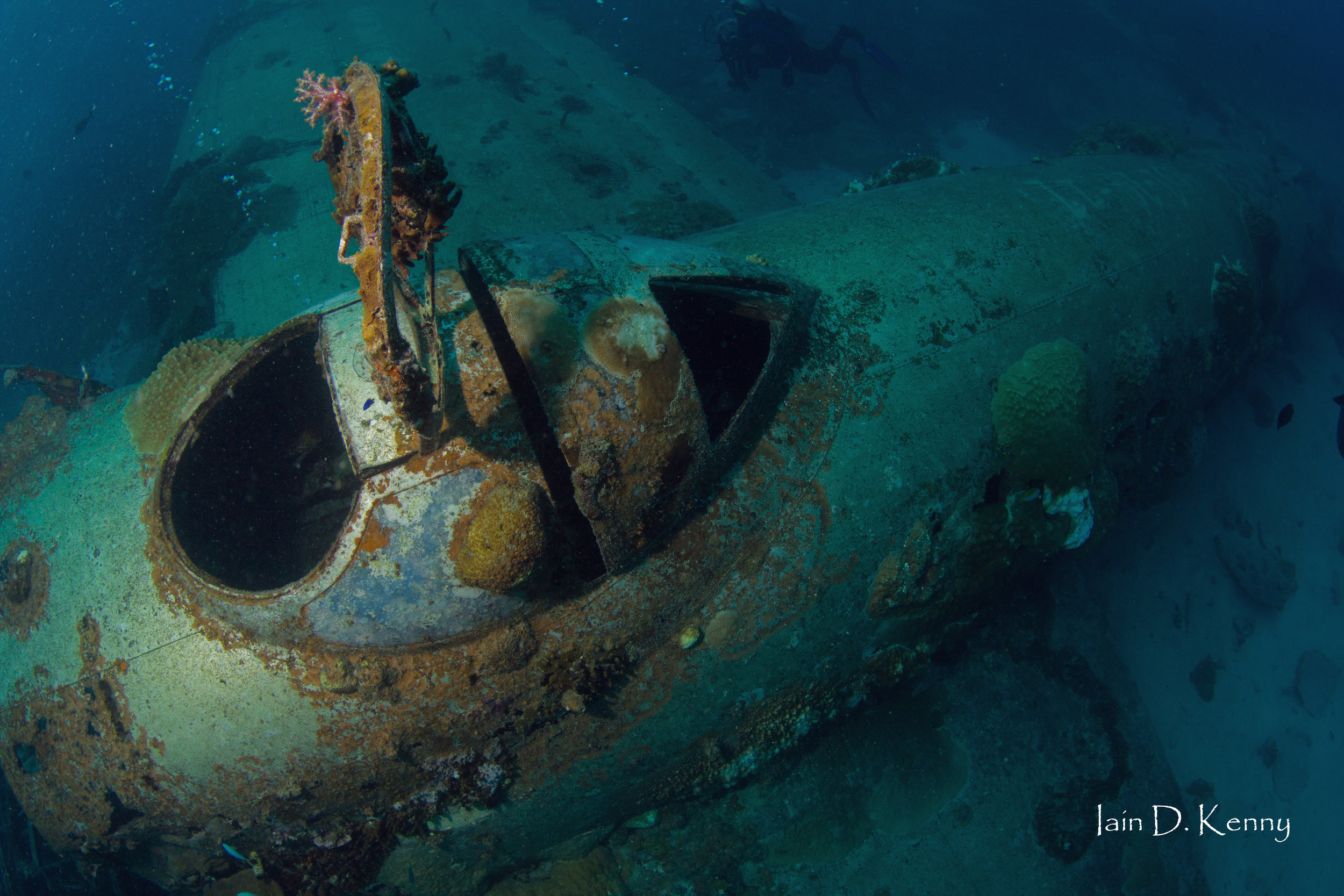
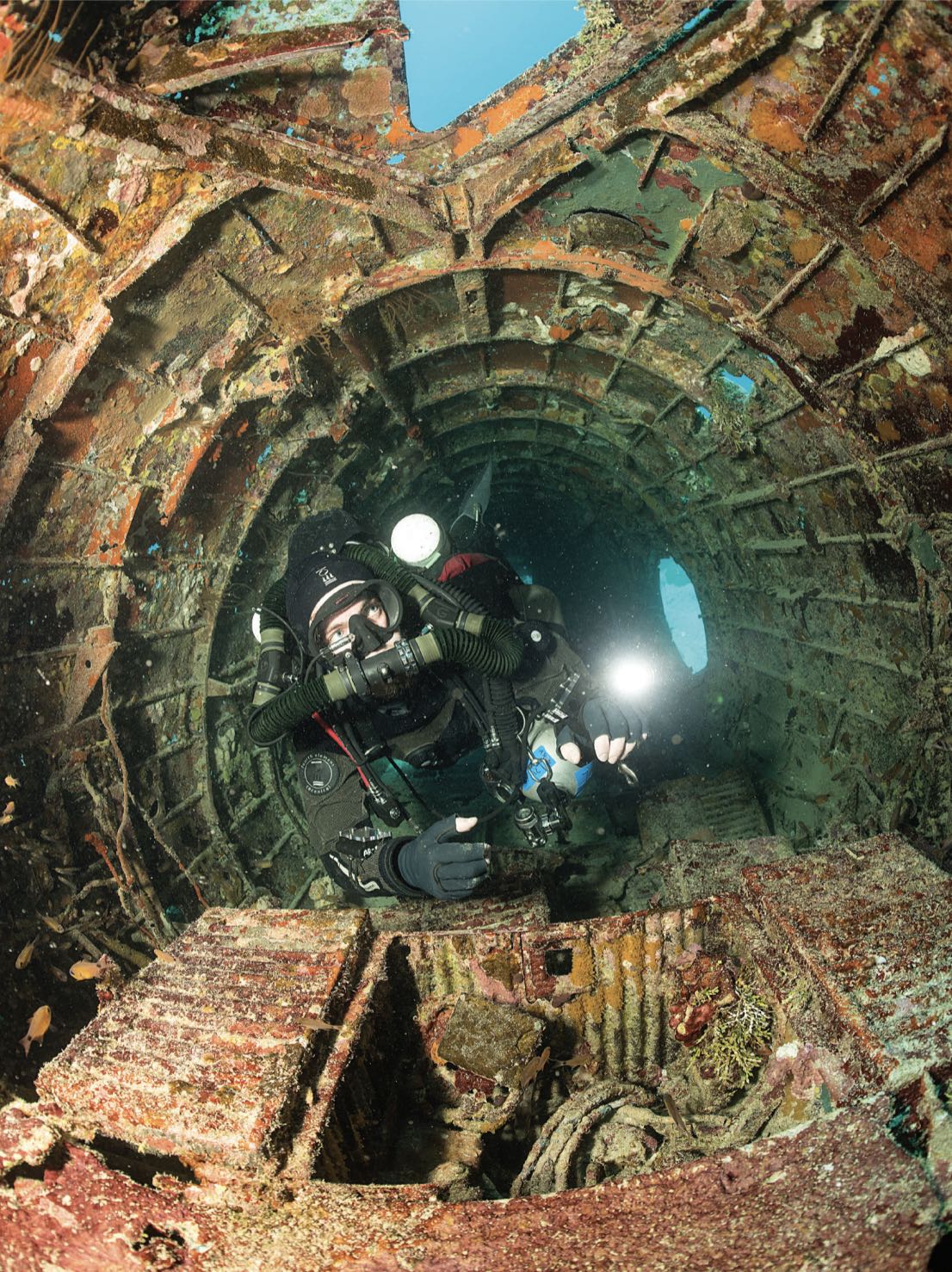
IJN Fumizuki
The Fumizuki was a Mutsuki class destroyer that is now starting to slowly disintegrate. The bow section has broken away and rests on its side with the bow gun now lying on the seabed. It is possible to see the torpedo launchers and associated turret just forward of the damaged bridge that has broken away from the main ship's superstructure and now rests upside down next to the vessel. At the stern, the large starboard propeller still sits proud of the seabed. On the deck, depth charge throwers can still be seen along with the many artifacts that are scattered all around.
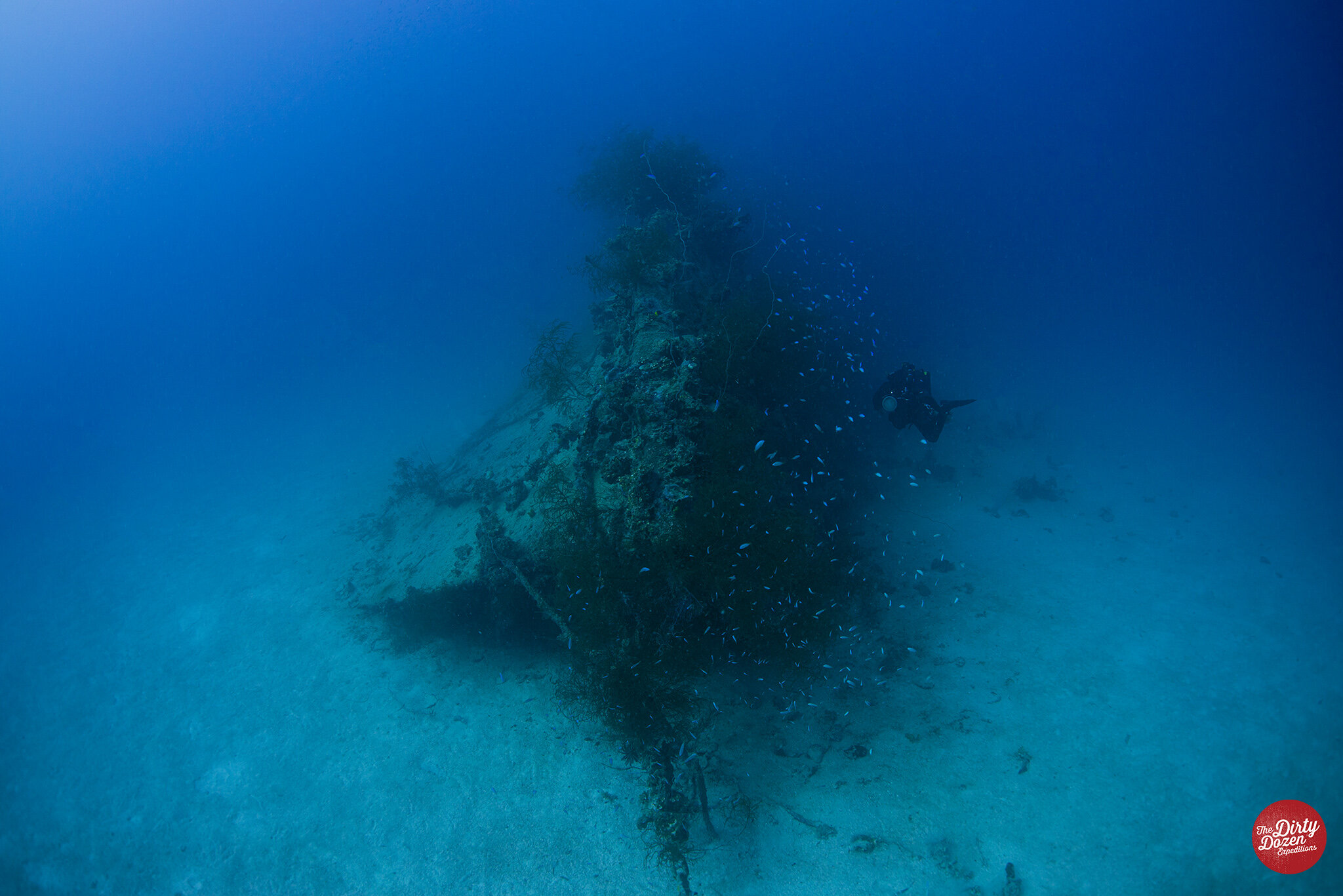
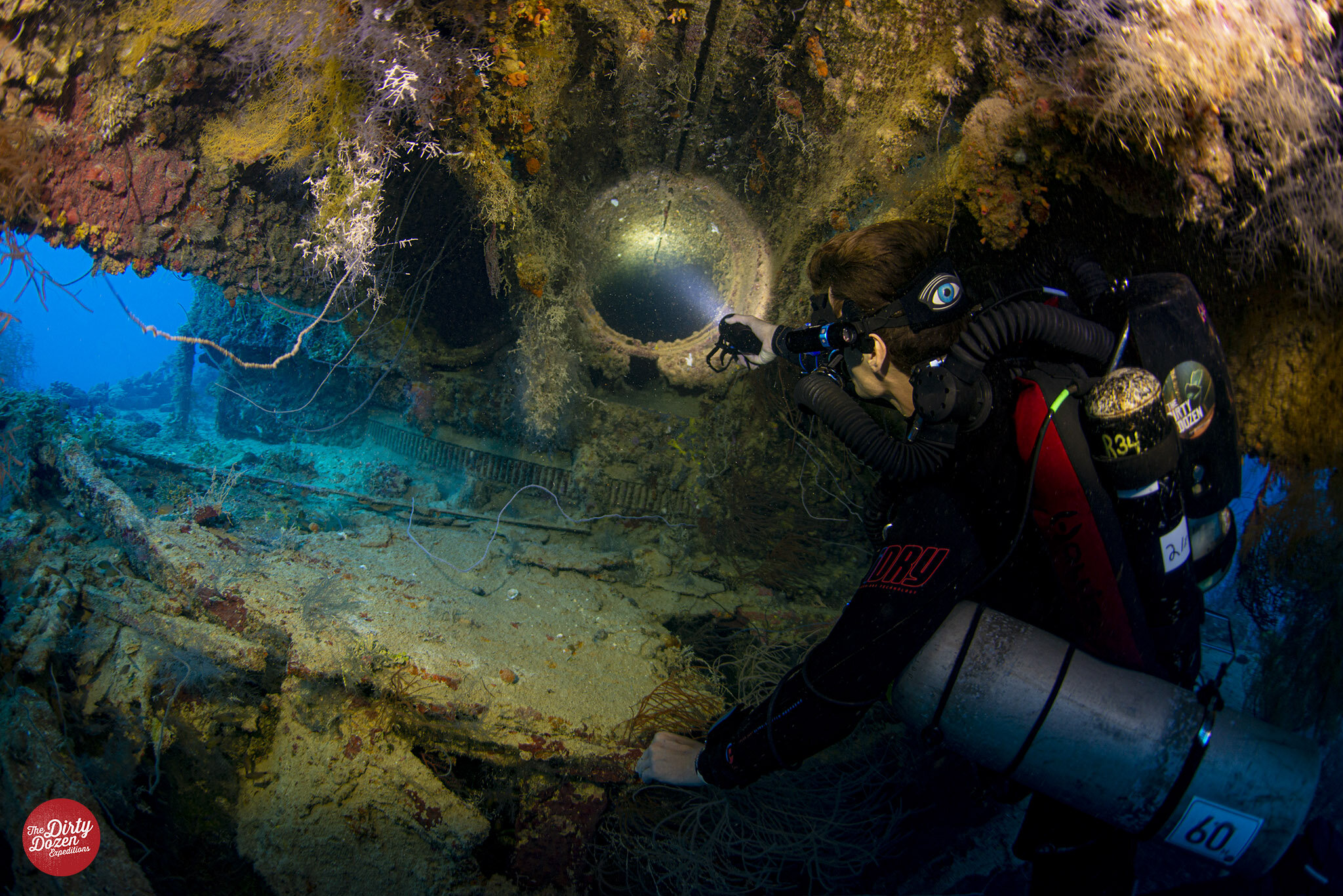
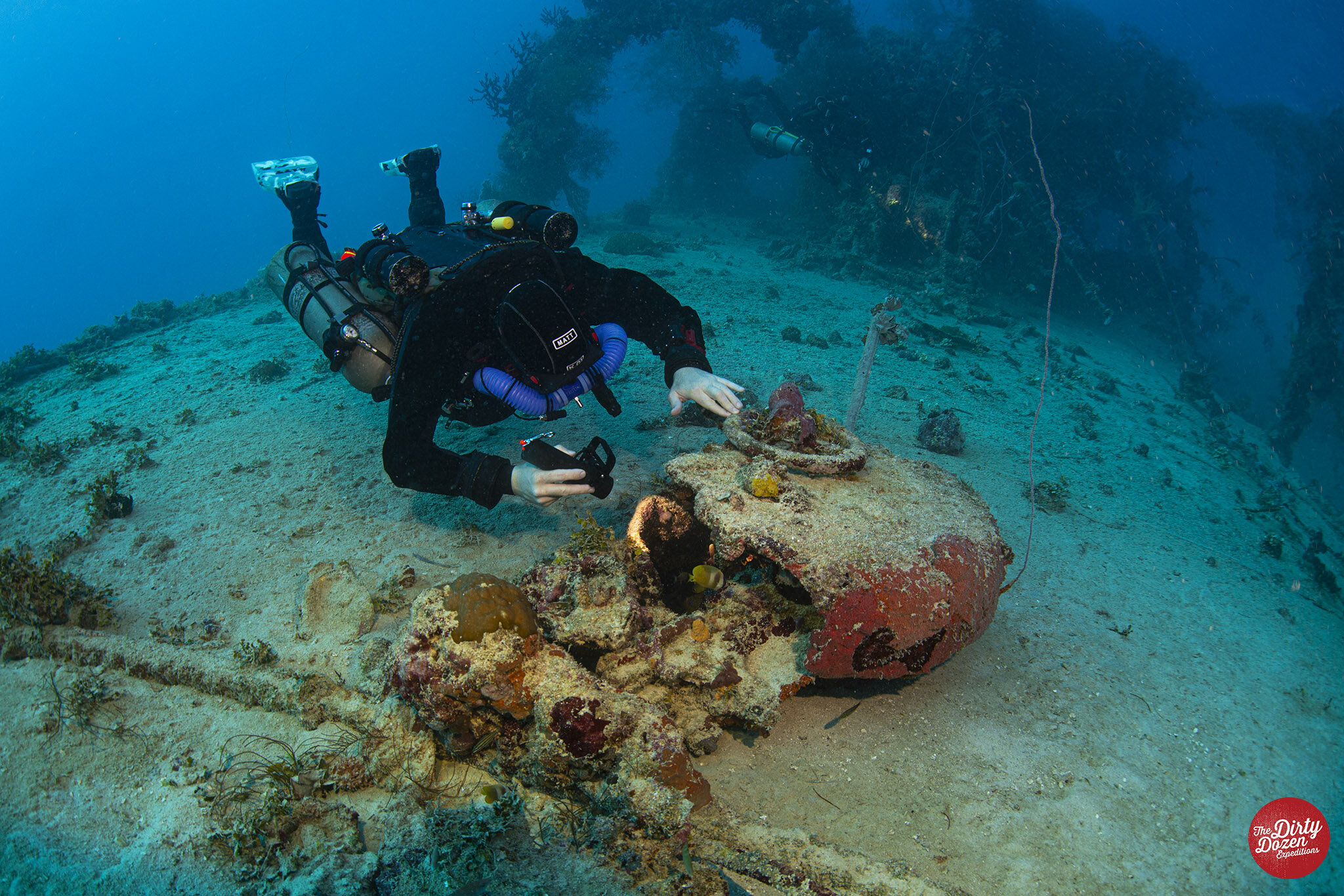
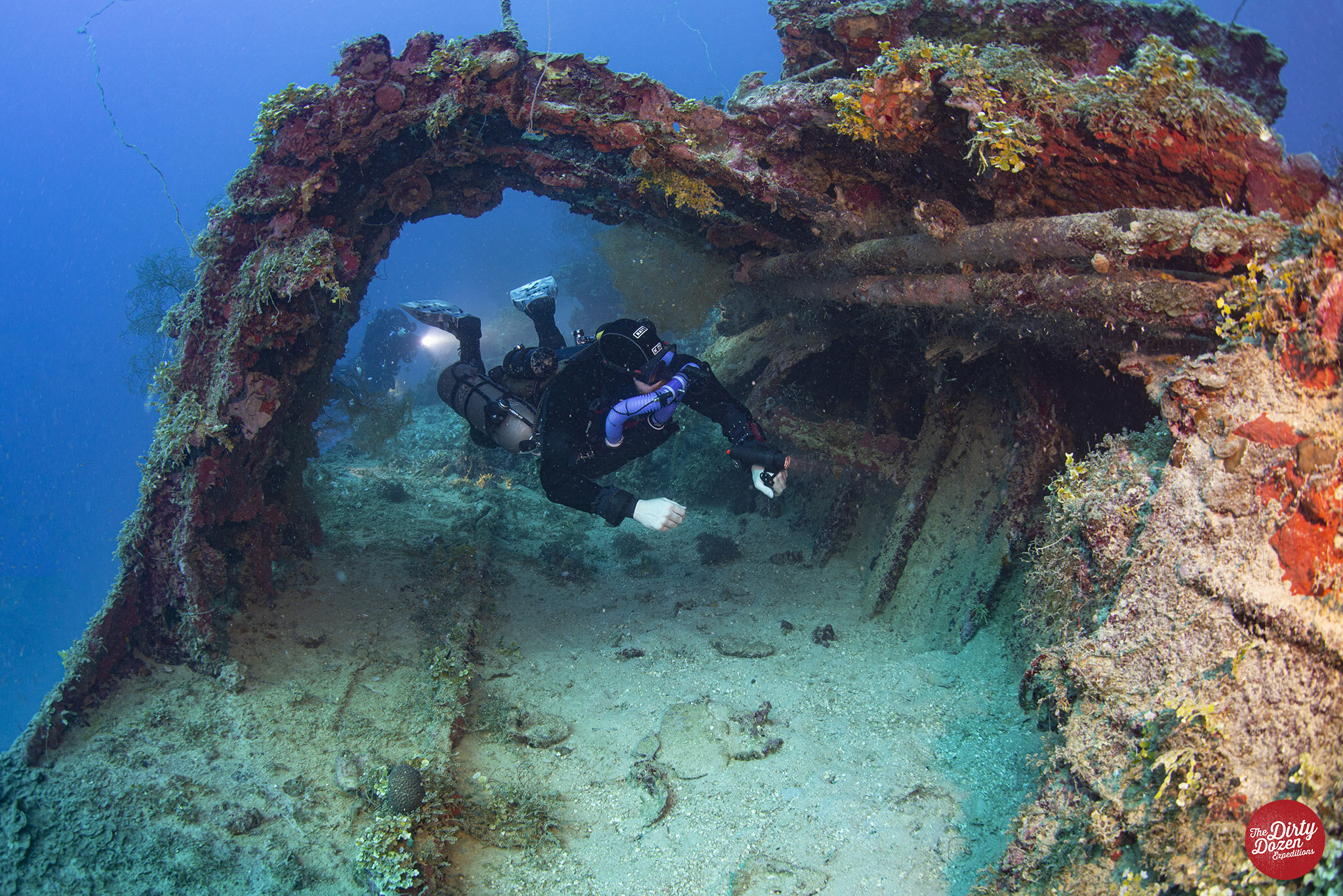
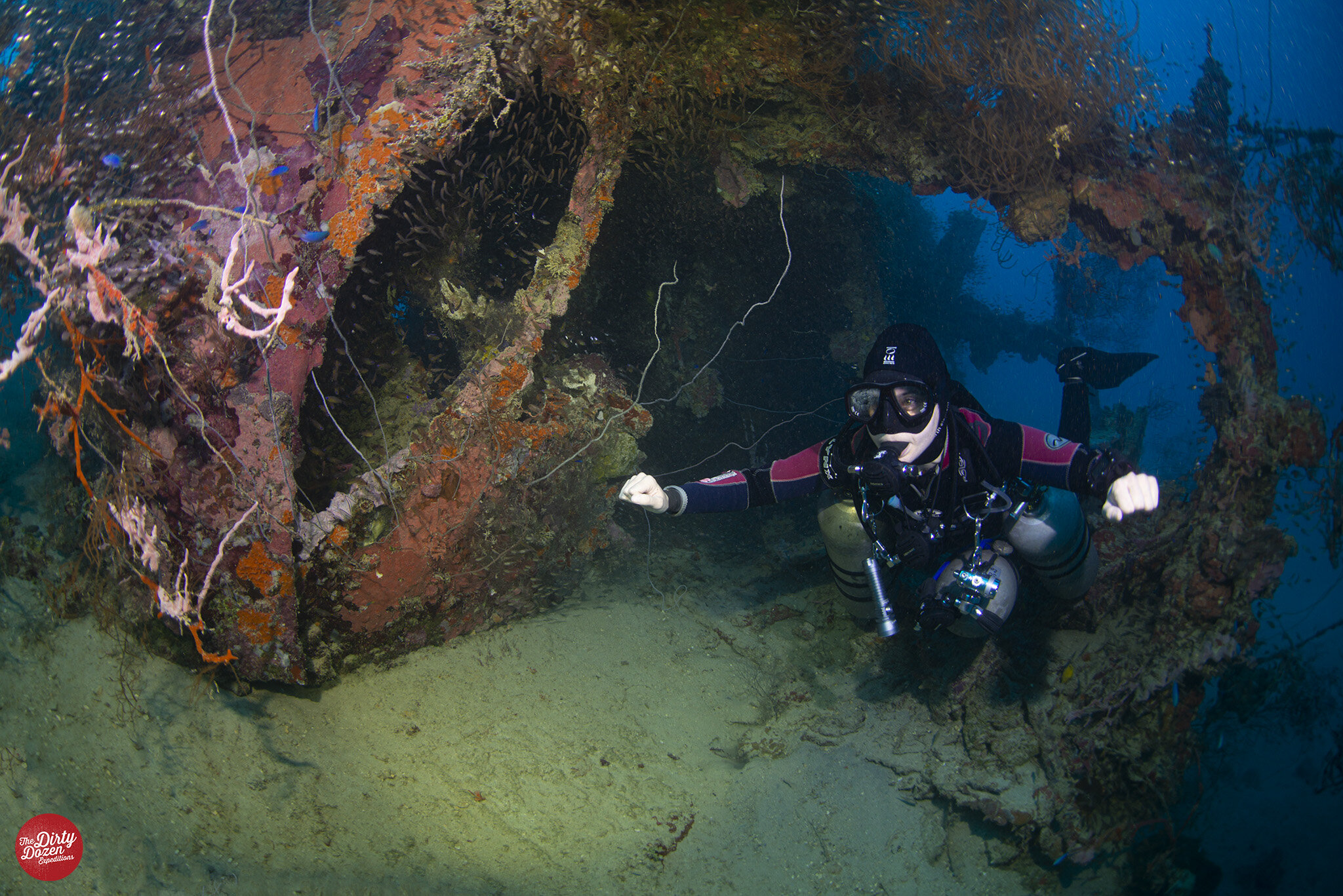
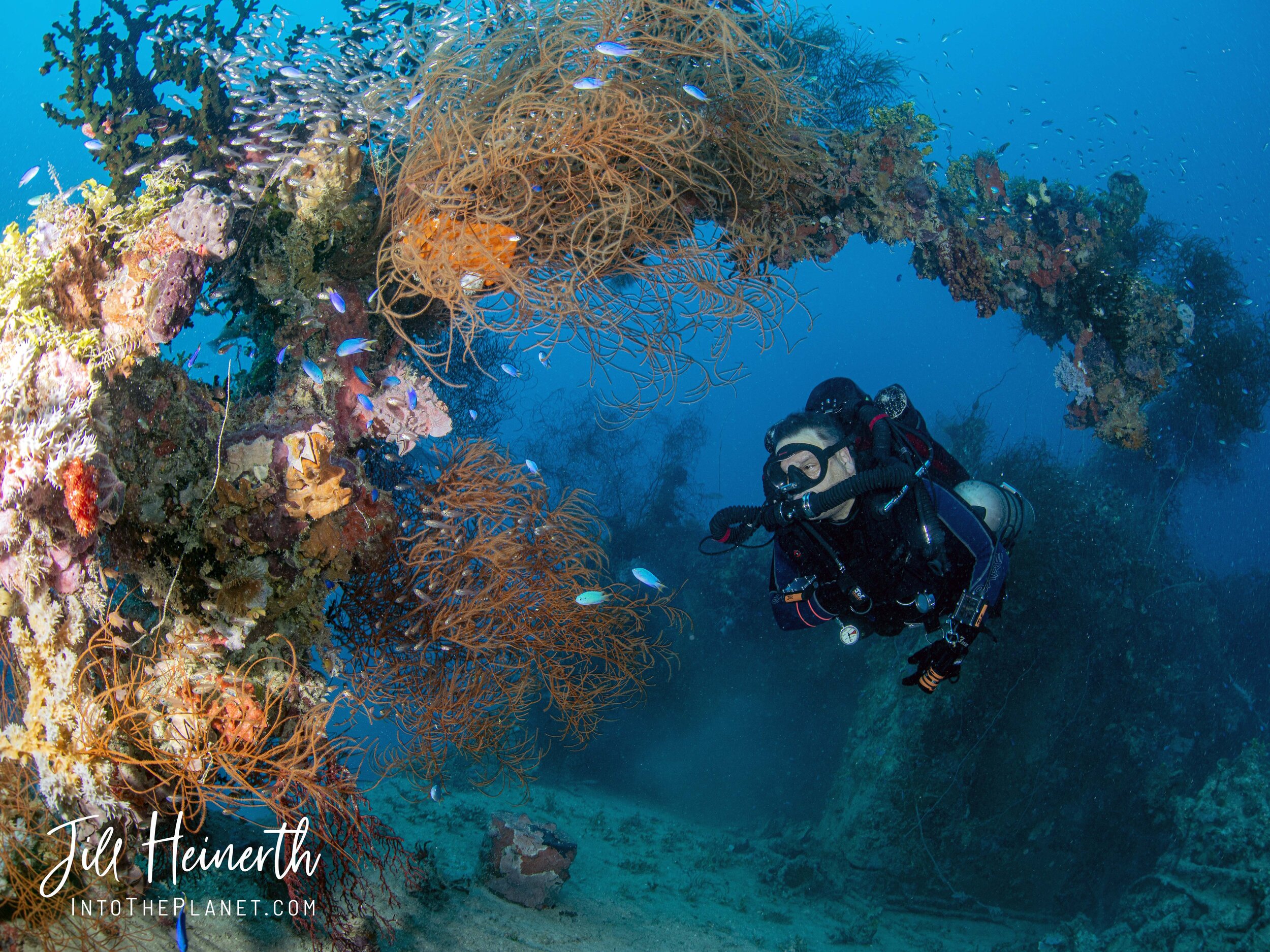
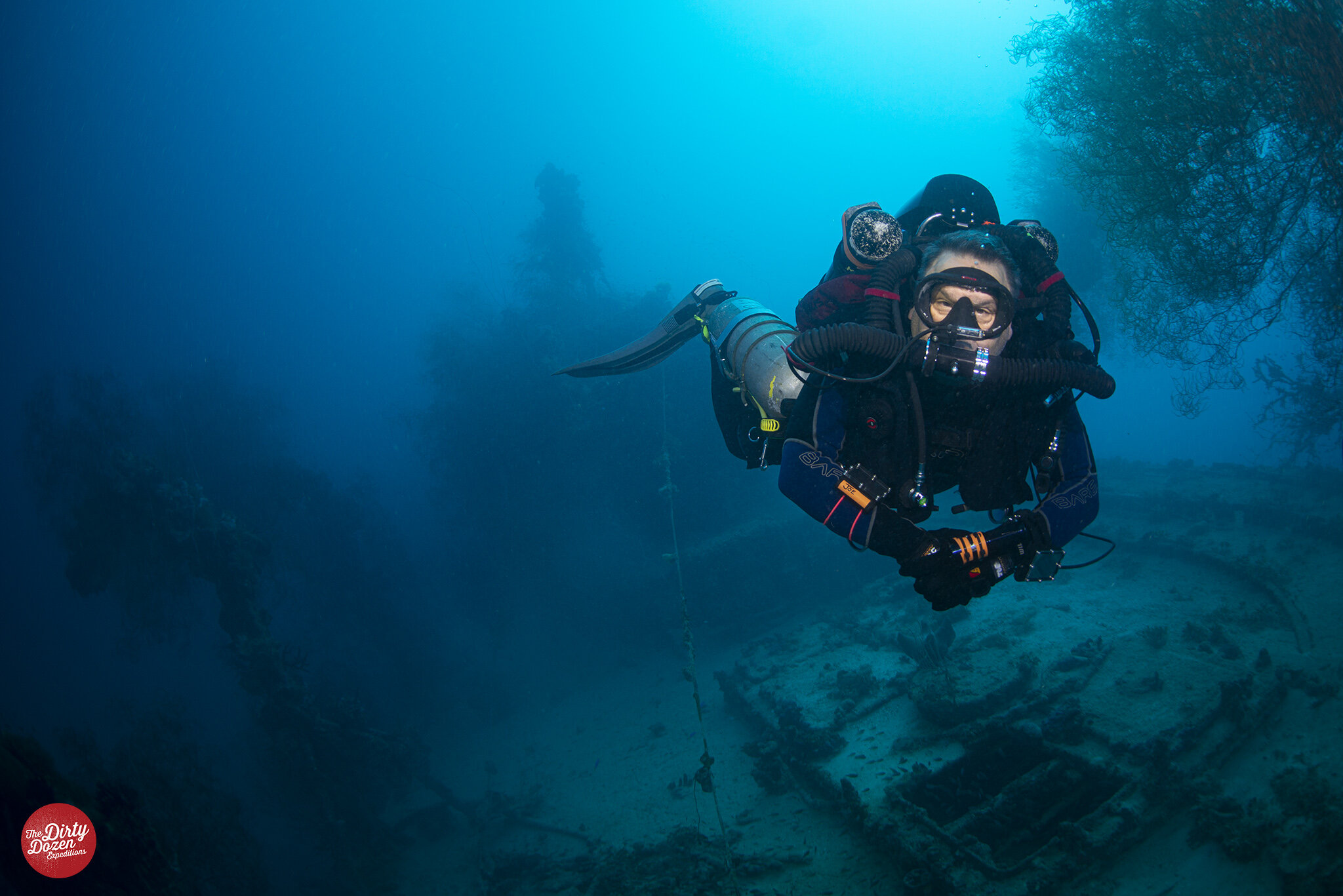
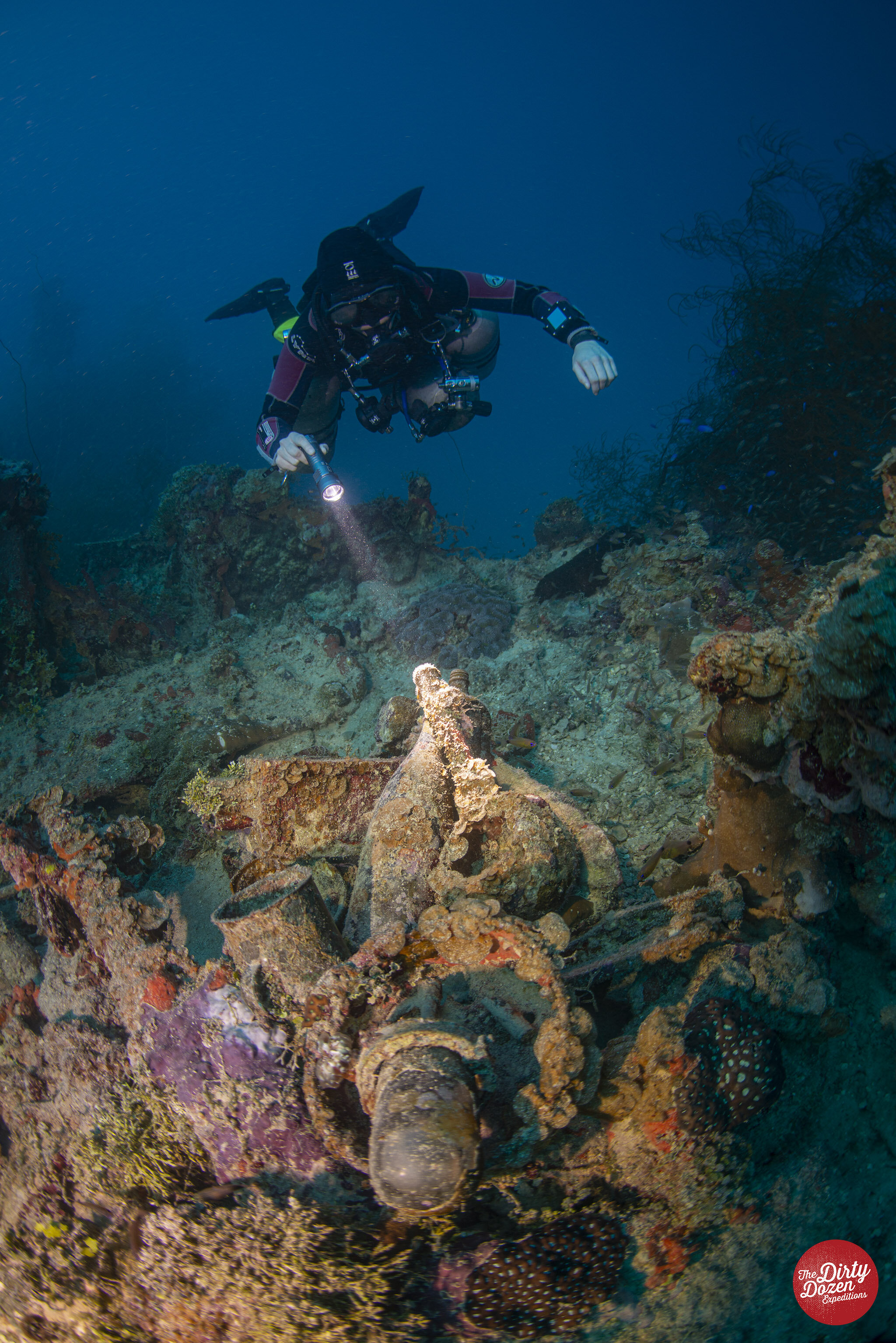
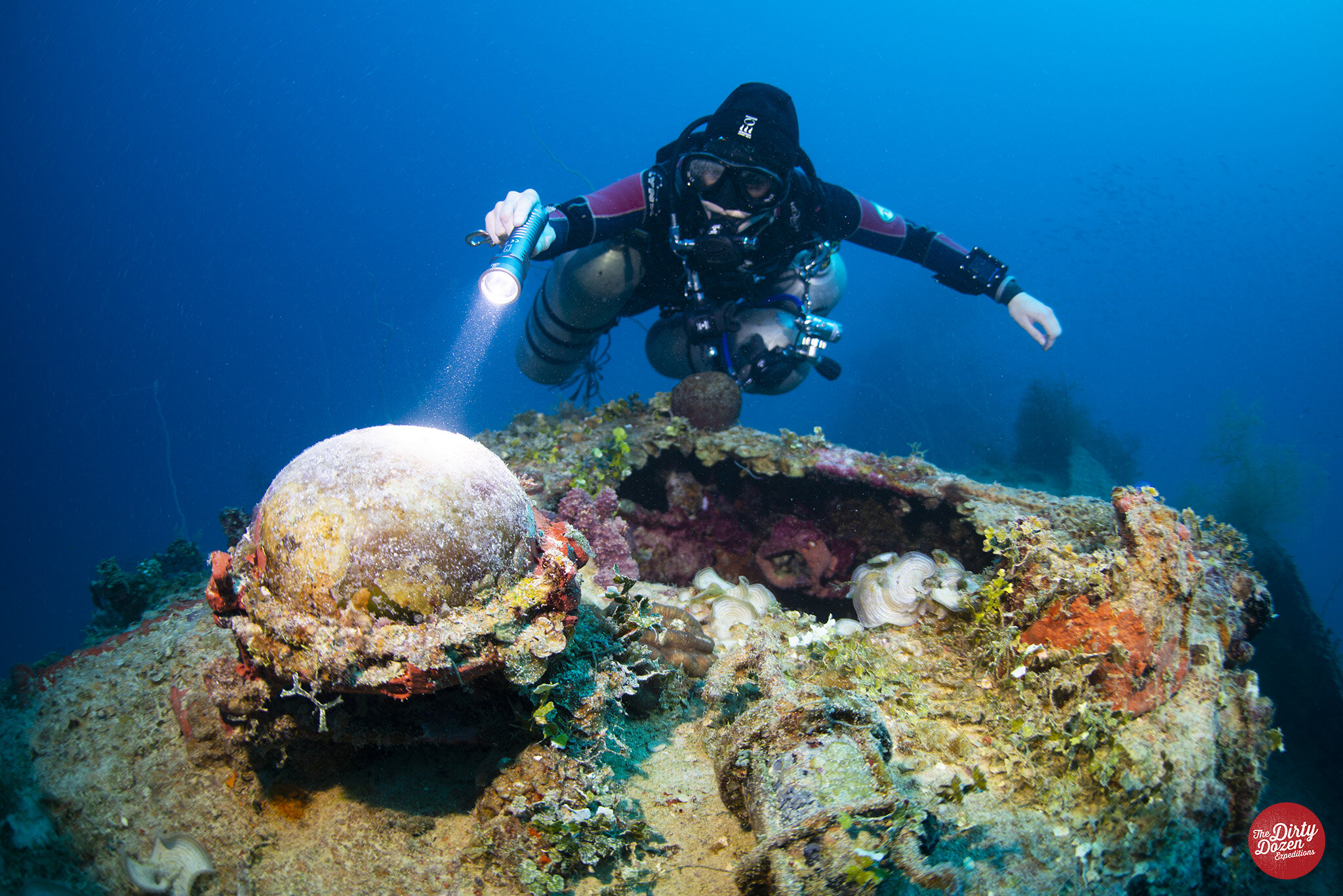
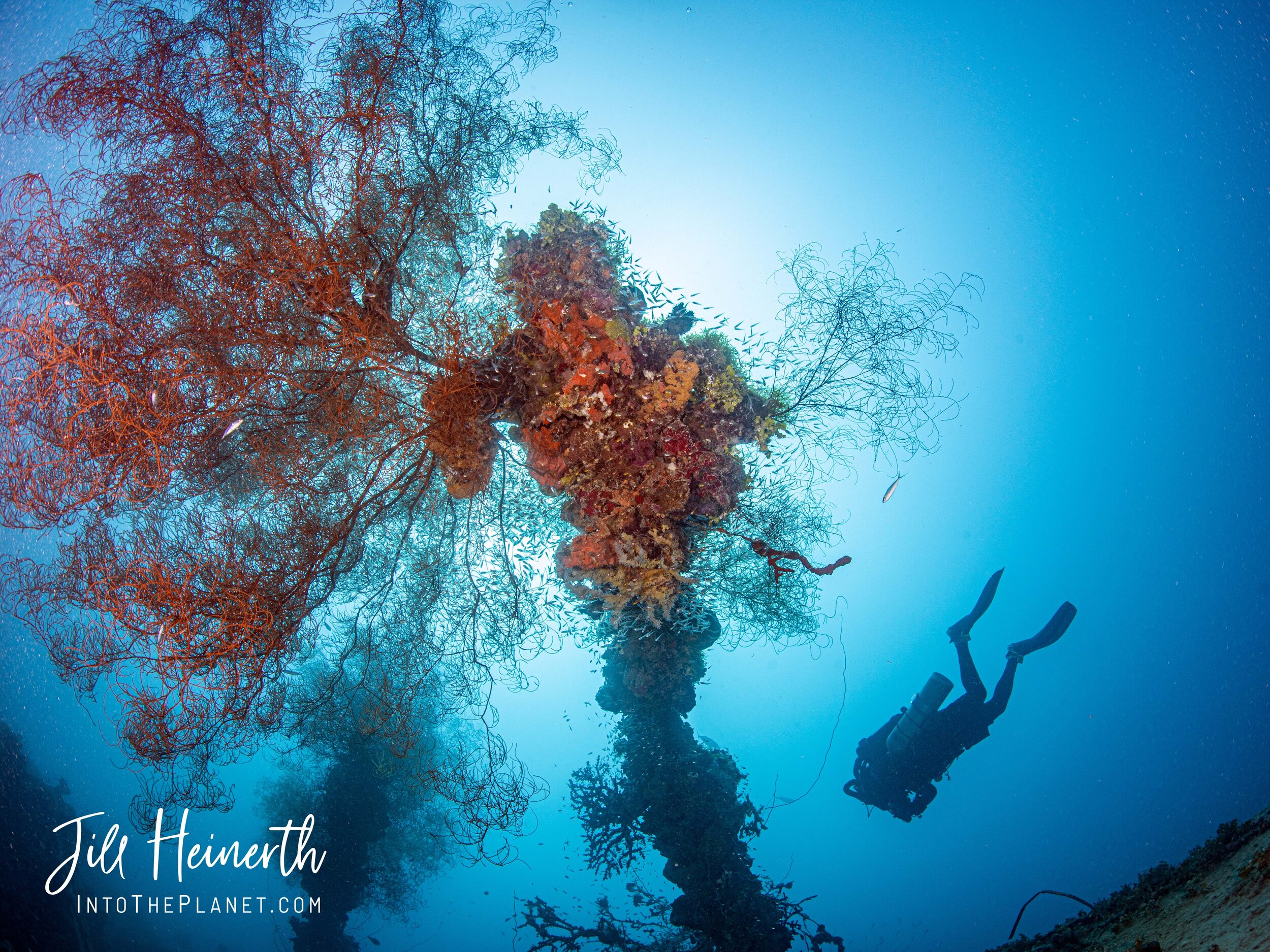
Fujikawa maru
A must-dive on any Truk trip, the Fujikawa is probably the most famous wreck in the lagoon. Inside the holds divers can find the remains of Japanese fighter planes, spare plane parts (belly tanks, propeller blades, tires and wheels), shell casings, machine guns, gas masks, cooking utensils, beer bottles, fuel drums and much more. Large guns sit on the bow and stern. Although the roof of the engine room has collapsed in recent years, penetrating the machine shop with its lathe, bench drill, grinding wheels, and an air compressor is still possible.
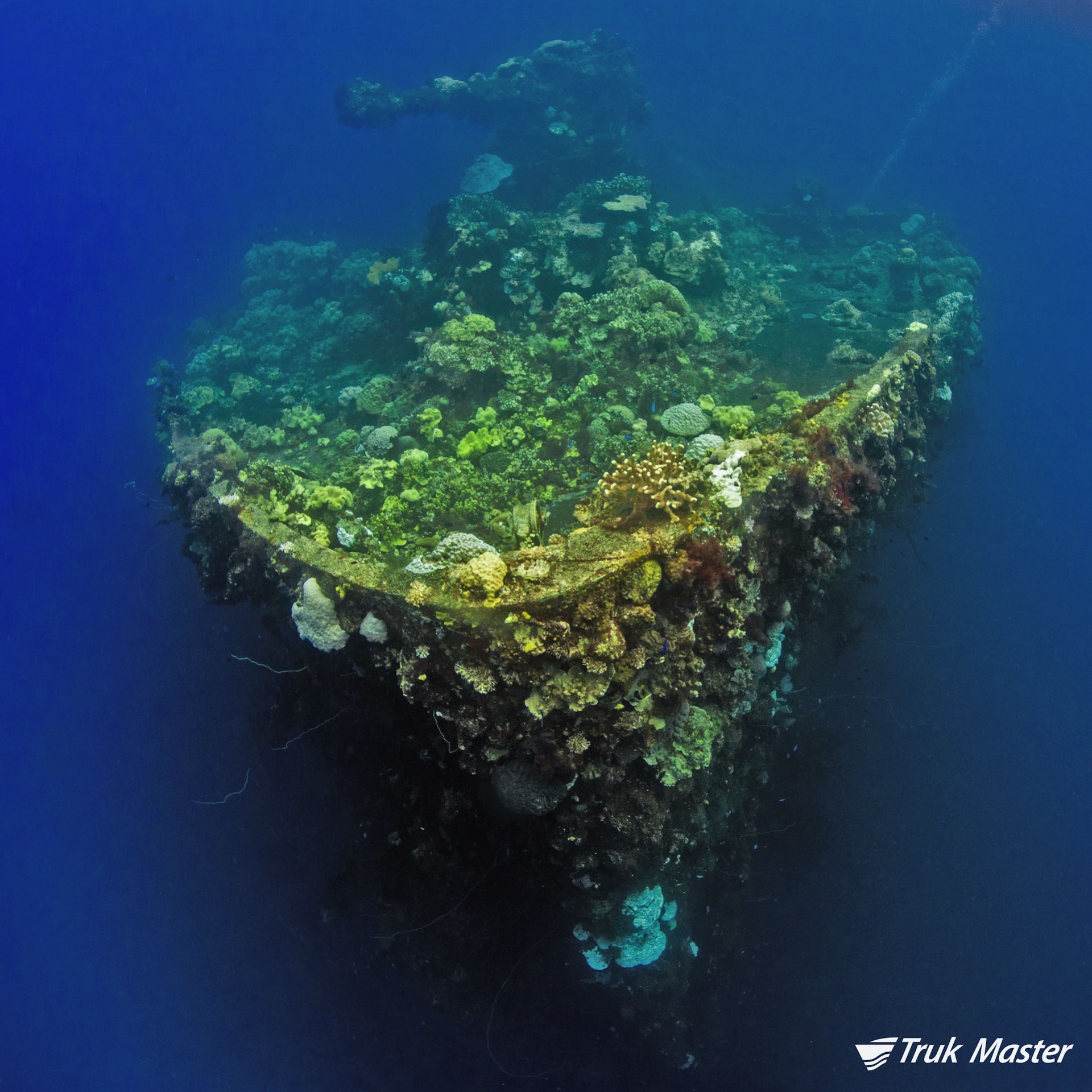
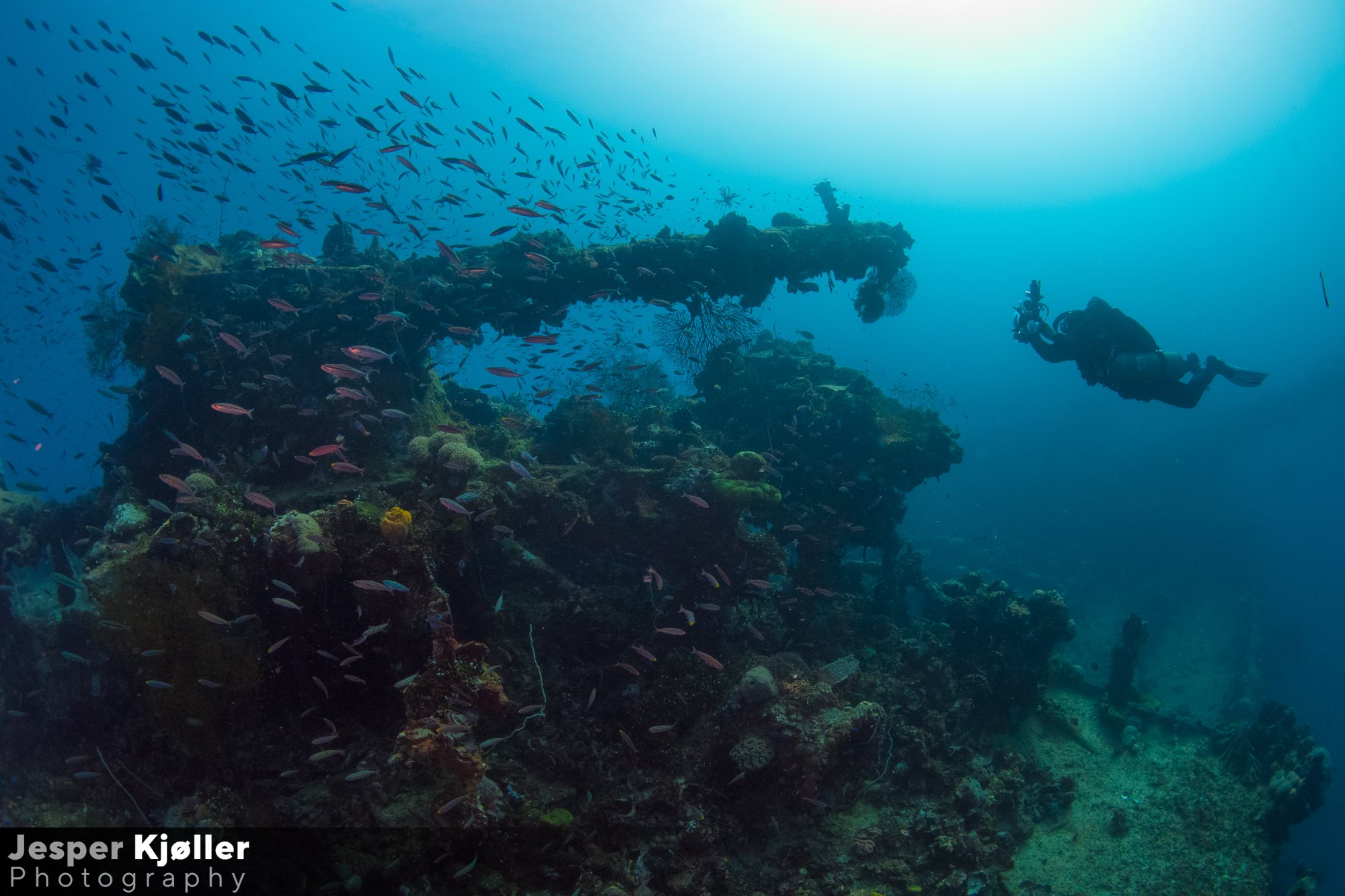

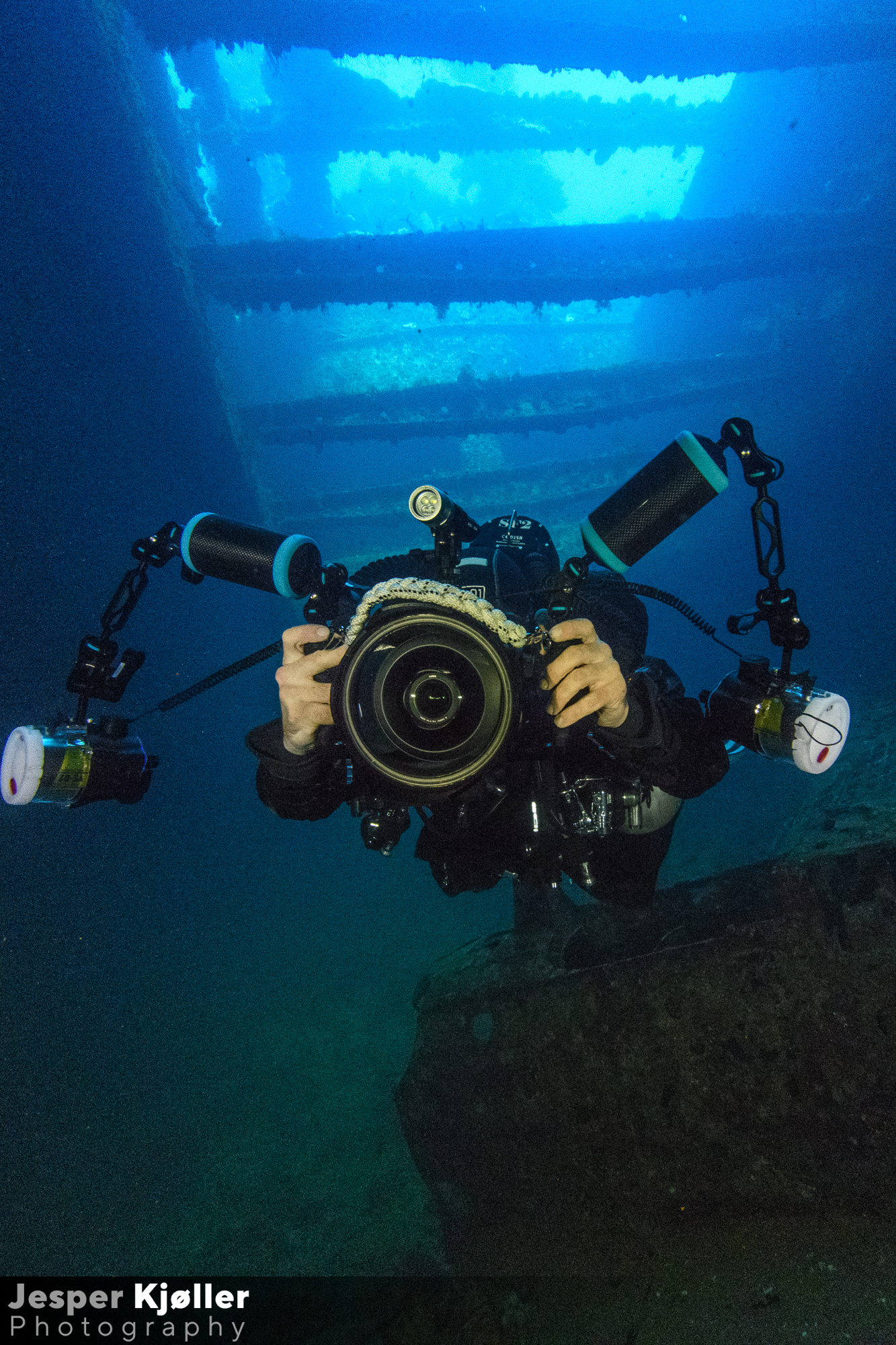
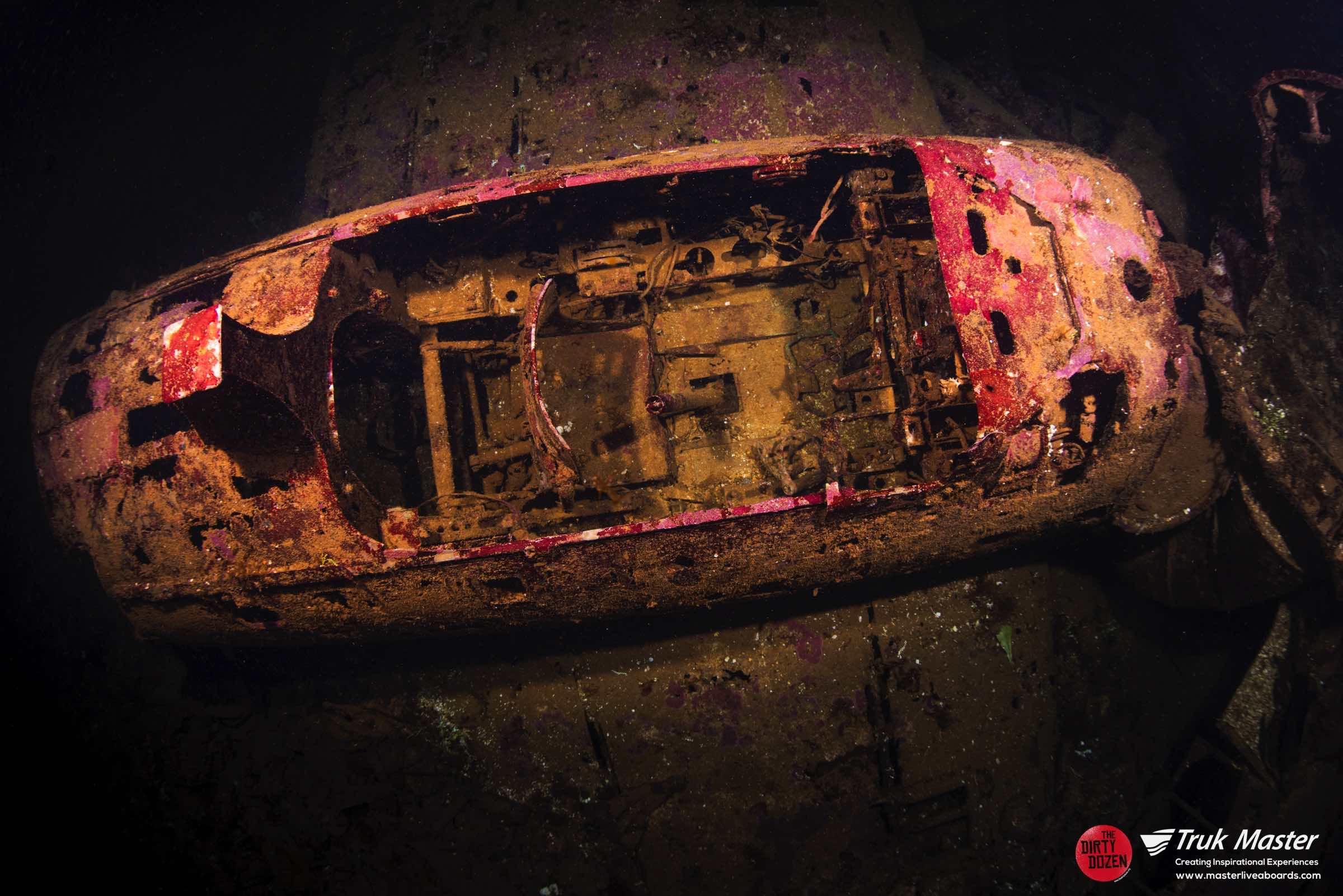
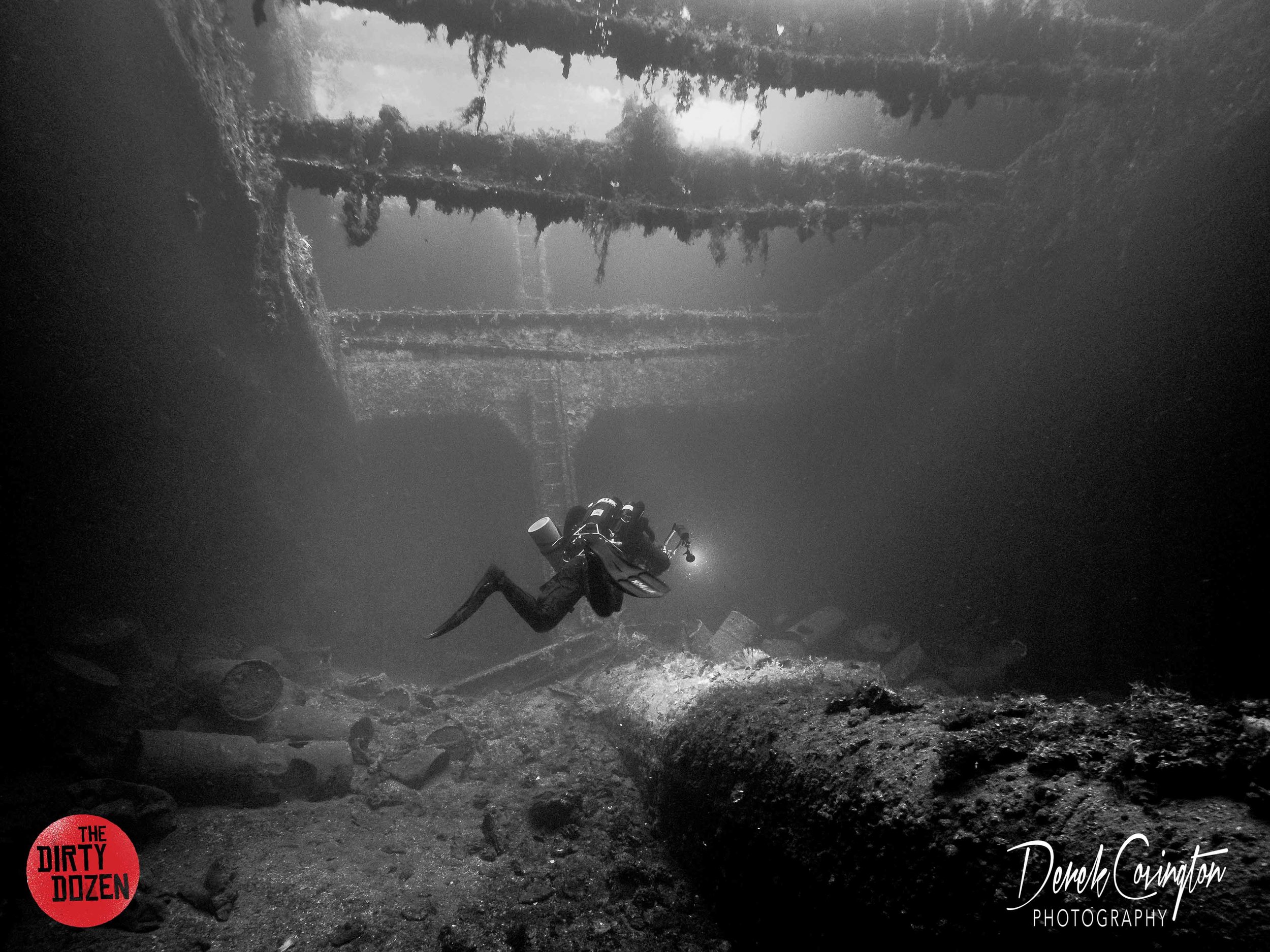
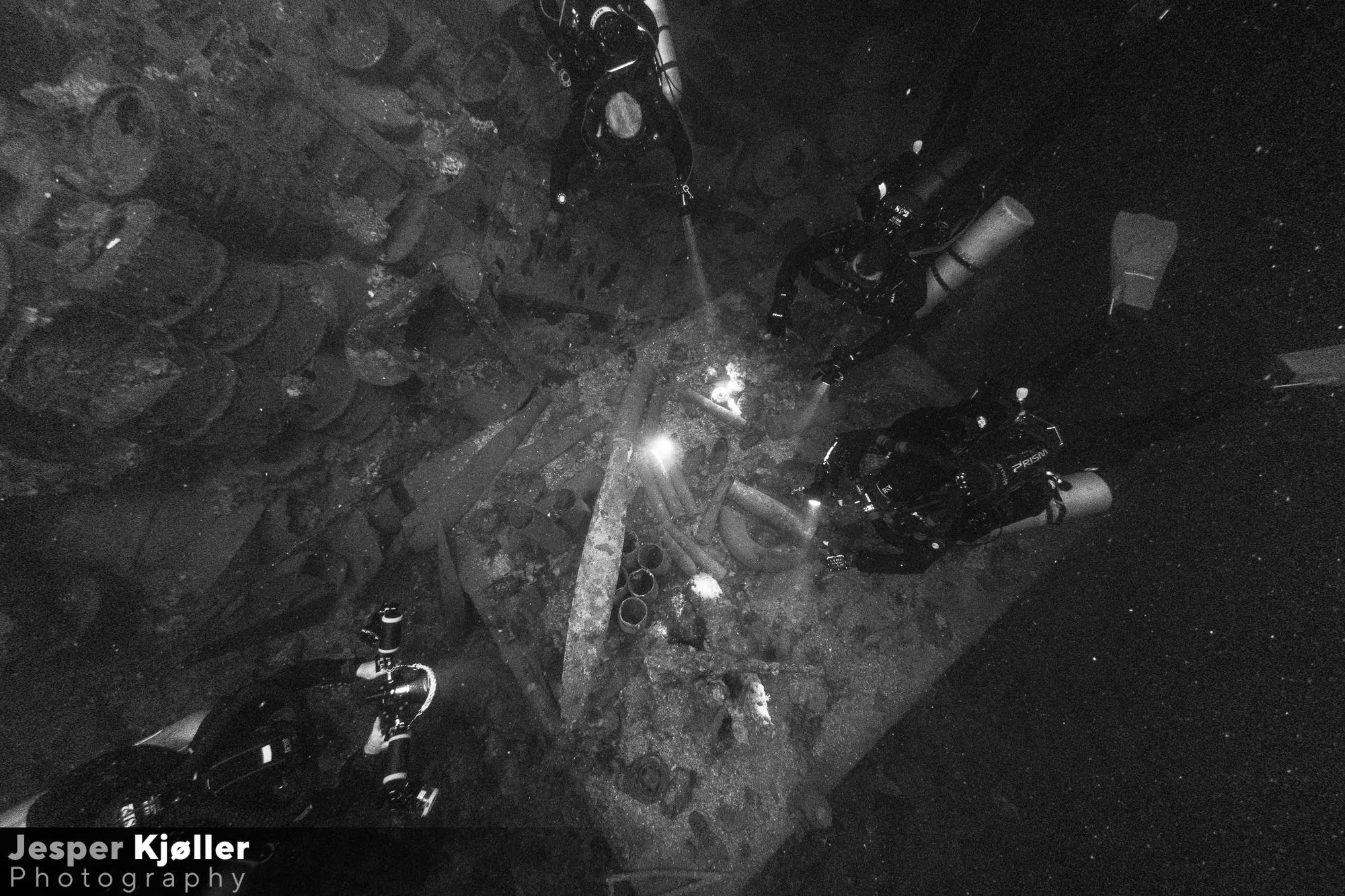
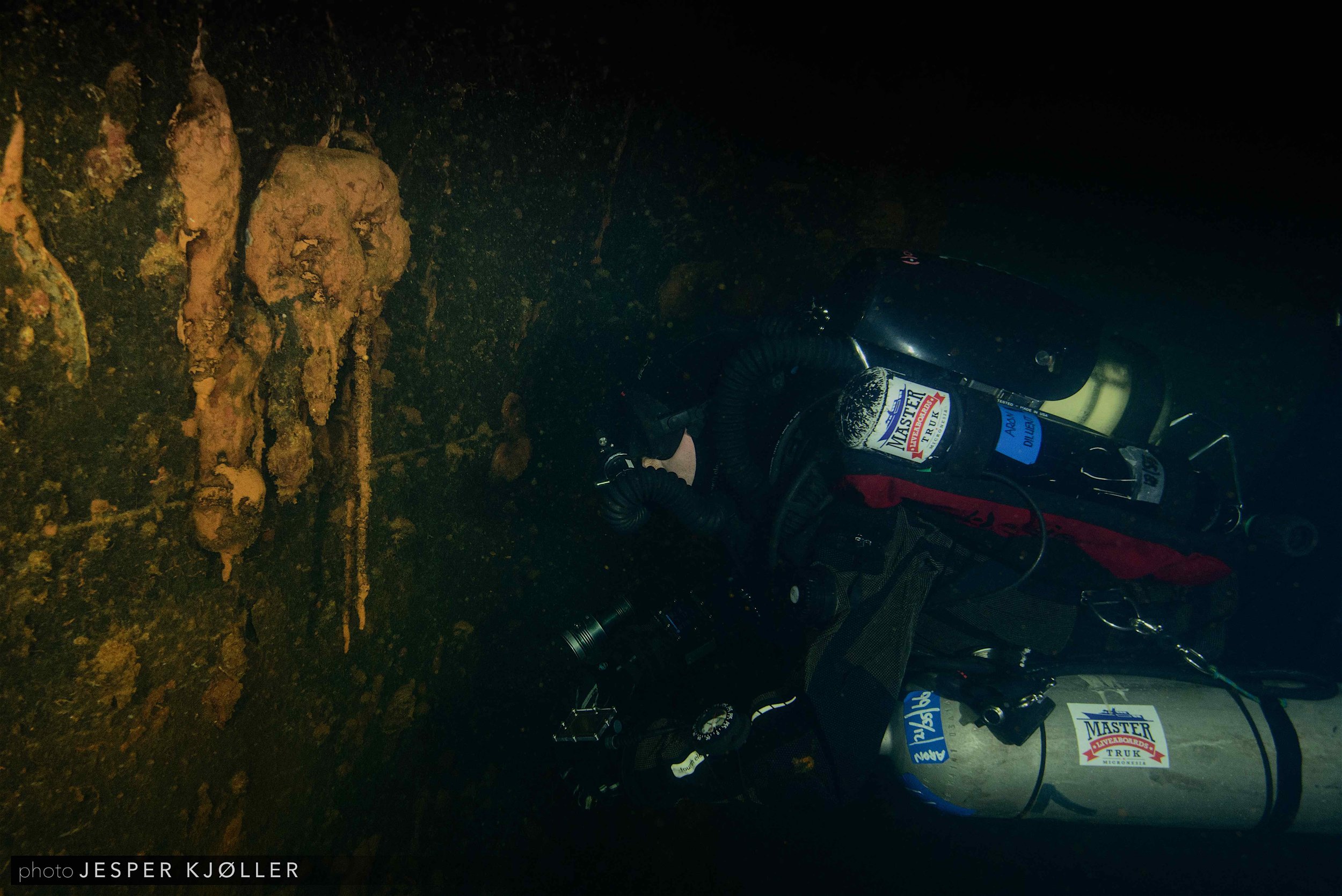
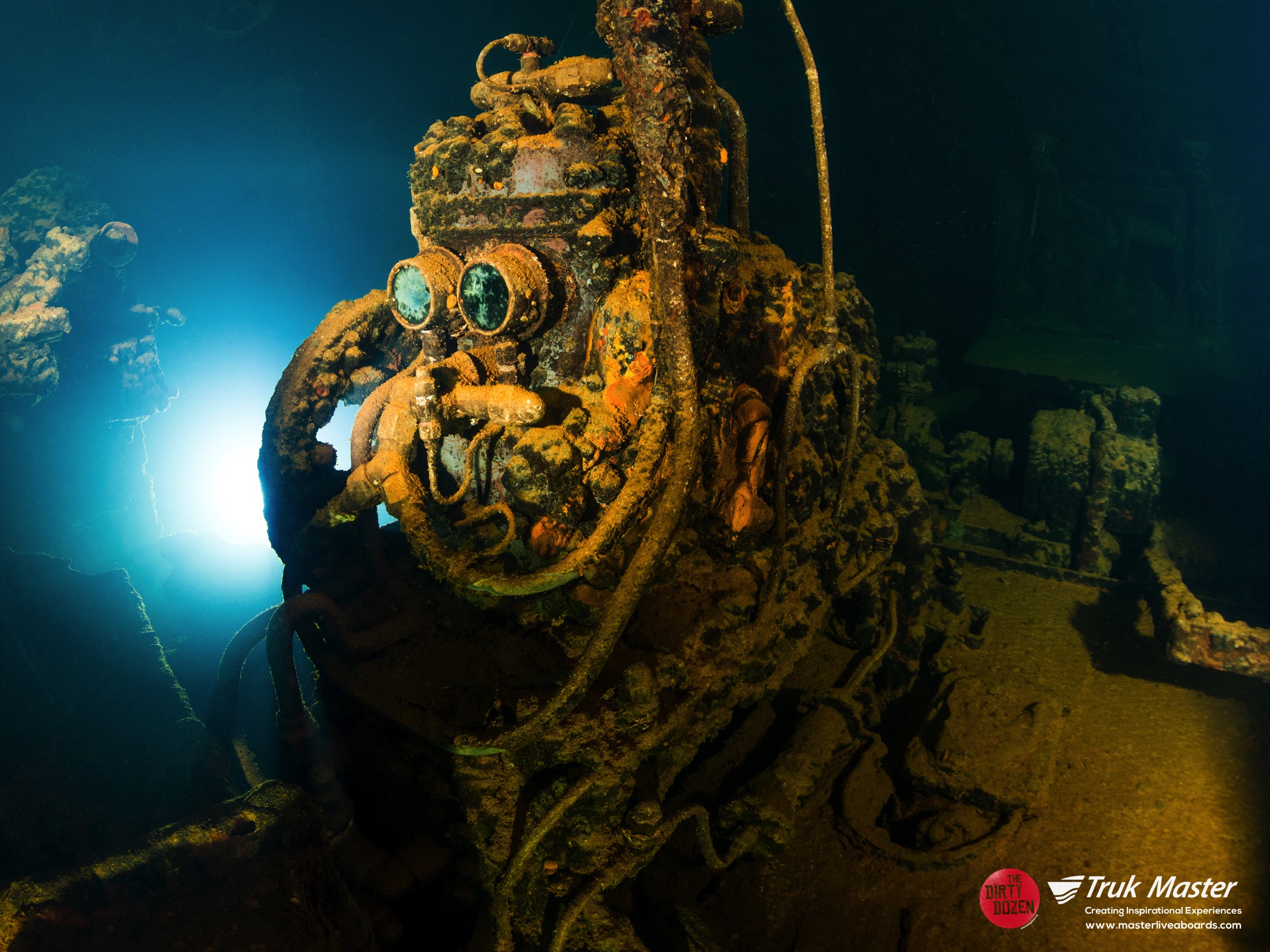
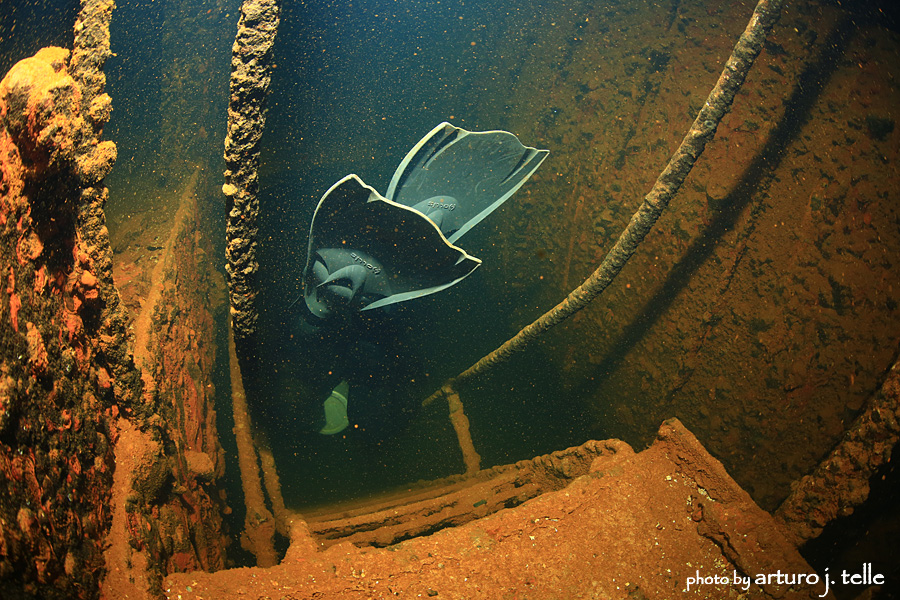
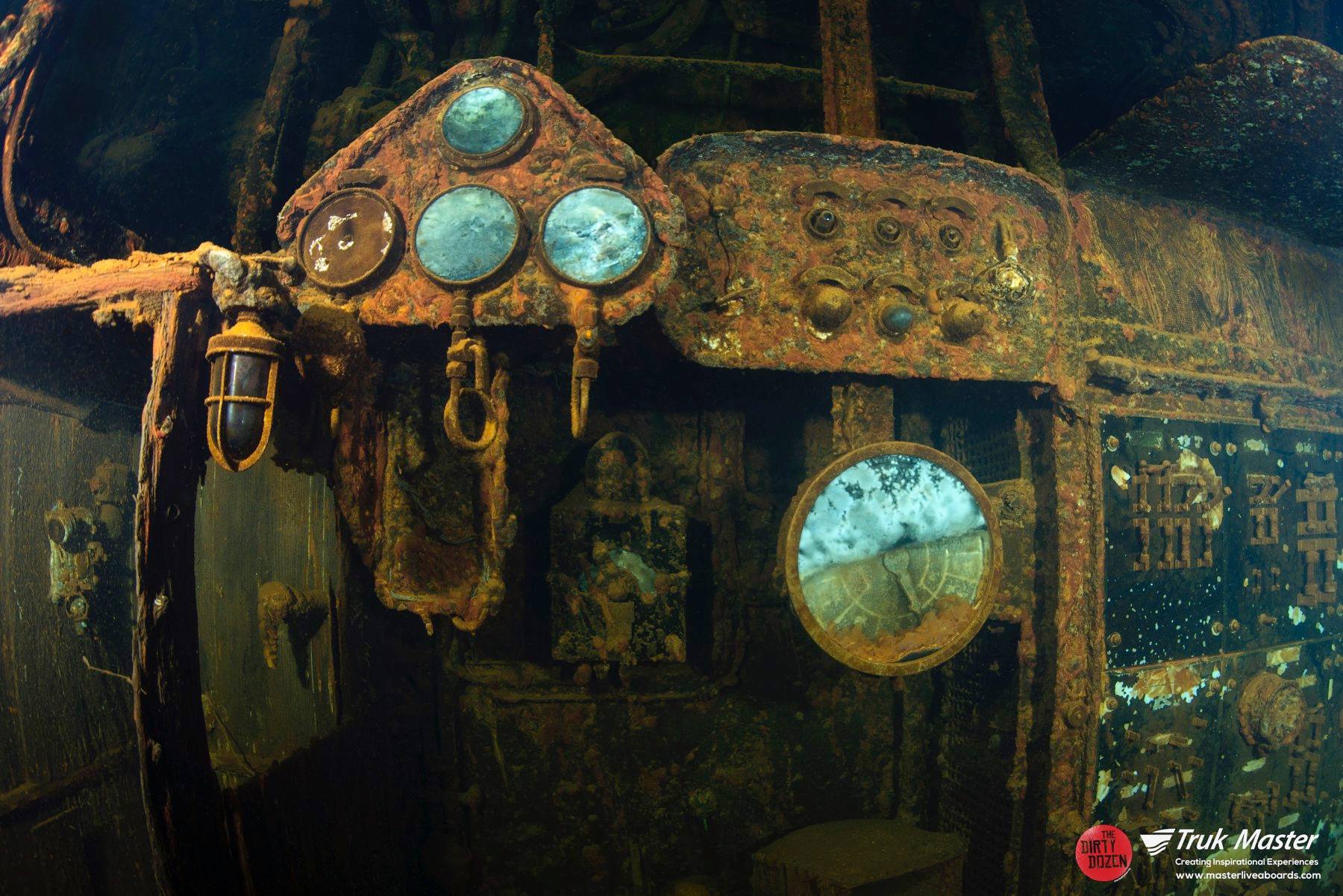
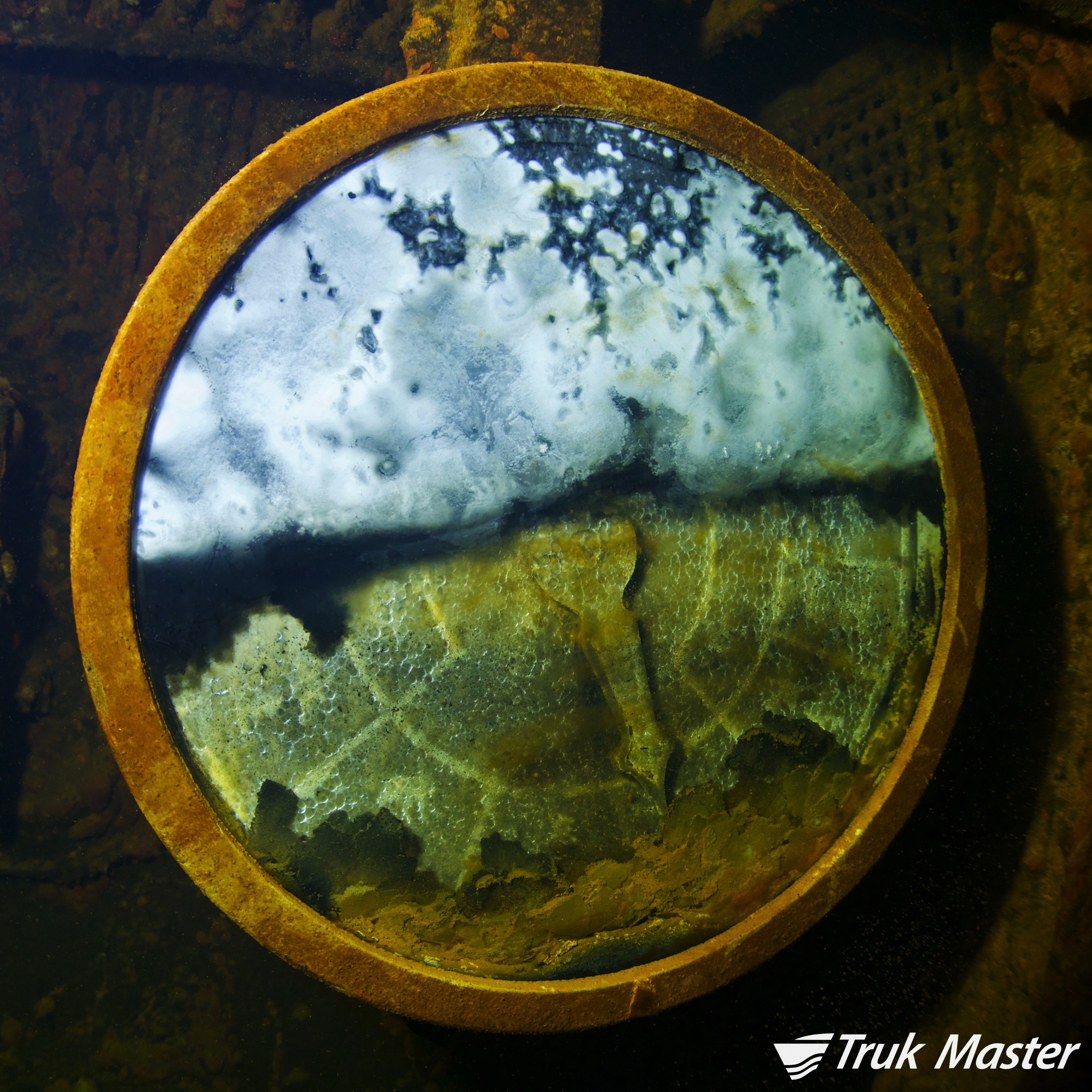
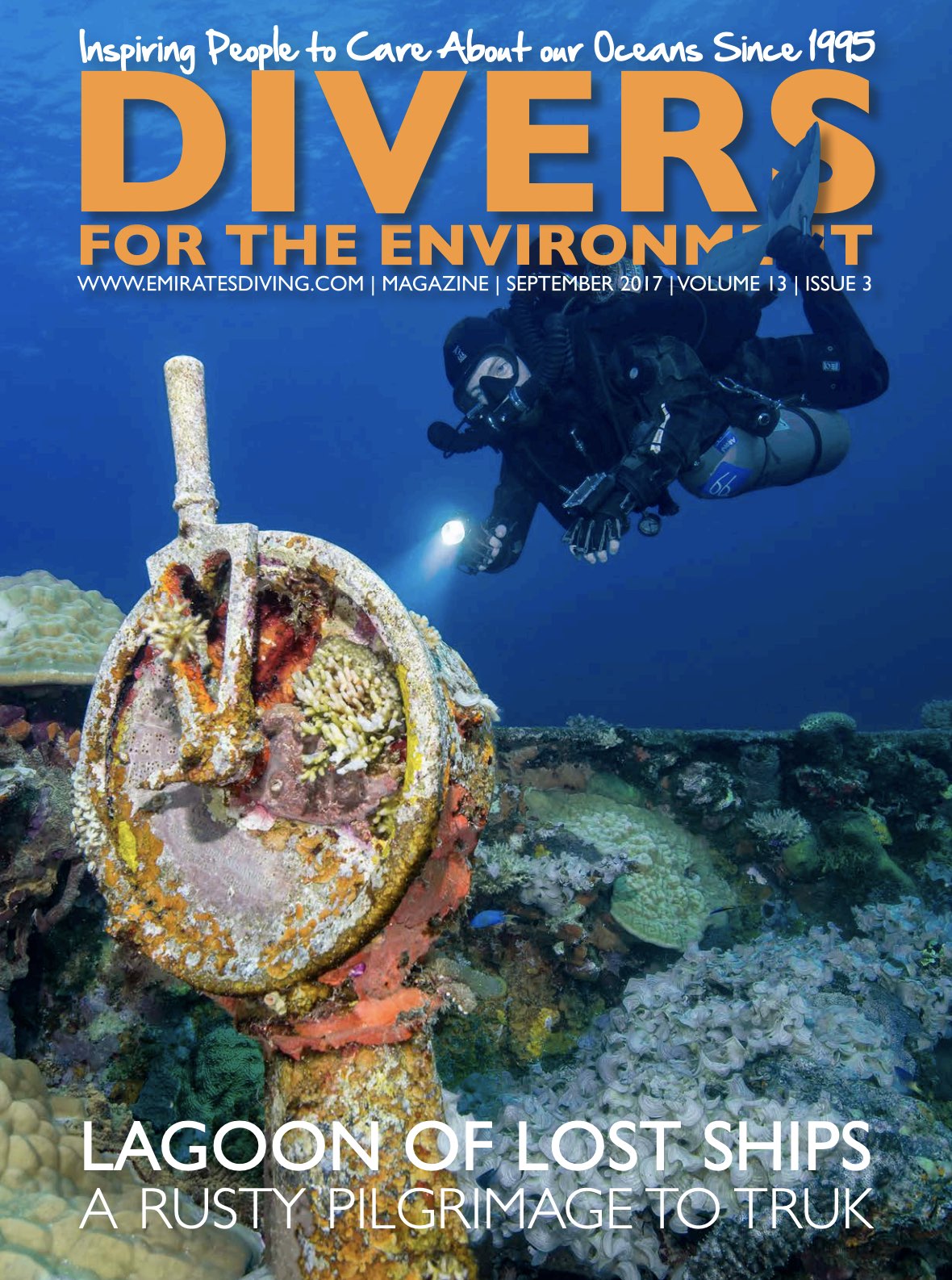

Hoki Maru
The Hoki is a unique vessel in the lagoon. Still in place in the aft hold are many trucks (most still in excellent condition), tractors, and a bulldozer, which is precariously balanced on the cross-beams of the hold. At the stern, the vessel’s twin propellers and rudder can be viewed. The fore part of the ship was largely destroyed when the aviation fuel the ship was carrying exploded, blowing the top of the second forward hold into the air. It then came crashing down onto the bridge area, crushing much of the main superstructure.
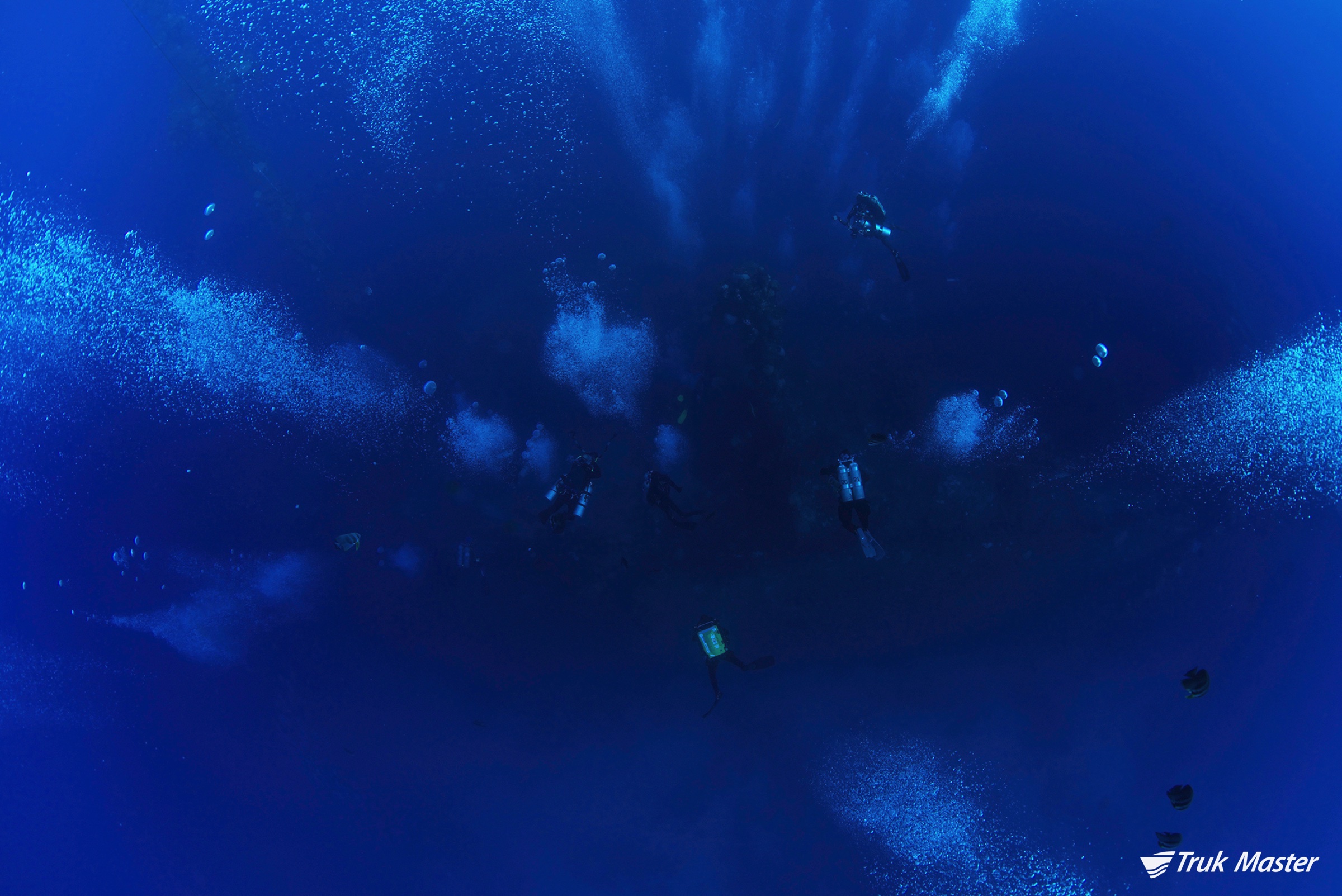
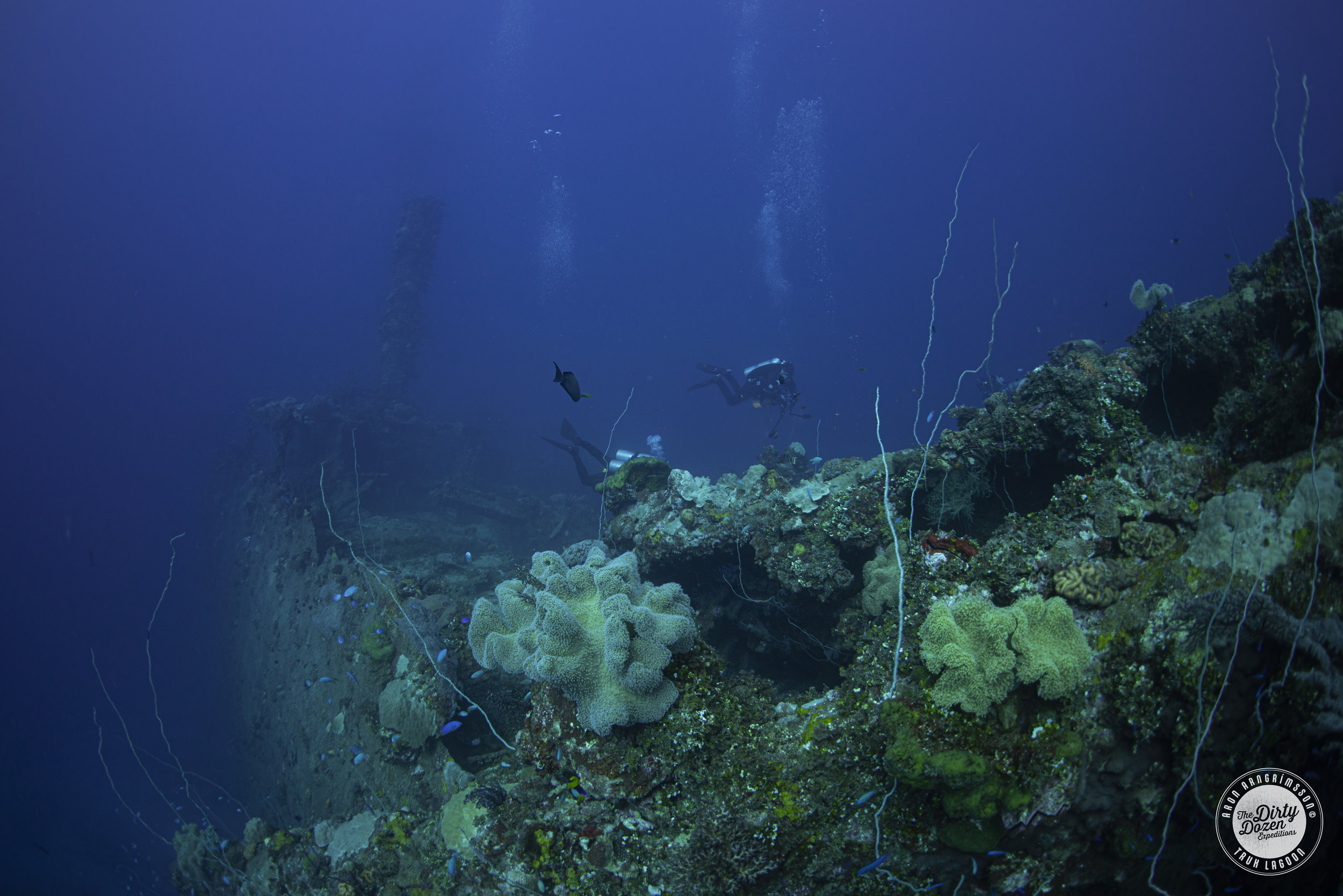
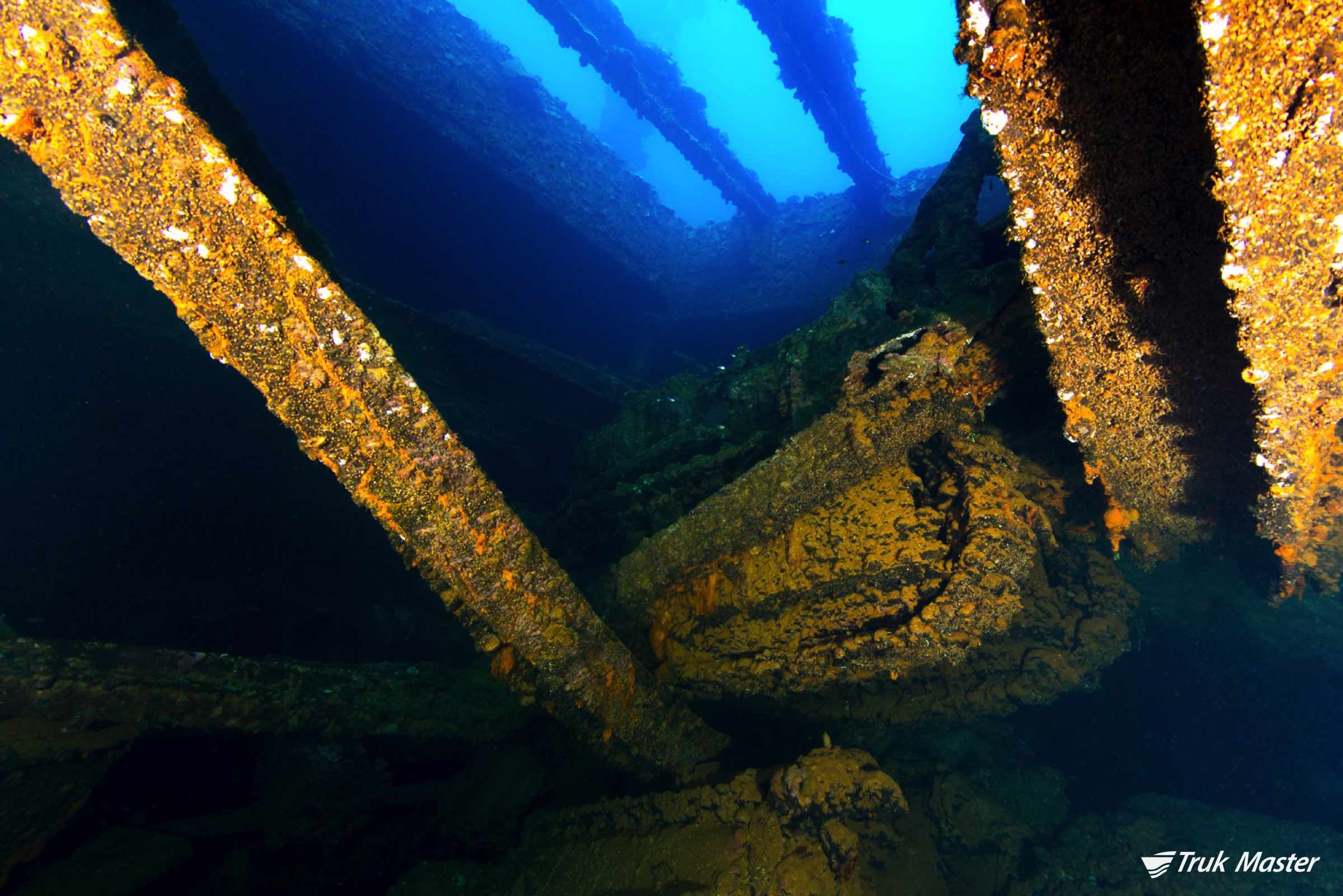
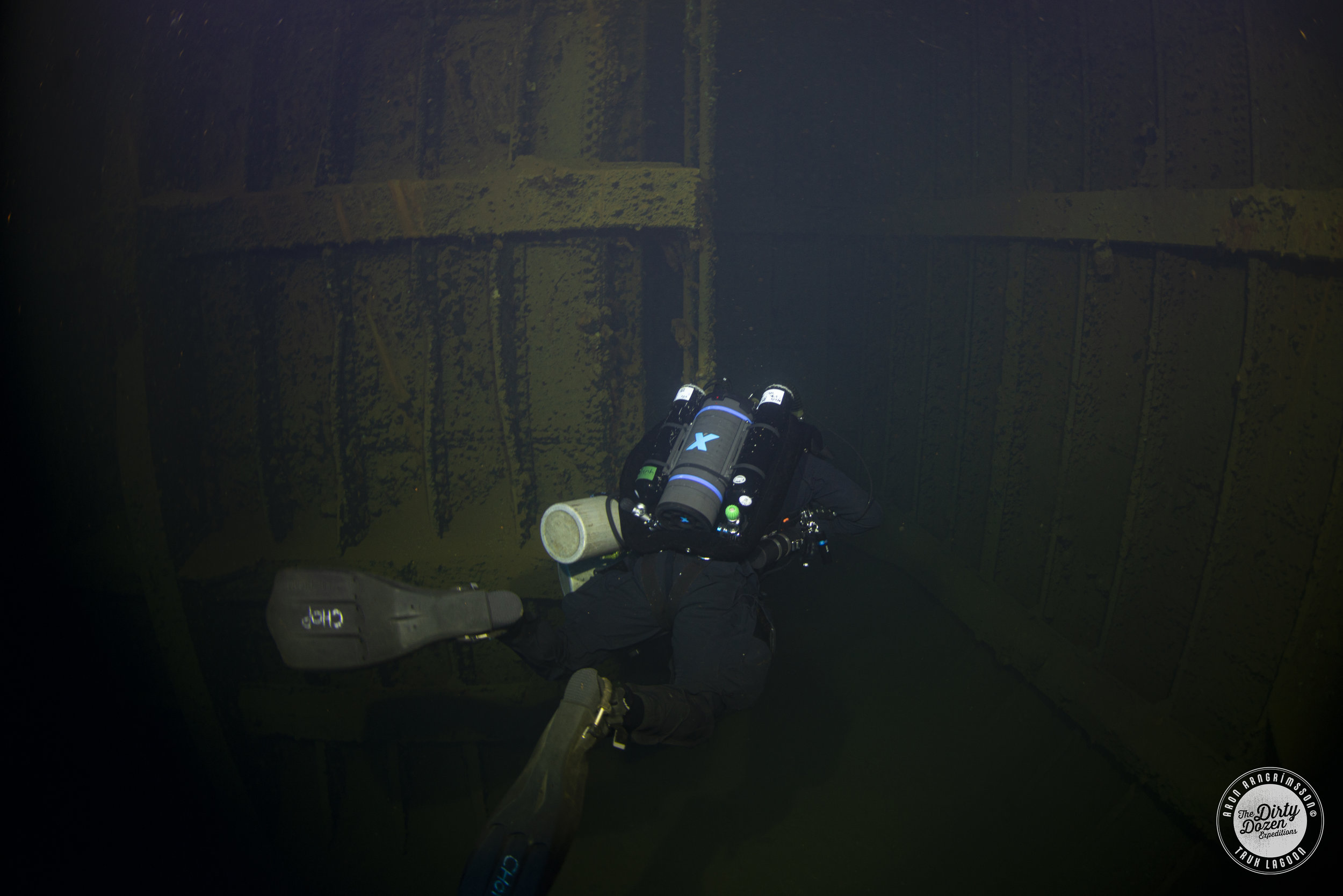
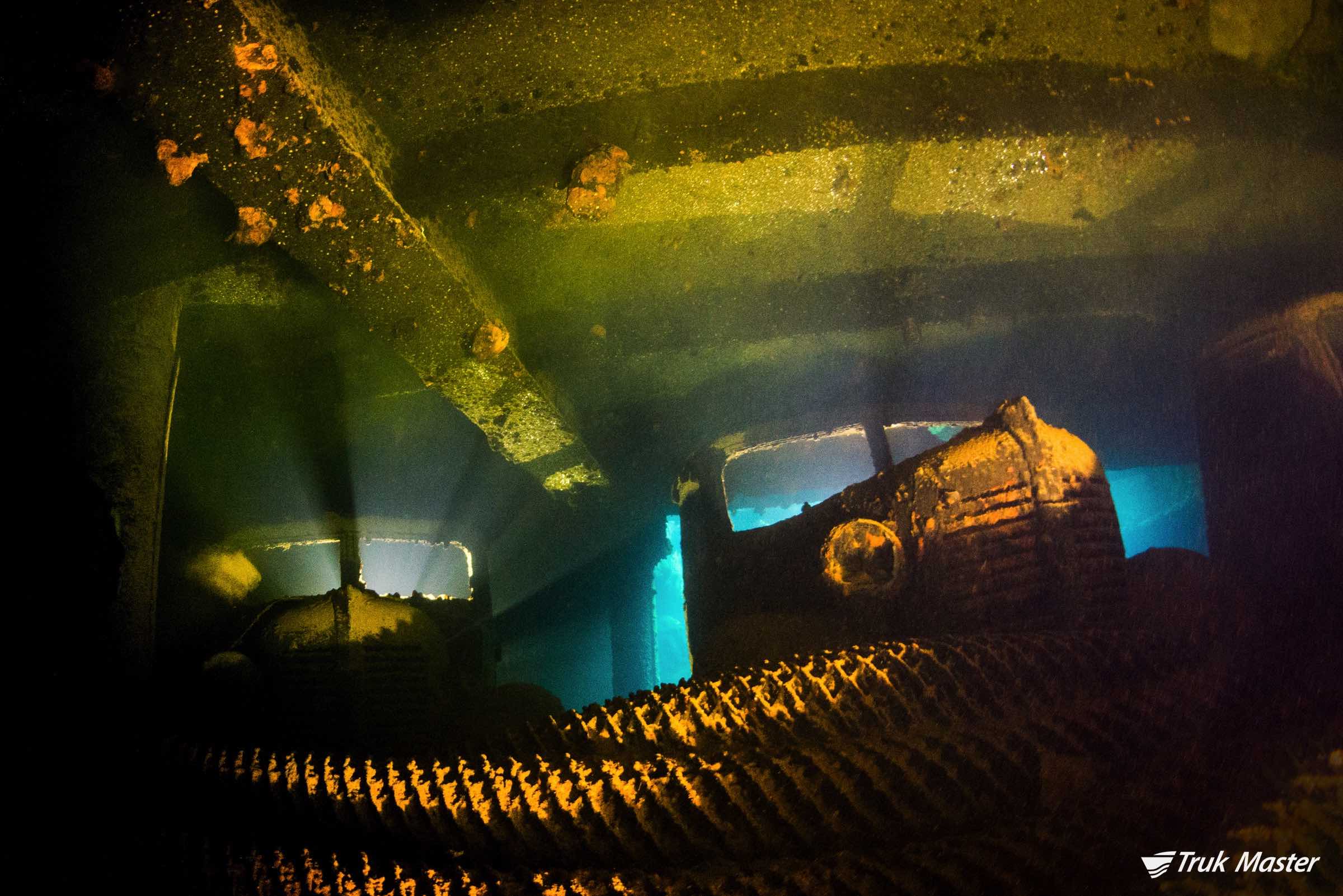

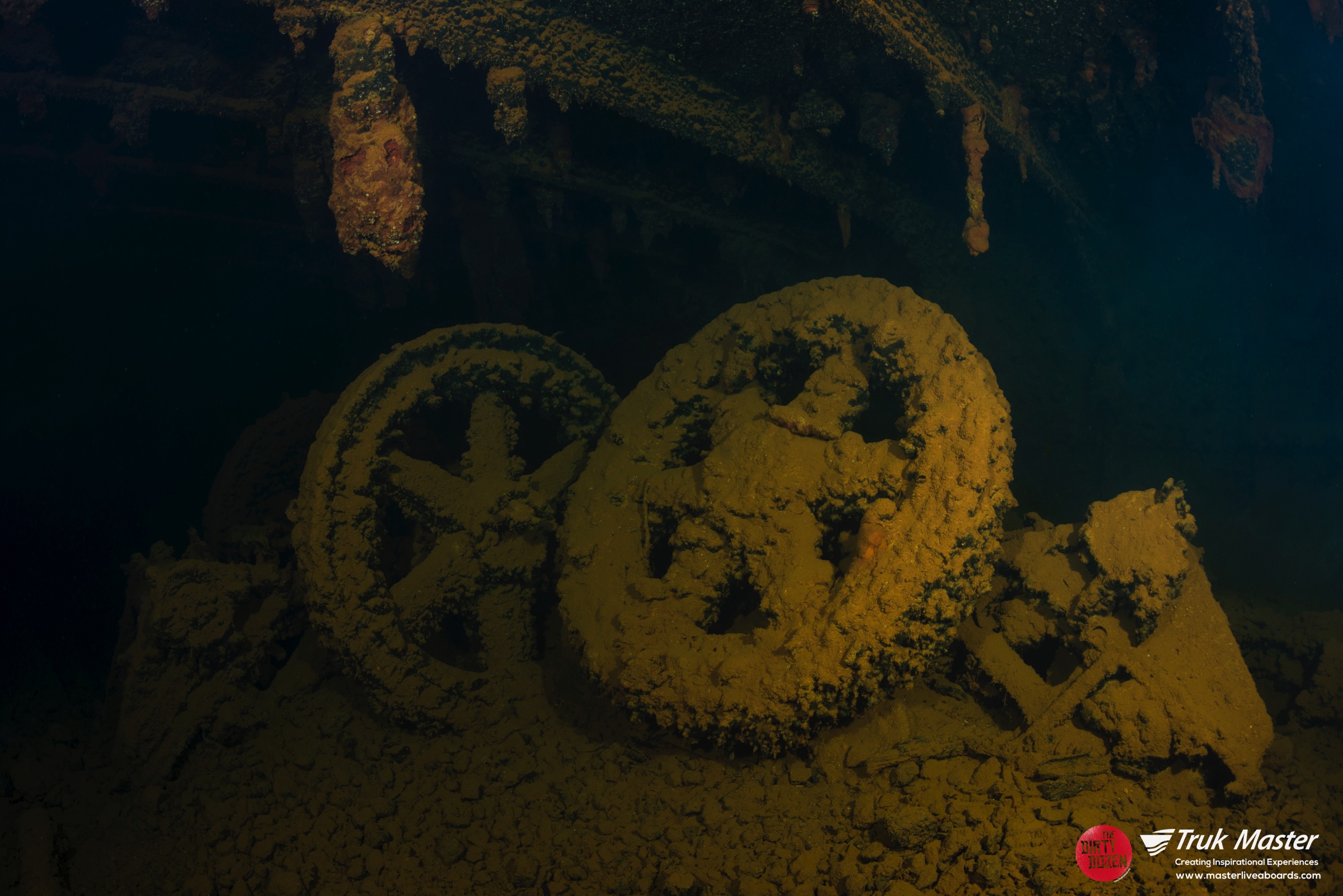
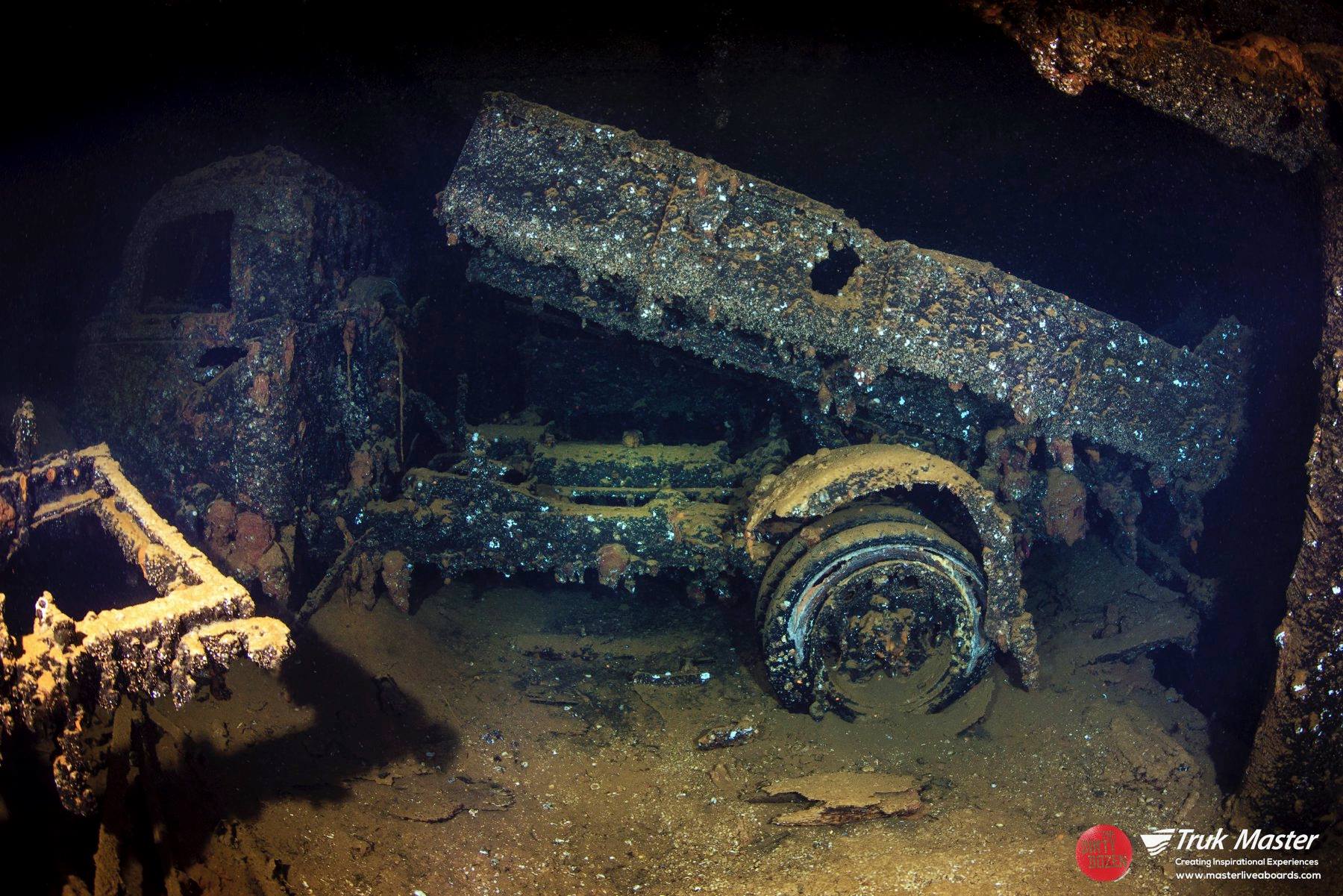
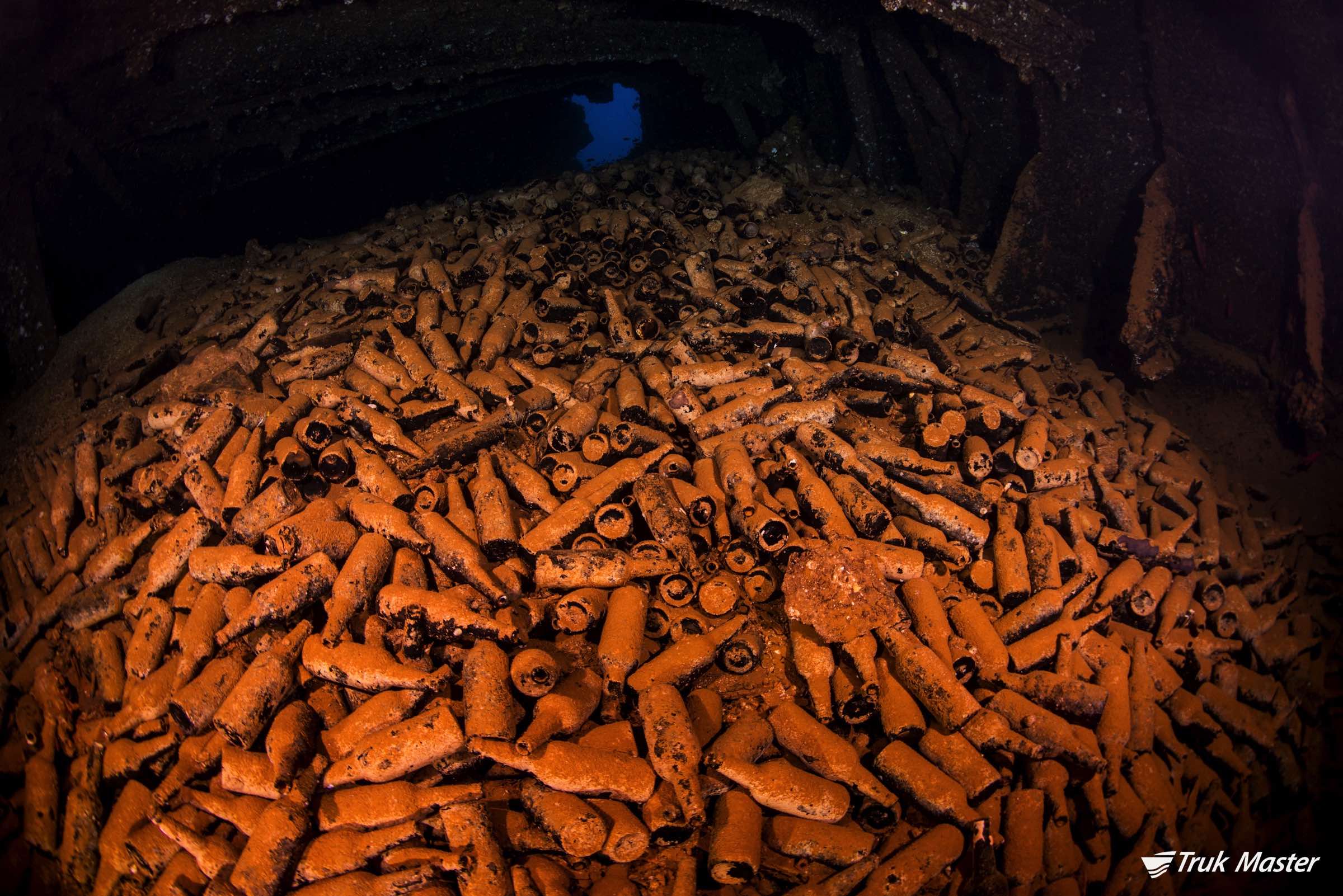
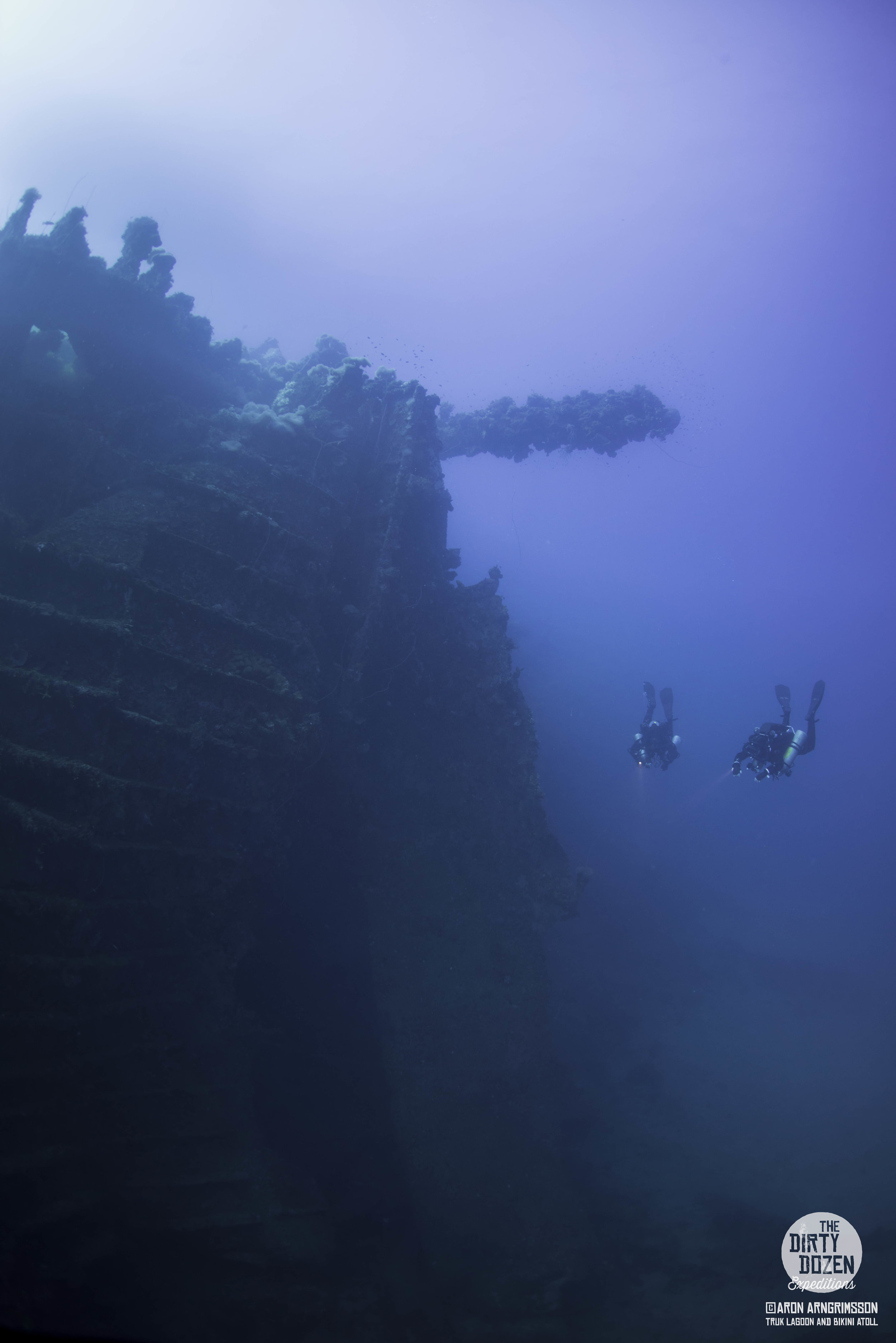
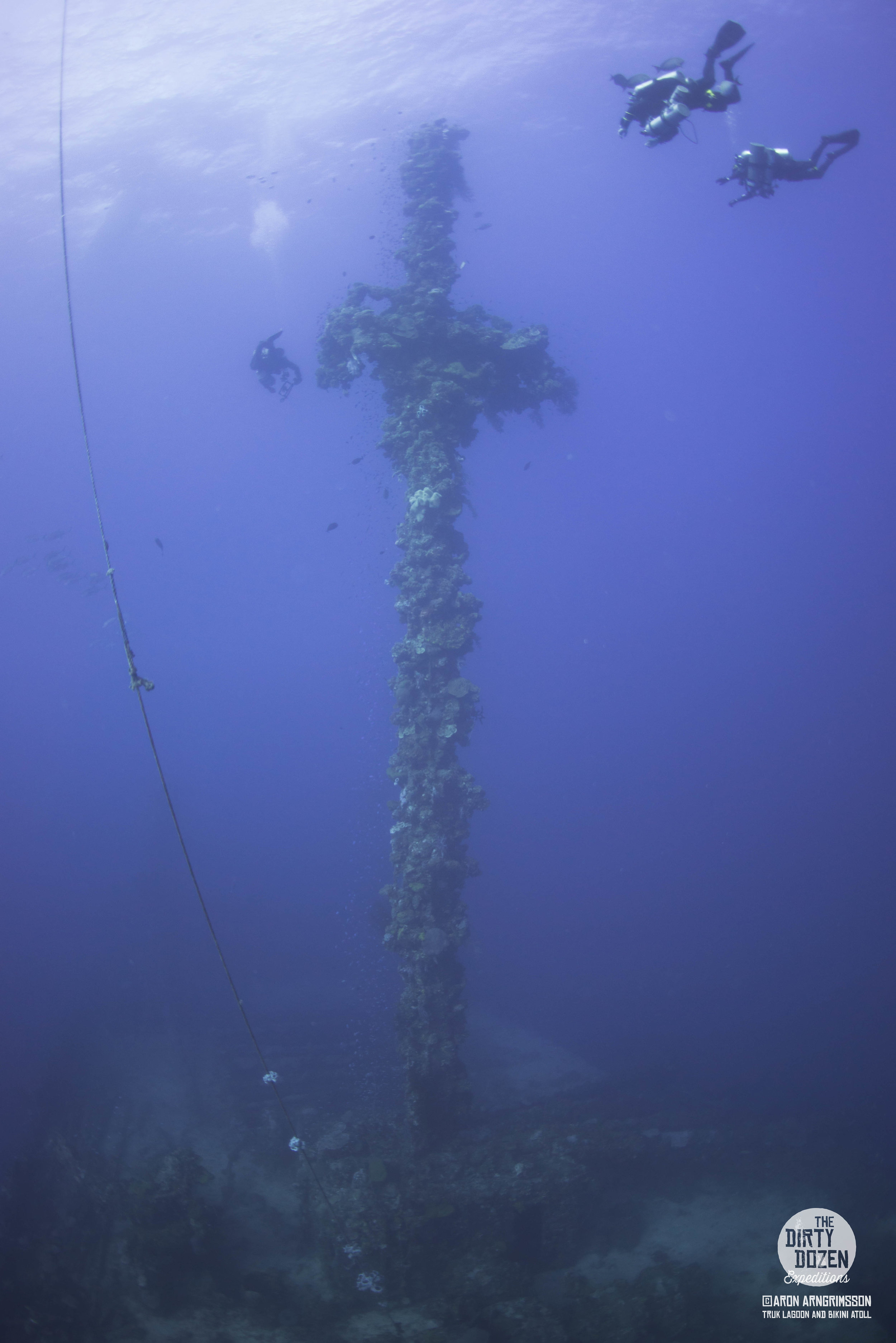
Heian Maru
The Heian Maru was a prestigious passenger-cargo liner that the IJN converted into a submarine support ship and tender. The Heian is the largest known wreck still in the lagoon and she offers plenty of interesting places to explore and fantastic artifacts to view. The forward cargo holds contain torpedoes, shells and associated handling equipment. Elsewhere there are periscopes, china, telephones, radio equipment, medical kits and beer bottles. At the stern are two large propellers and a single rudder. On the bow, the Heian’s name is still clearly visible in both English and Kanji characters.
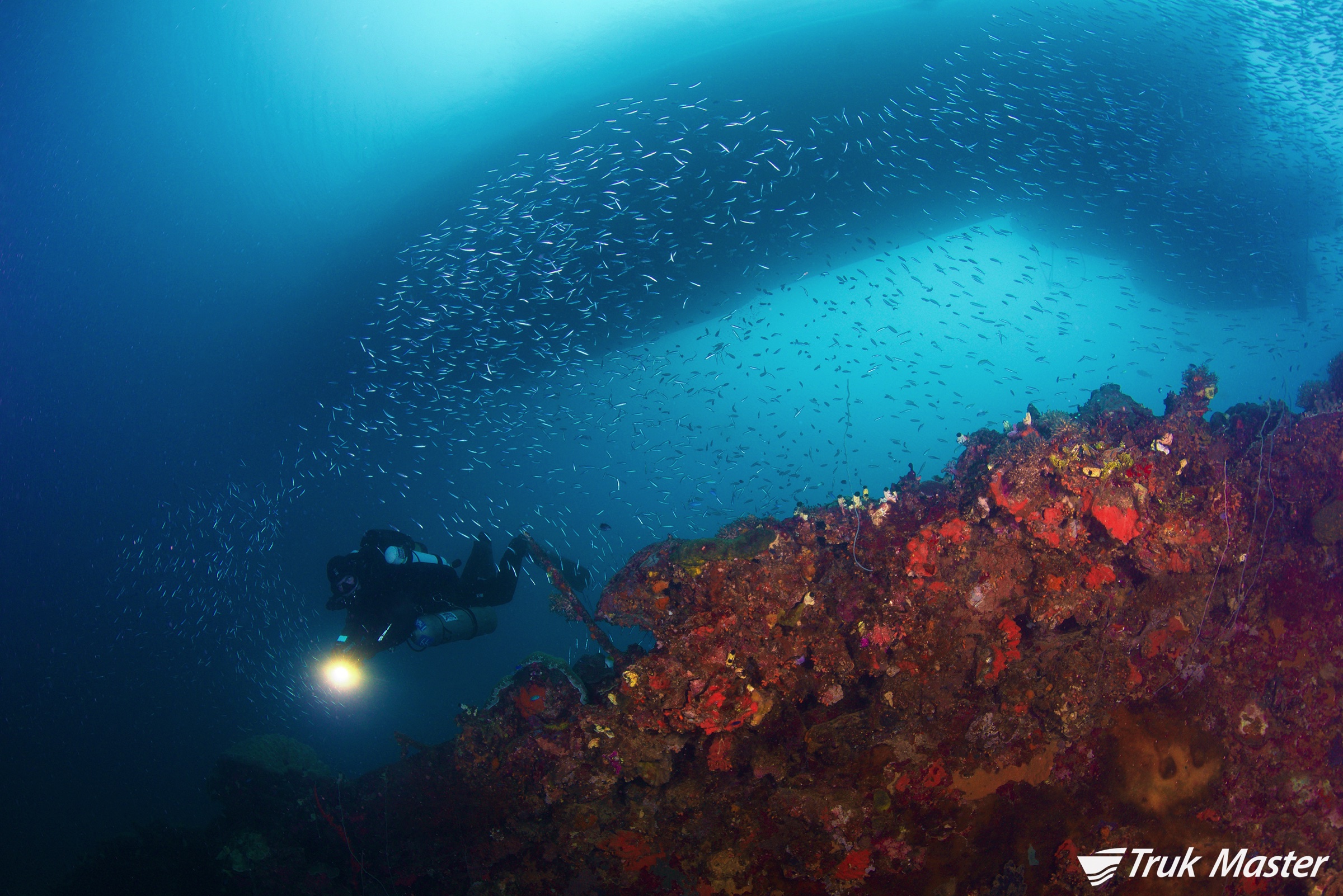
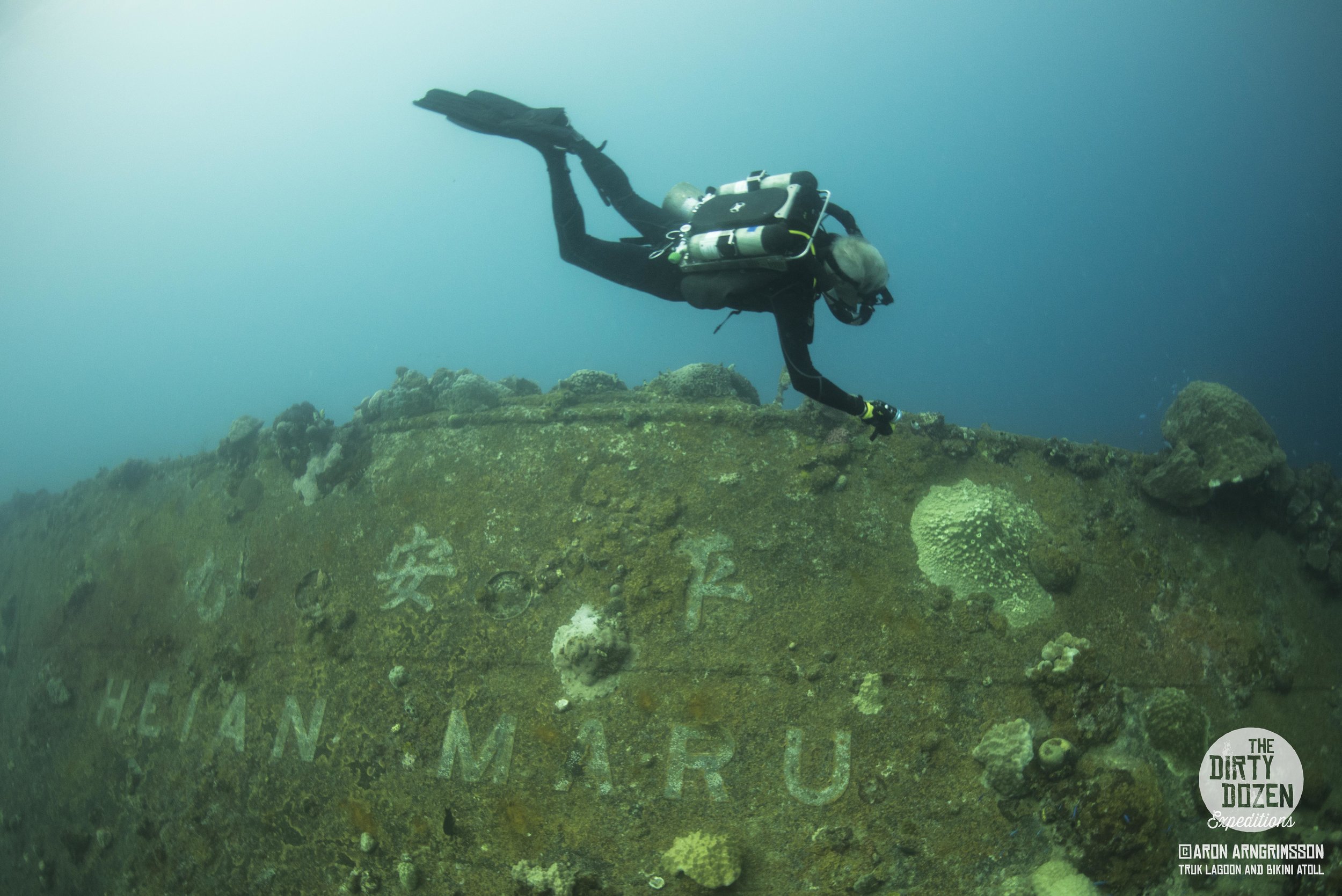
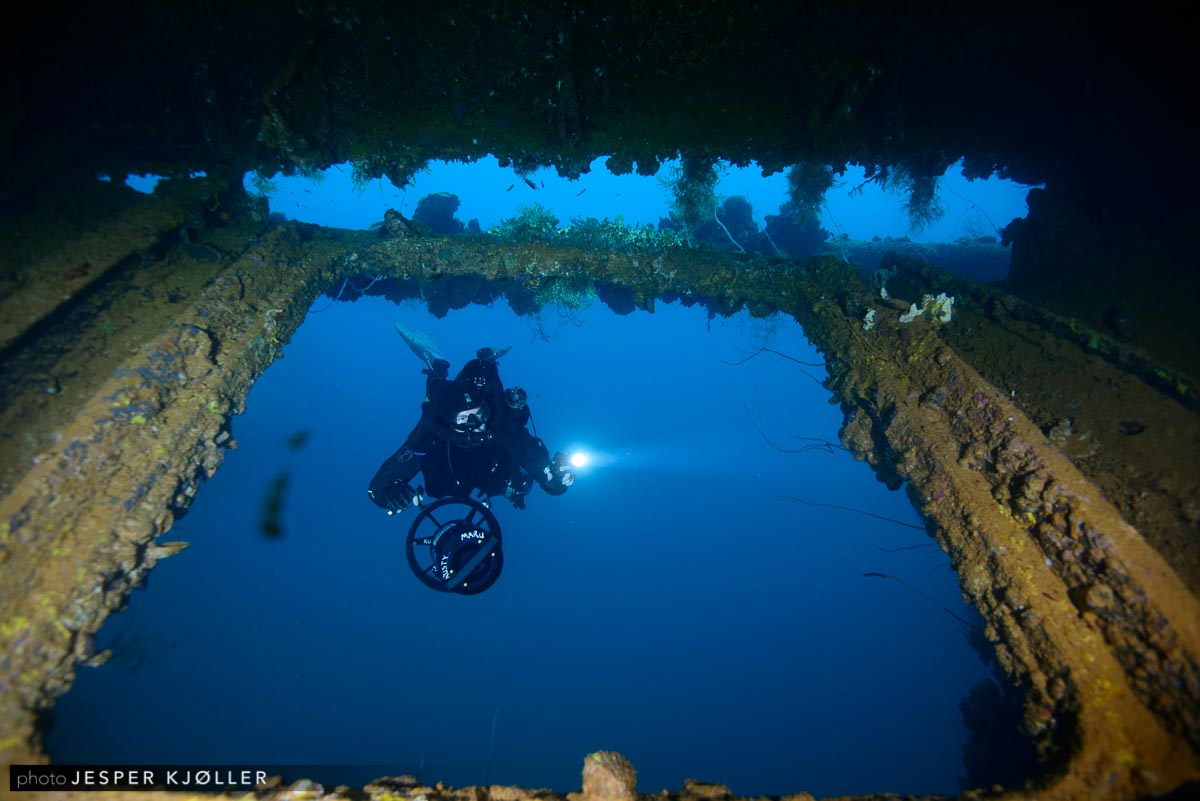
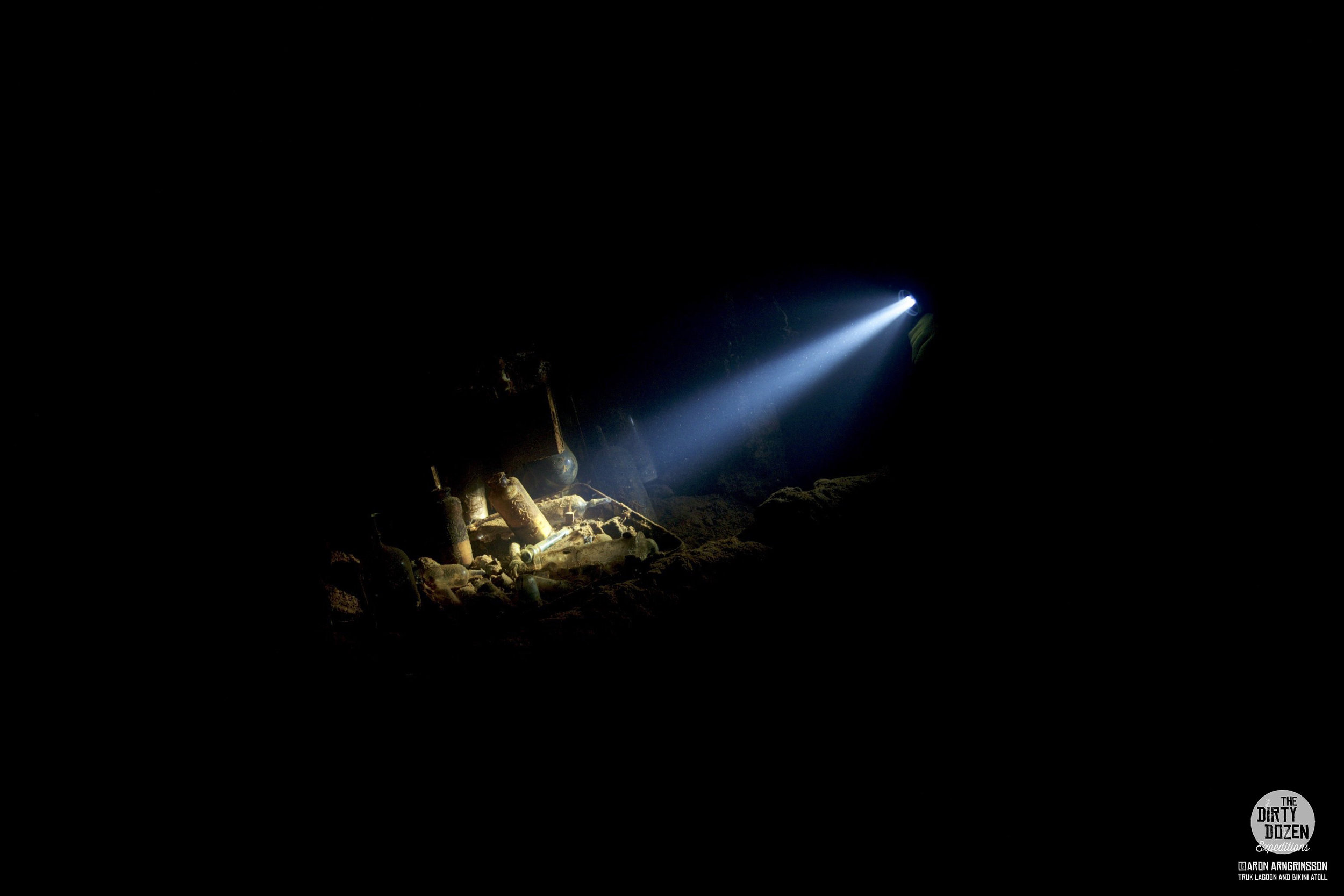
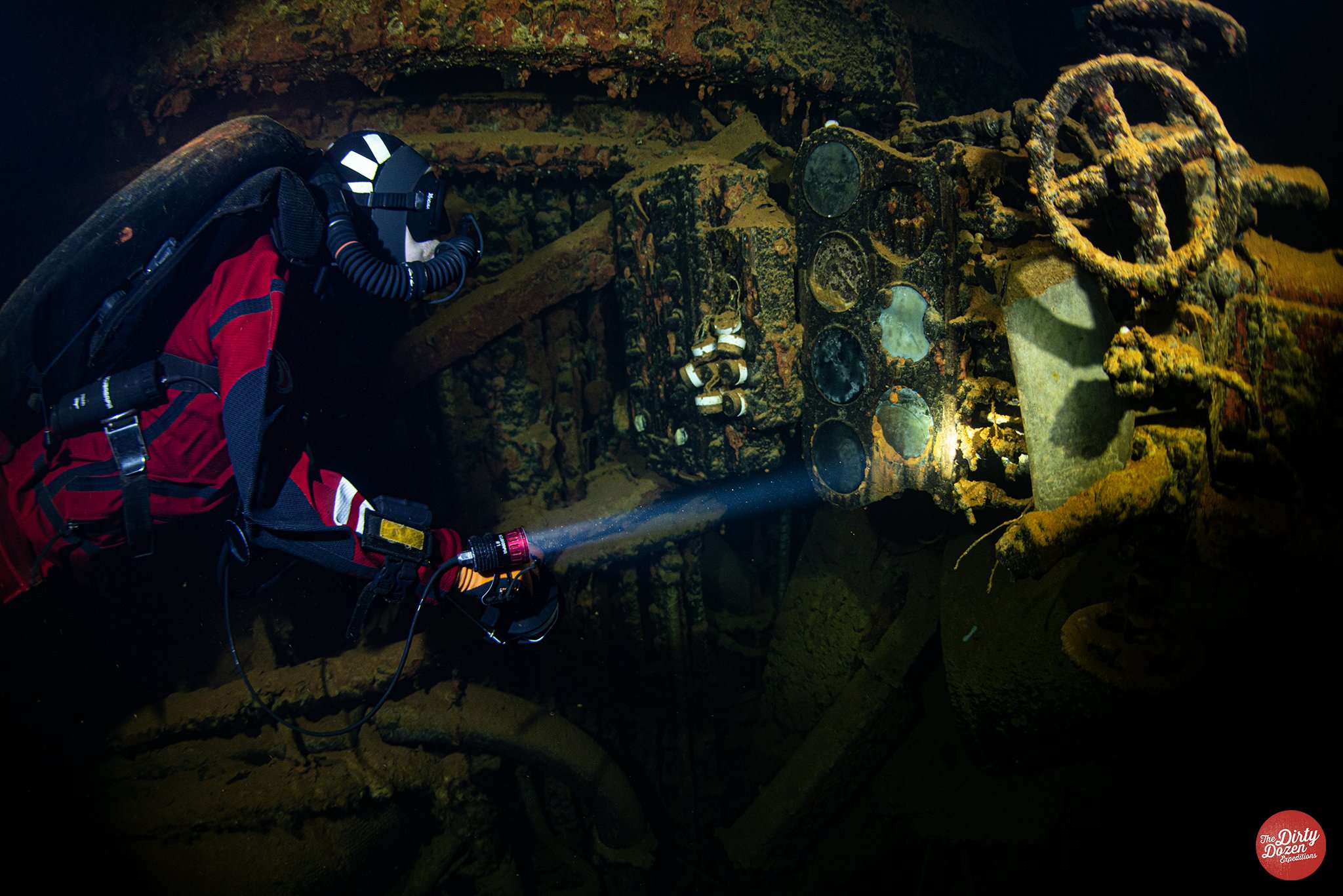
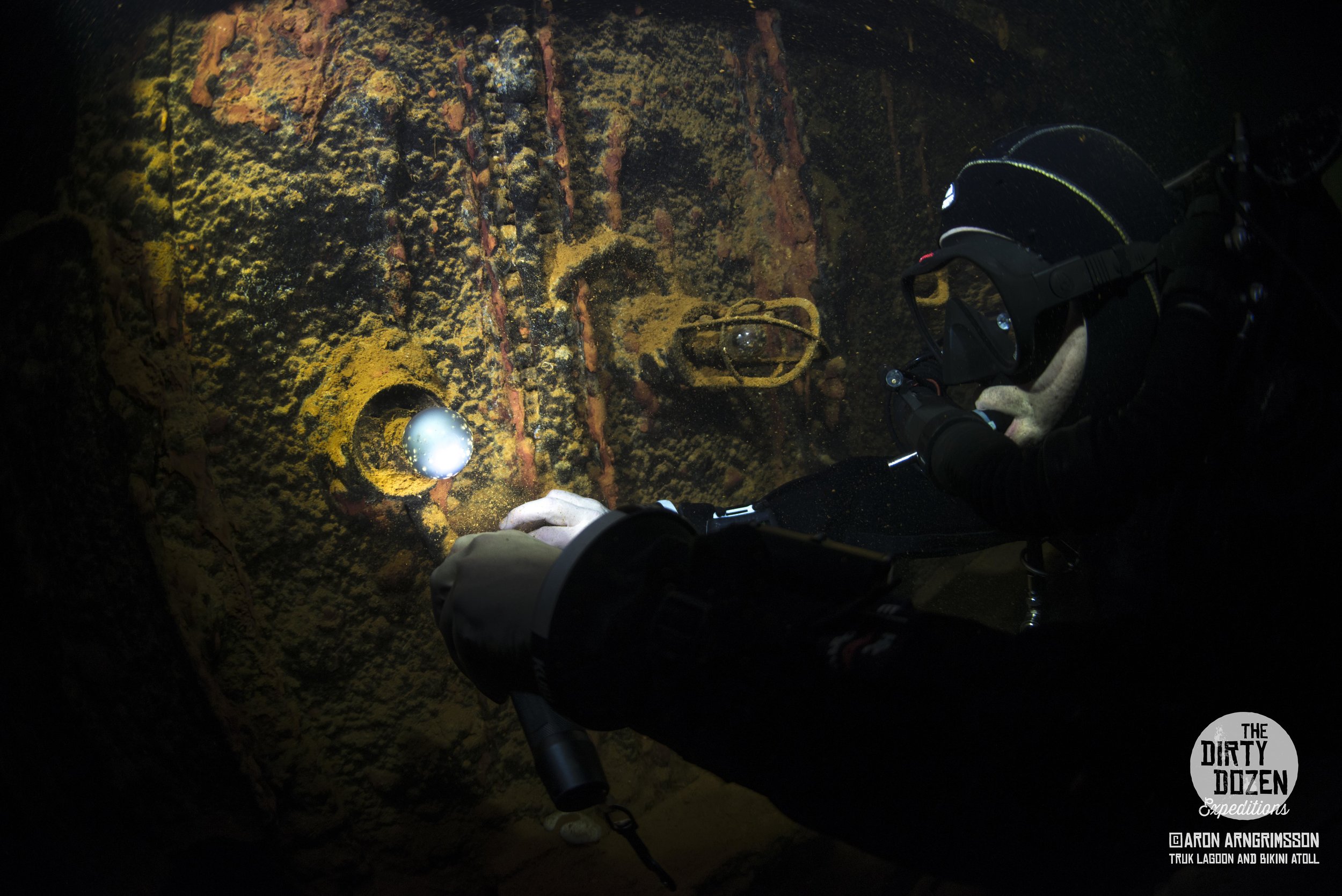
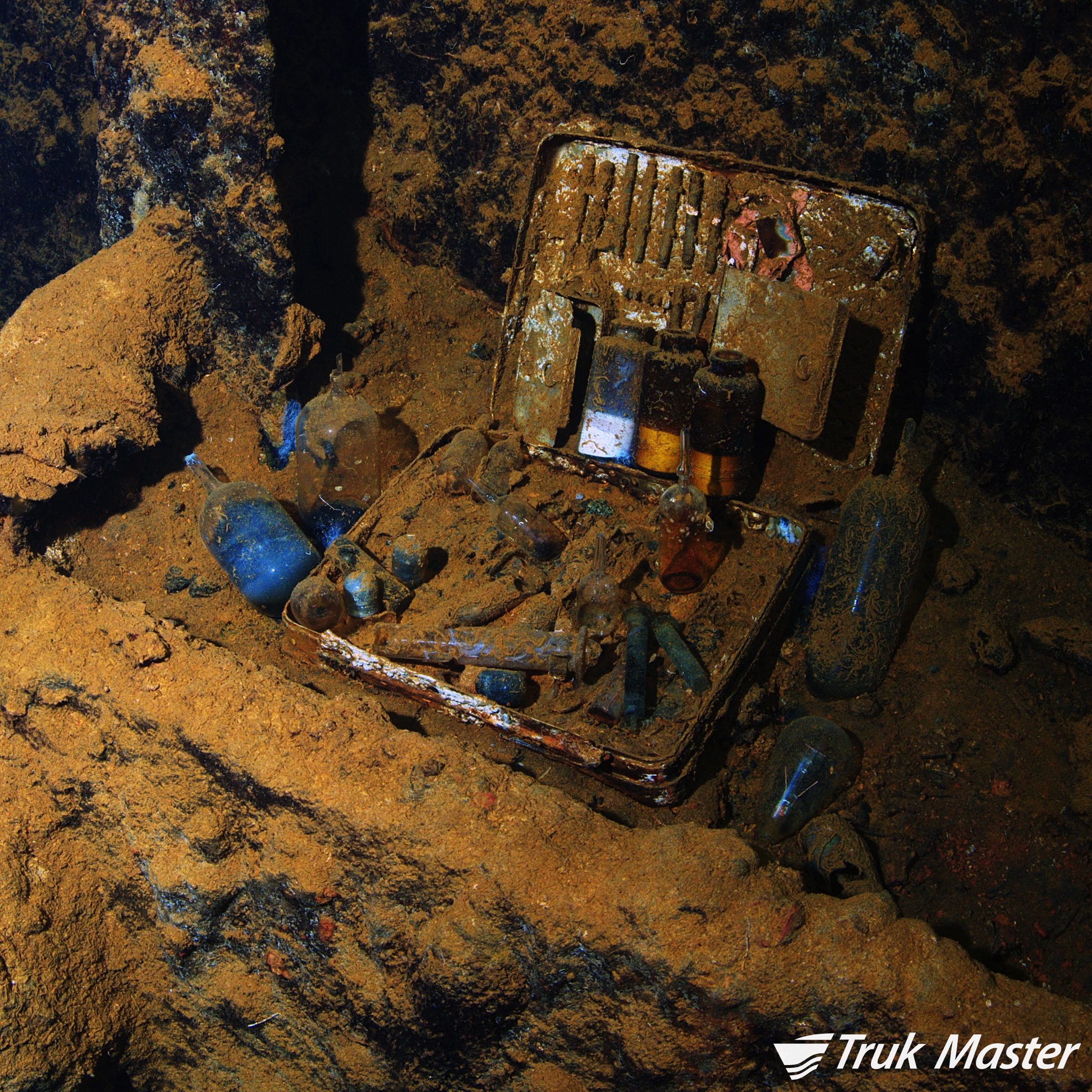
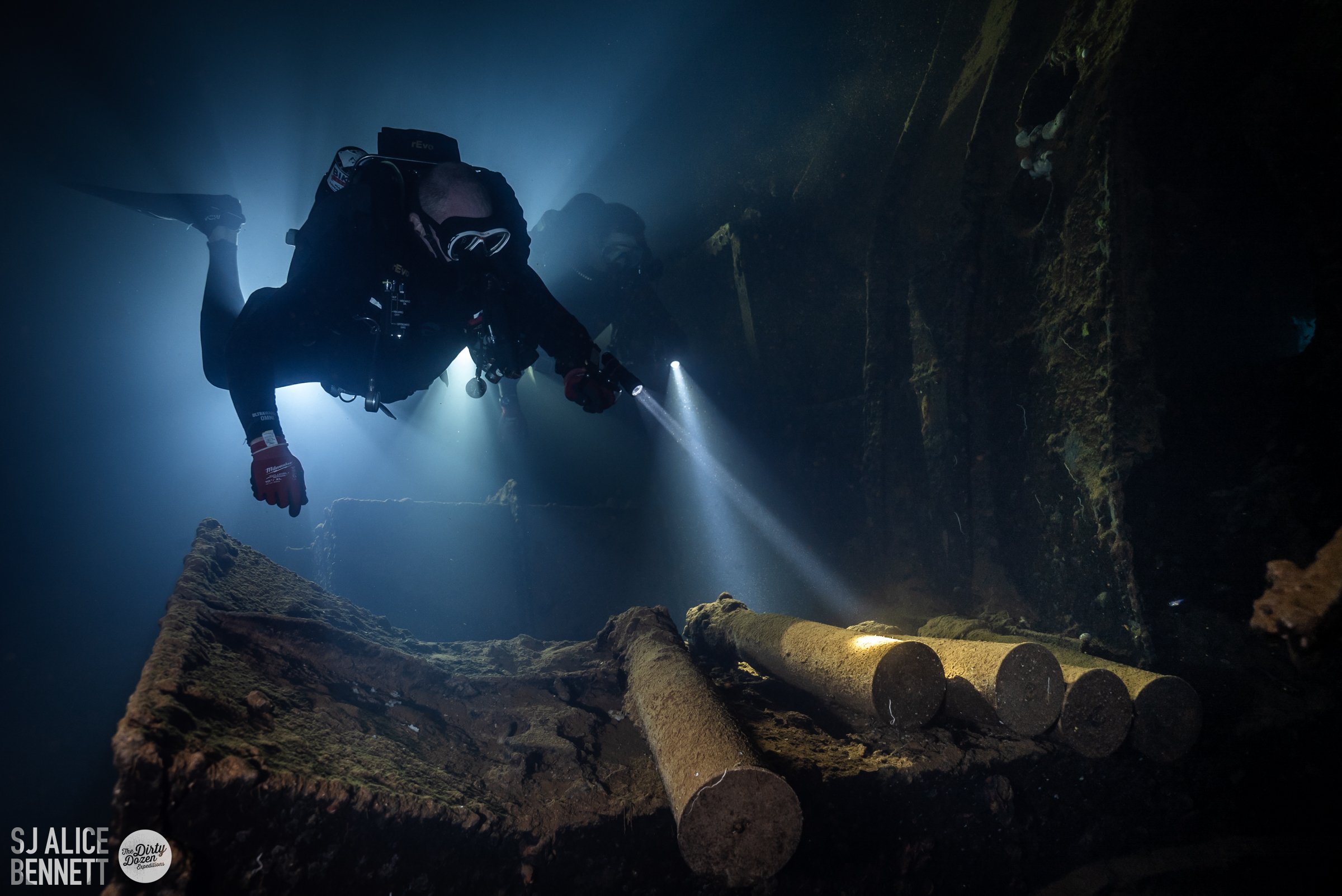
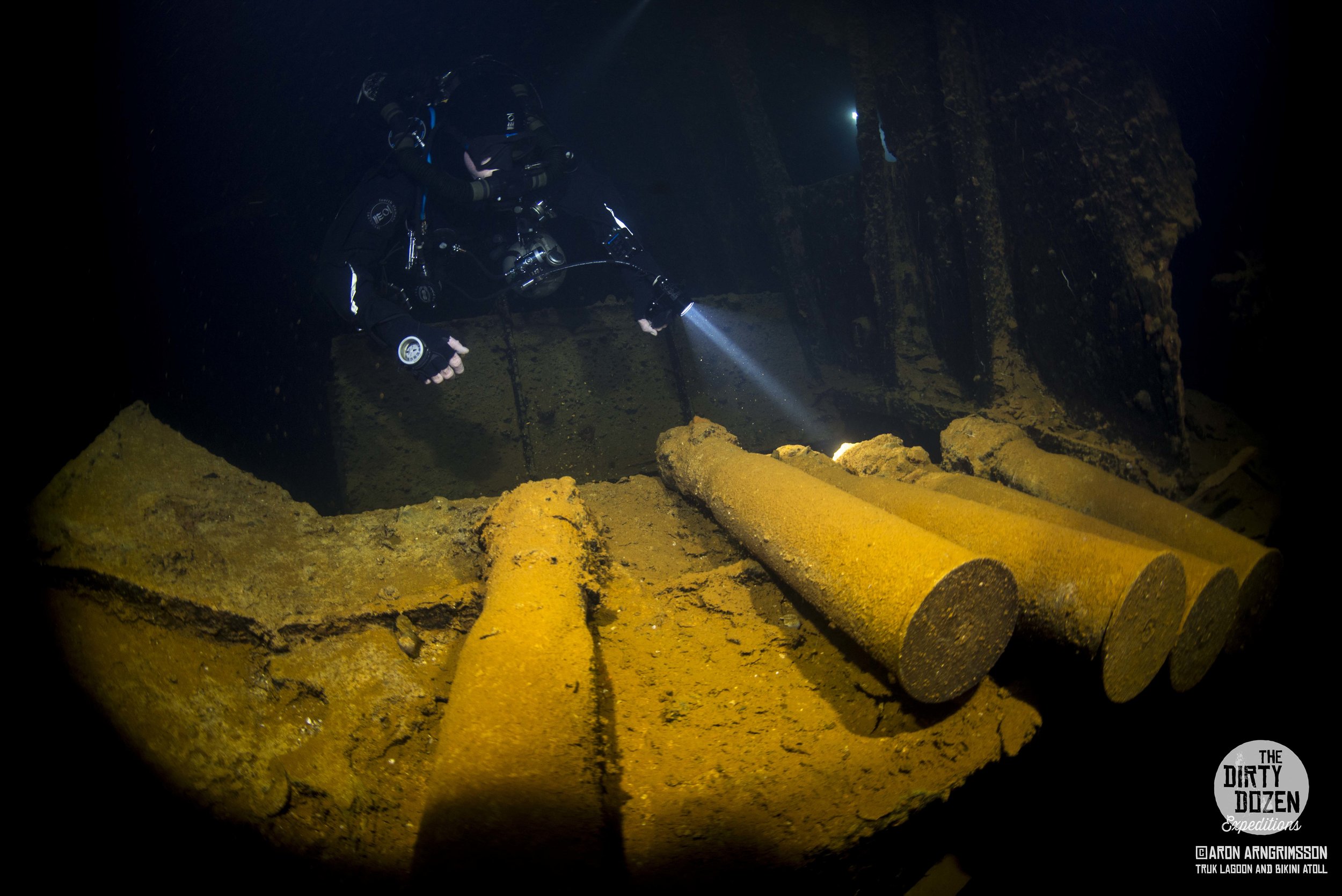
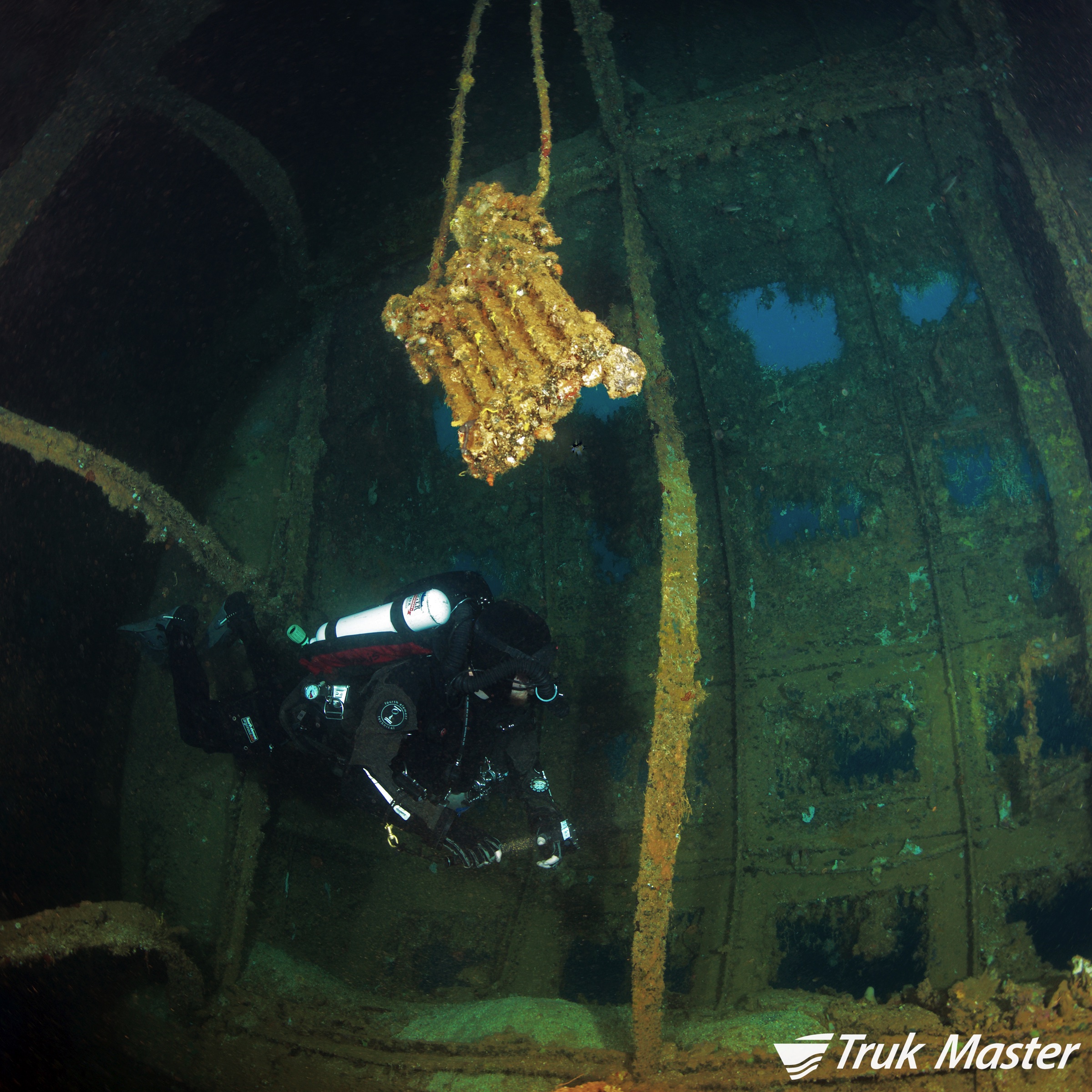
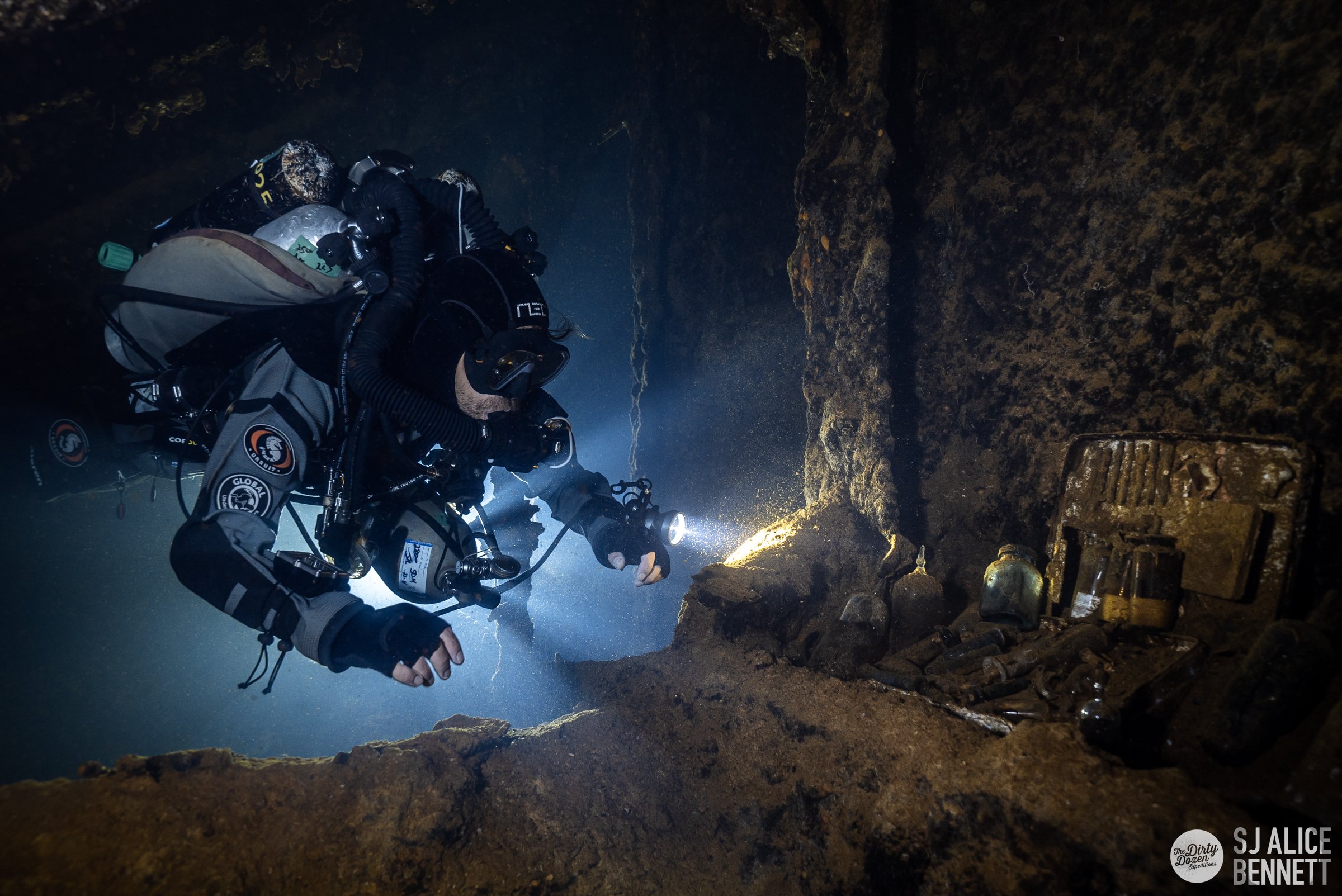
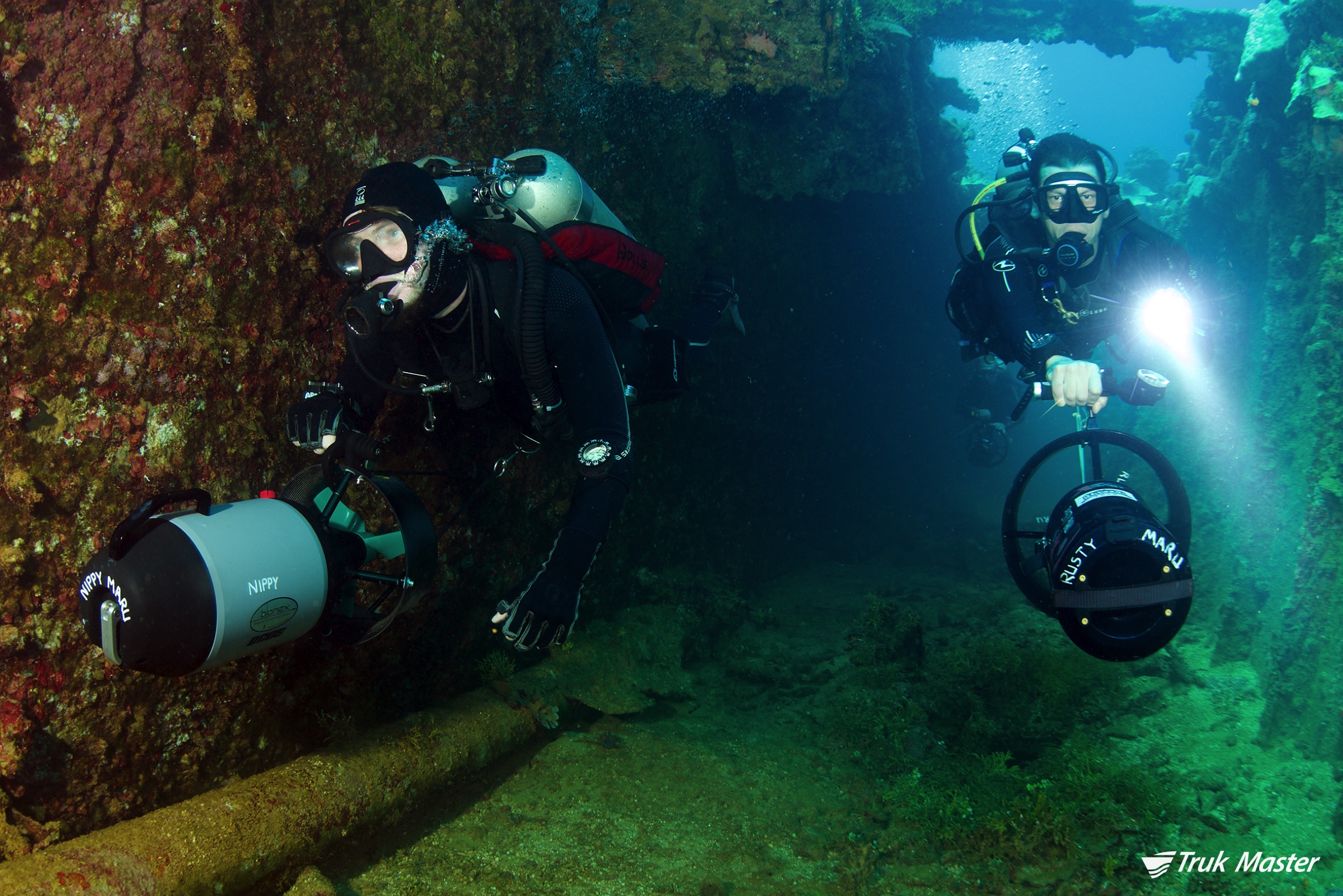

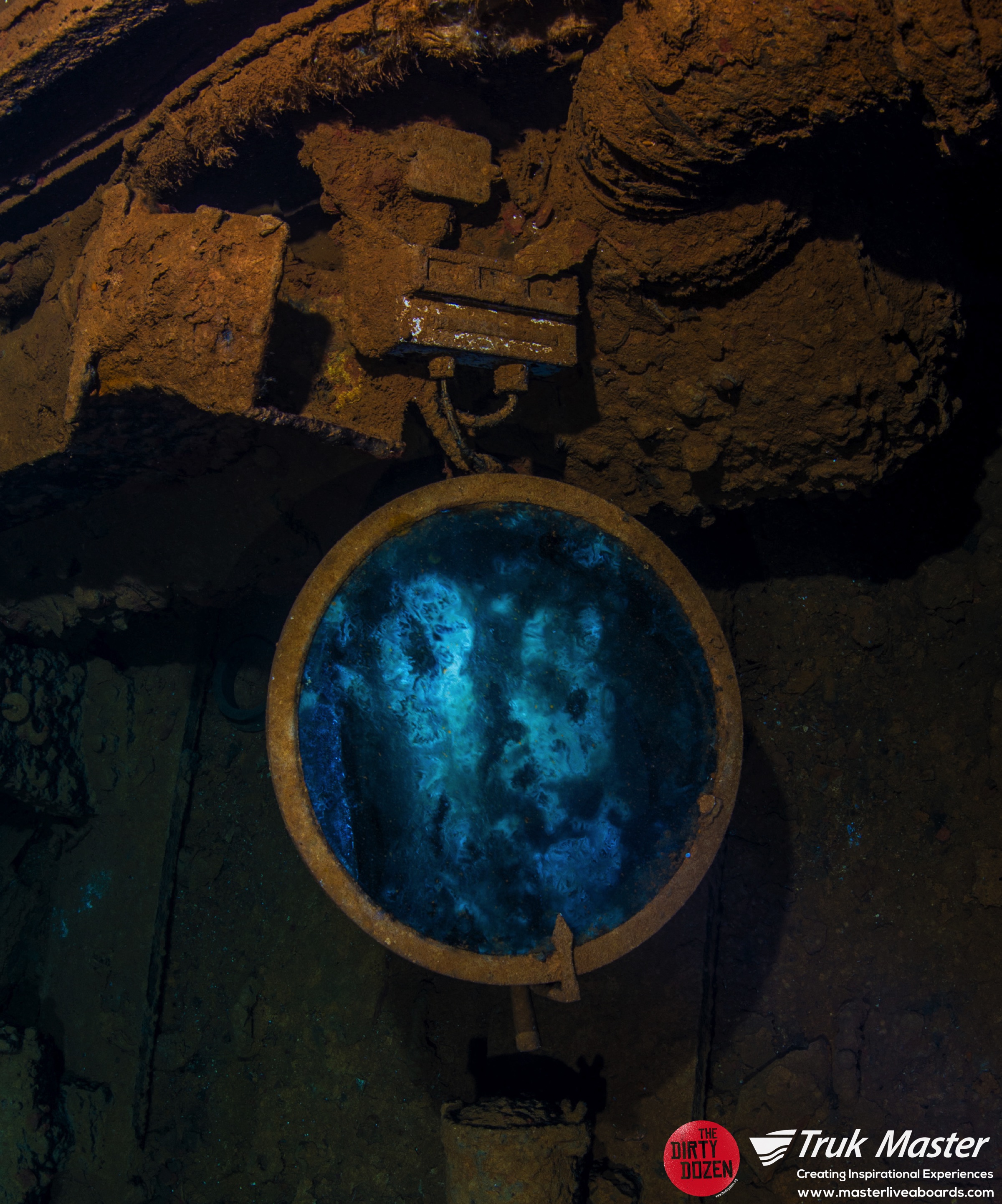
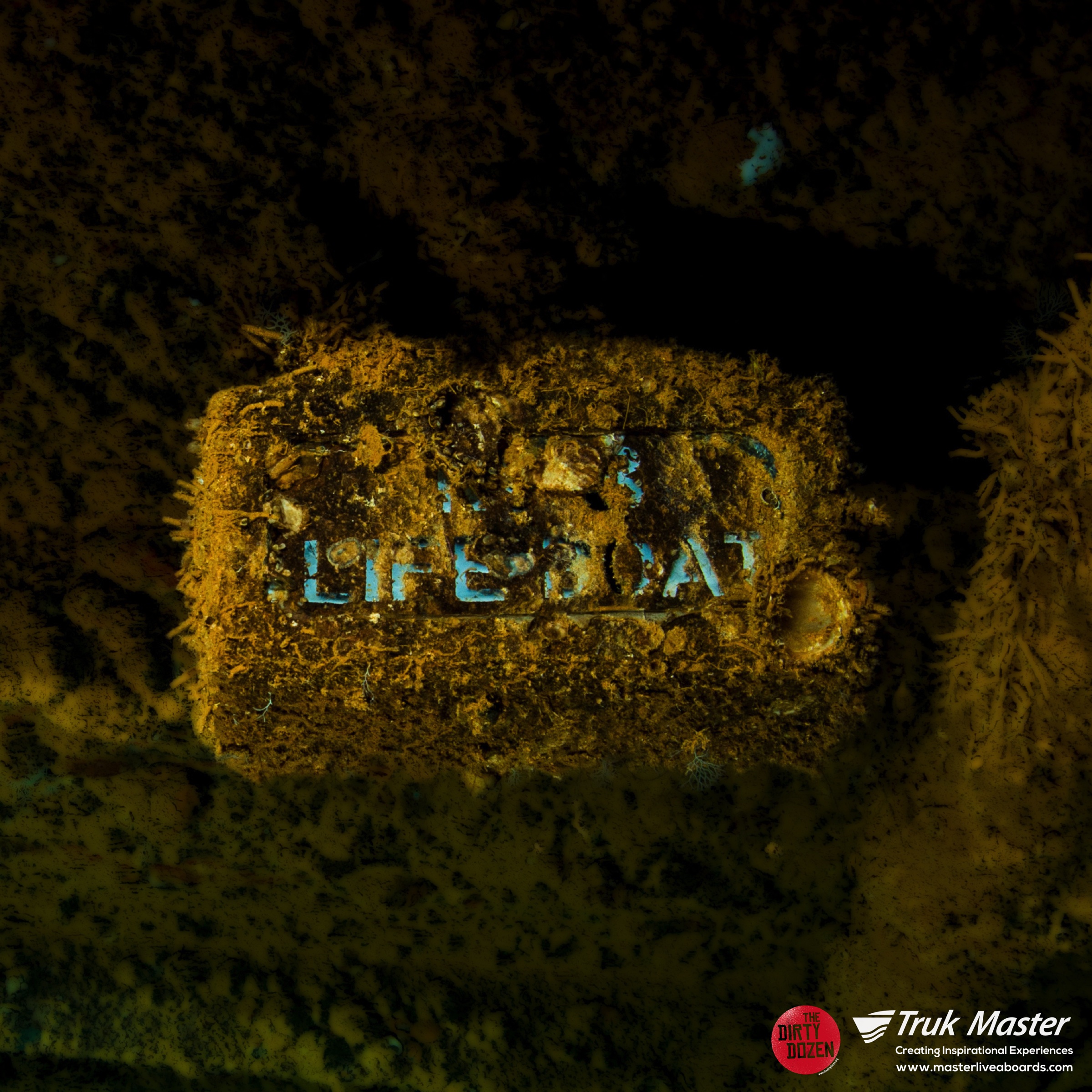
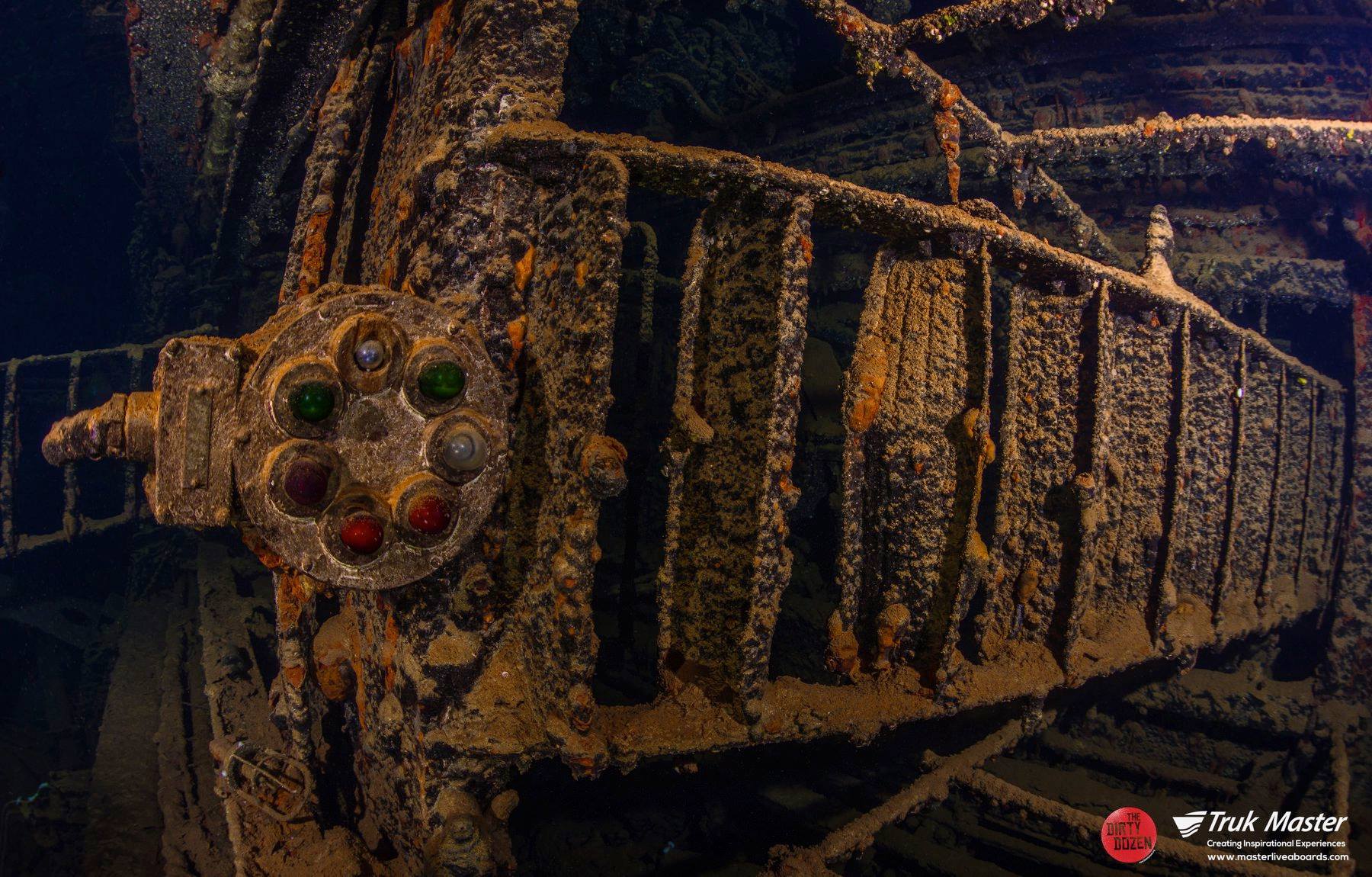
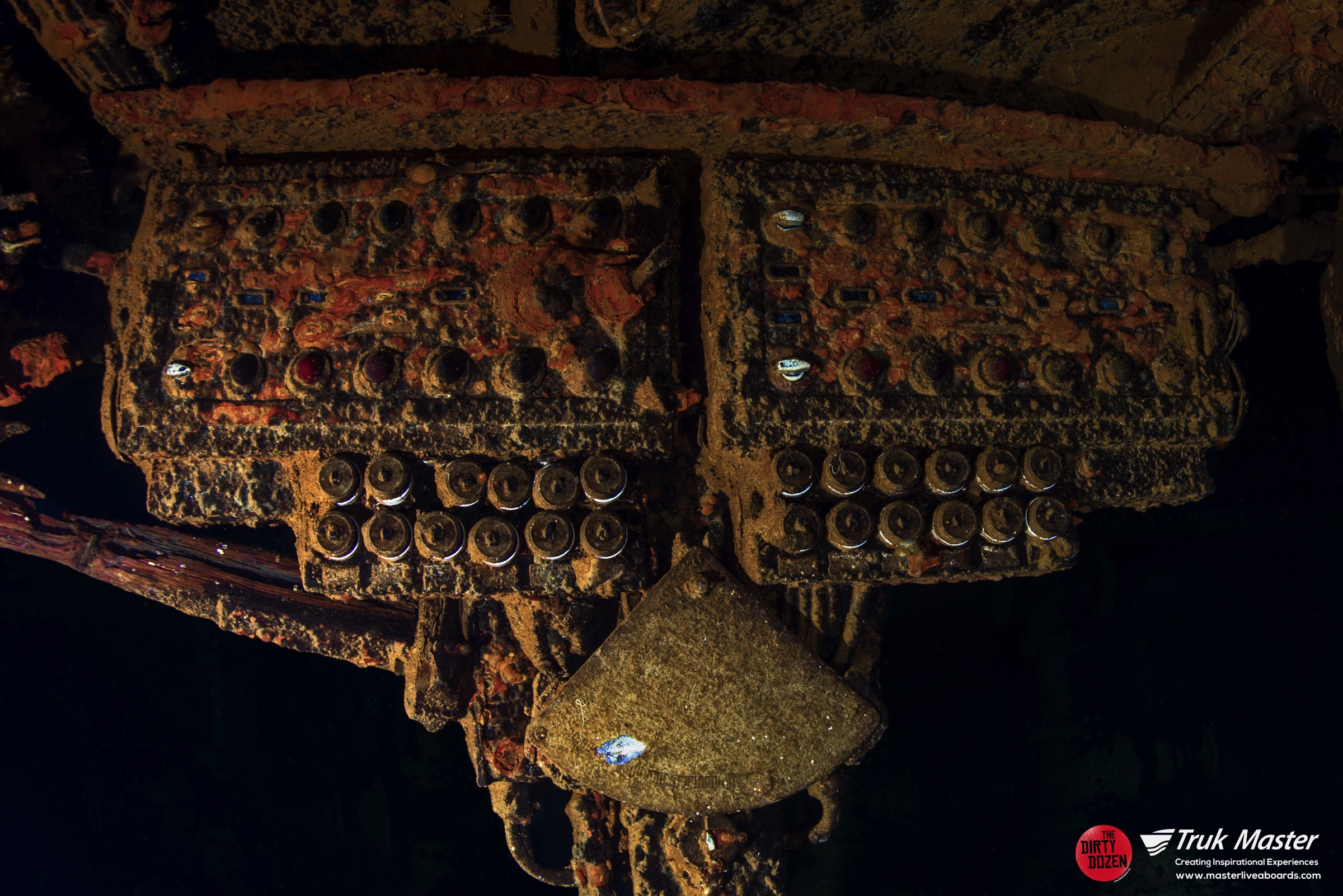

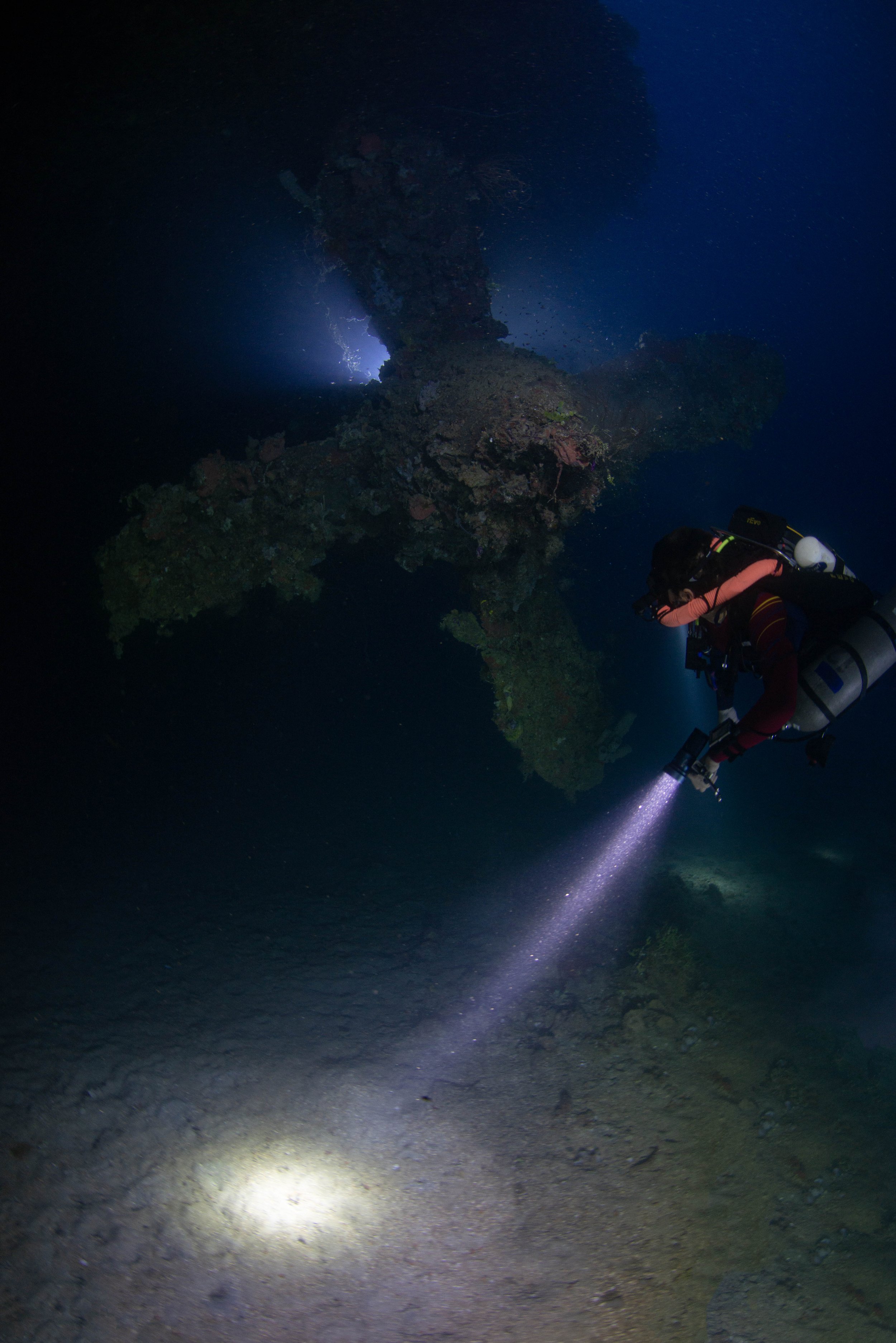
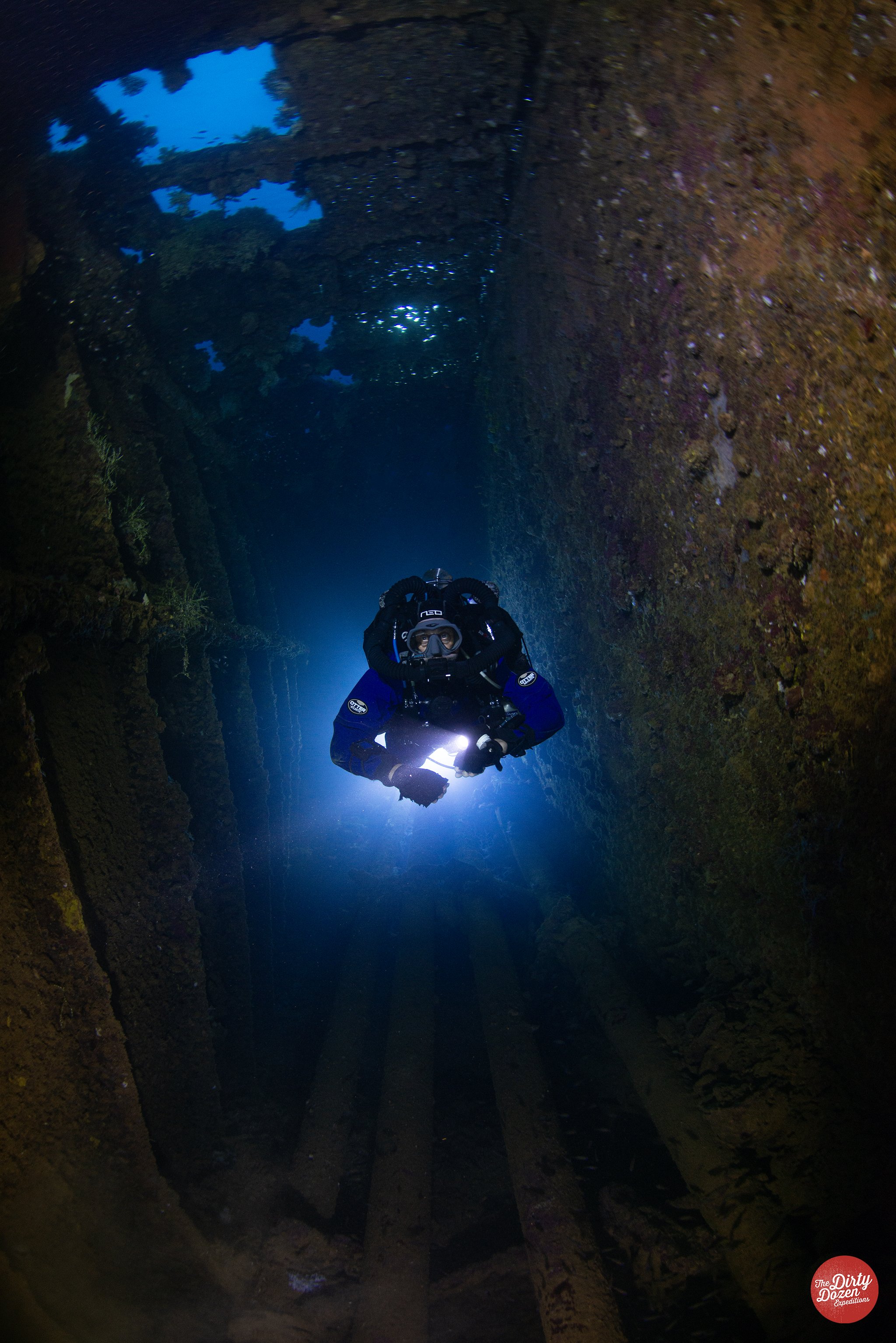
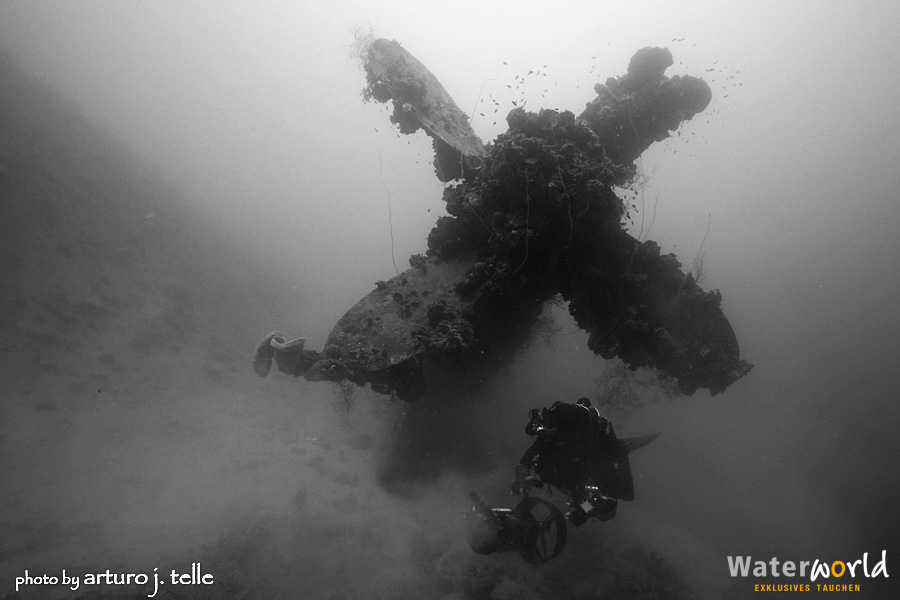

I-169 Submarine
The Japanese sub I-169 is the only known submarine wreck in the lagoon. The forward section was blown apart by Japanese depth charges after the submarine was accidentally flooded. The conning tower is mostly complete but lies to the side of the submarine. The aft section is relatively intact. This is one of the few wrecks in Truk where penetration is not recommended.
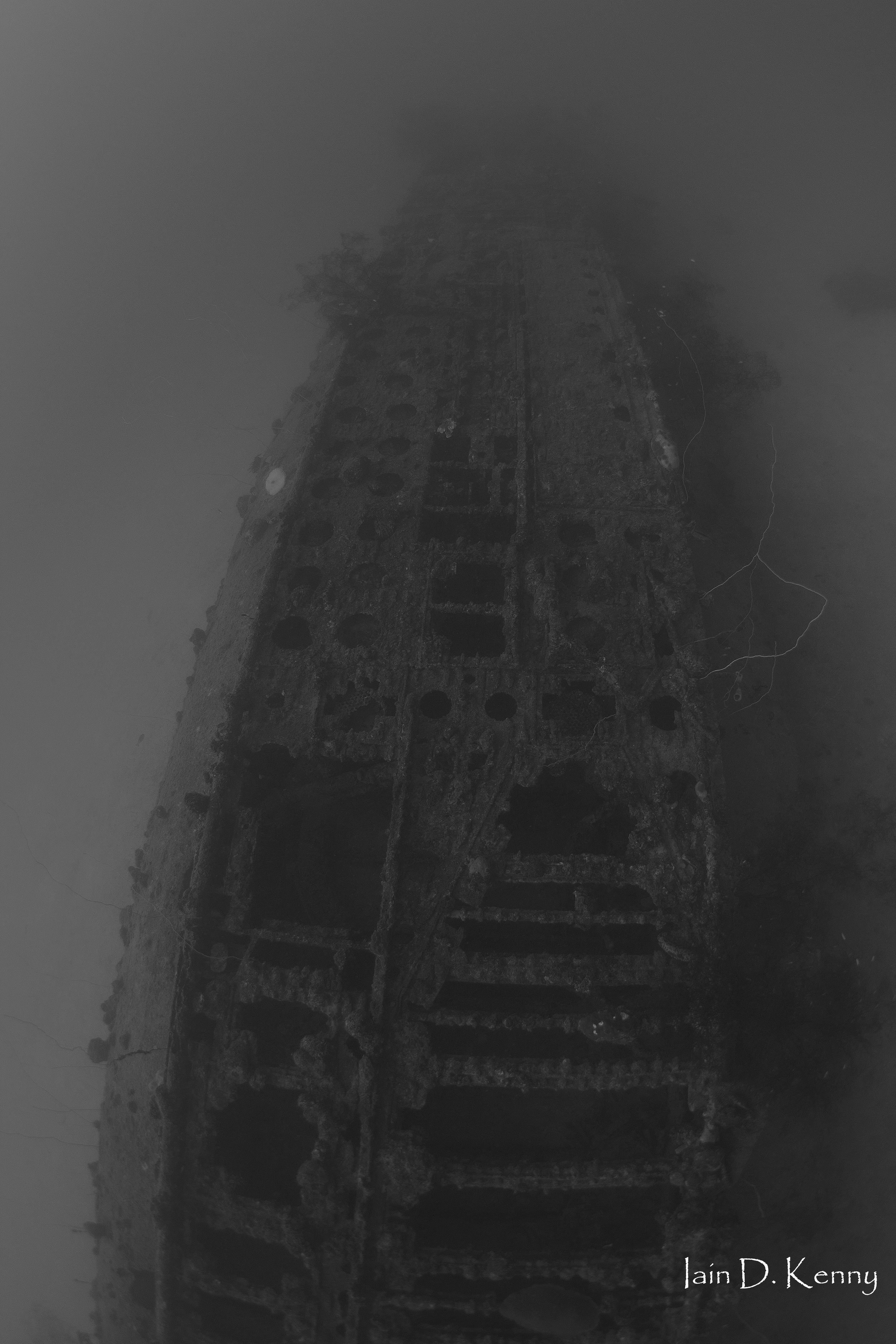
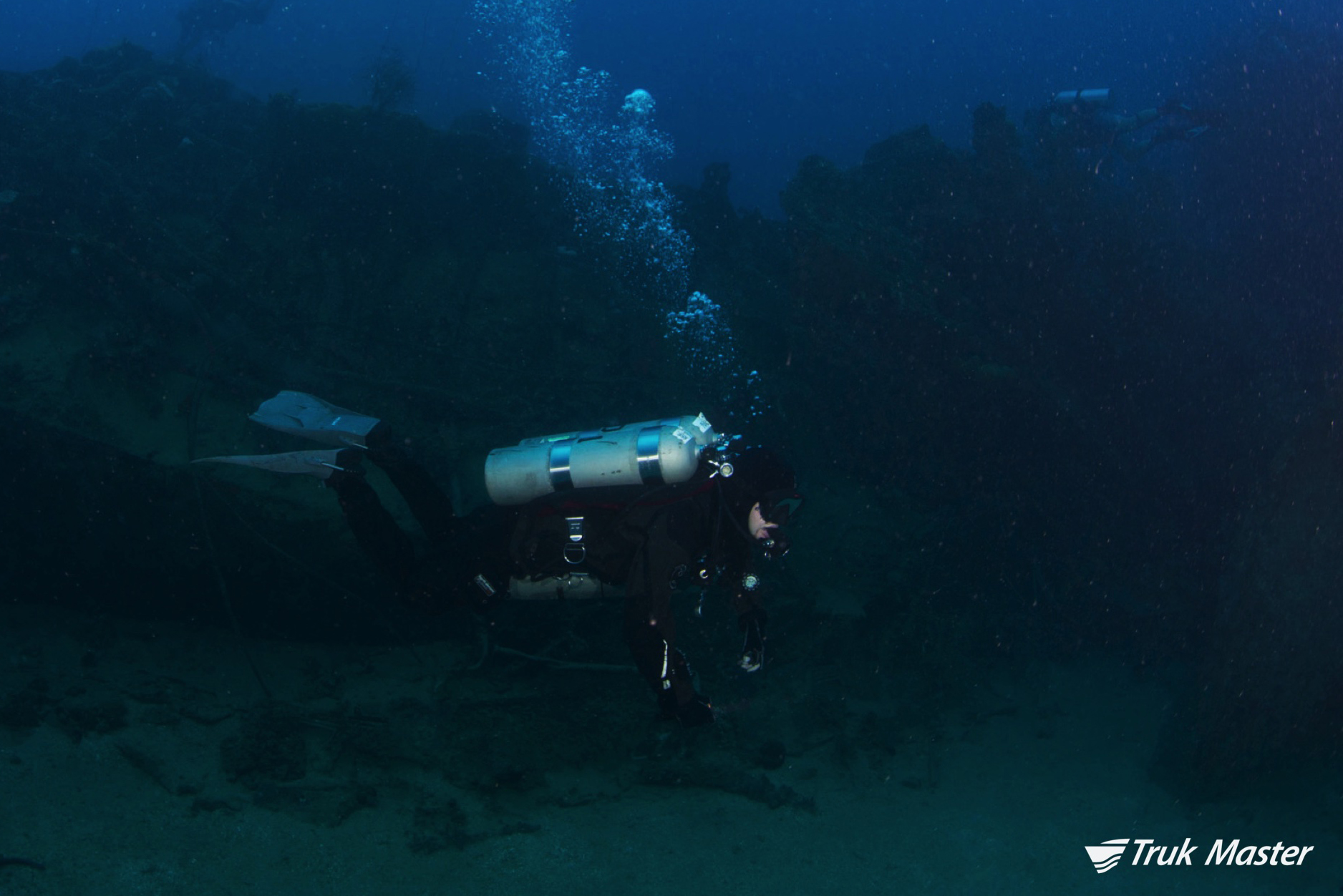
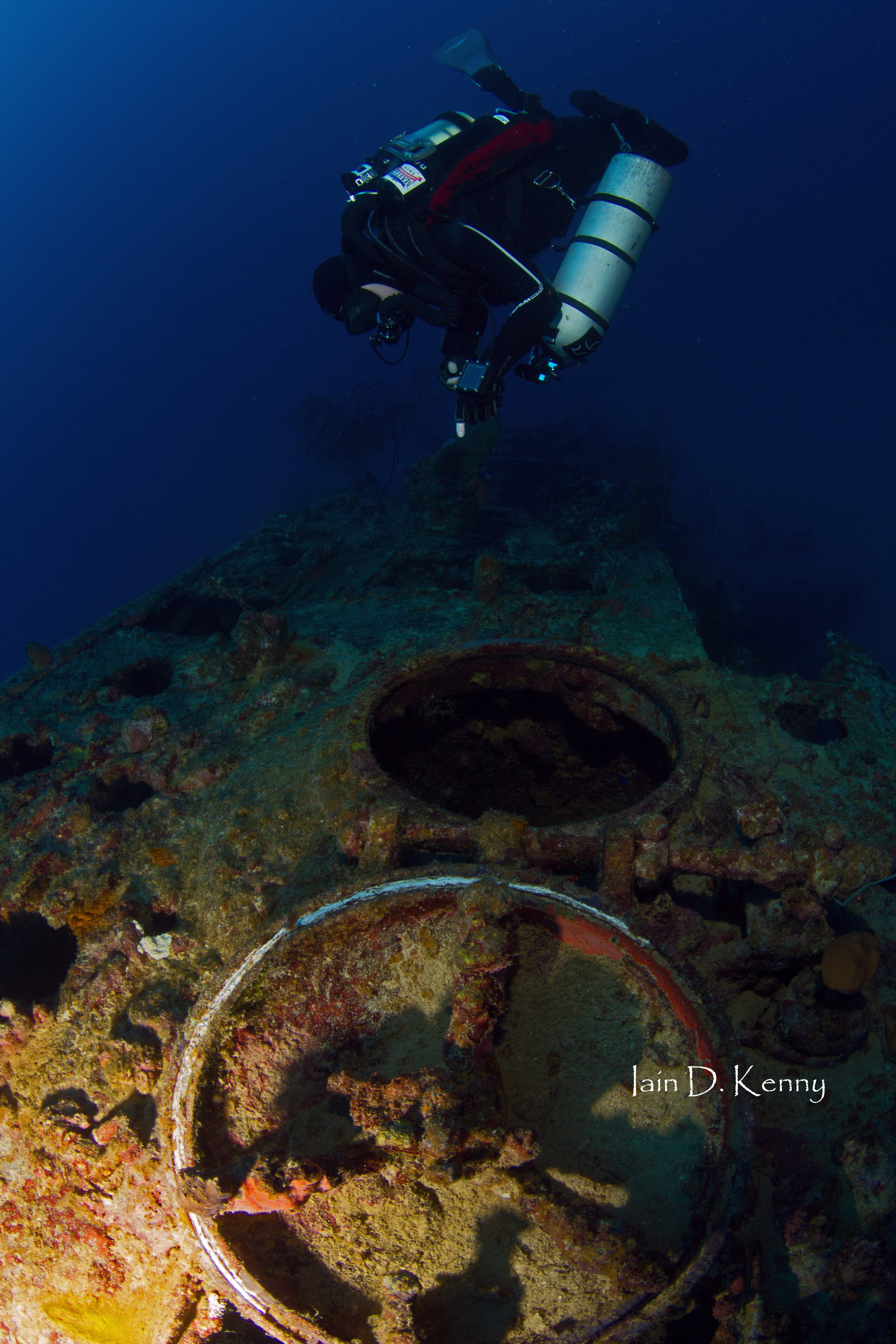
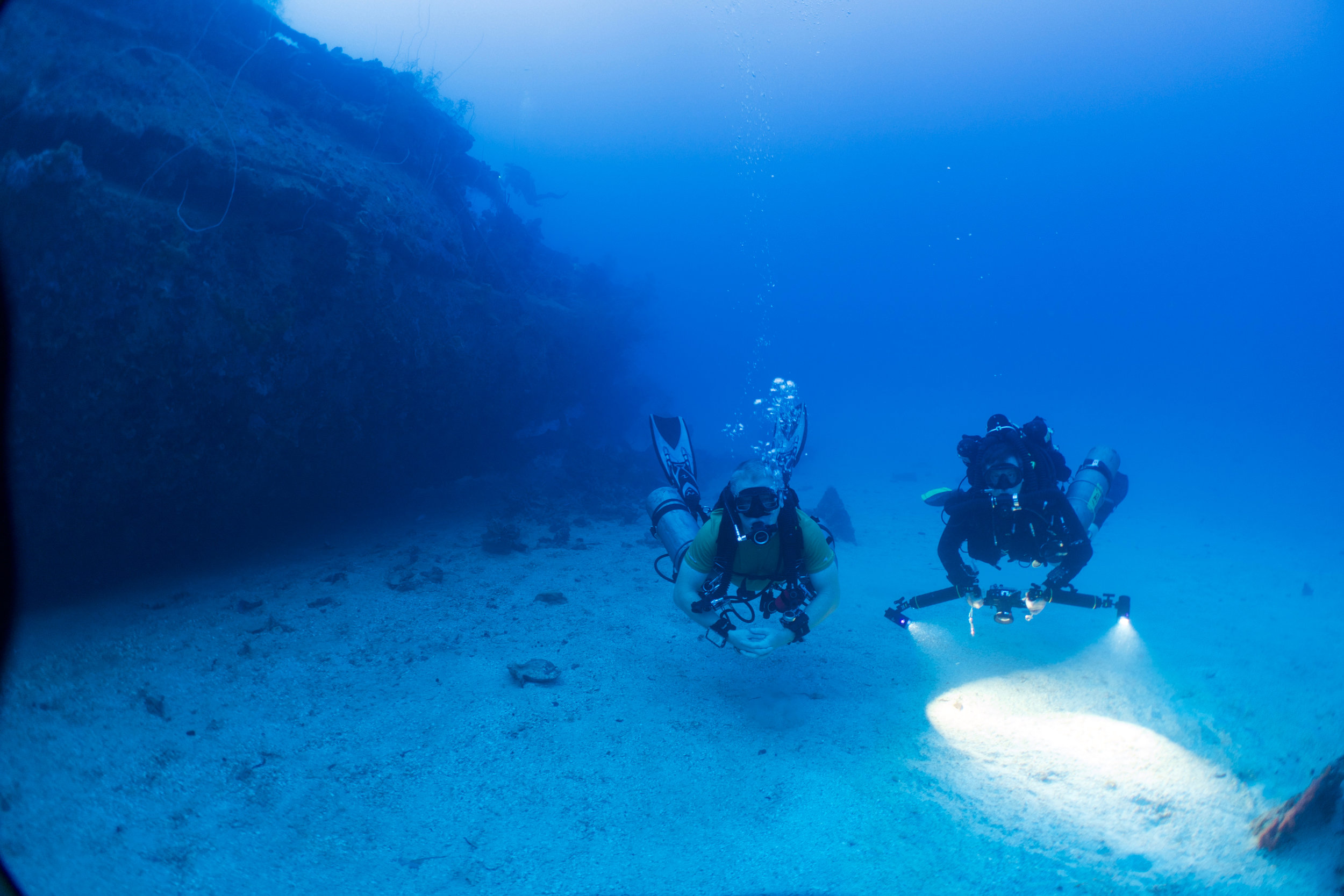
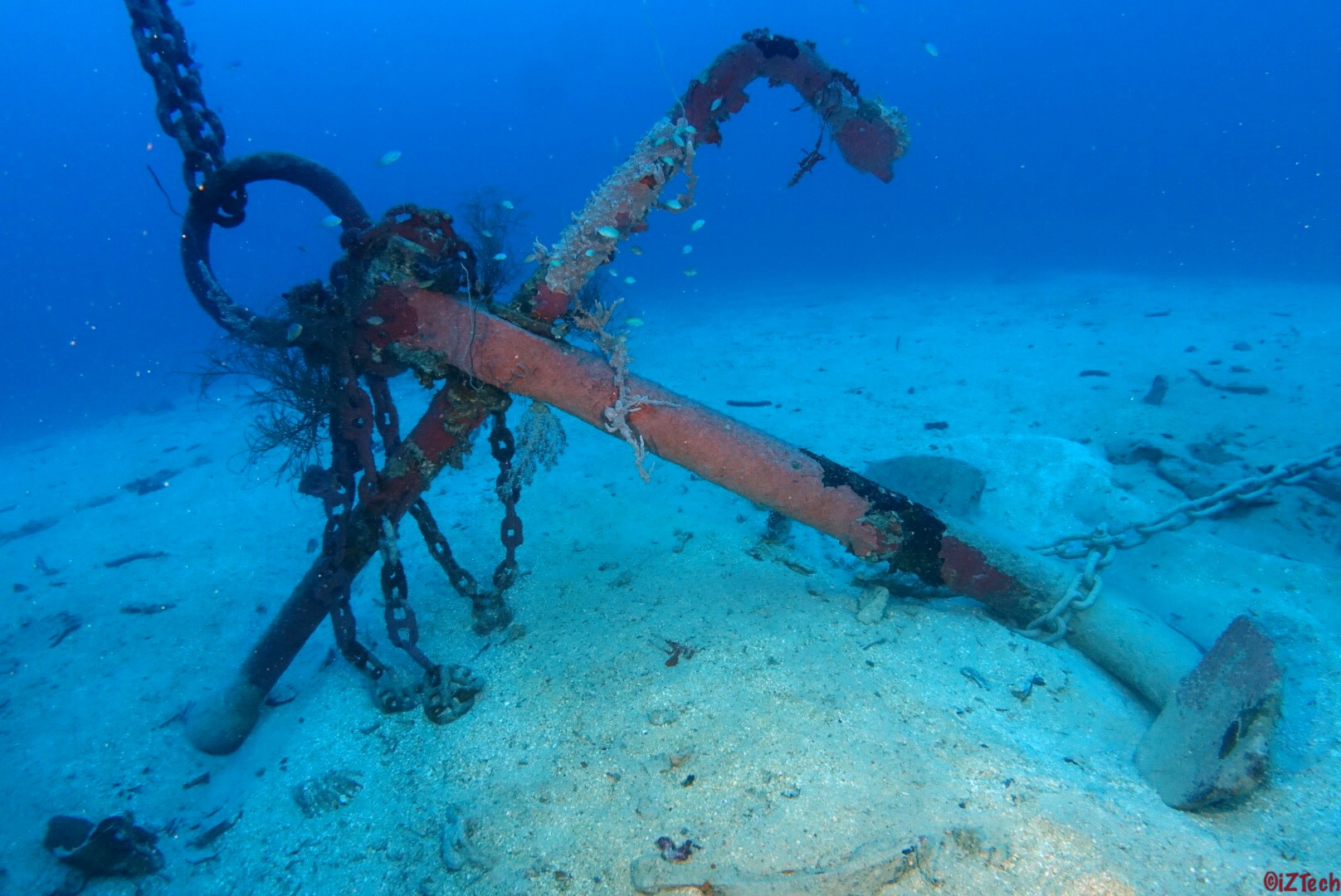
Kensho Maru
The Kensho’s interesting and accessible engine room makes this a favorite dive for many visitors to Truk. In the main superstructure, you can visit the galley, bathrooms, toilets, radio room and bridge. At the bow is a gun and in the holds you can find a salvage pump, gas bottles, batteries and cooking utensils. At the stern, it’s possible to swim past the steering equipment and out through a bomb hole.
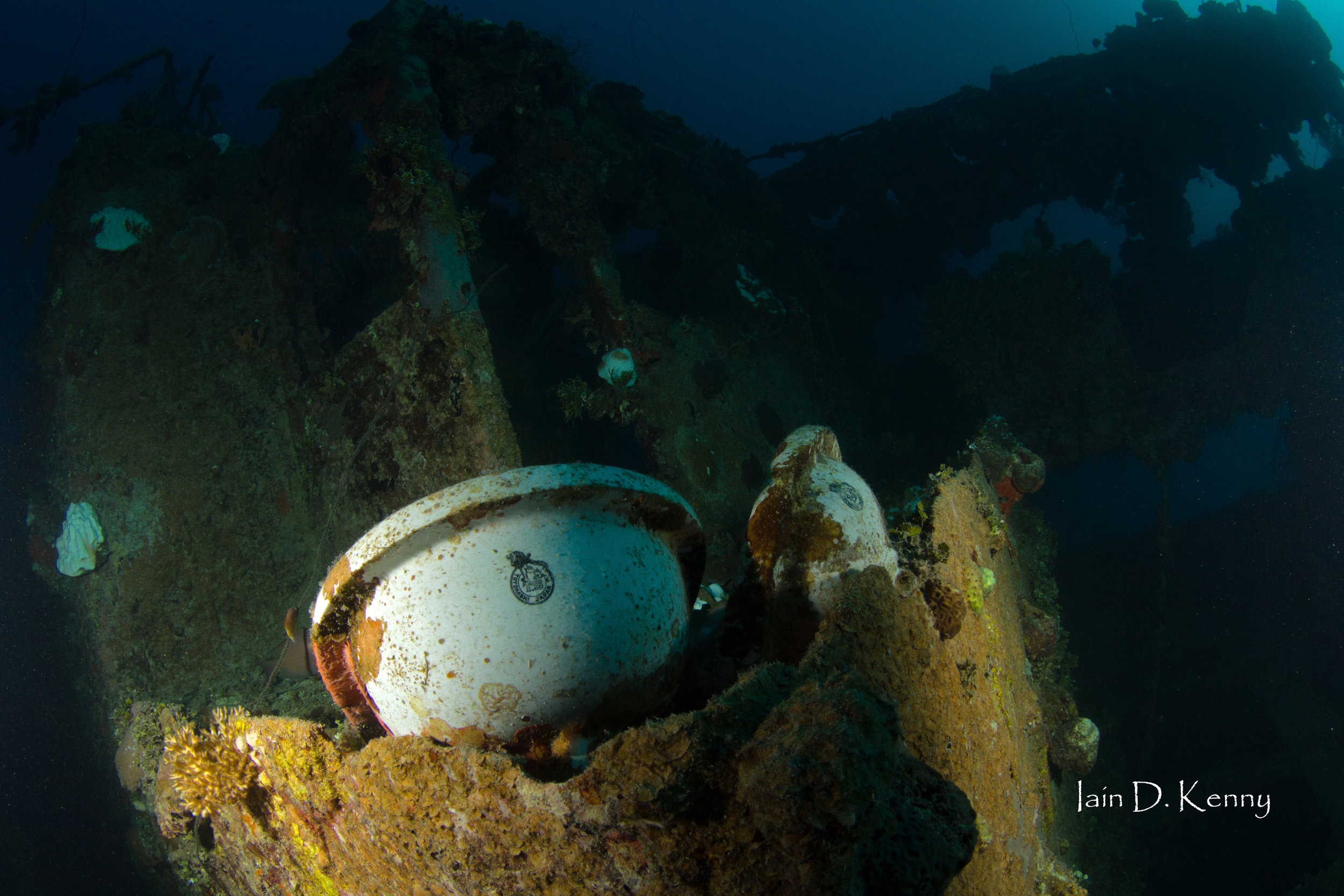

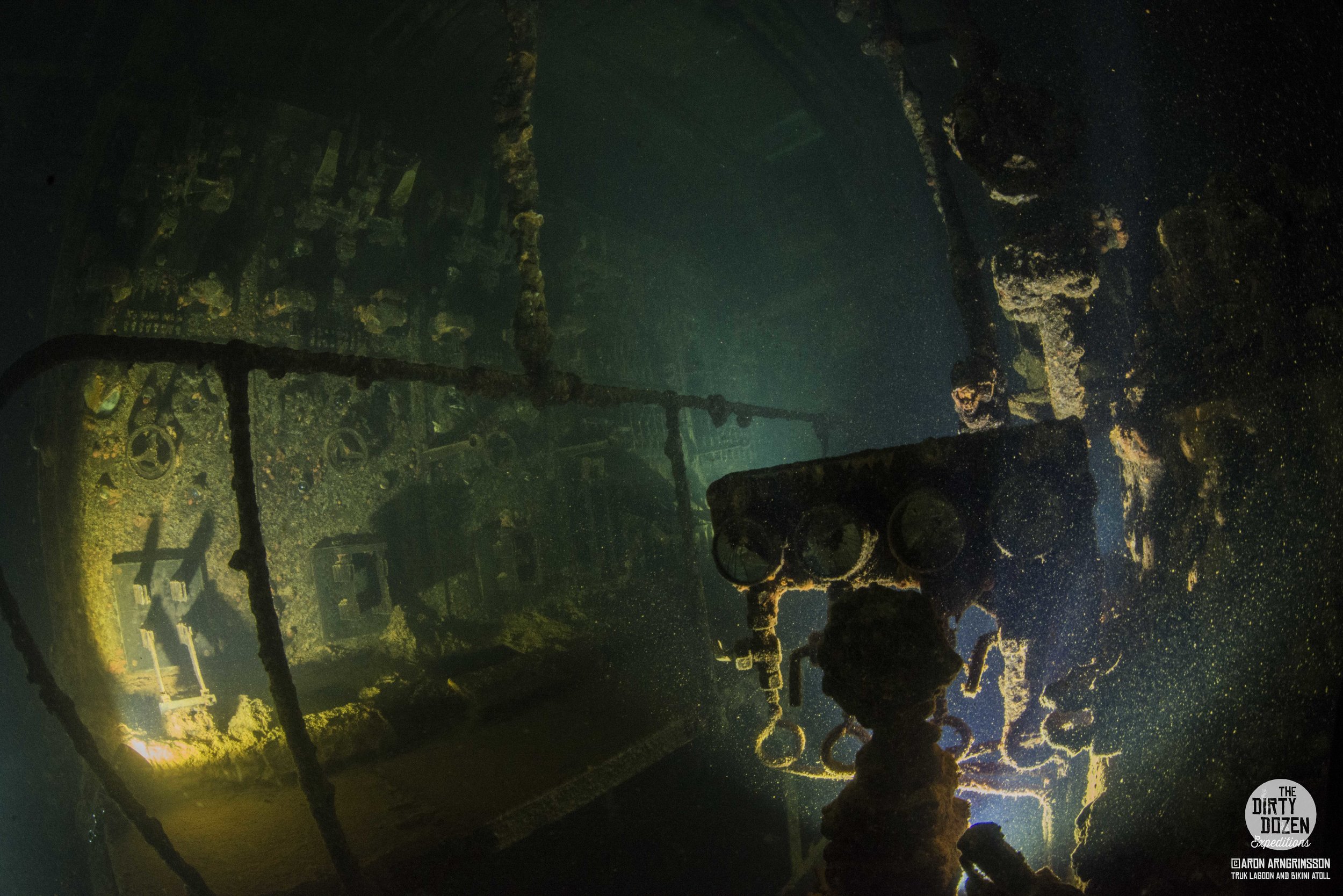

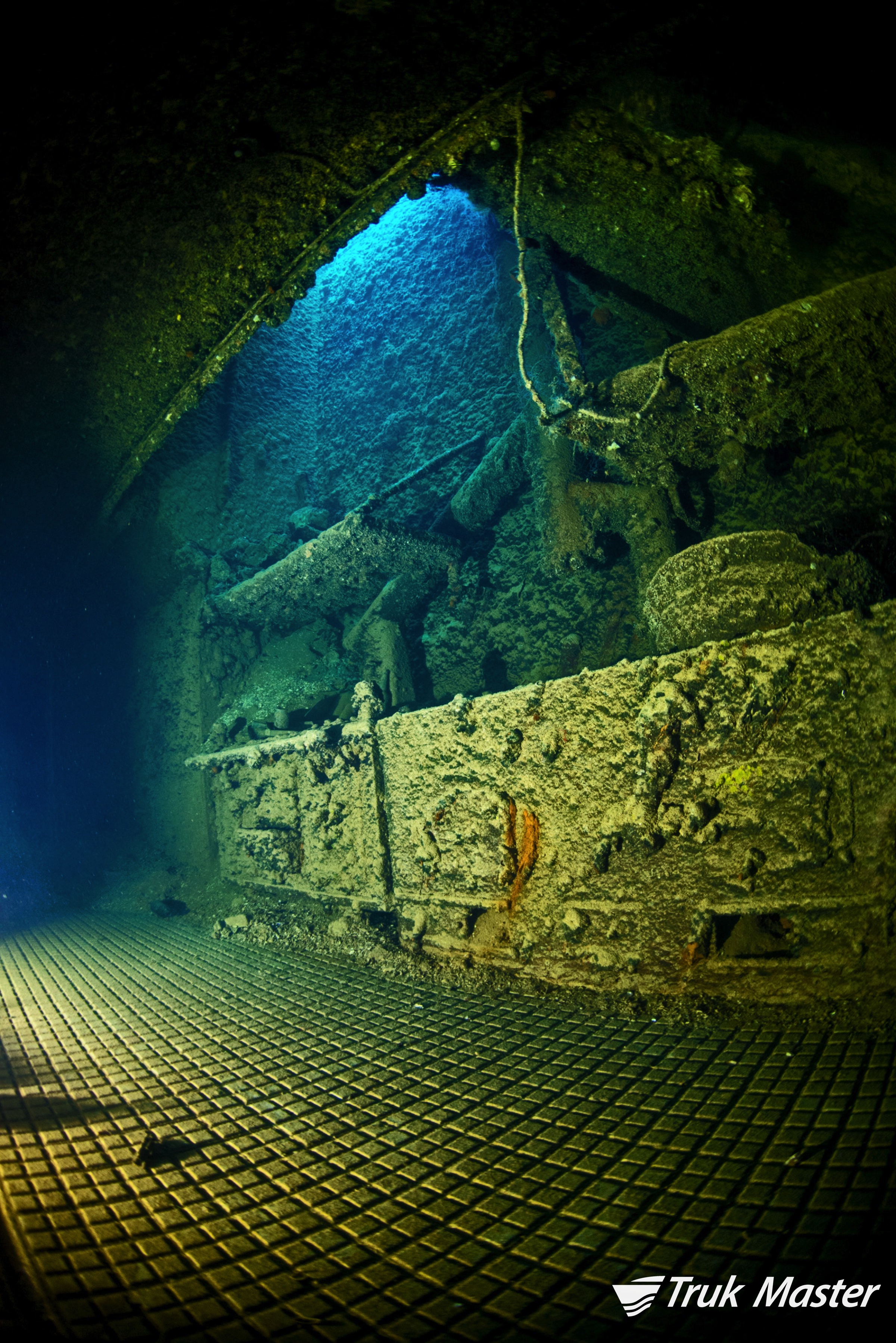
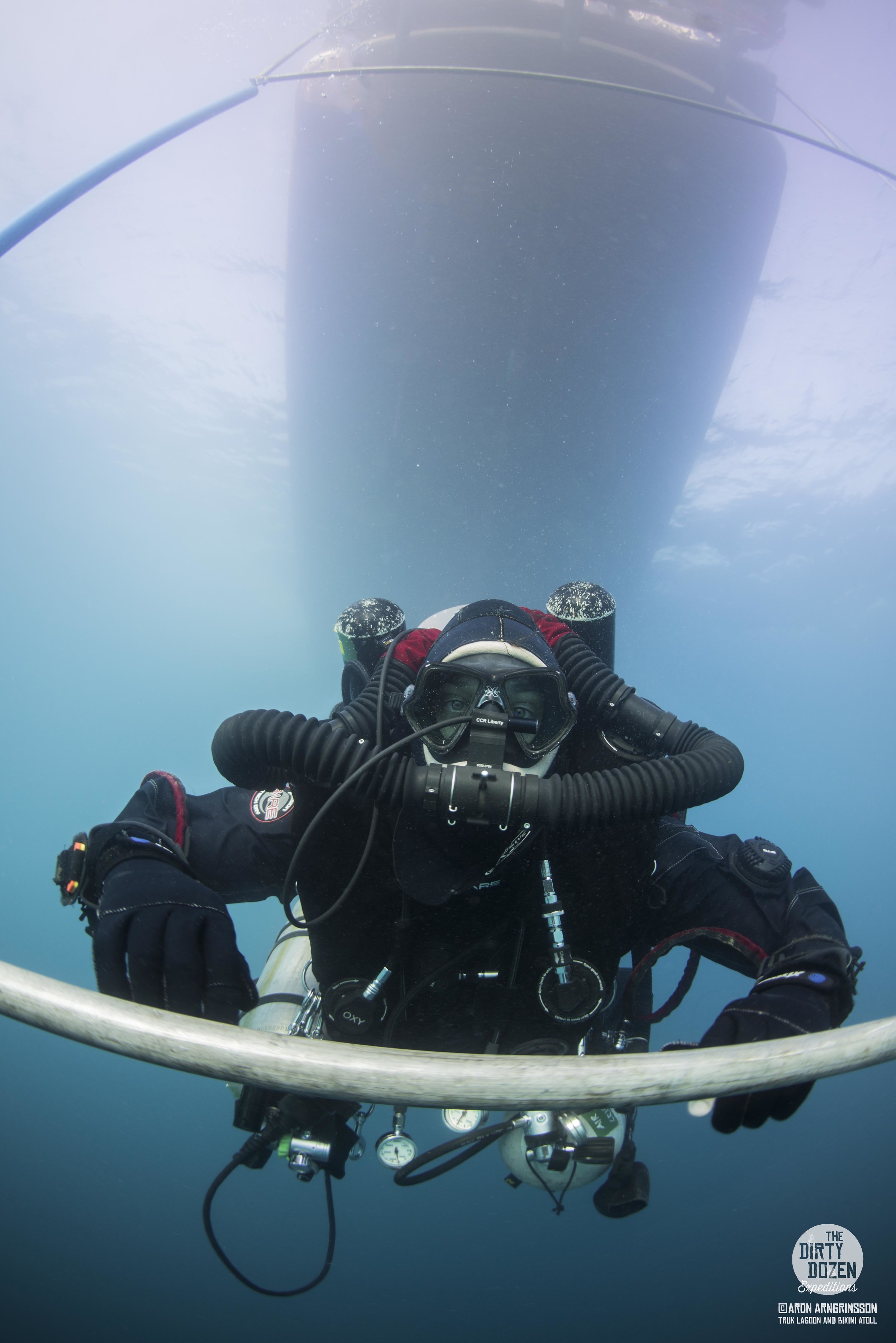
MomoKawa maru
The Momokawa’s holds are packed with all kinds of goods and equipment including aircraft engines, landing gear, propeller blades, aircraft body parts, trucks, and artillery shells. The ship’s telegraph and steering binnacle are still visible inside the bridge. The engine room is easily accessible through the skylights as is the galley, accommodation, and bathrooms via the main superstructure.
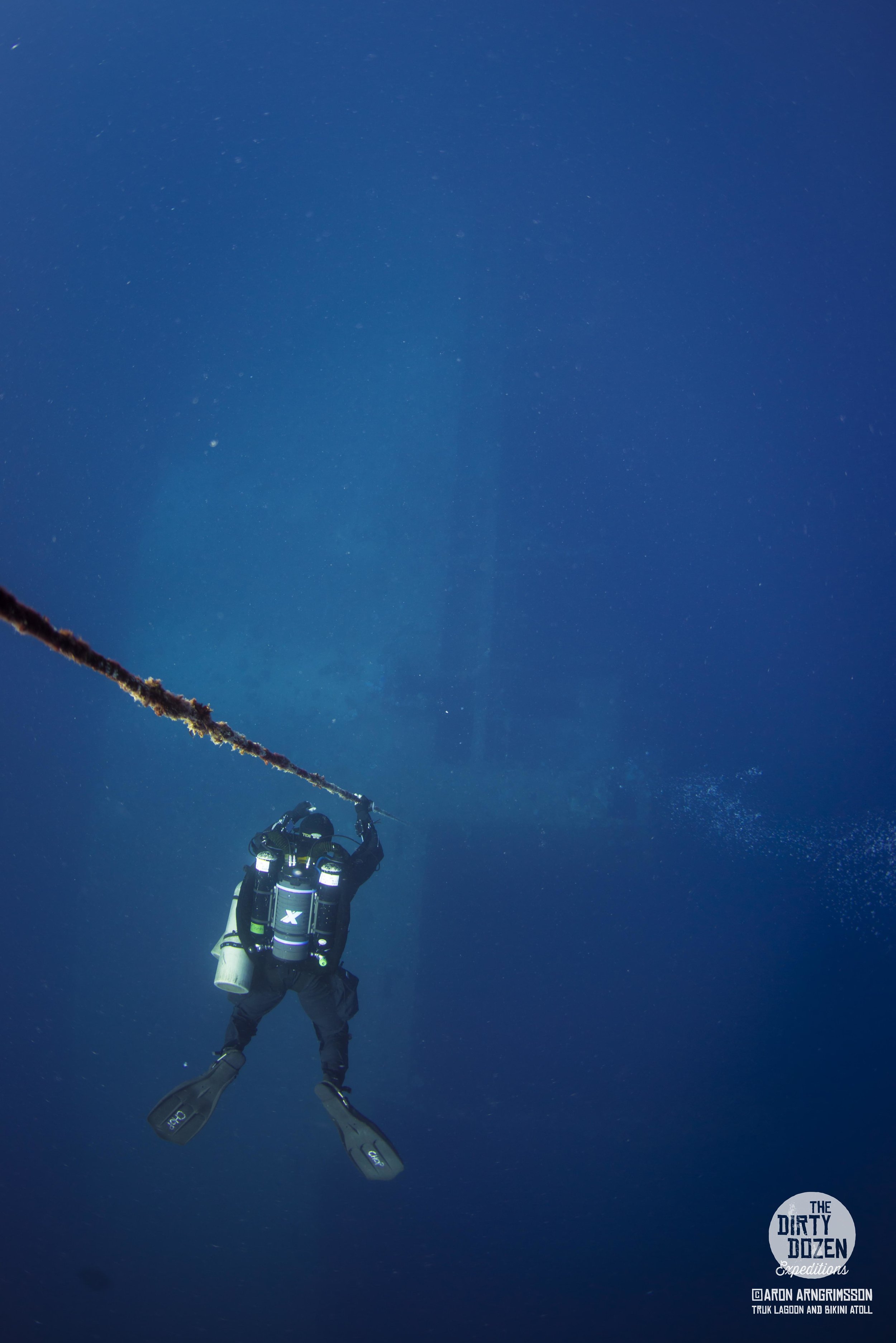
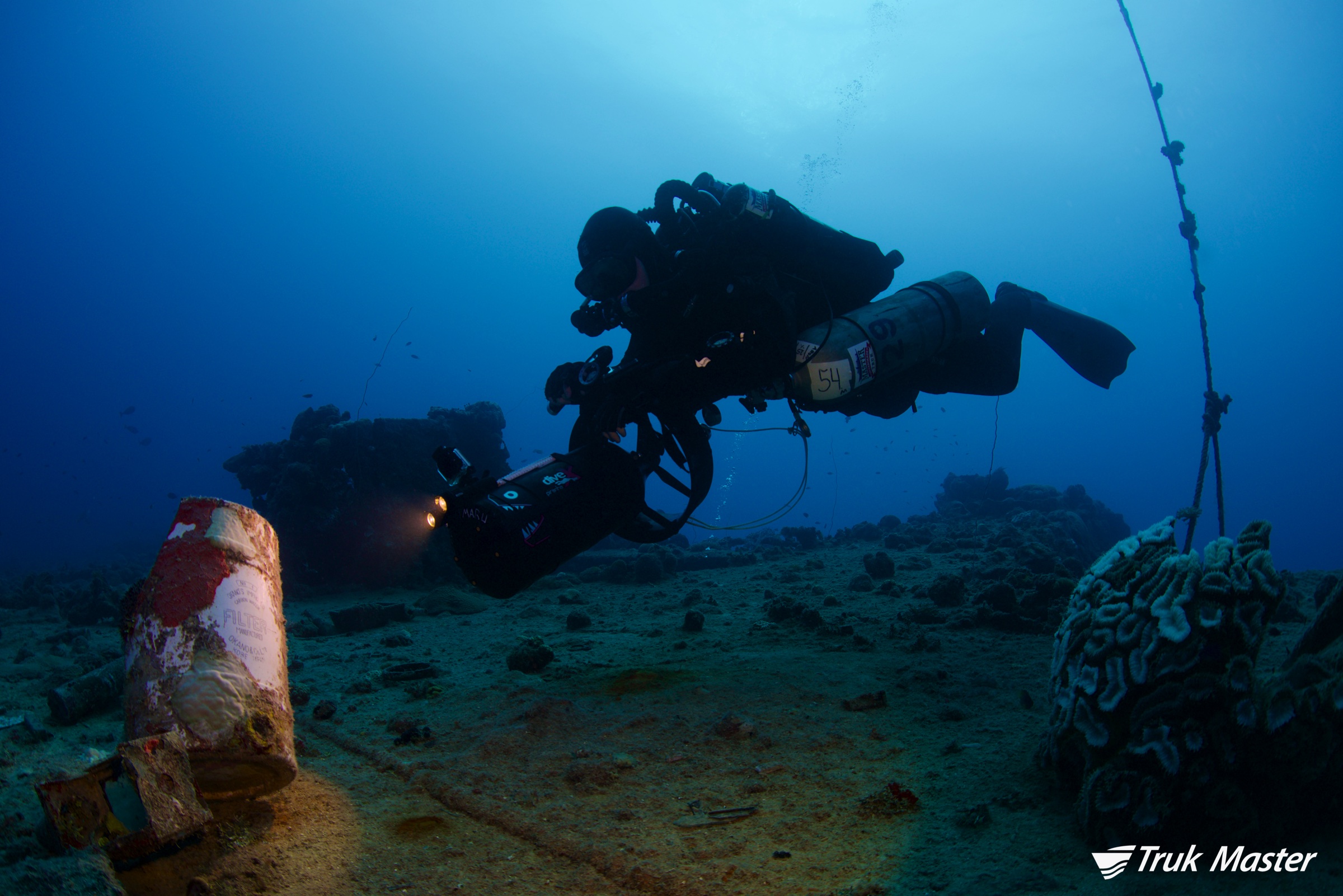
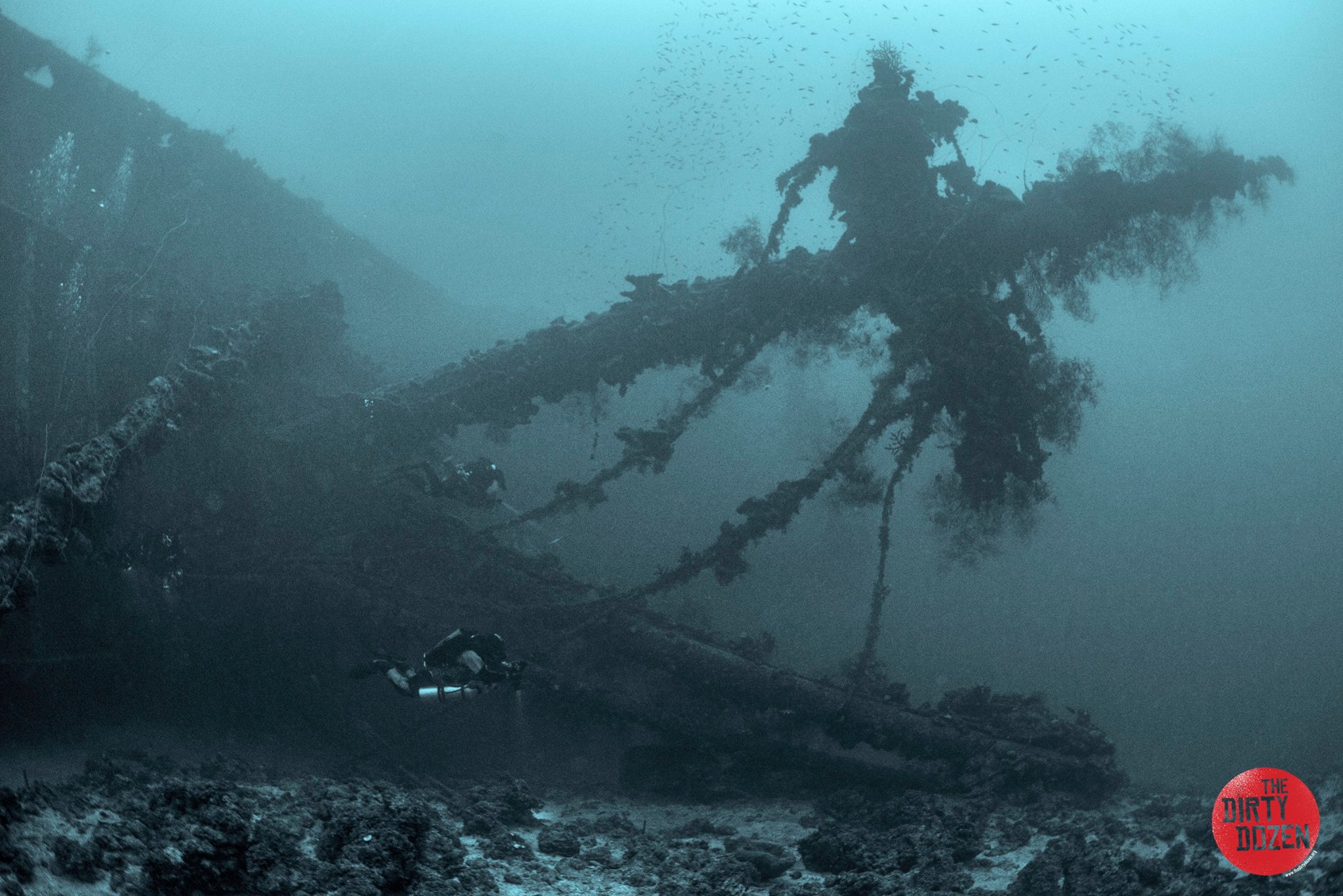
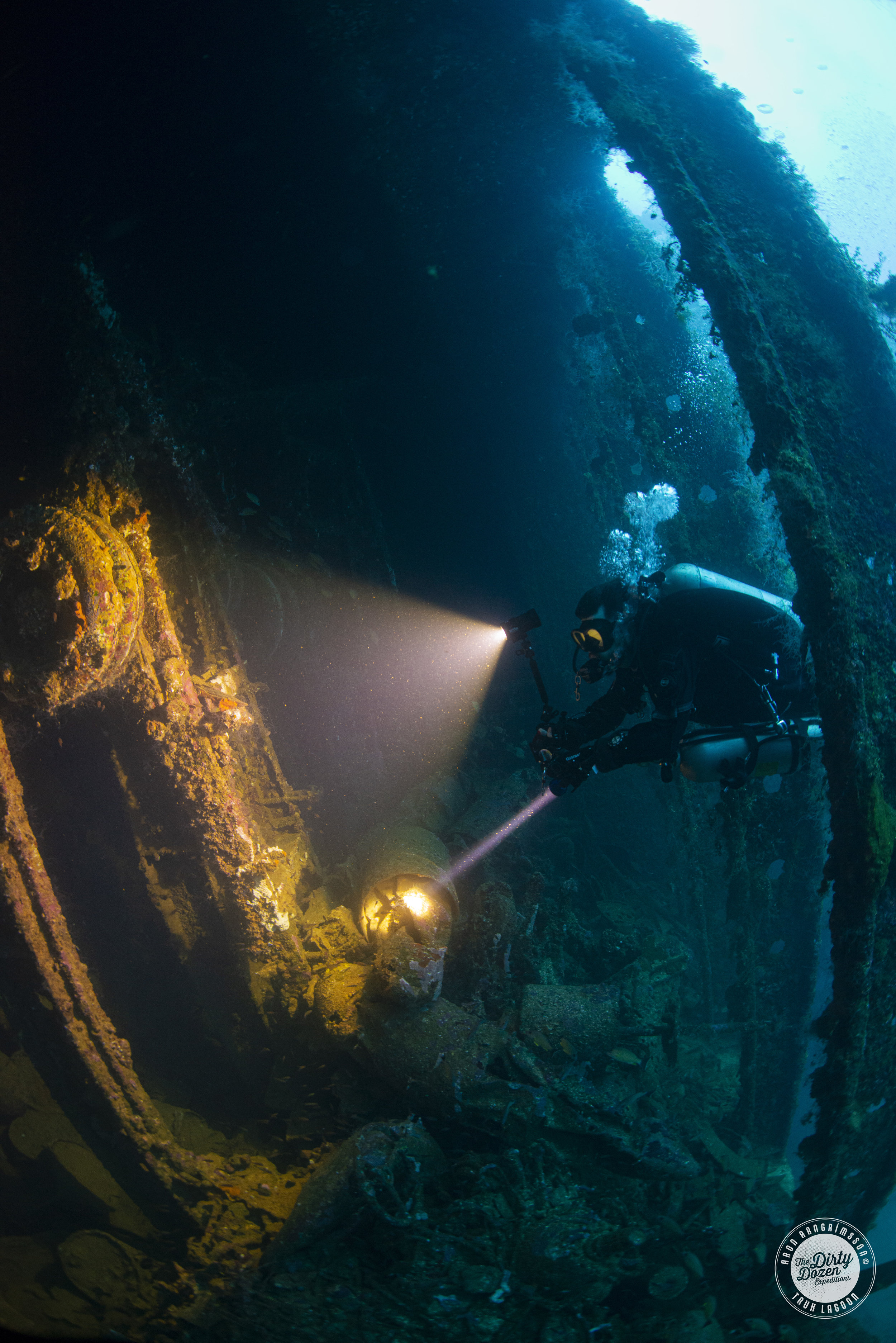

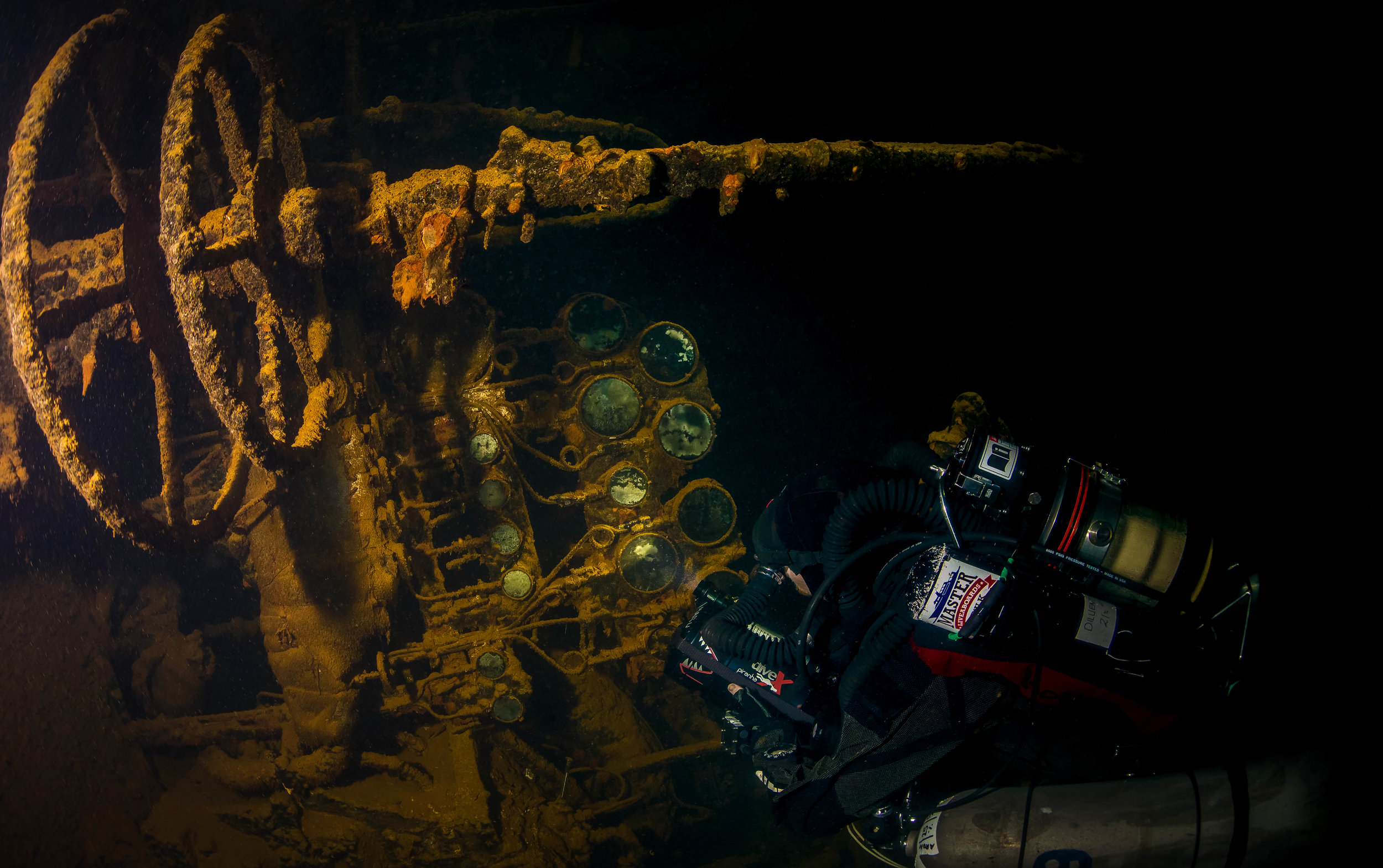
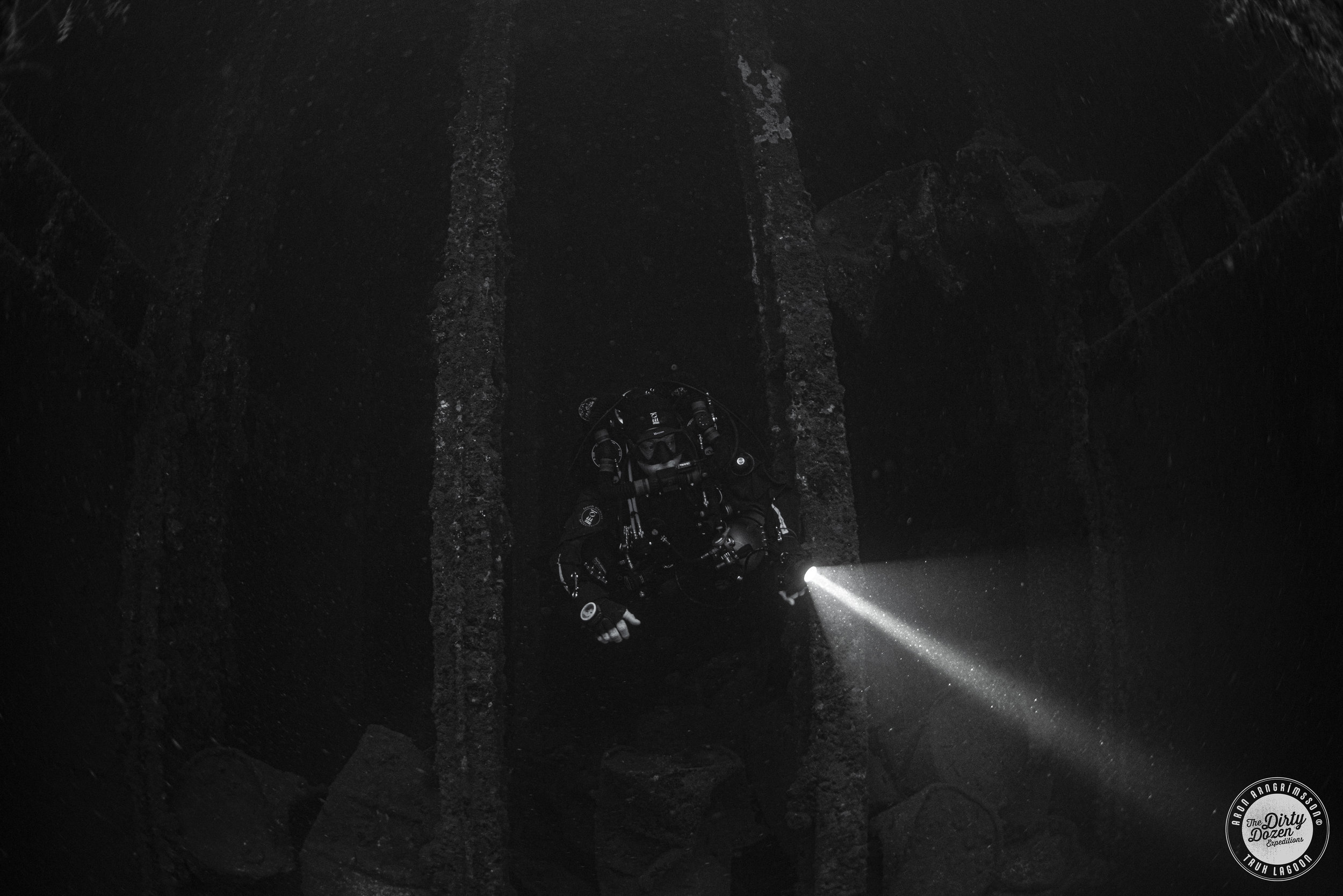
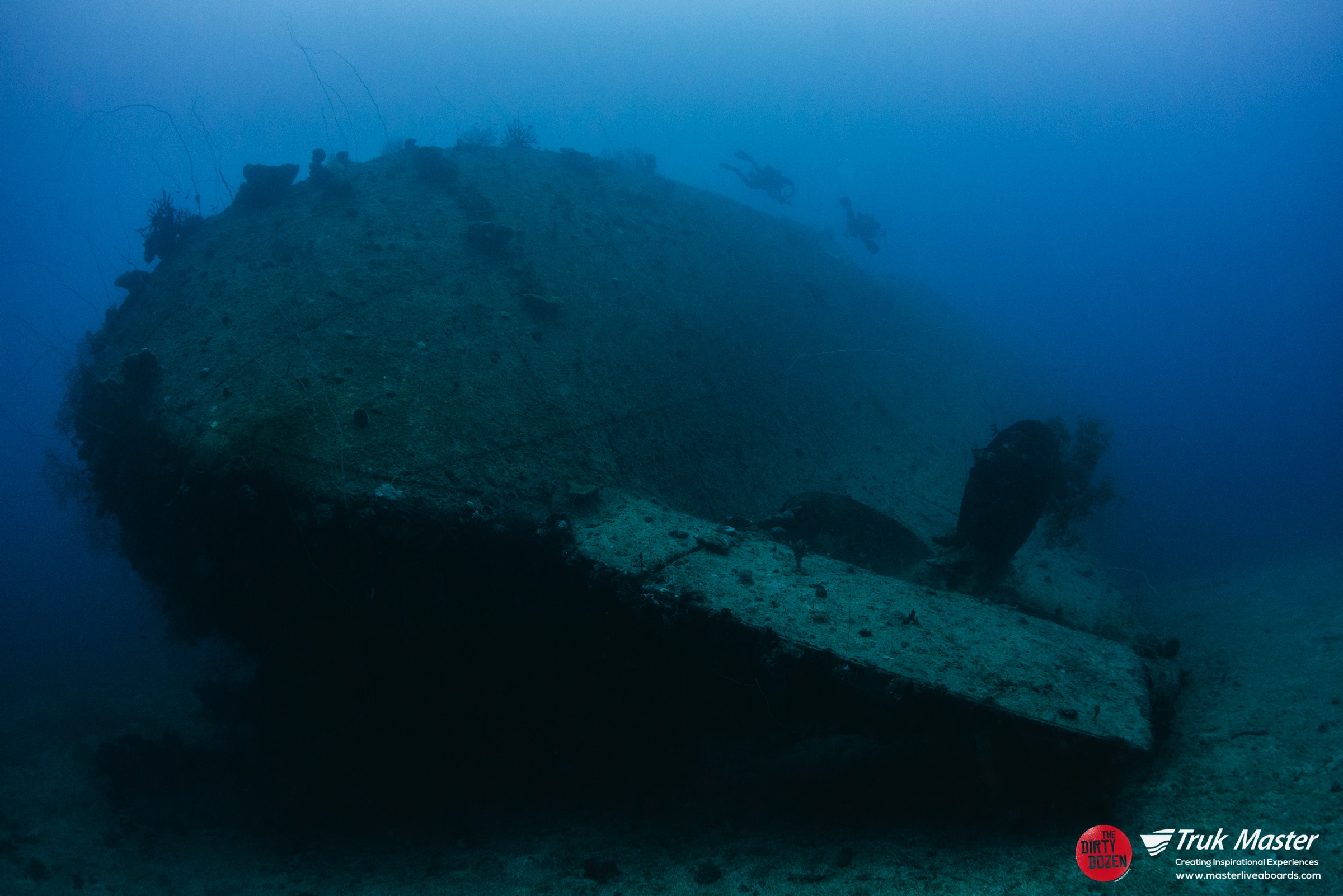
Nippo Maru
The Nippo Maru is an exciting wreck with lots to see making it one of the all-time diver favorites in Truk. Scattered over the wreck is a small Japanese battle tank, the remains of trucks, and twin-barreled anti-aircraft guns.
Down in the holds are various types of munition, range finders, mess gear, beer bottles, and water tanks. The spectacular engine room is widely believed to be the first point of contact by enemy torpedoes in Operation Hailstone. The bridge is probably the best in Truk with the ship’s telegraph and steering binnacle still in remarkable condition.
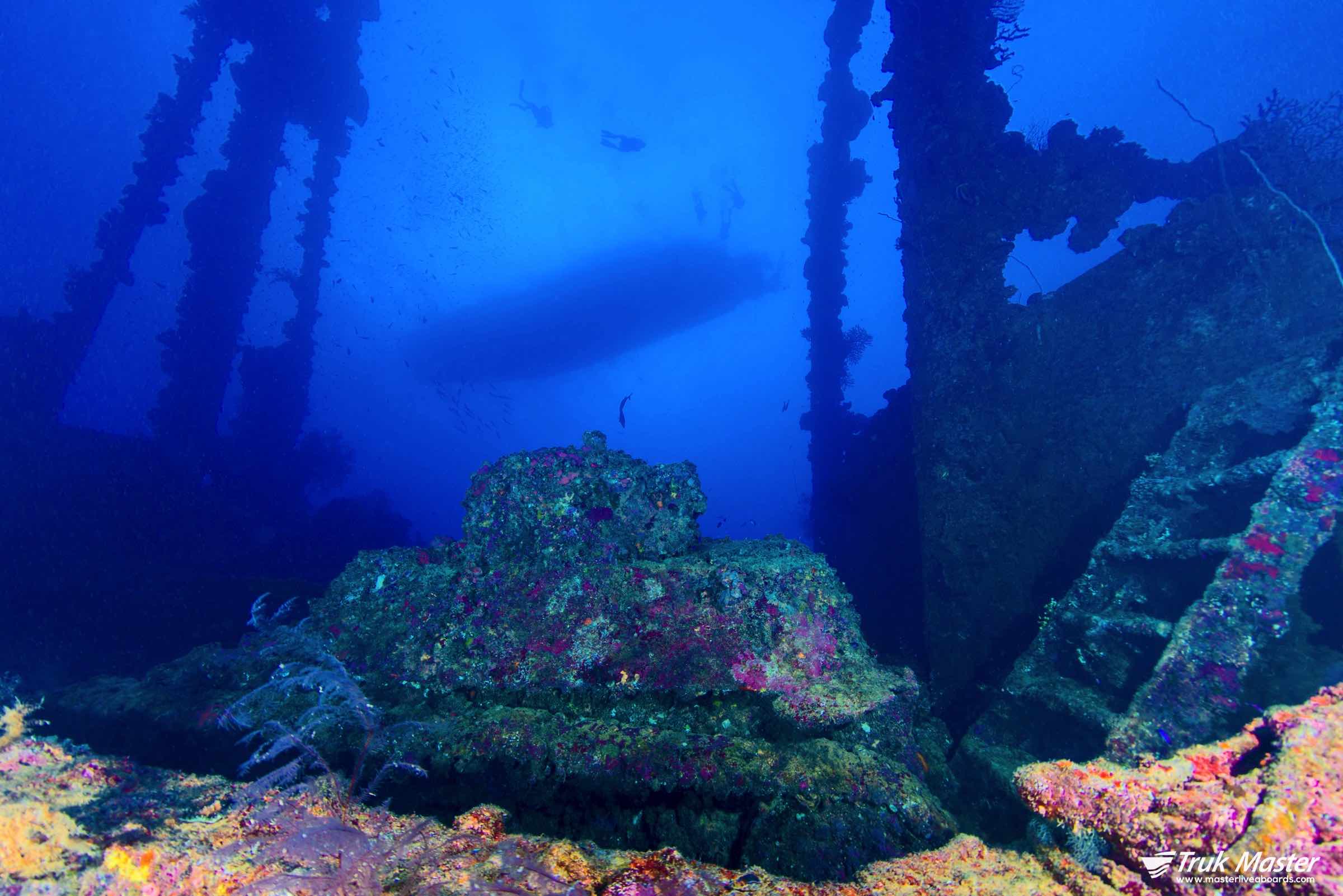
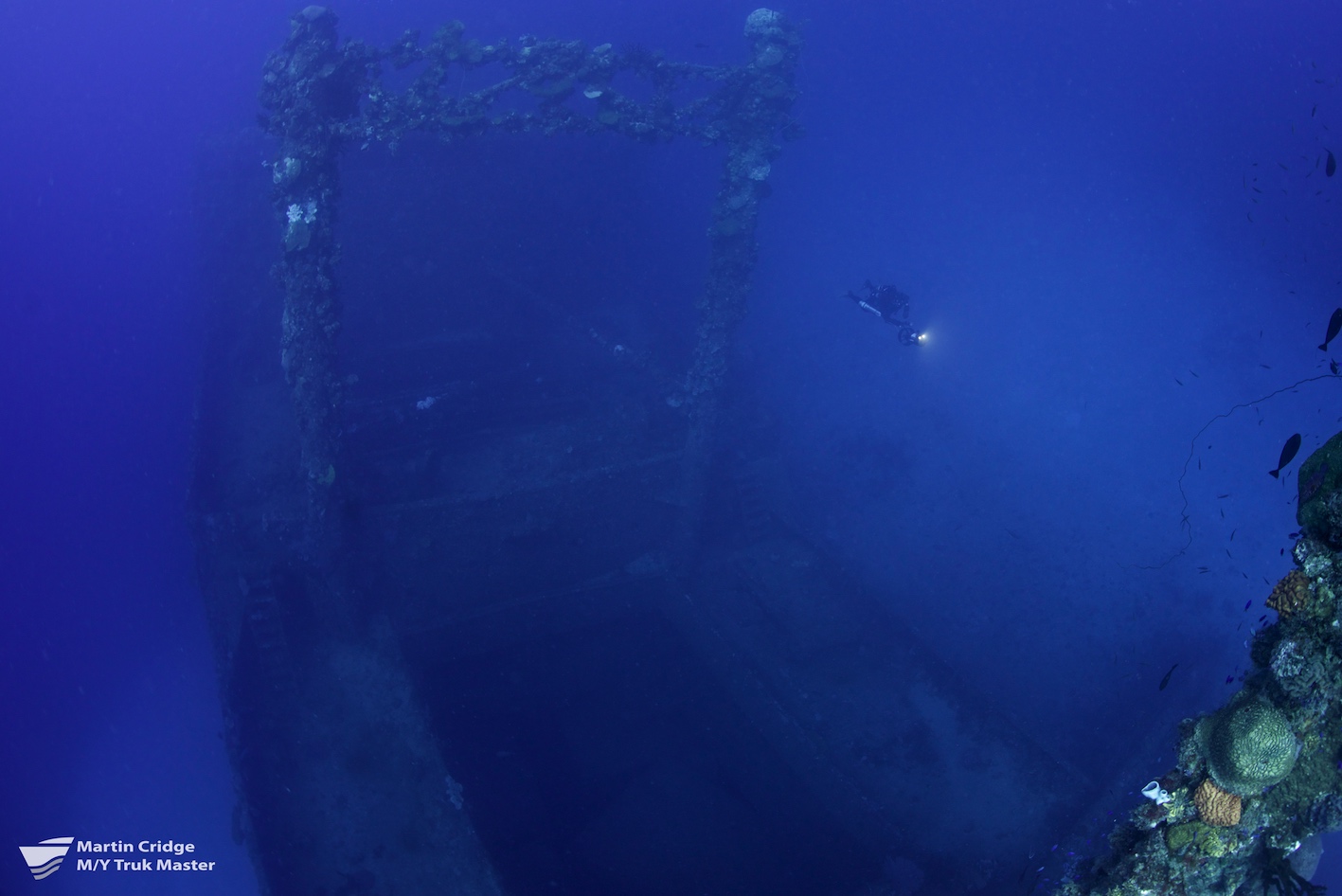

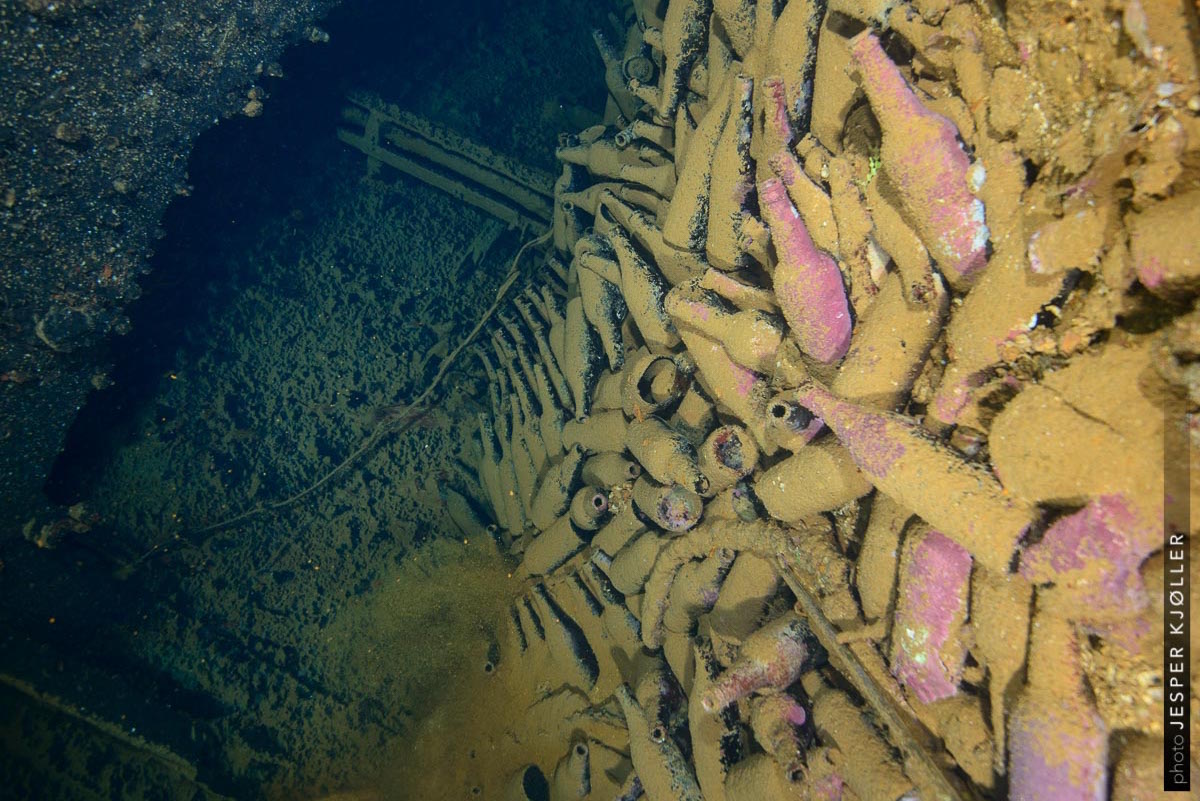
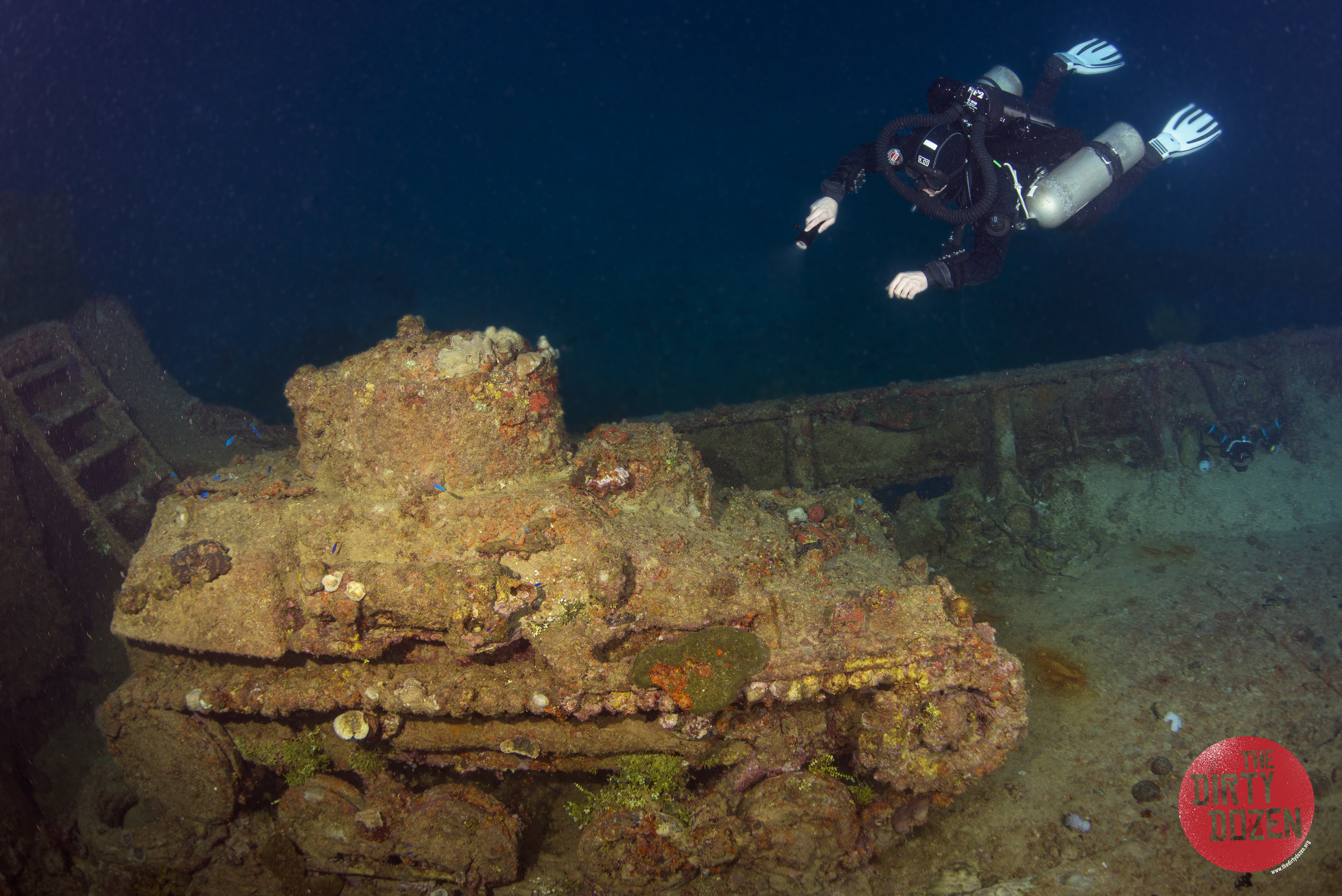
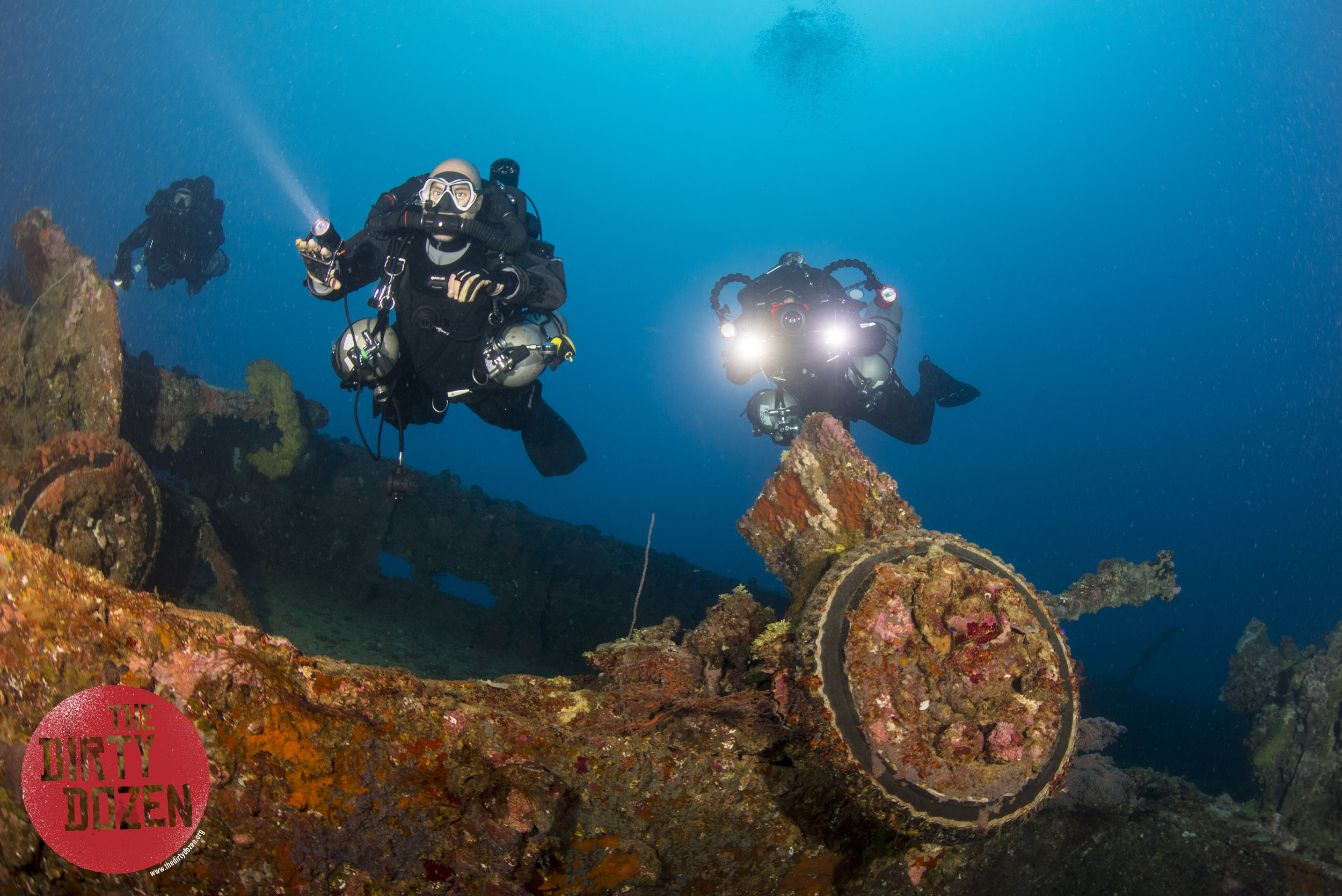
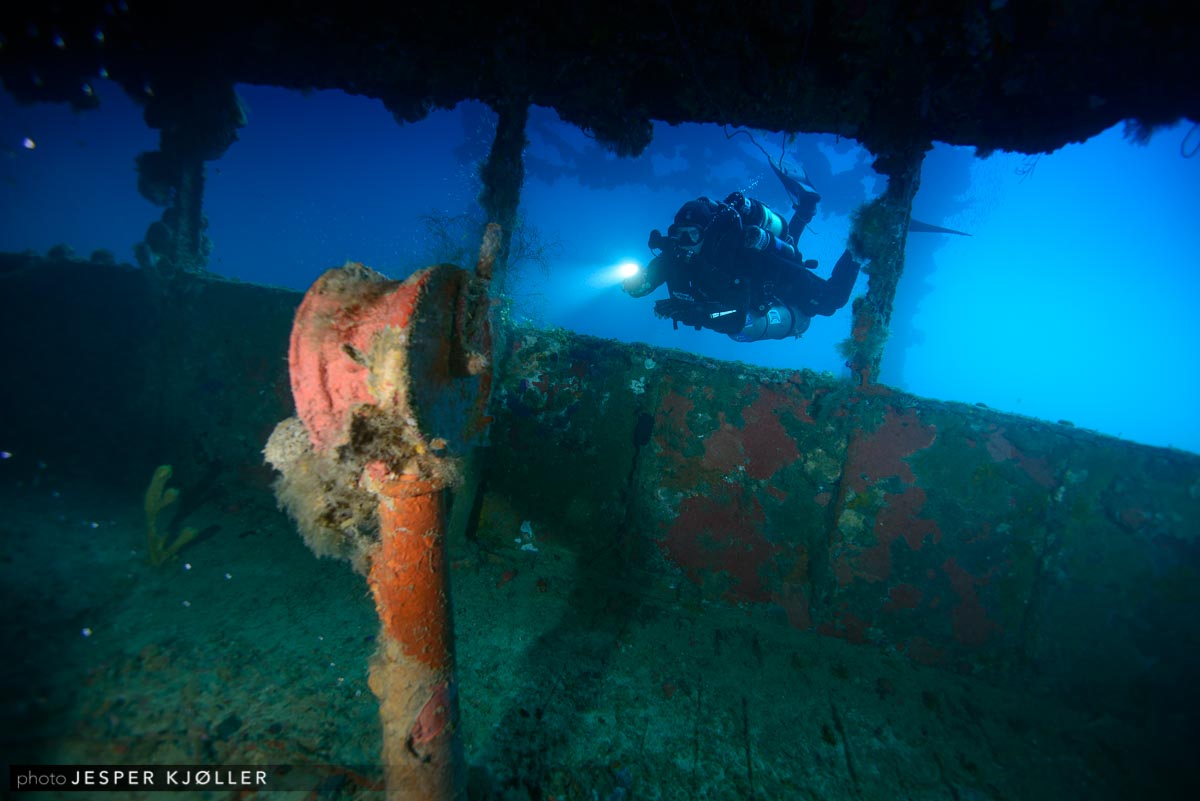
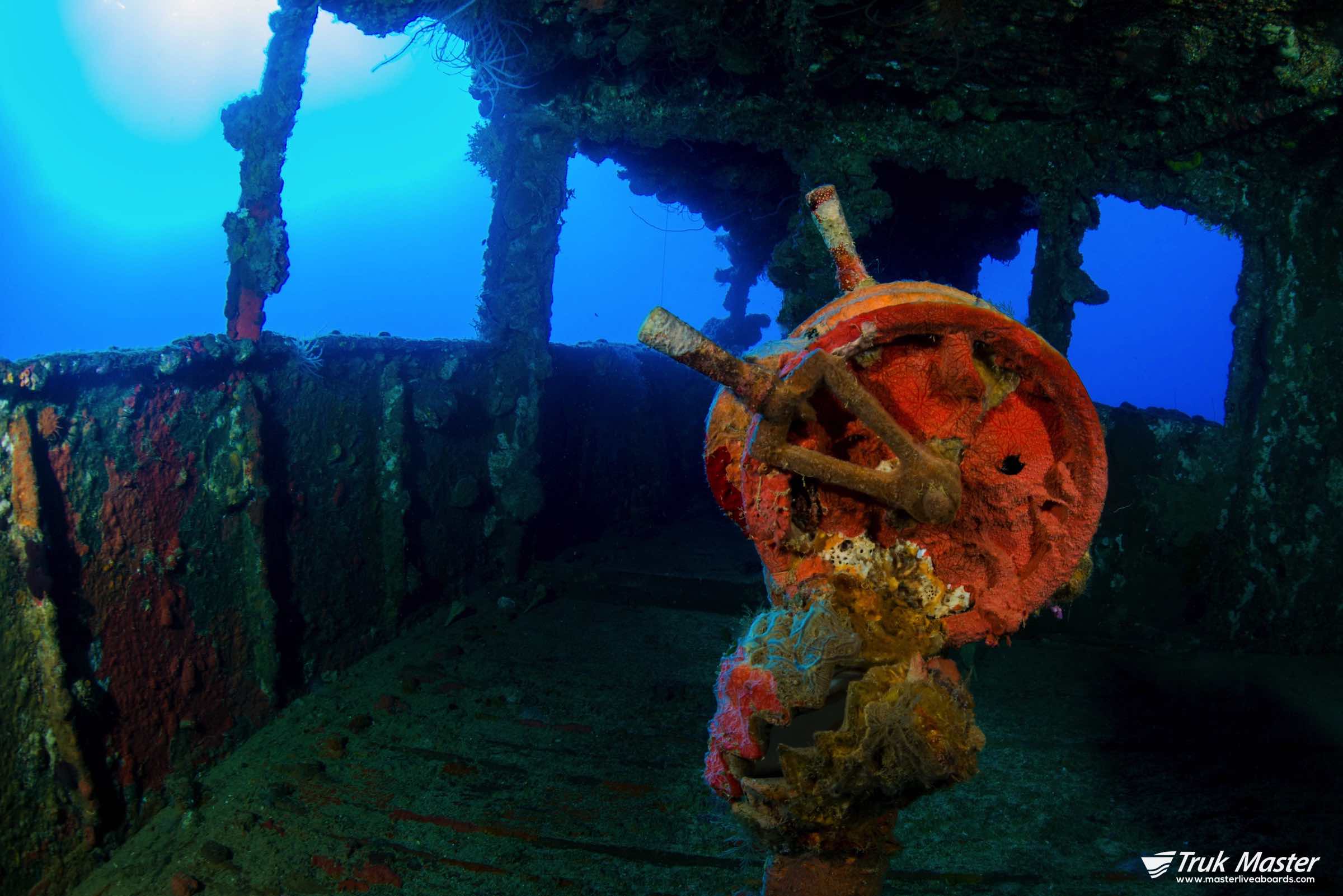
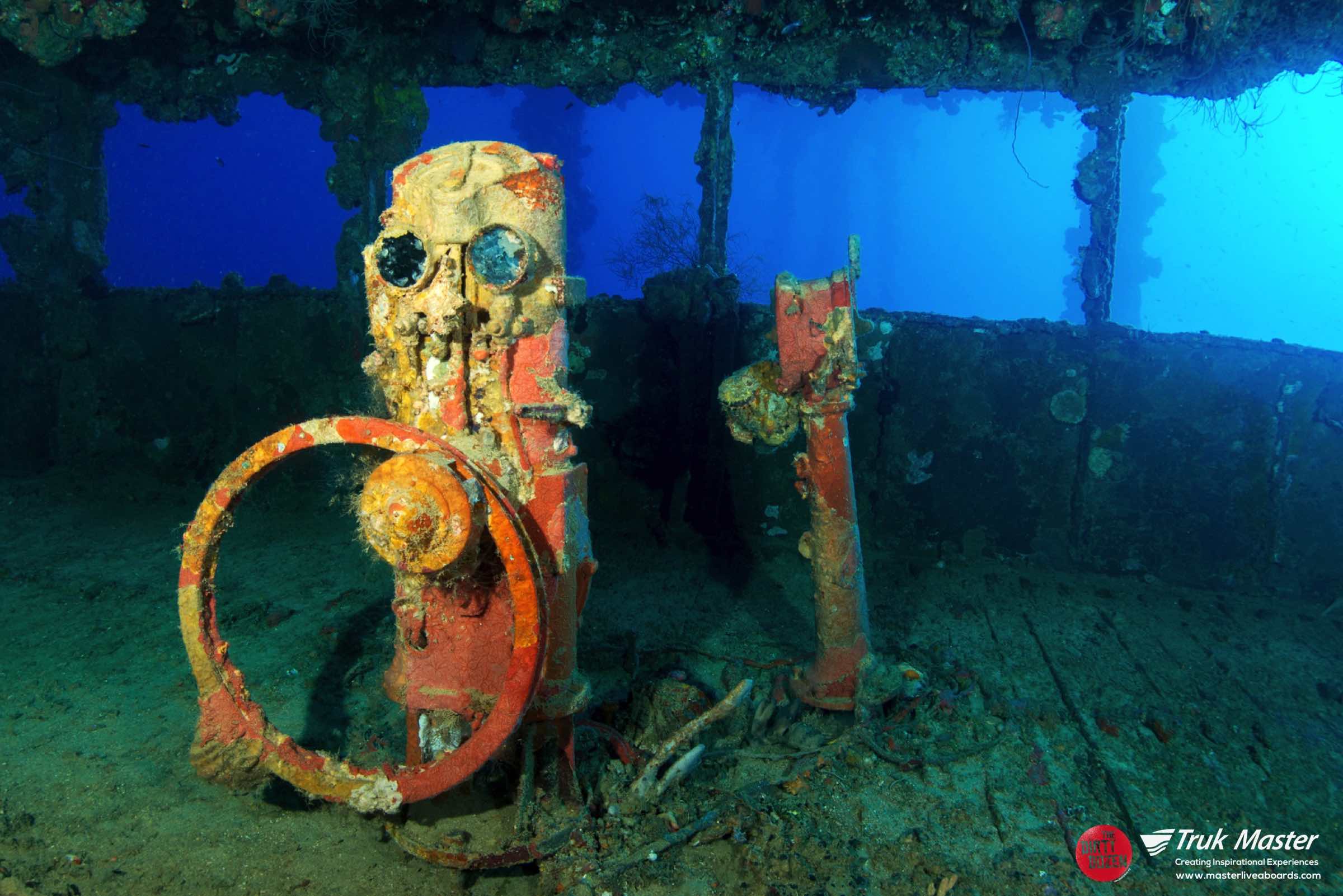
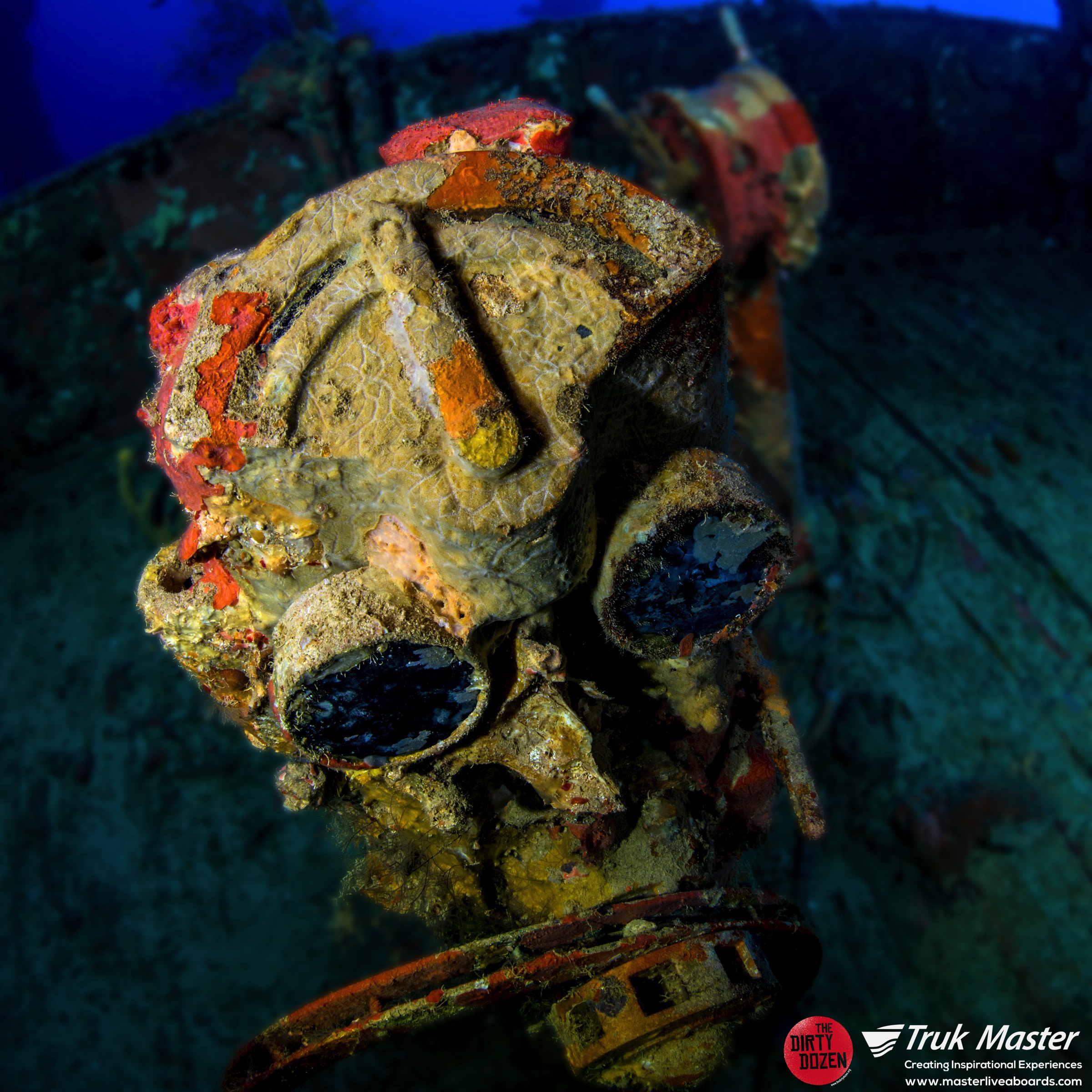
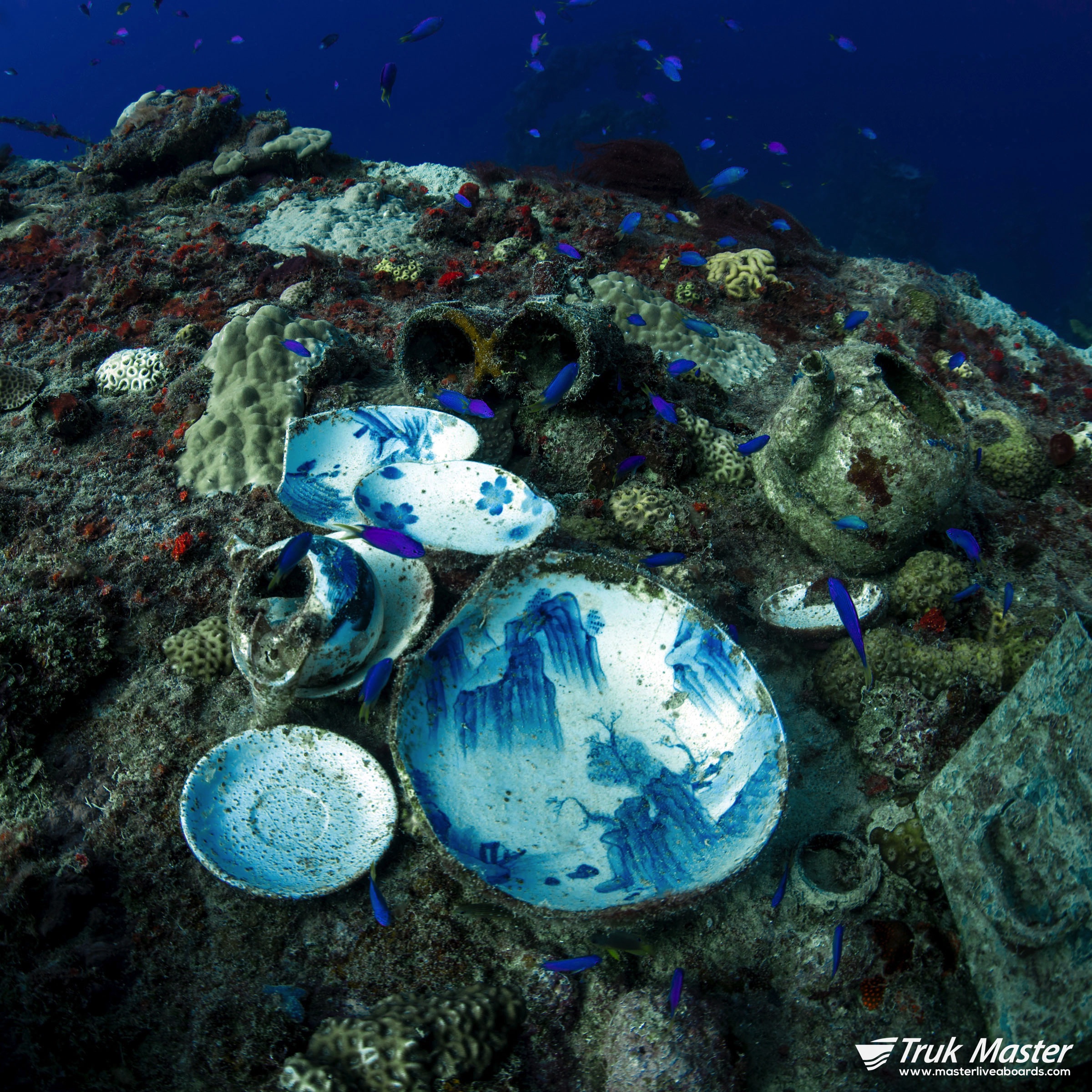
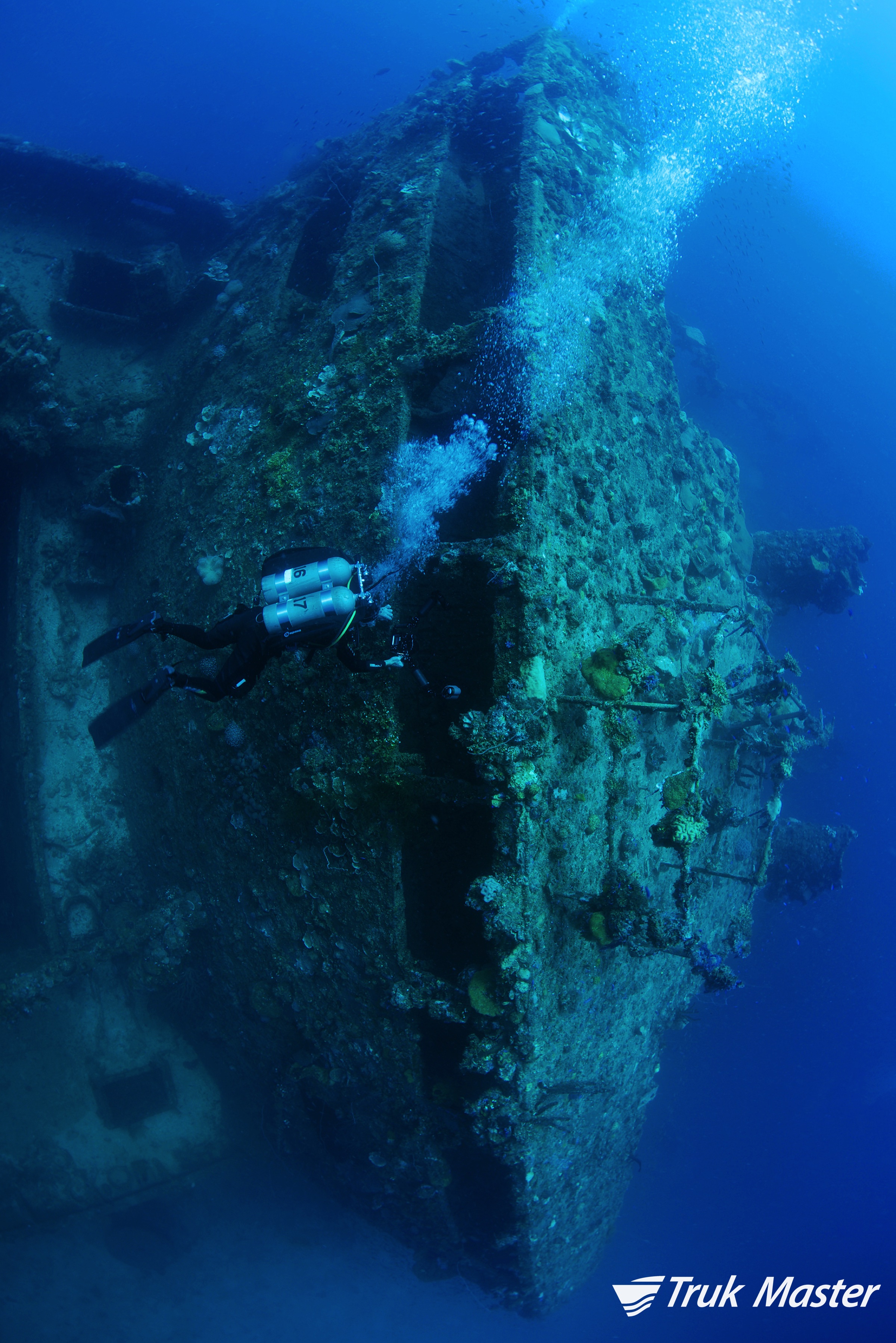

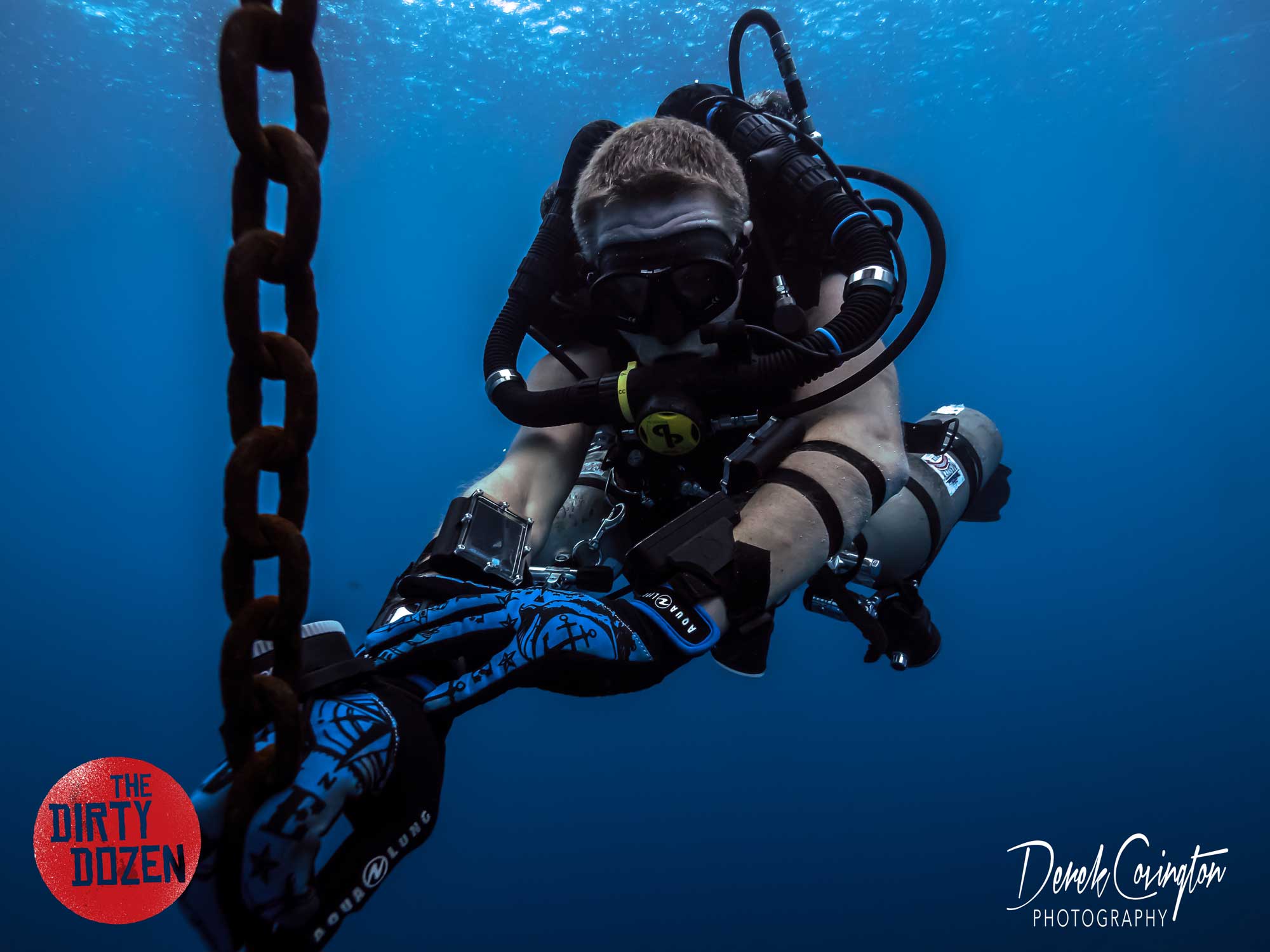
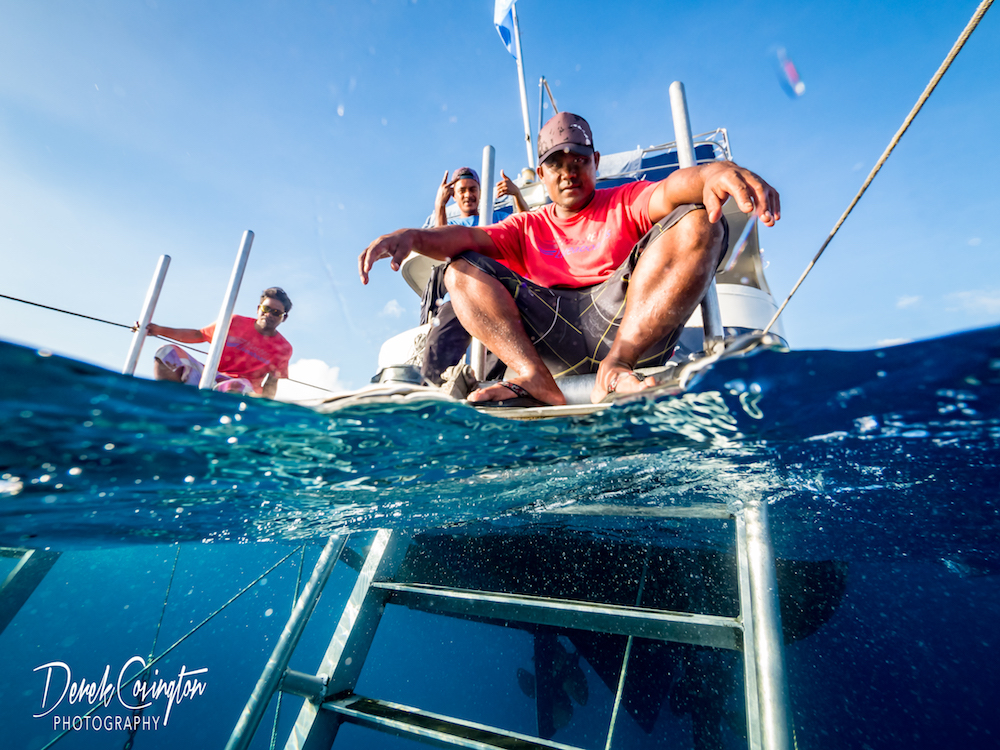
Rio De Janeiro Maru
The Rio was a large eight-deck liner that was converted into a submarine tender in the early part of the war, before being converted a second time into a special transport vessel. Massive fires burned in the fore part of the ship before she sank causing the shells there to explode from the inside. The intense heat greatly weakened the bow section which is now starting to collapse. In her rear holds are hundreds of beer bottles, some still in their cases. The stern of the Rio has an impressive gun set on a large platform, docking telegraph and two photogenic propellers set between a single rudder.
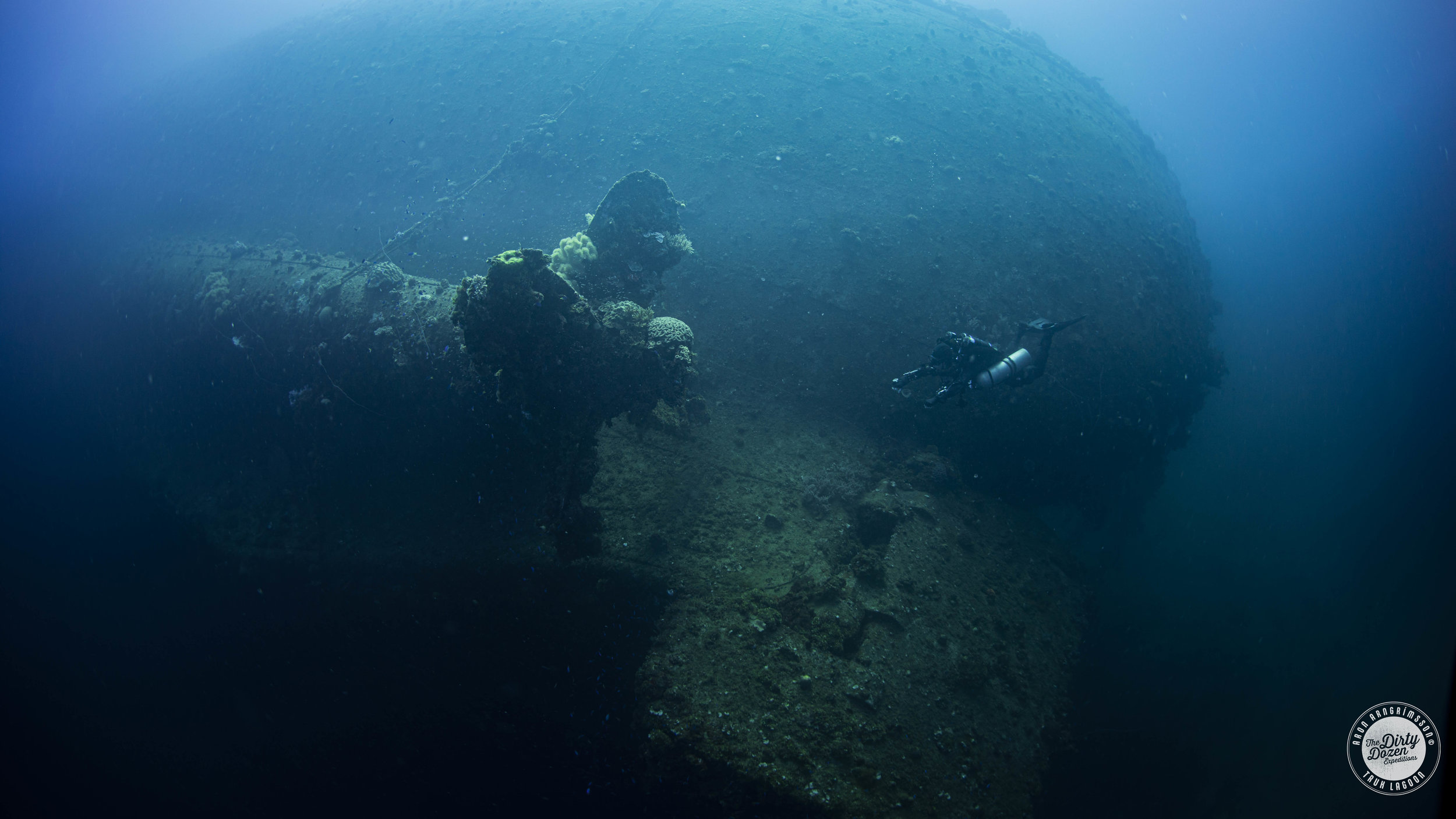

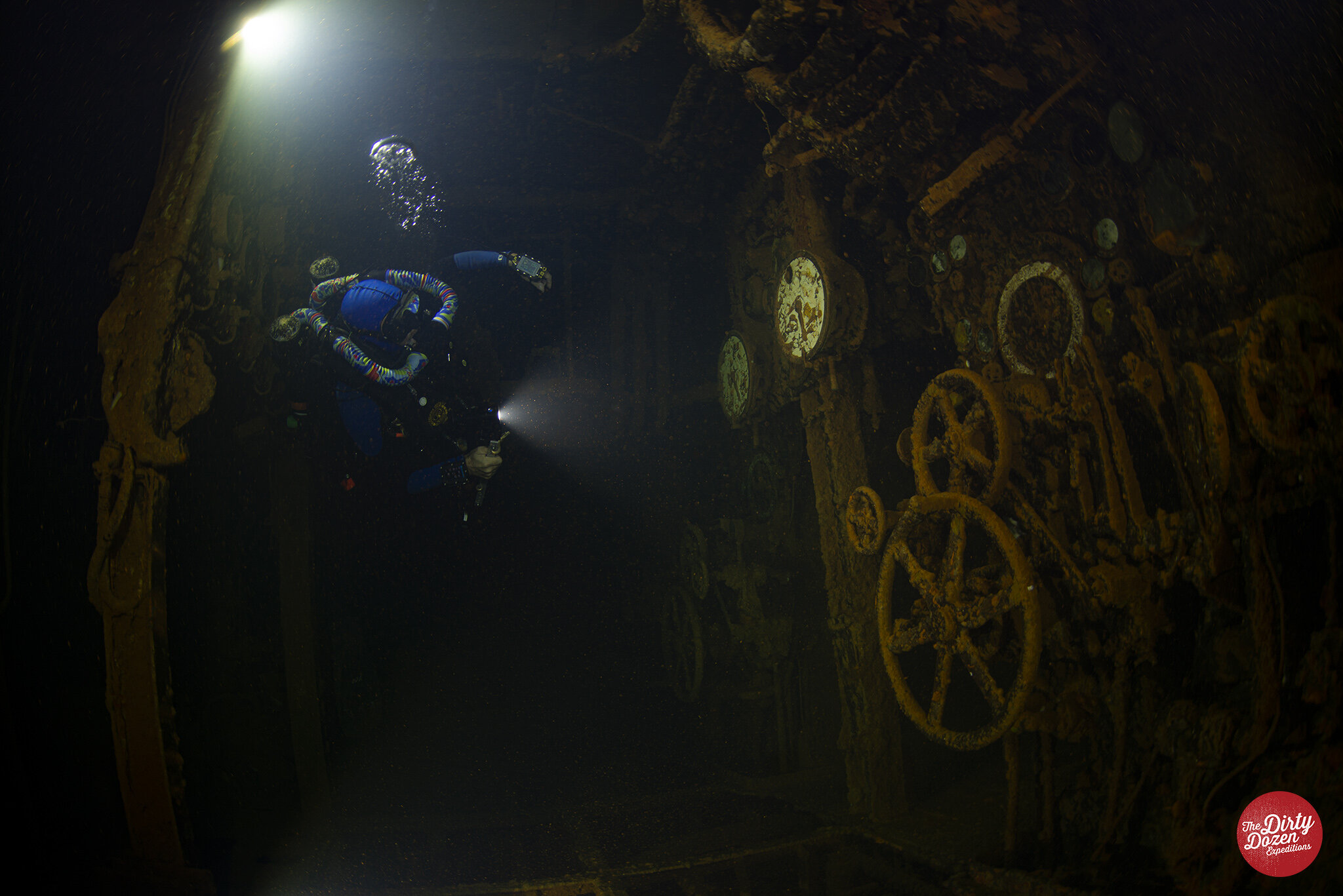
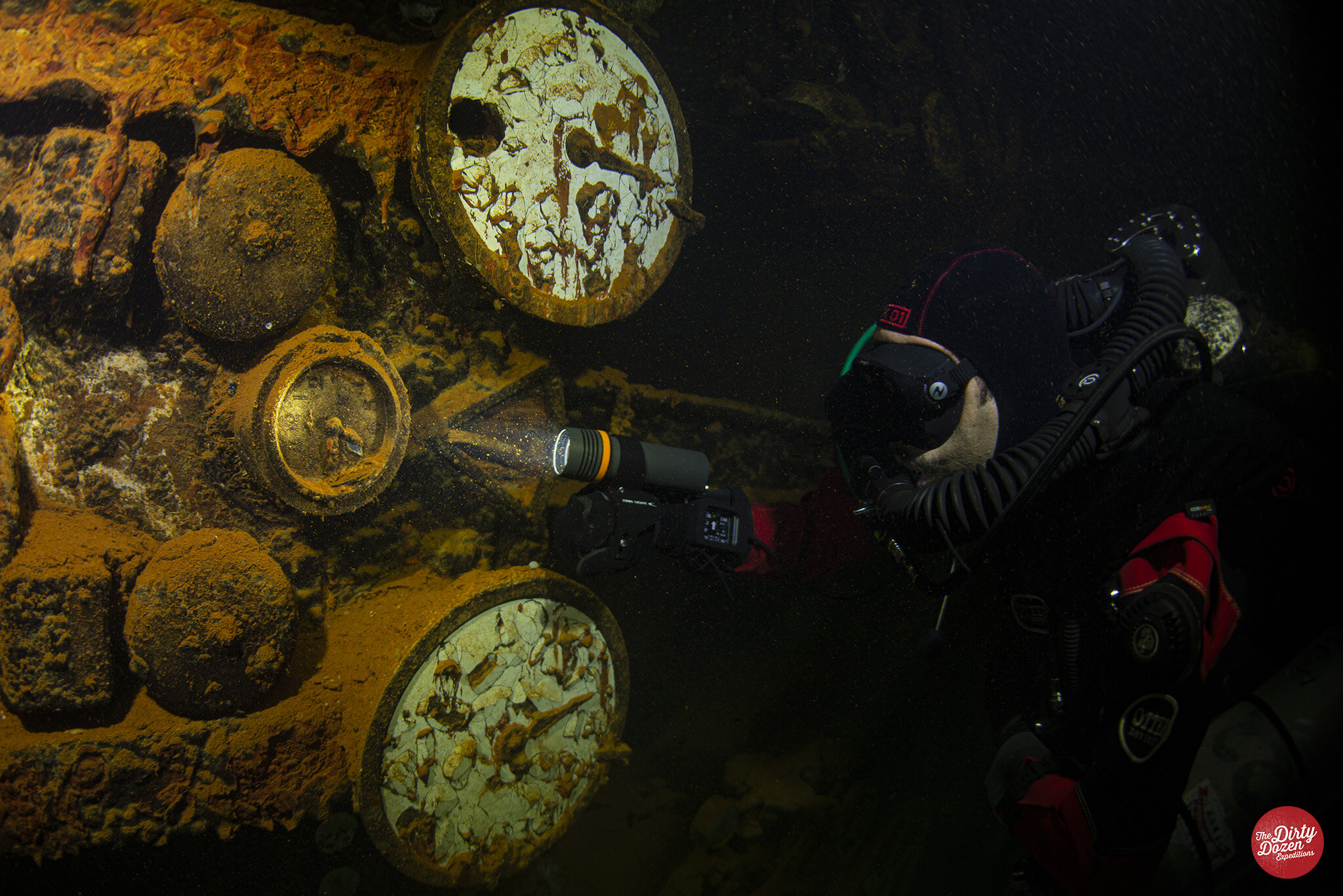
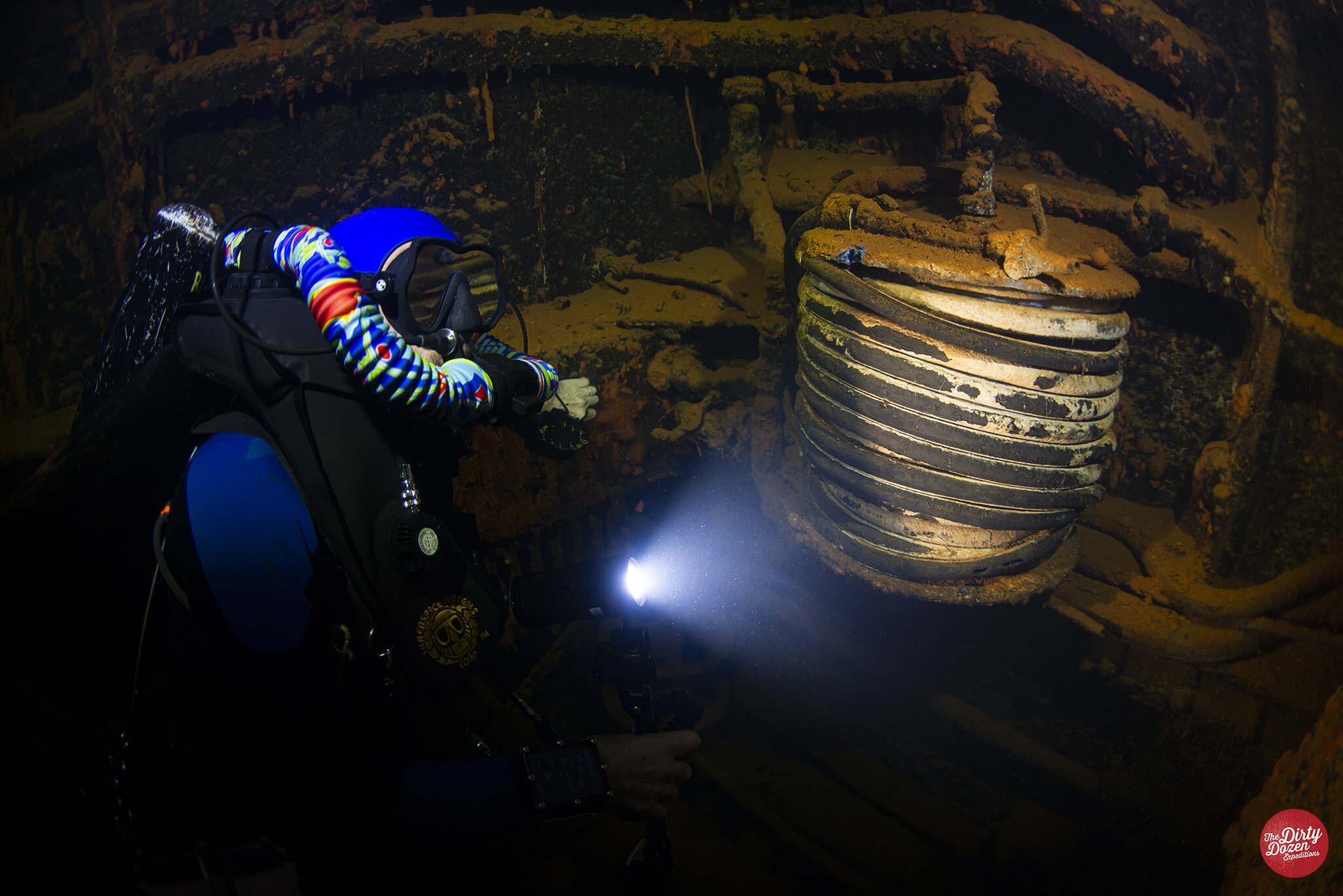
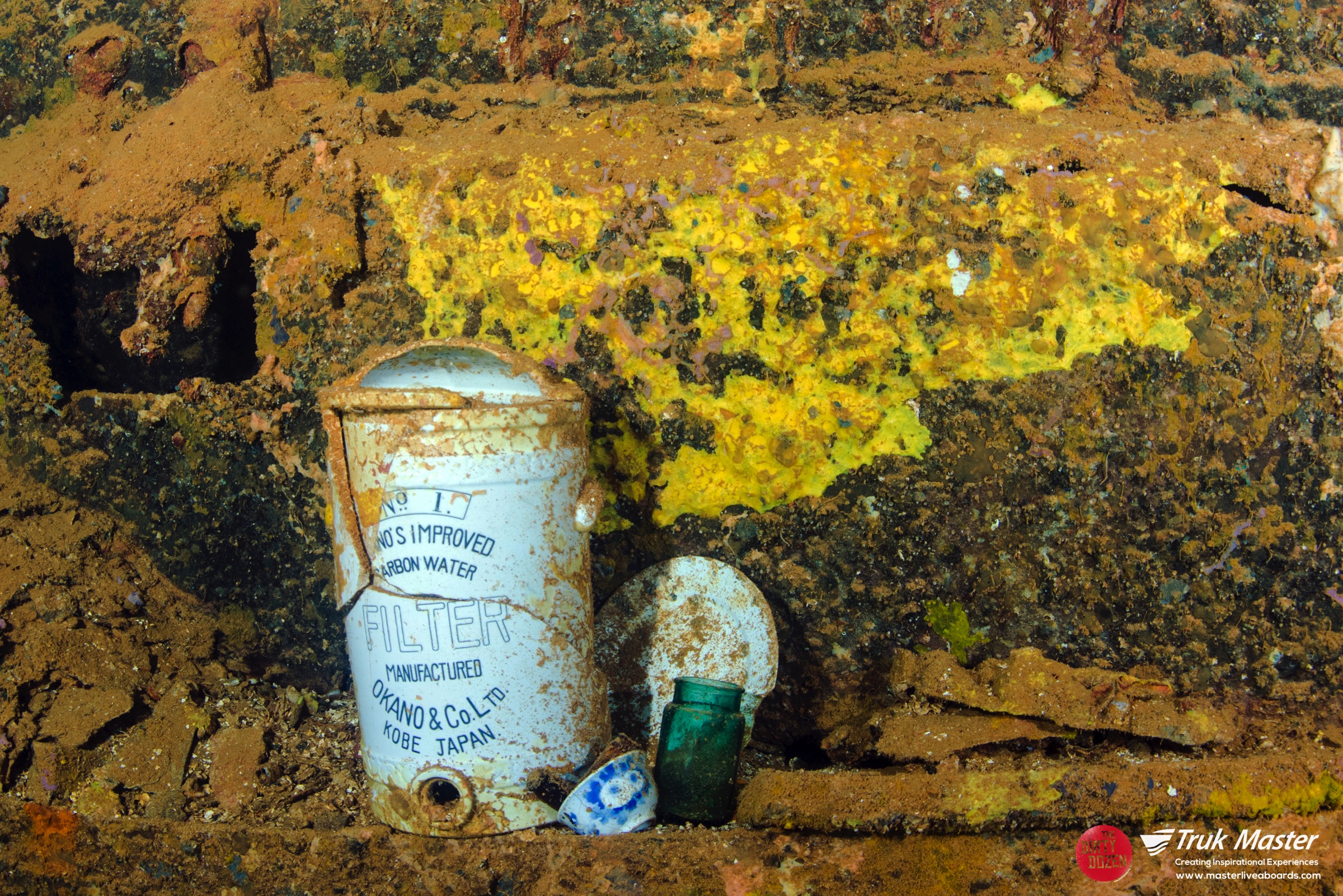
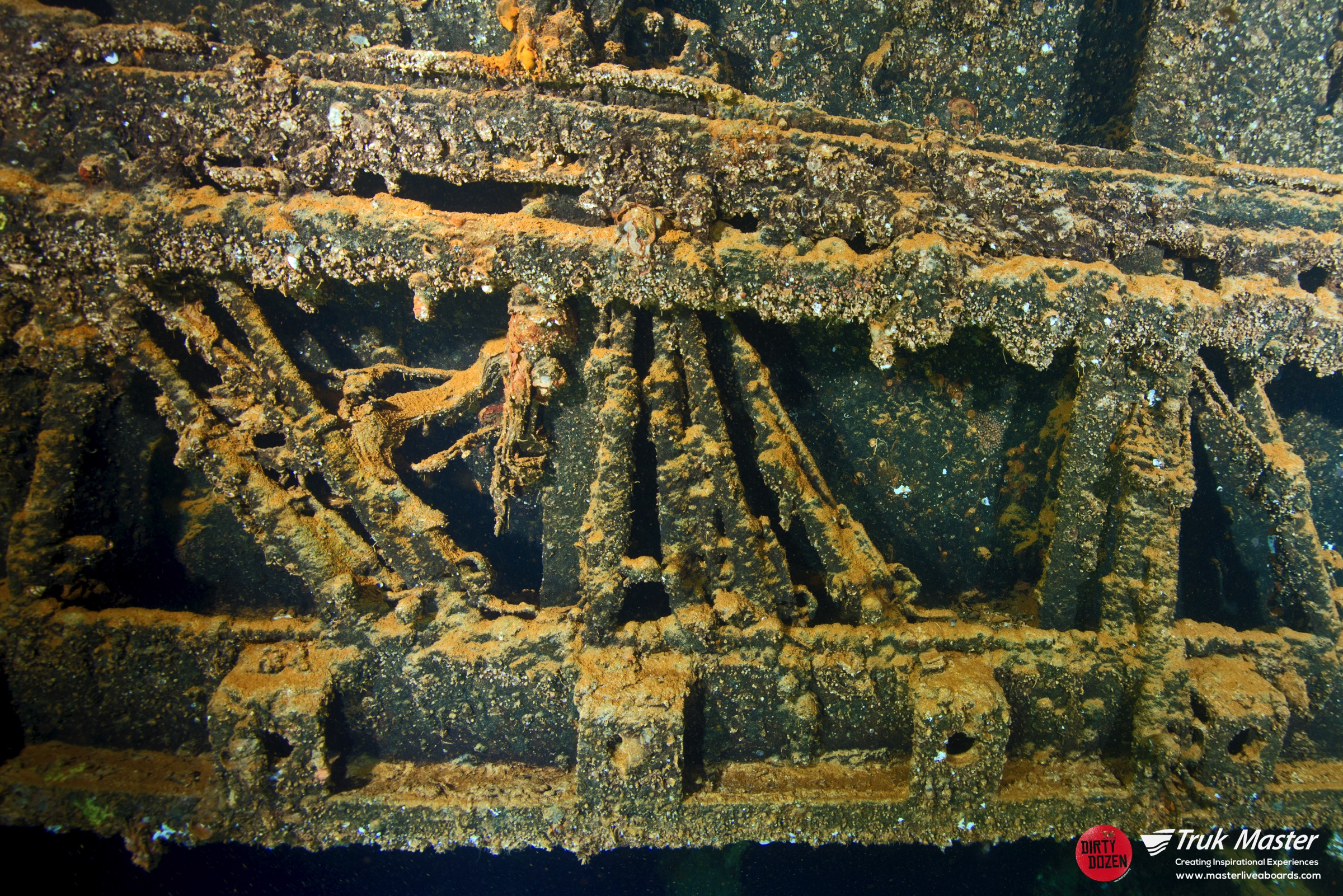
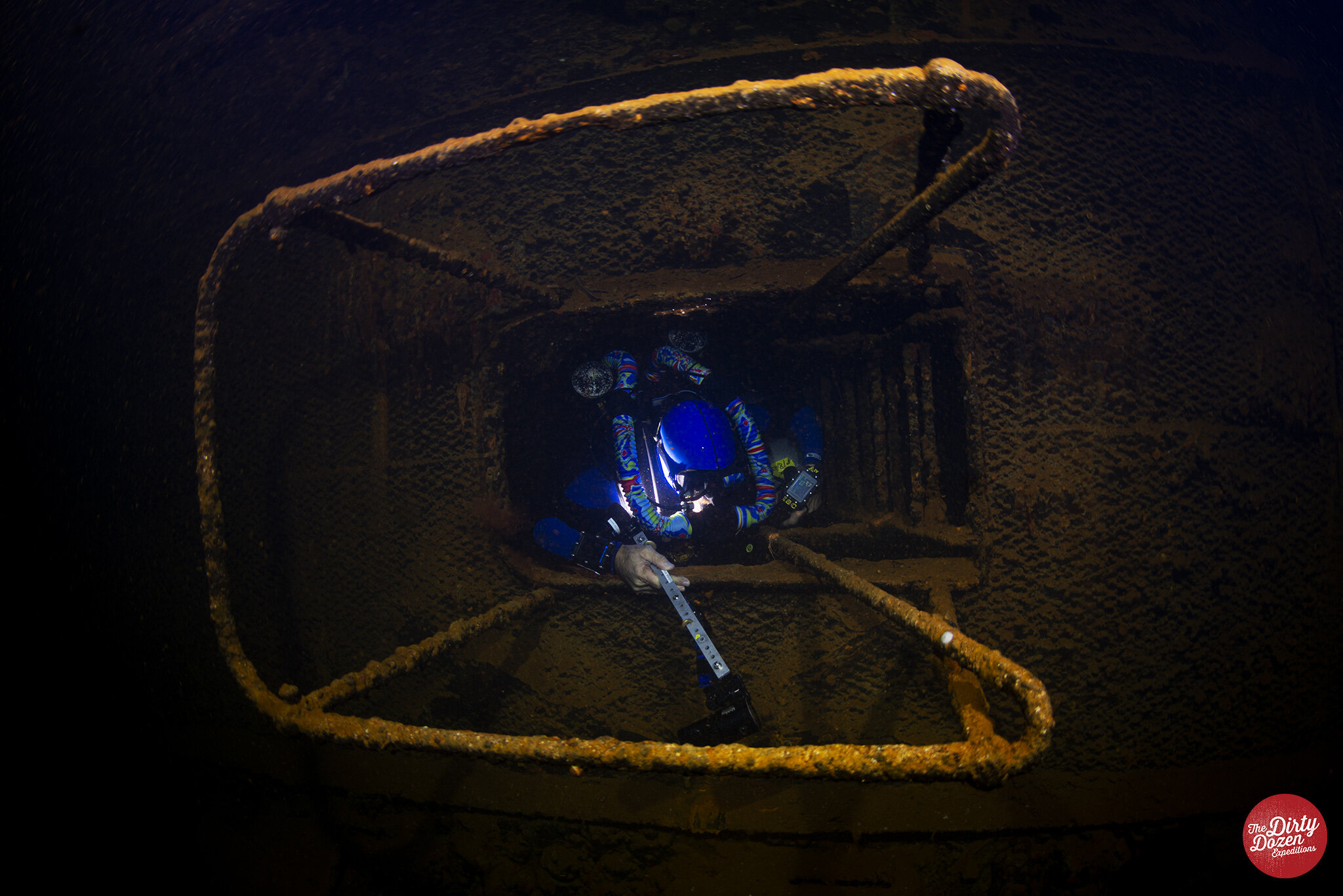

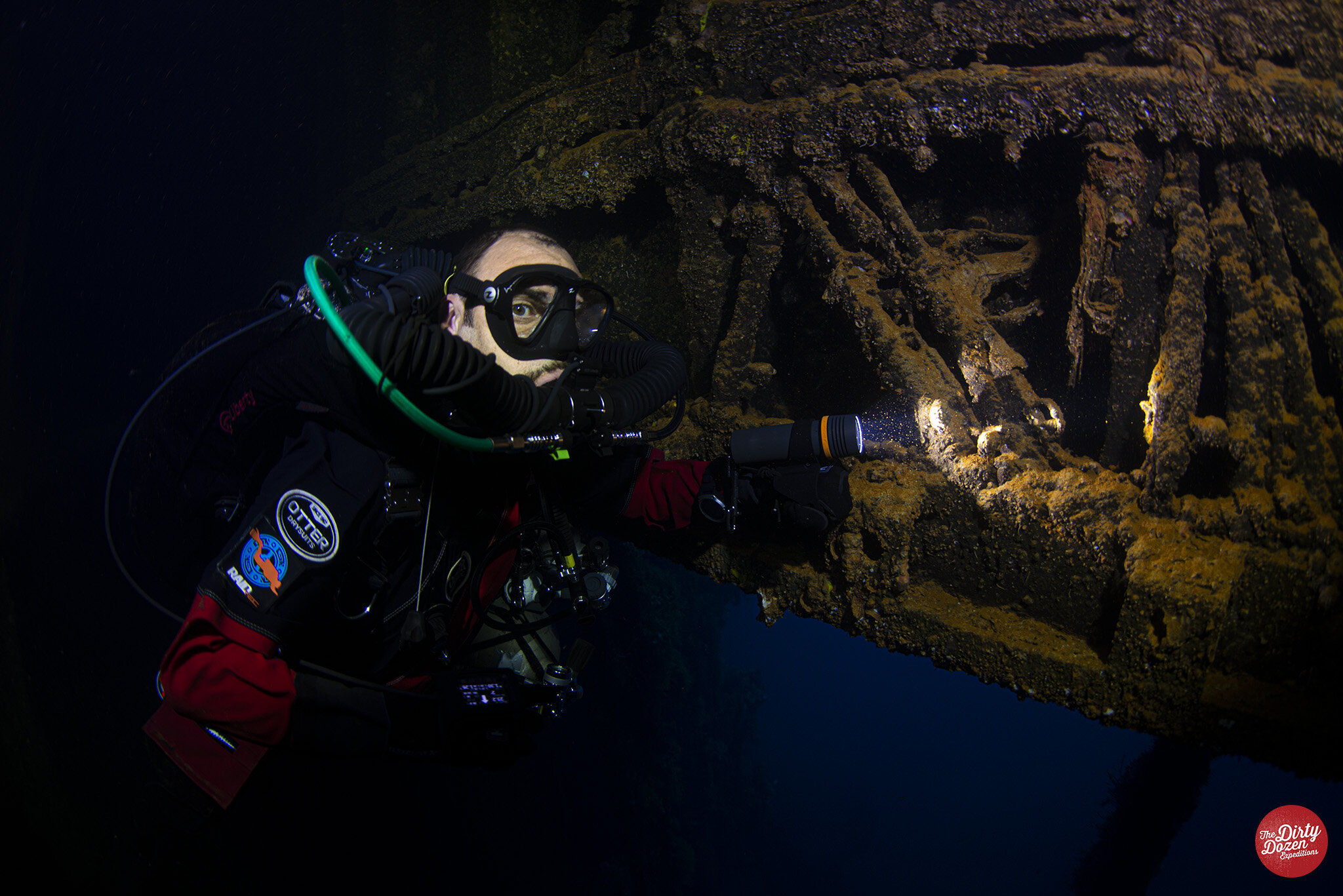
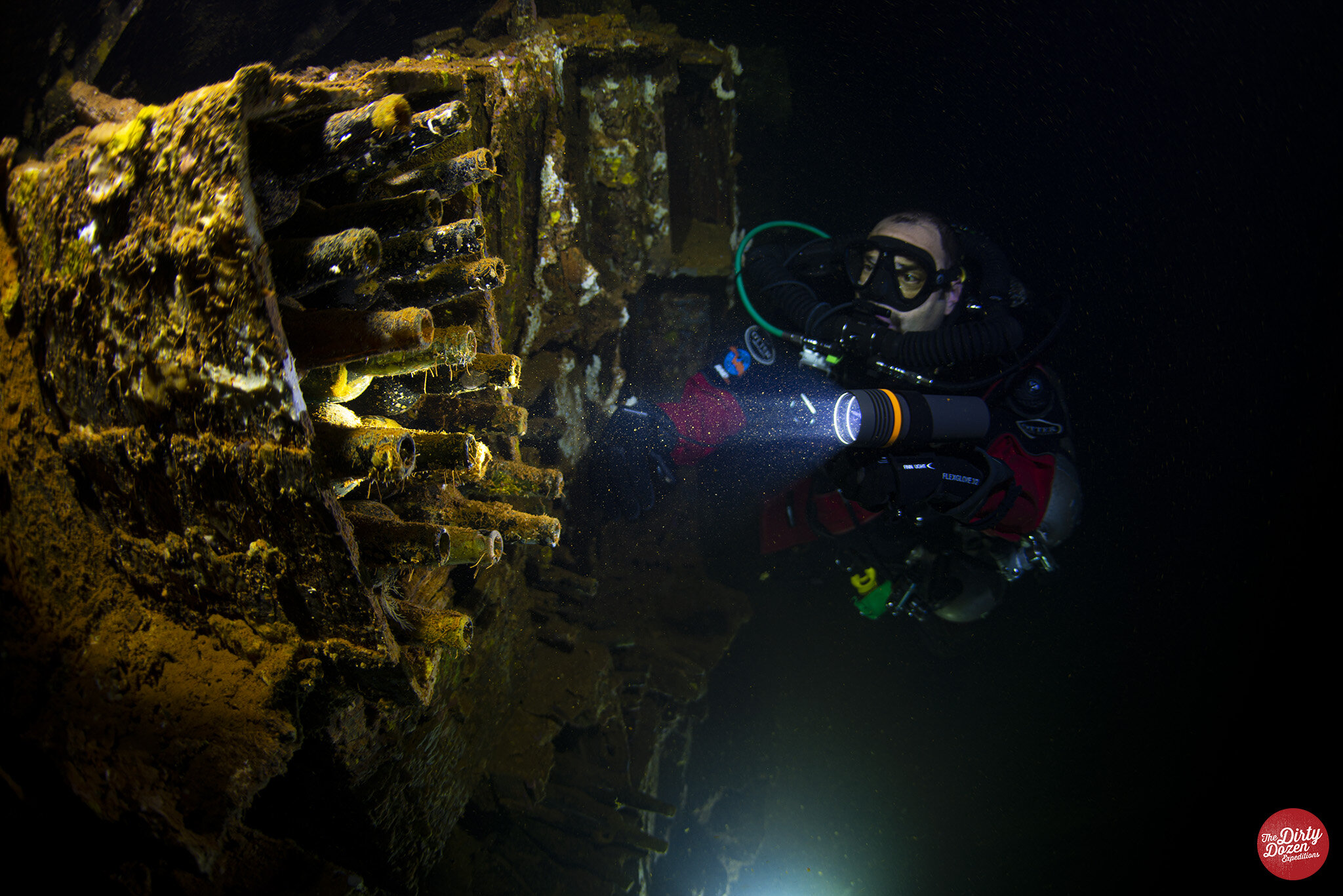
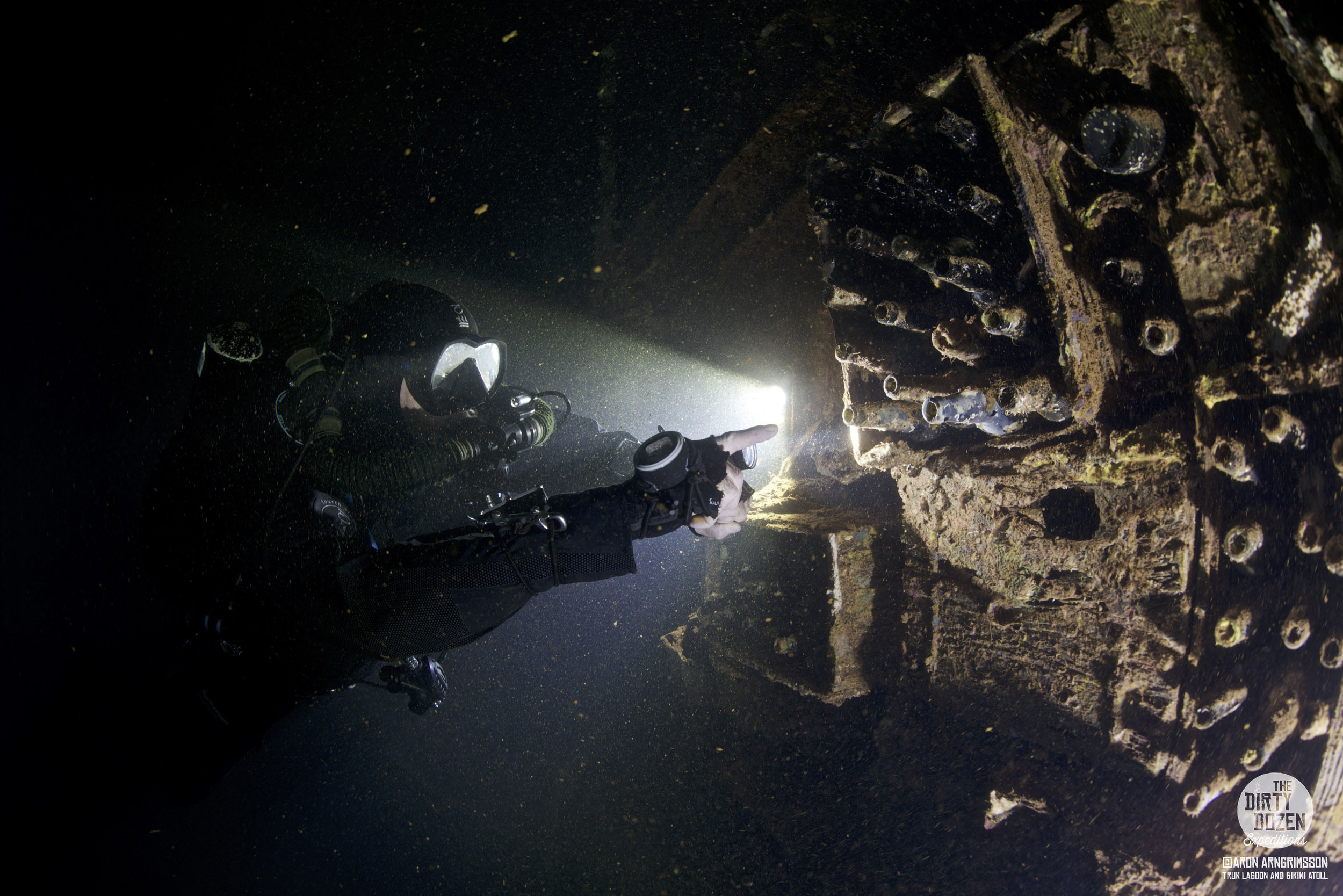
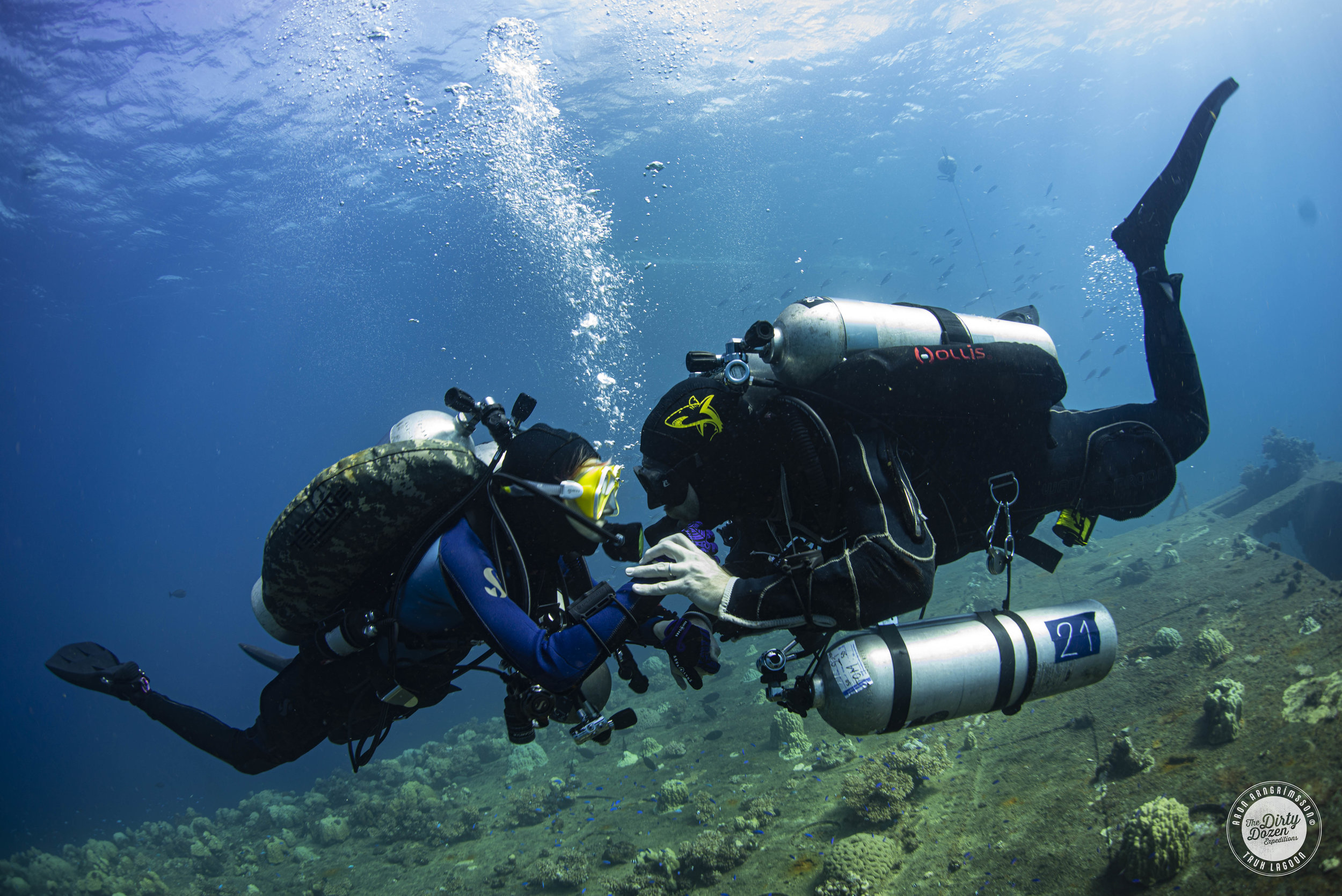
Sankisan maru
A massive explosion totally destroyed the aft part of the Sankisan apart from the very stern, which was blown into deeper water. Now the propeller and rudder sit upright at 48m/157ft on the edge of a huge crater, which was caused by the explosion around 100m/330ft away from the rest of the ship. The stern is rarely visited. Instead, divers concentrate on exploring the forward holds which contain thousands of bullets, truck chassis, machine guns, aircraft engines and lots of small medicine bottles. Some of the best soft corals in the lagoon are found on the decks and masts of the Sankisan.

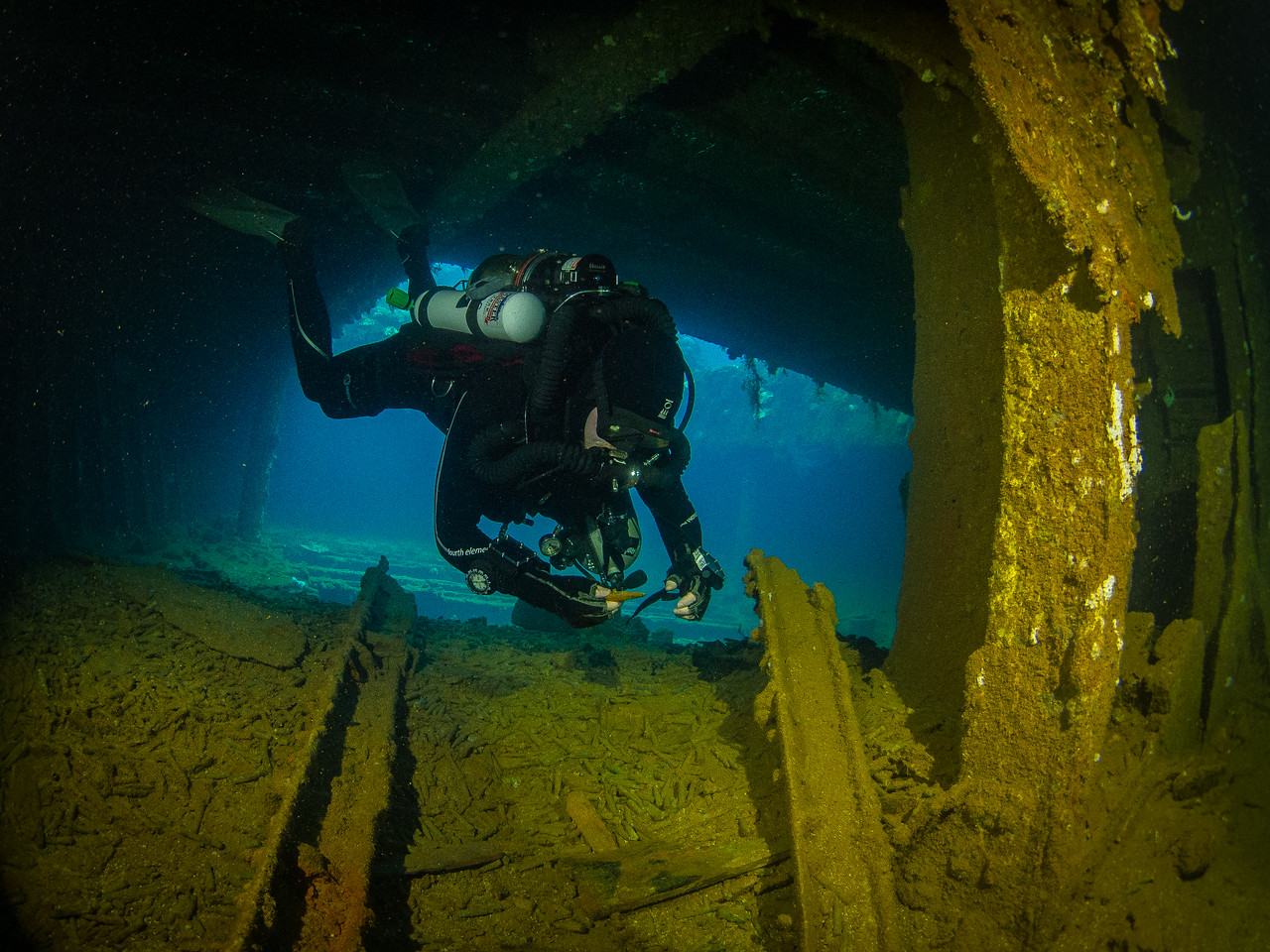
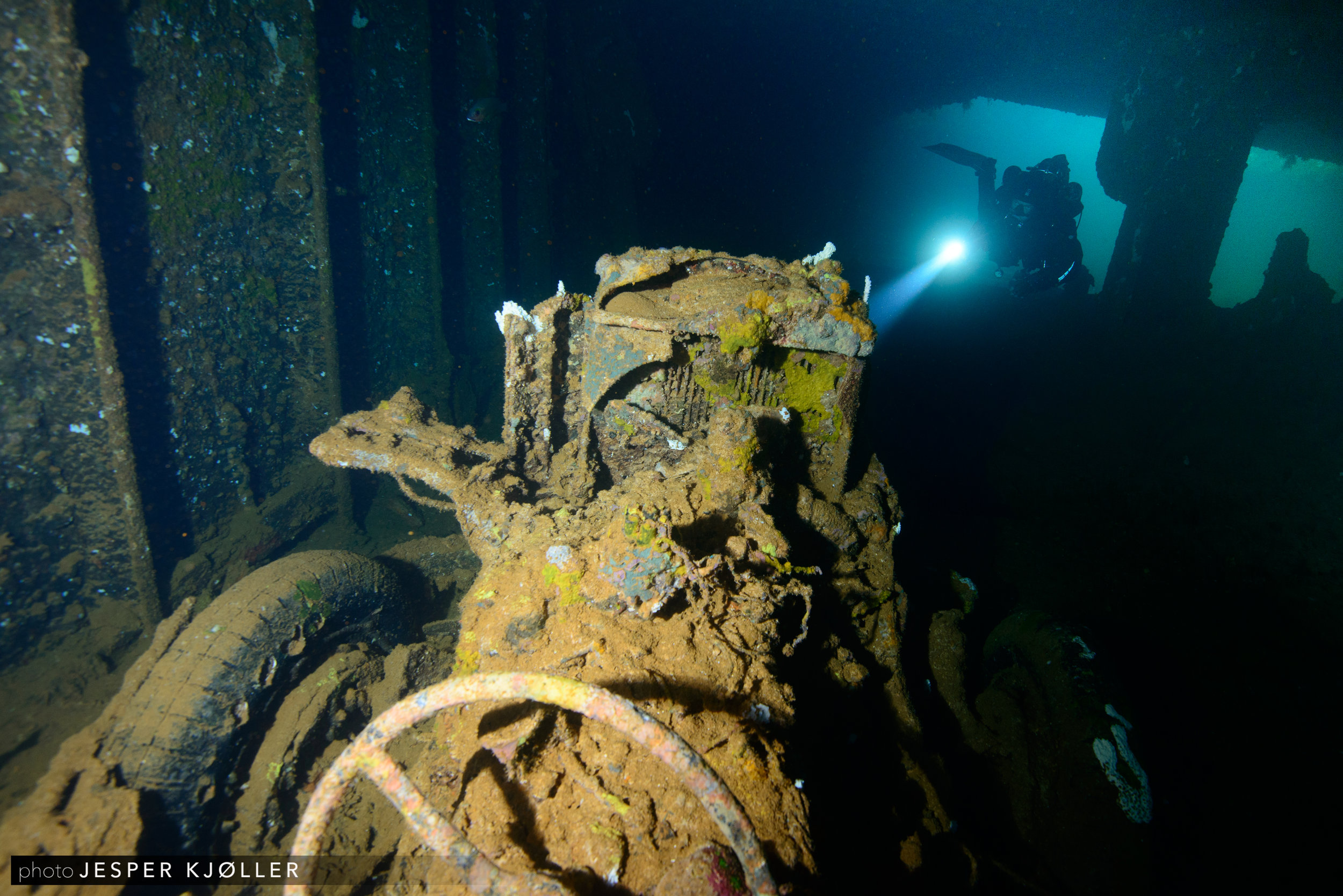
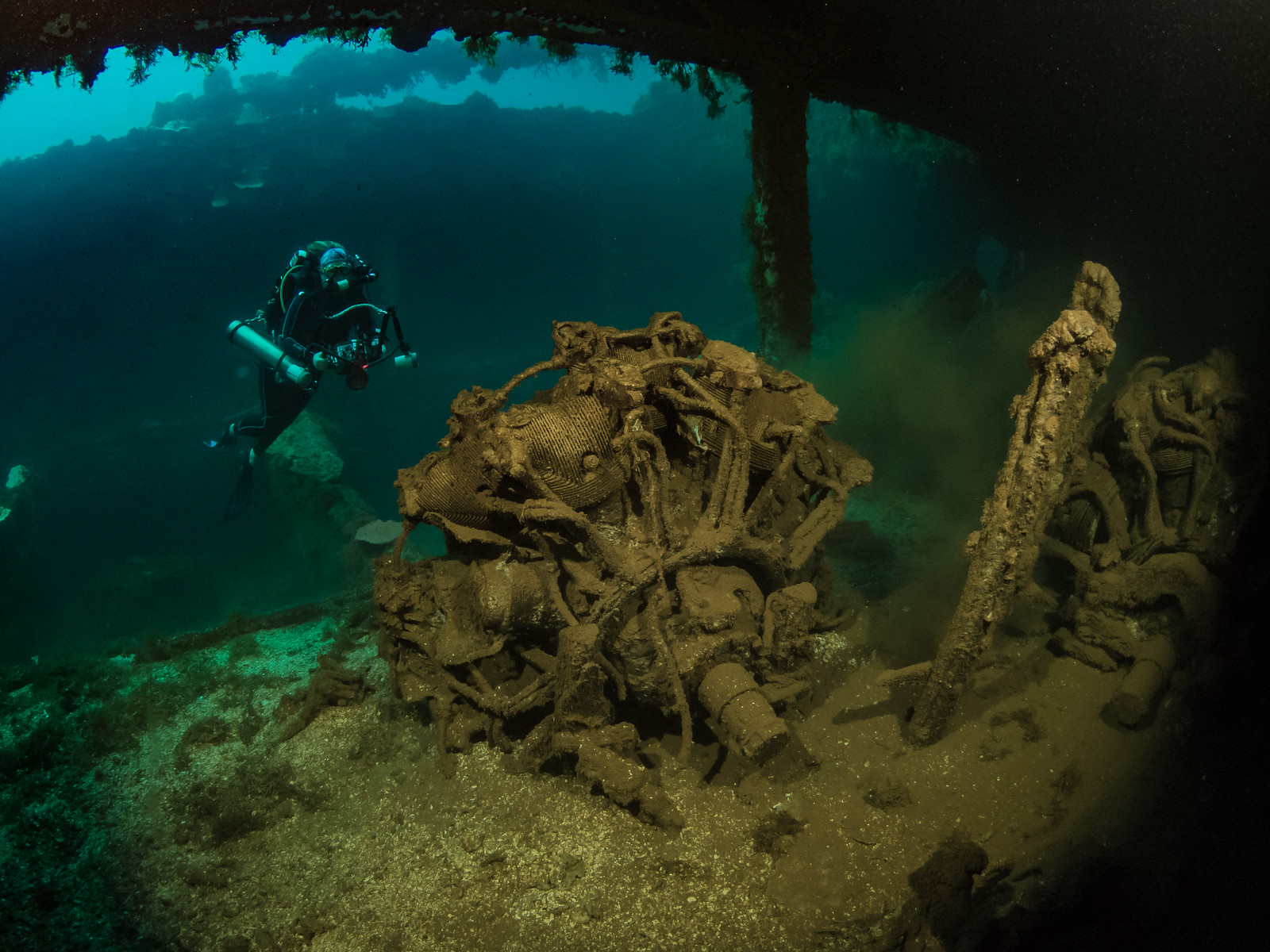
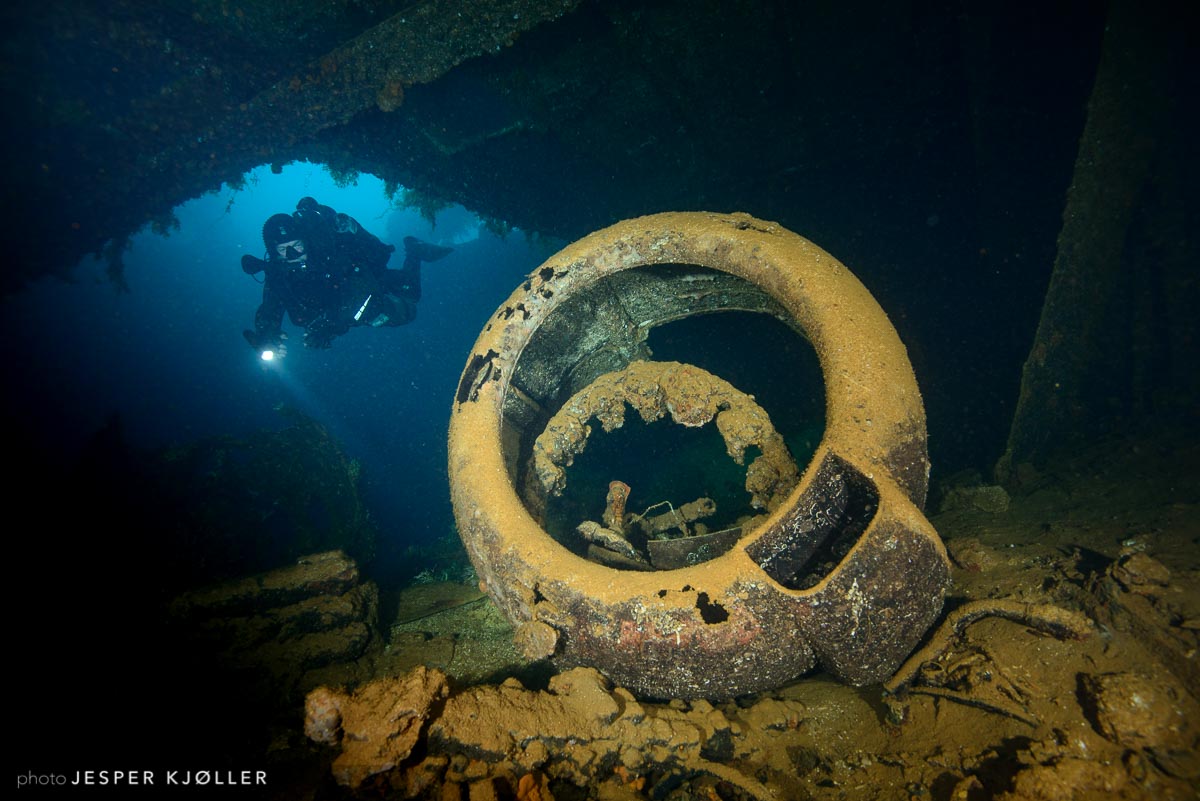
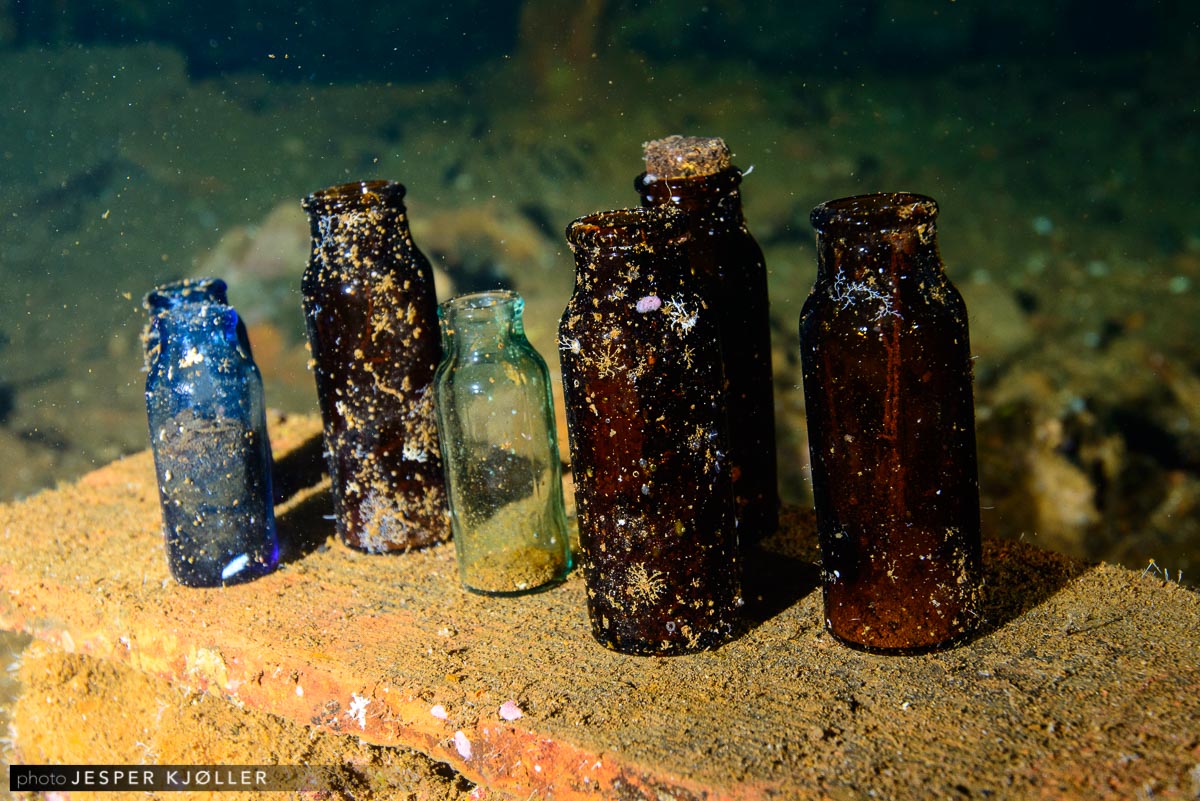
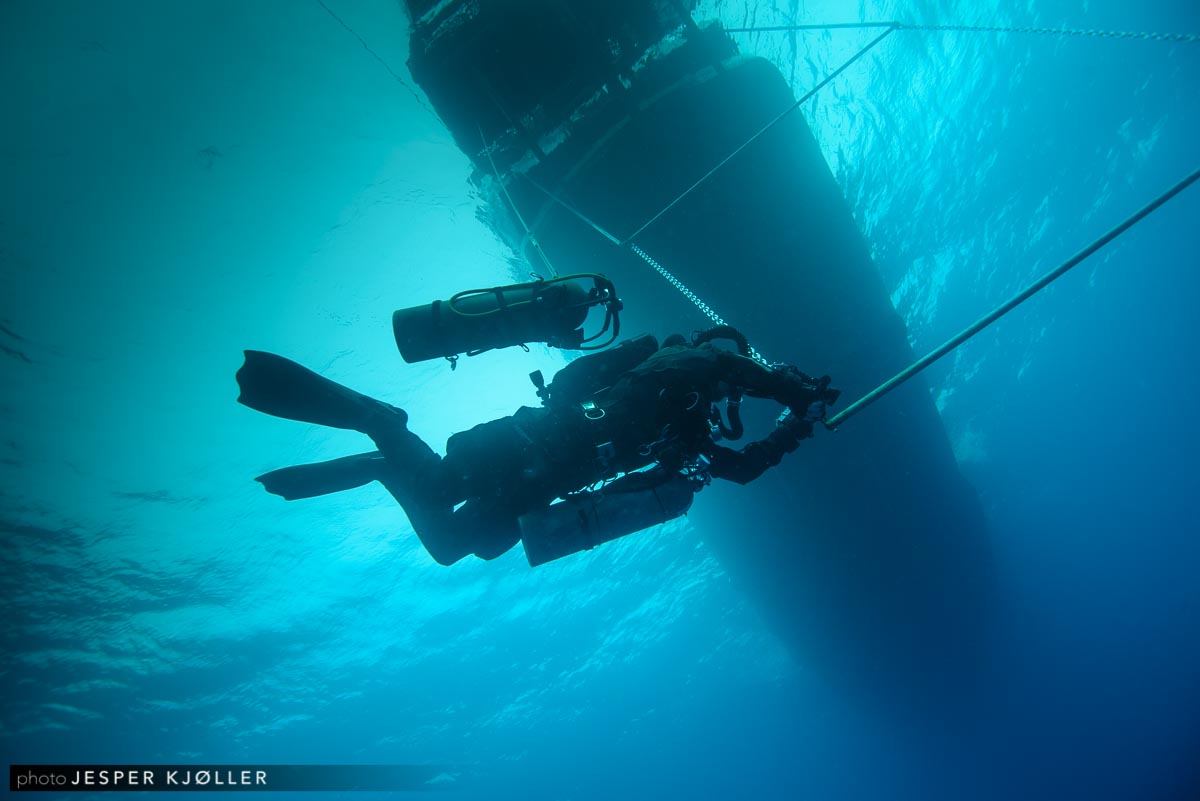
Seiko Maru
The Seiko is an aft-engine cargo ship that has a small field gun on the bow and a number of long lance torpedoes in the forward hold. In the aft holds there is a variety of construction equipment and lumber. It’s possible to enter the engine room through the skylights and exit through the torpedo hole at the stern. The main superstructure contains many artifacts including bottles, boots, and china. The ship’s steering binnacle and telegraph are still present on the open bridge.
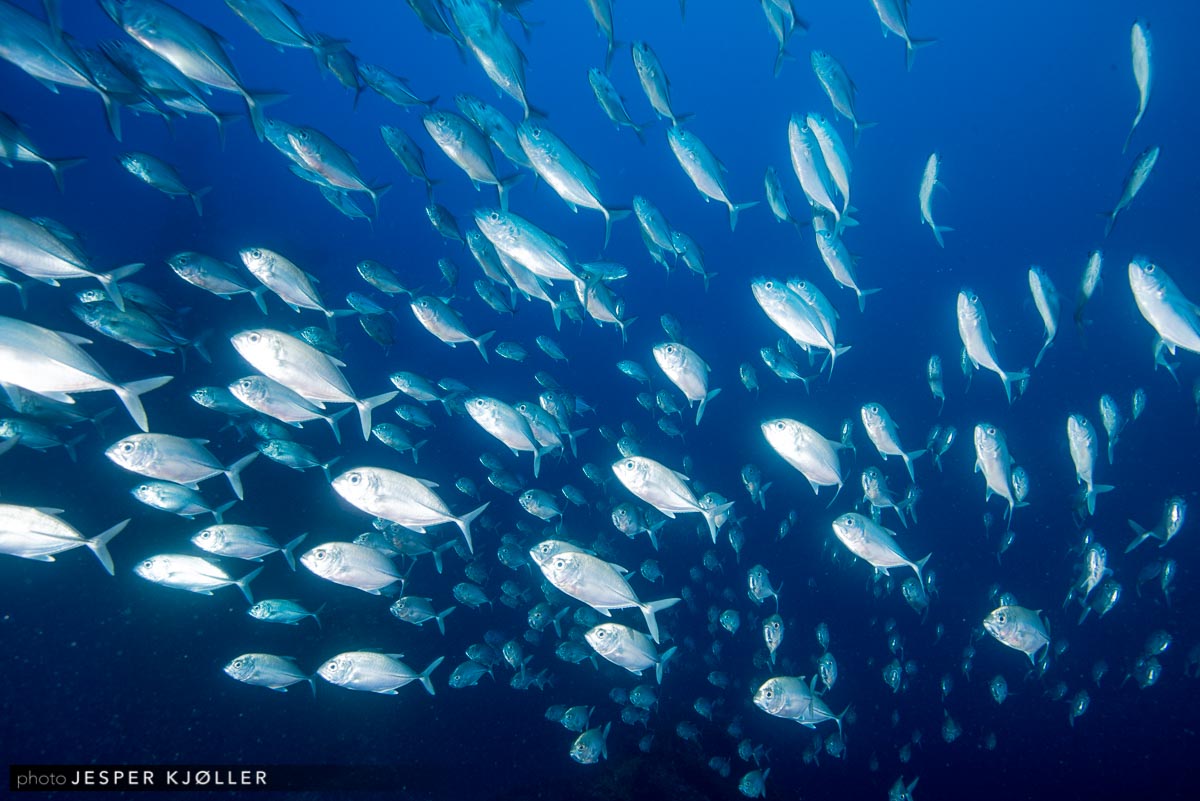
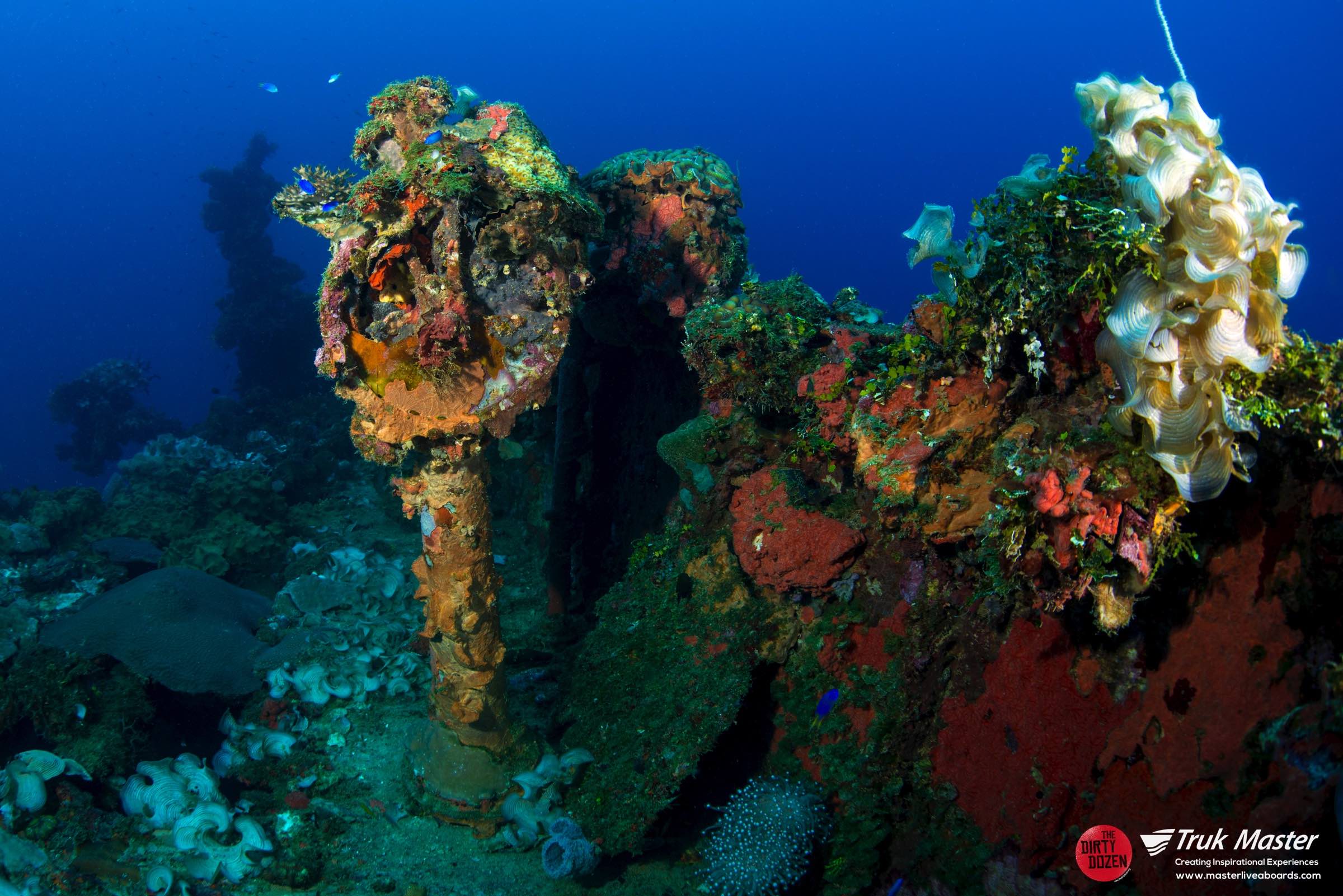
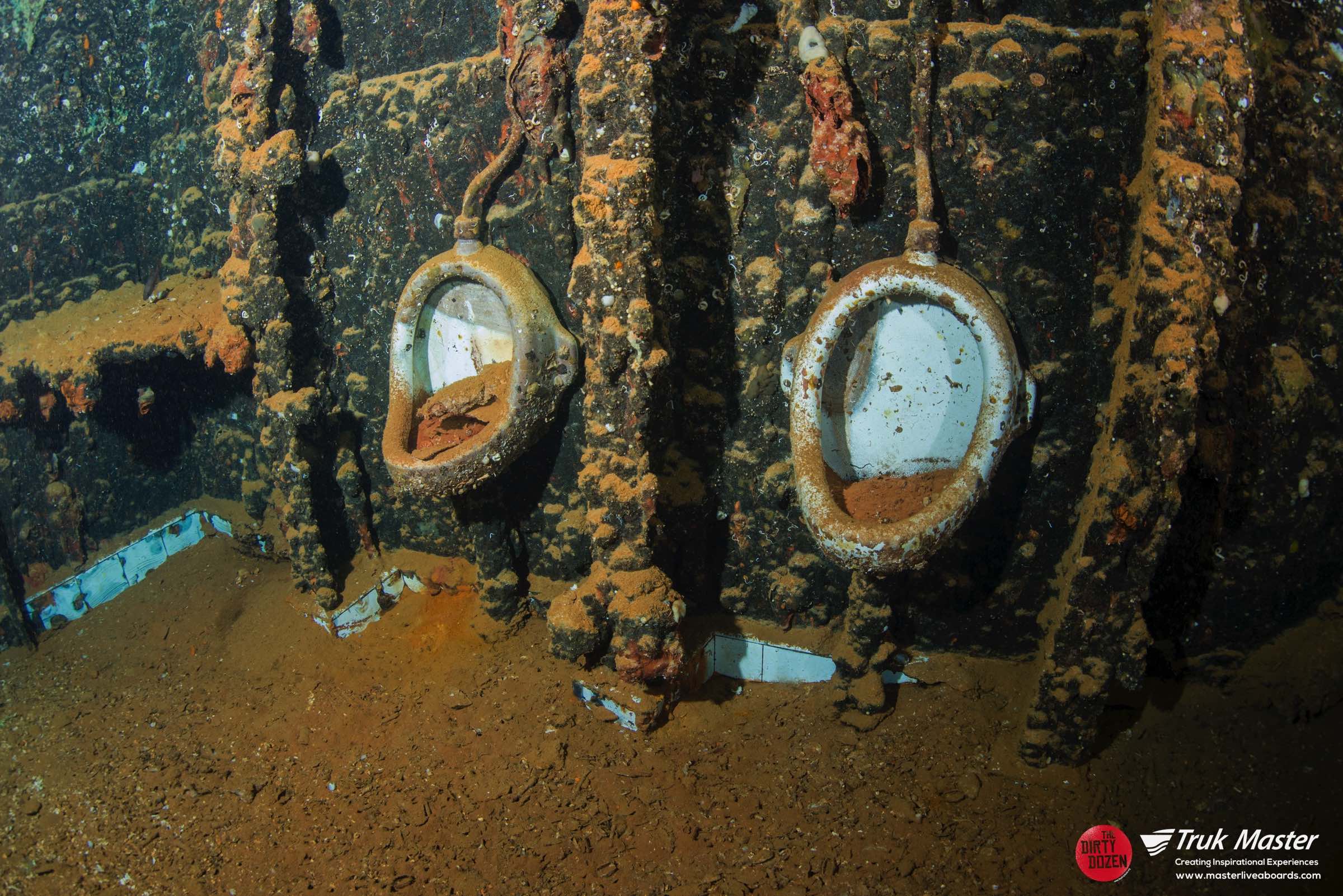
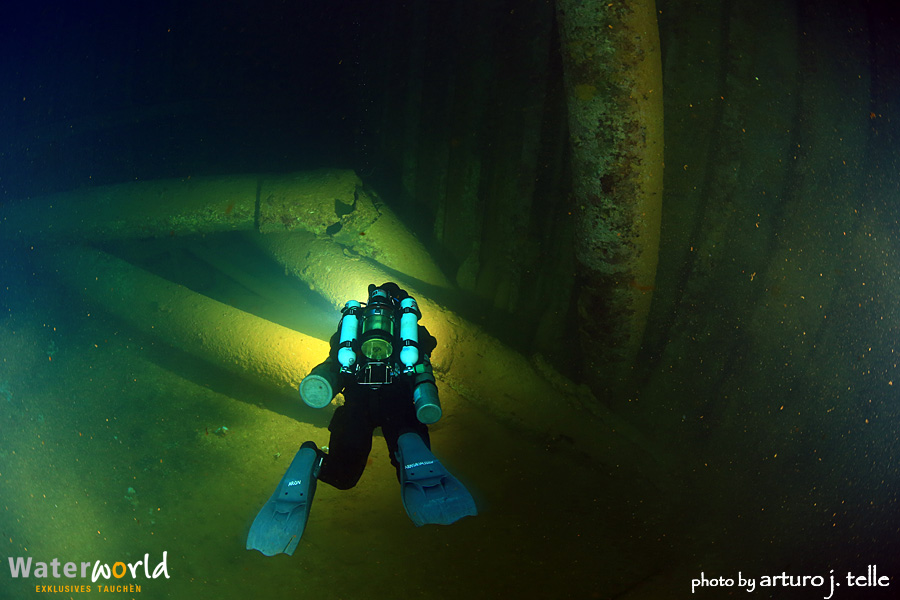
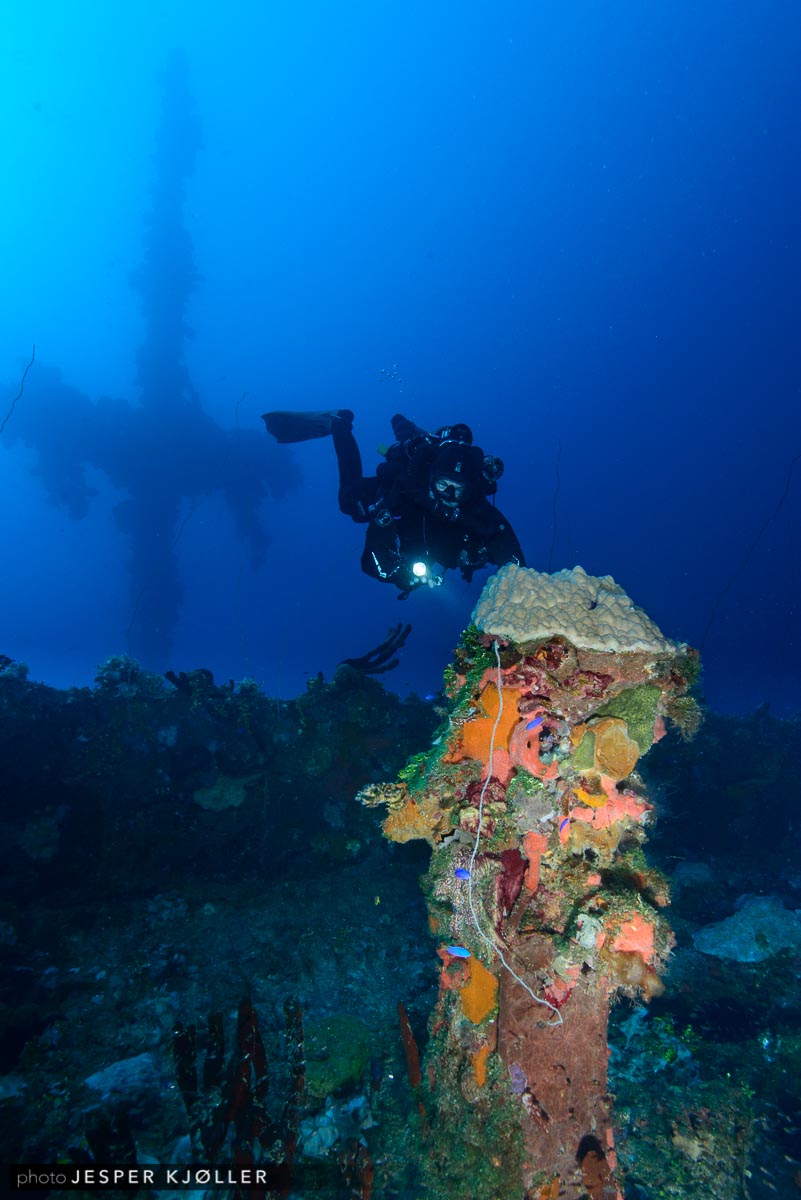
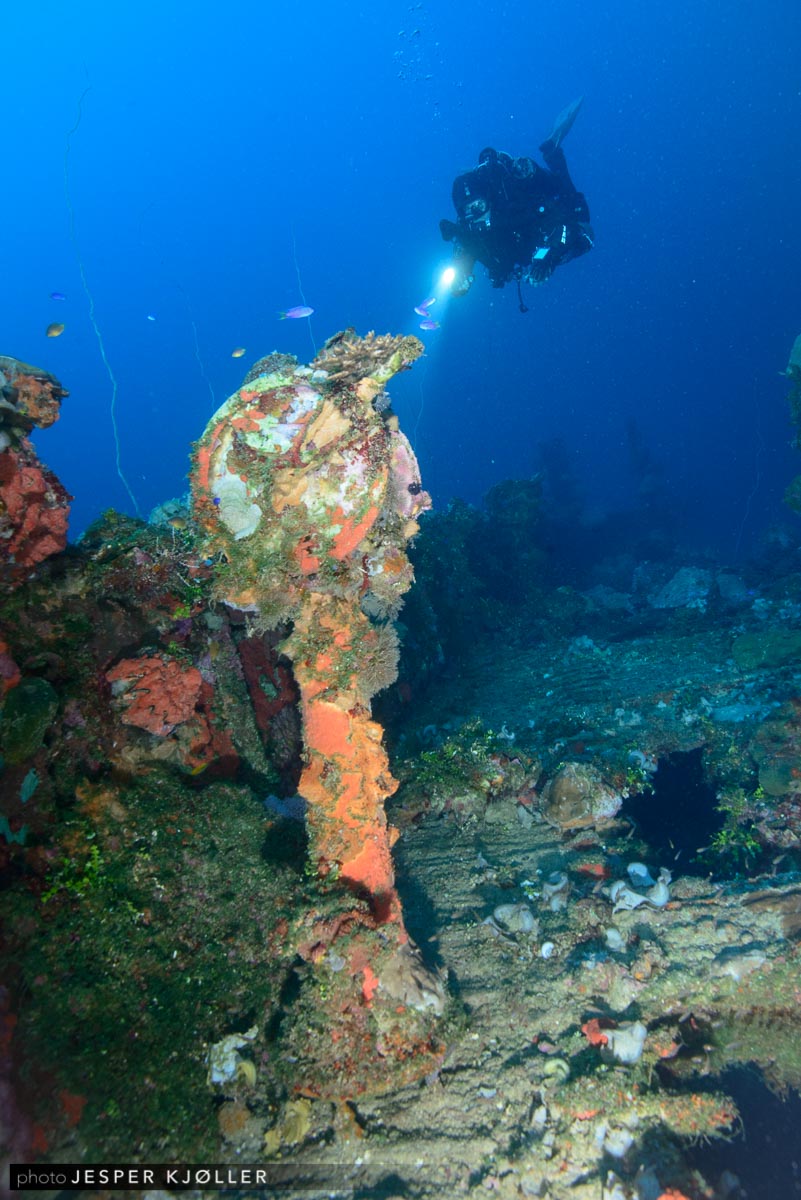
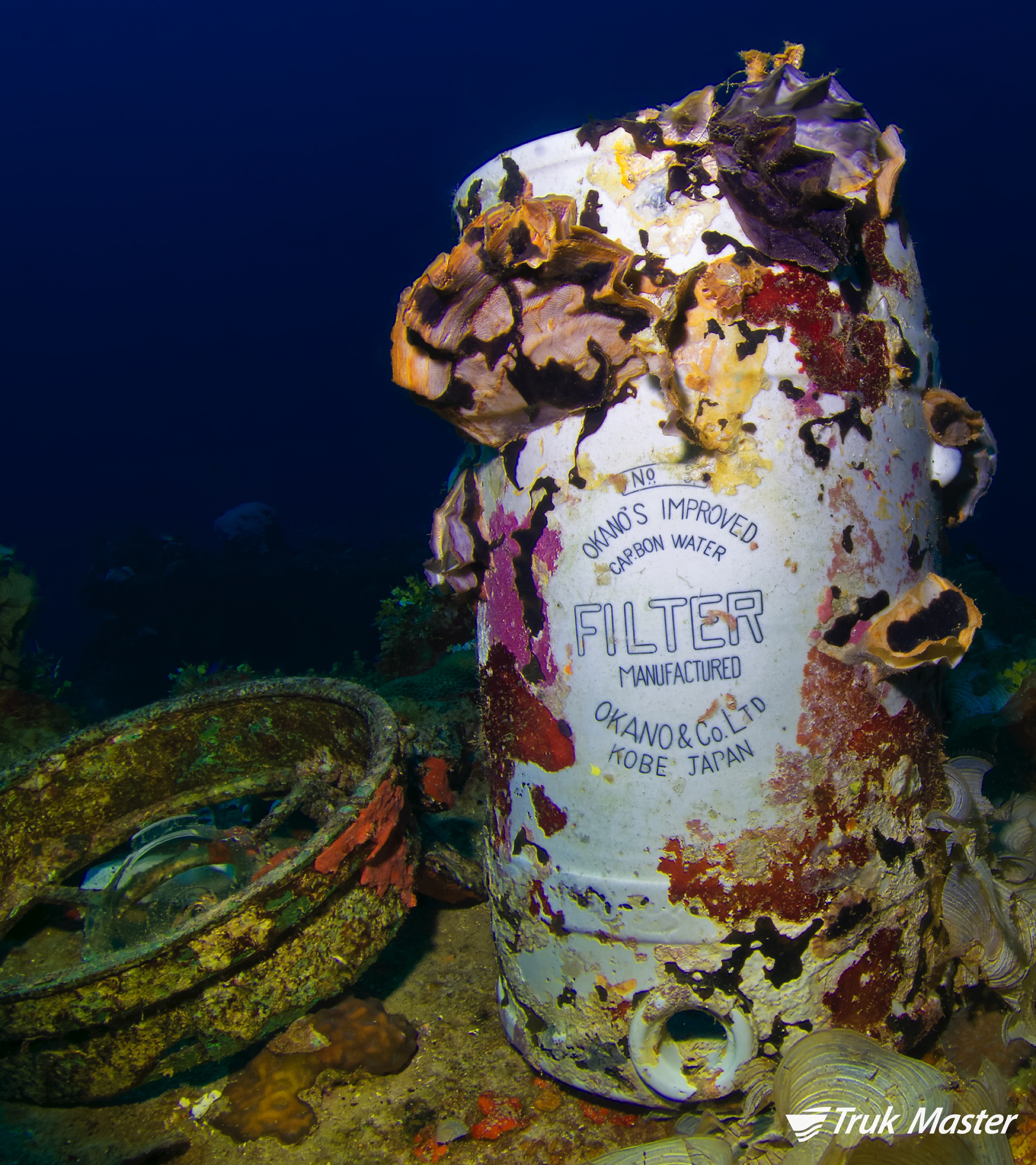
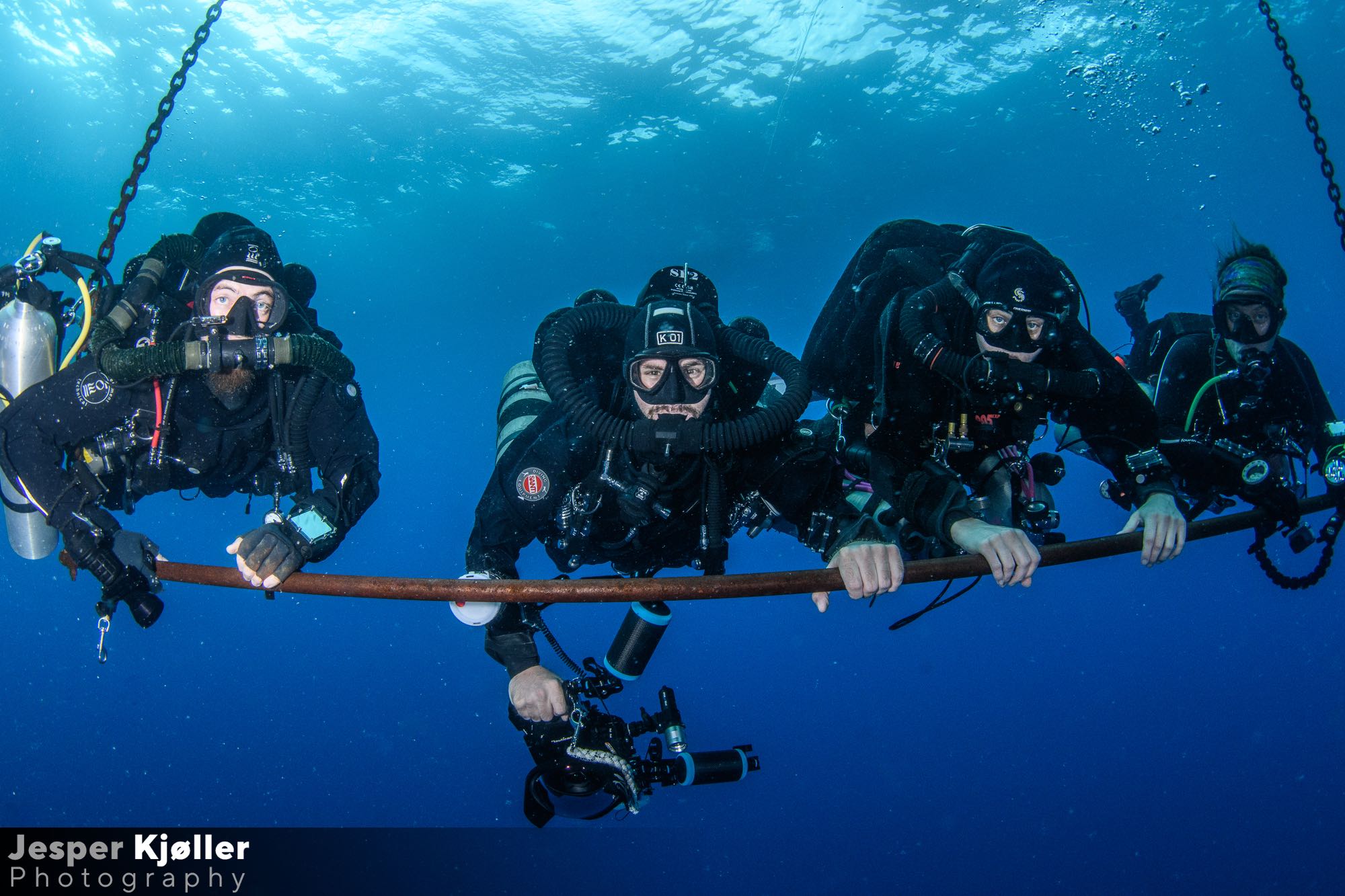
Shinkoku Maru
Amazing coral growth and lots of interesting marine life make this a stand-out wreck dive in Truk Lagoon. The large engine room is accessible through a torpedo hole on the port side. Both bow and stern guns are intact and heavily encrusted with life. Inside the superstructure is the sickbay, complete with an operating table. Elsewhere there are accommodation spaces with tiled baths, a galley, and lots of fueling hoses. There are three telegraphs in the remains of the bridge and piles of artifacts lay scattered around the decks.
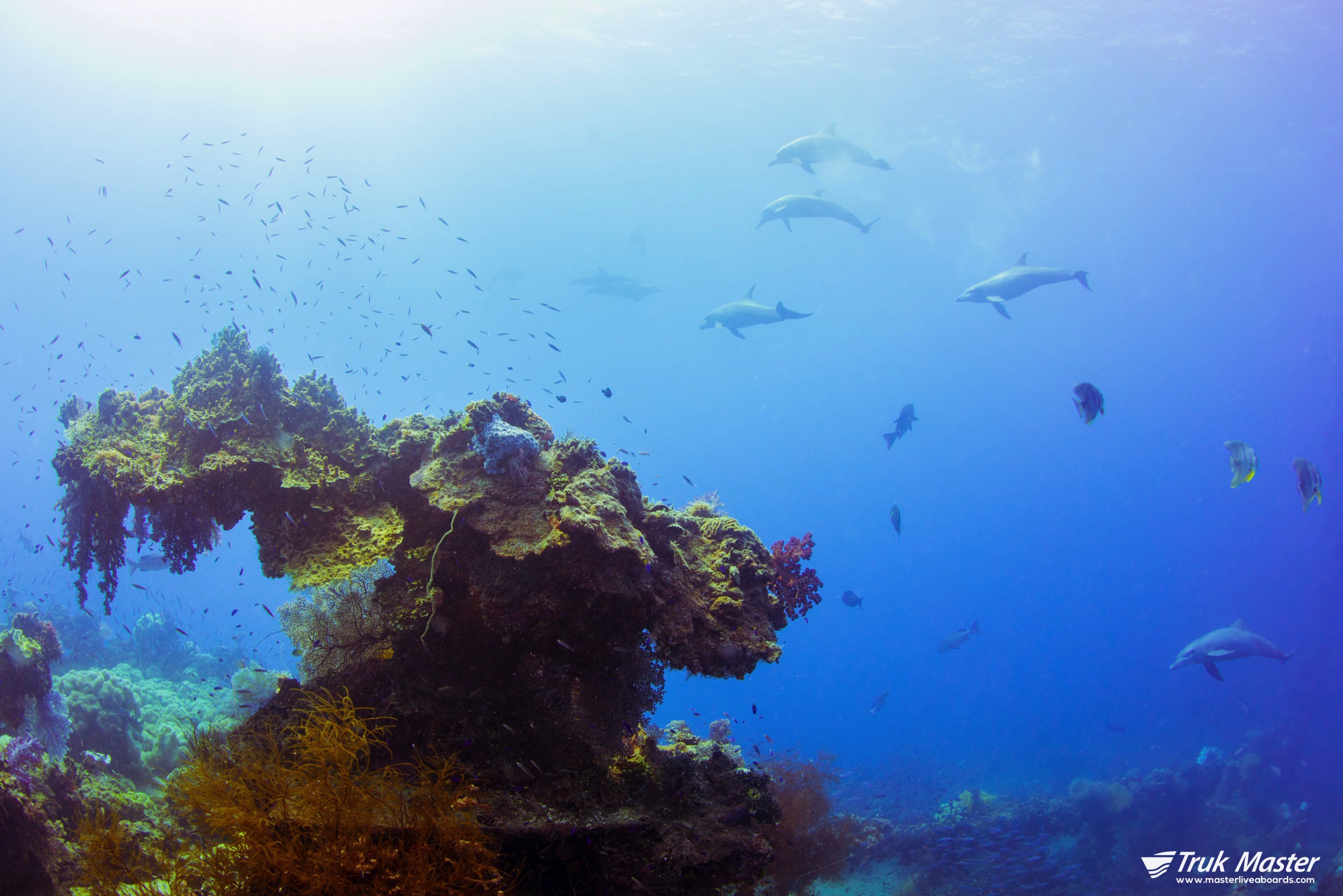

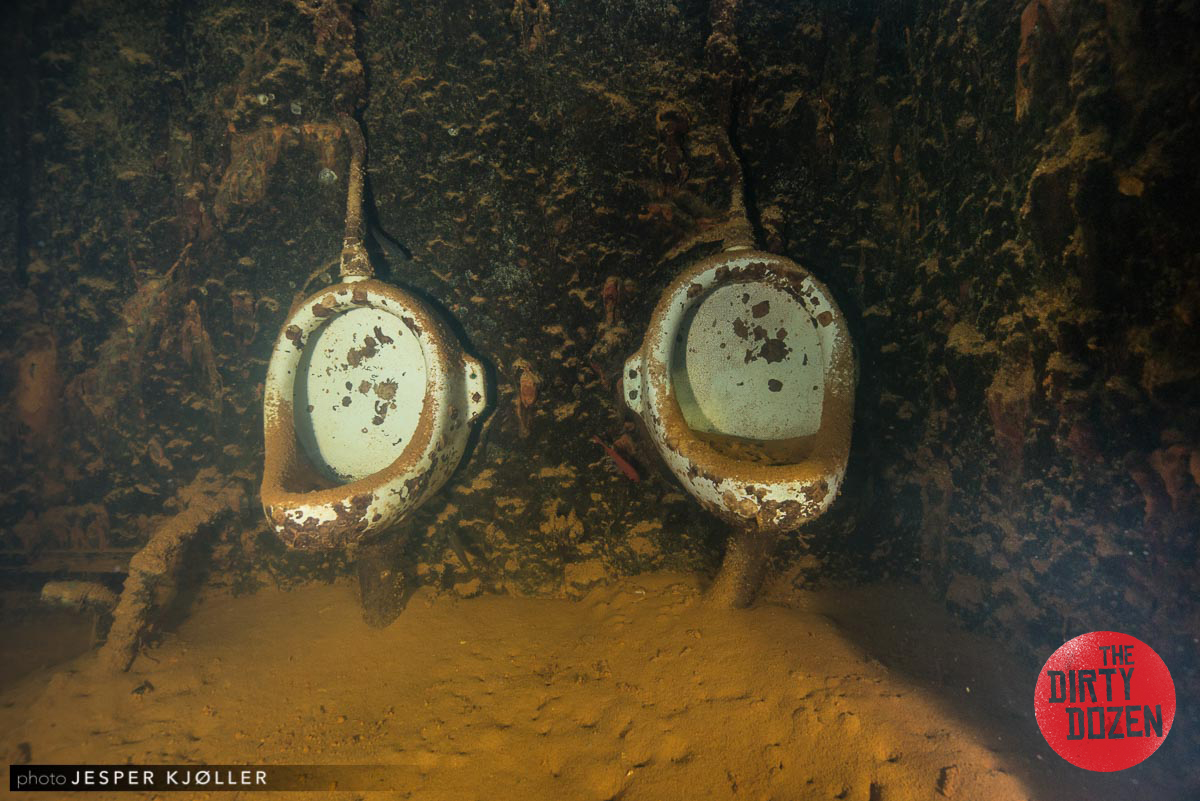
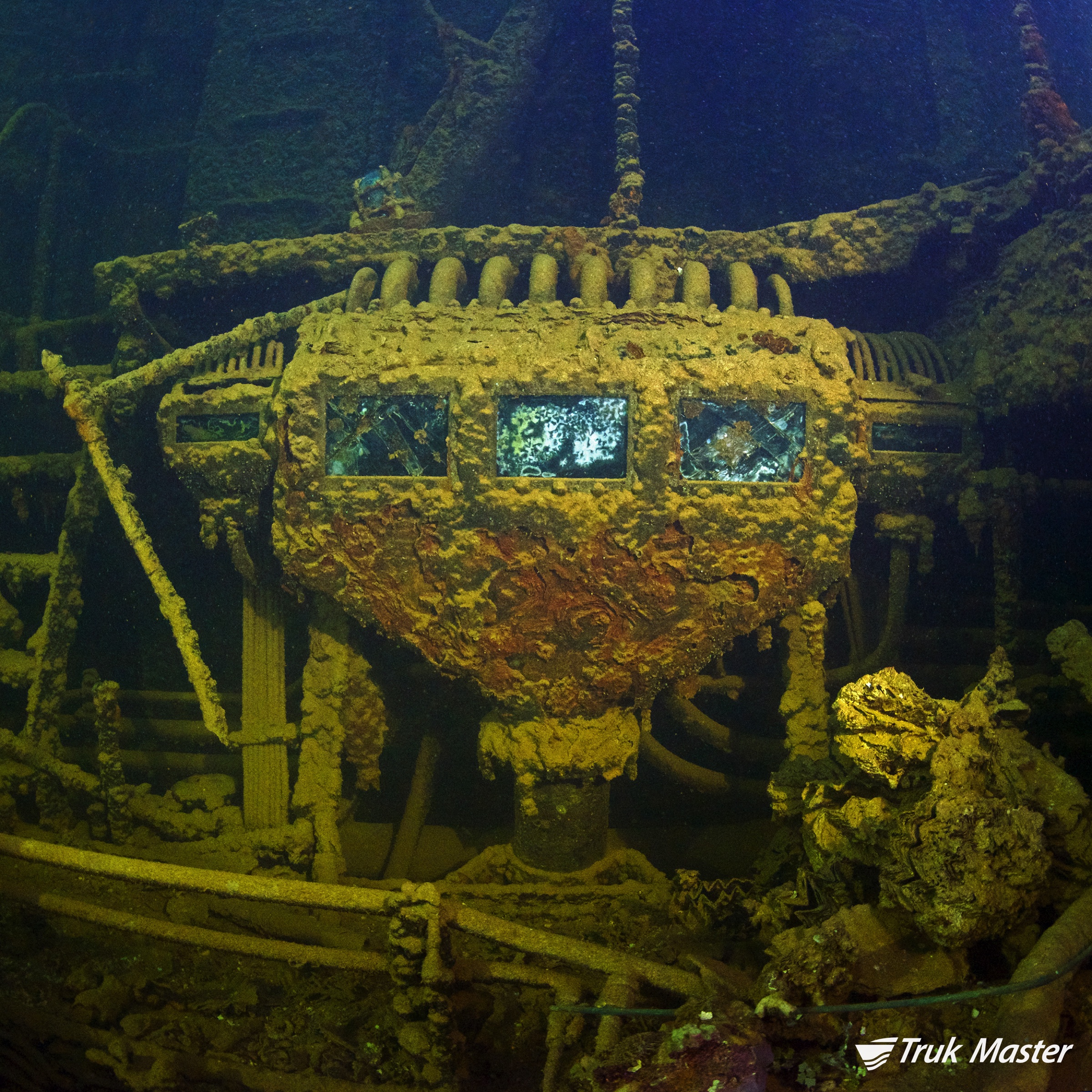
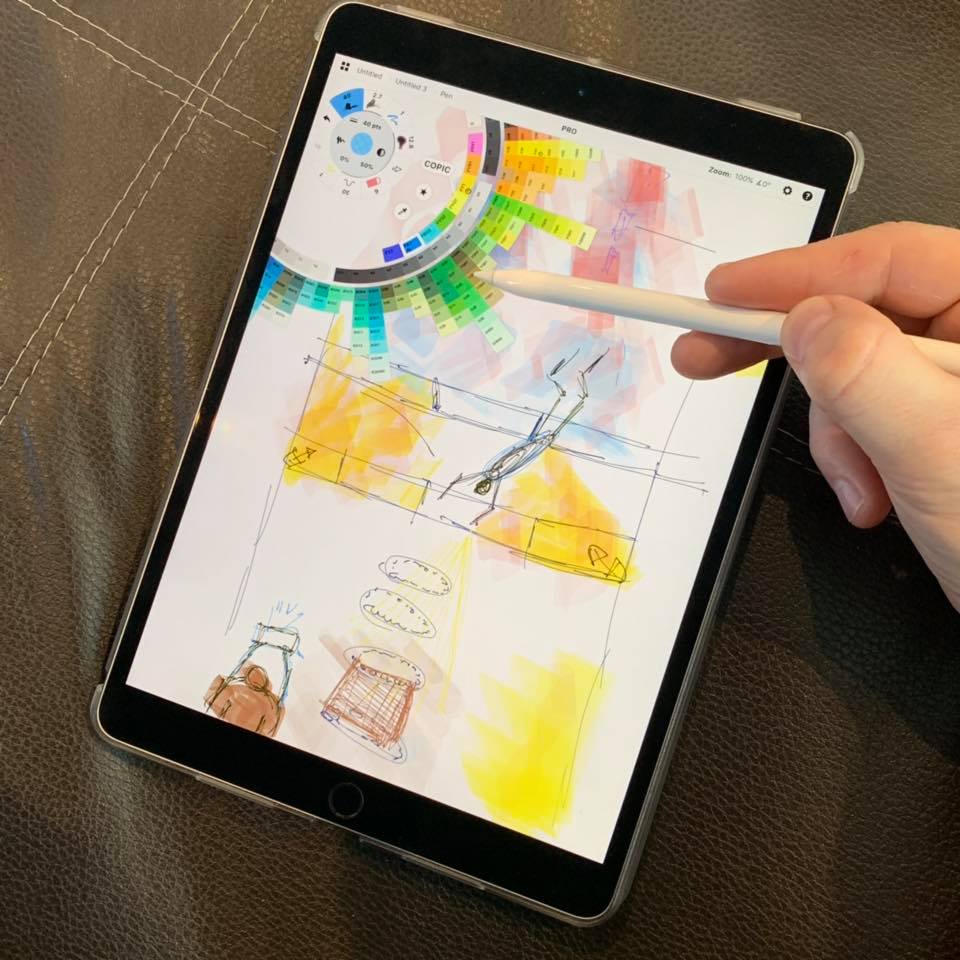
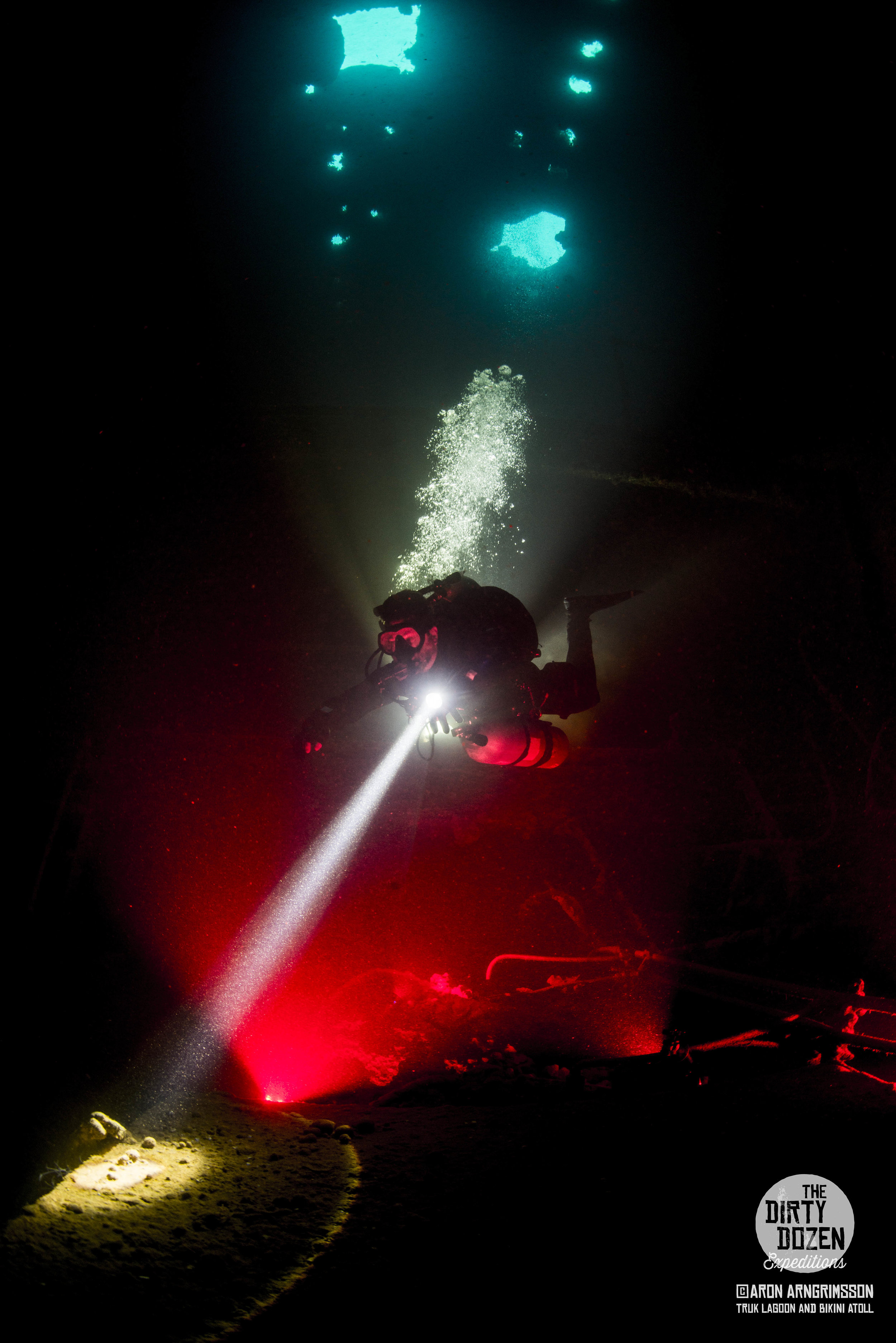
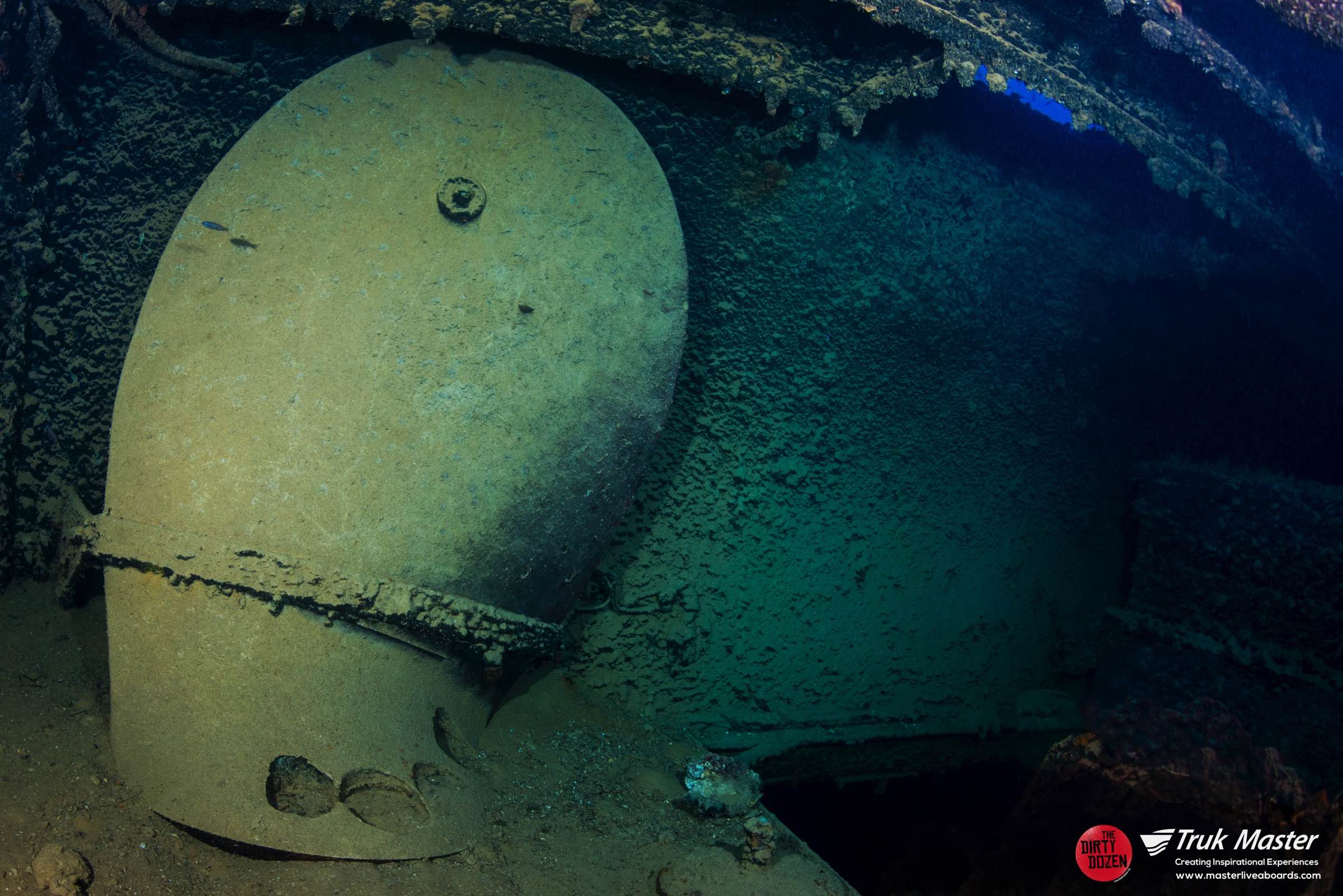
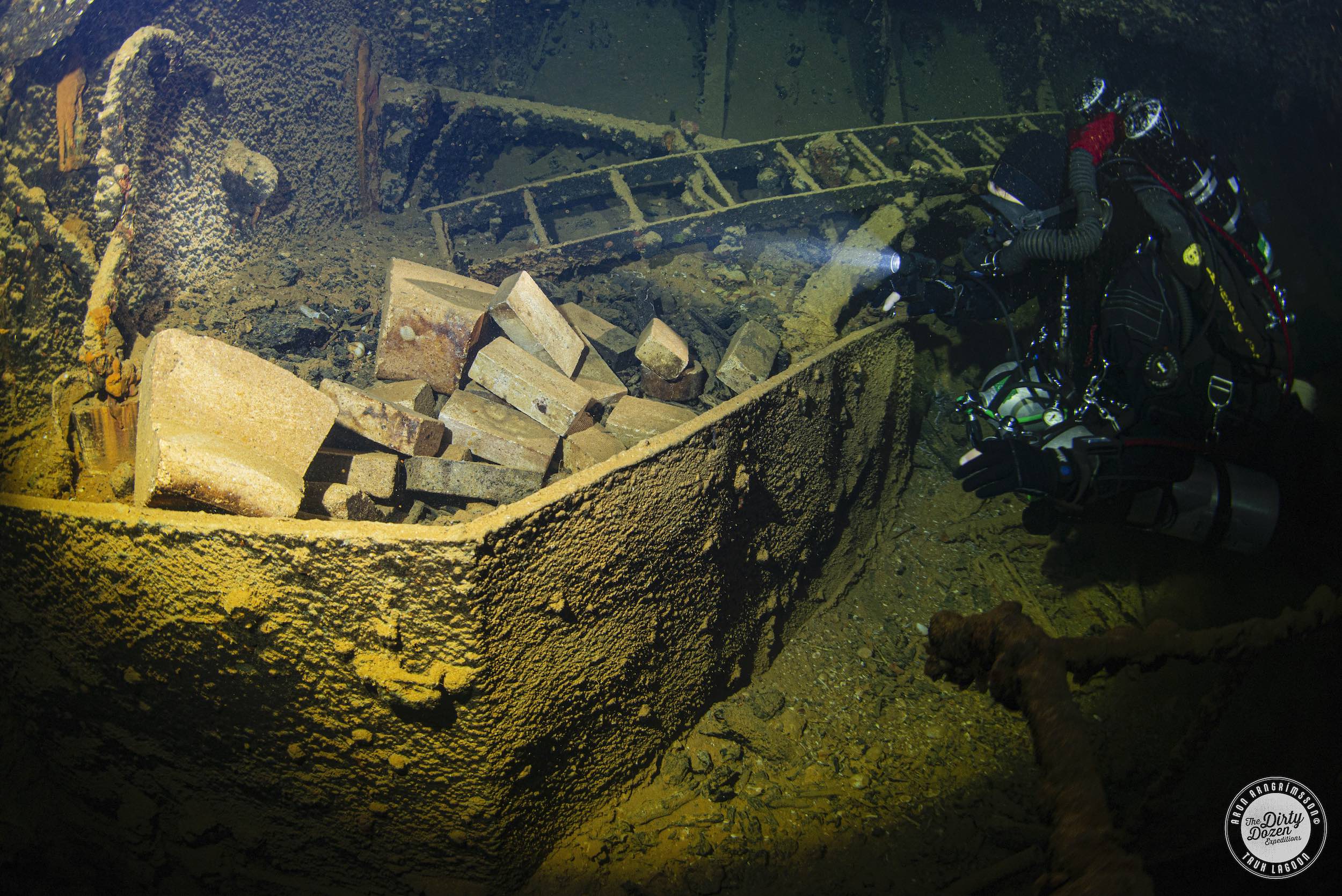
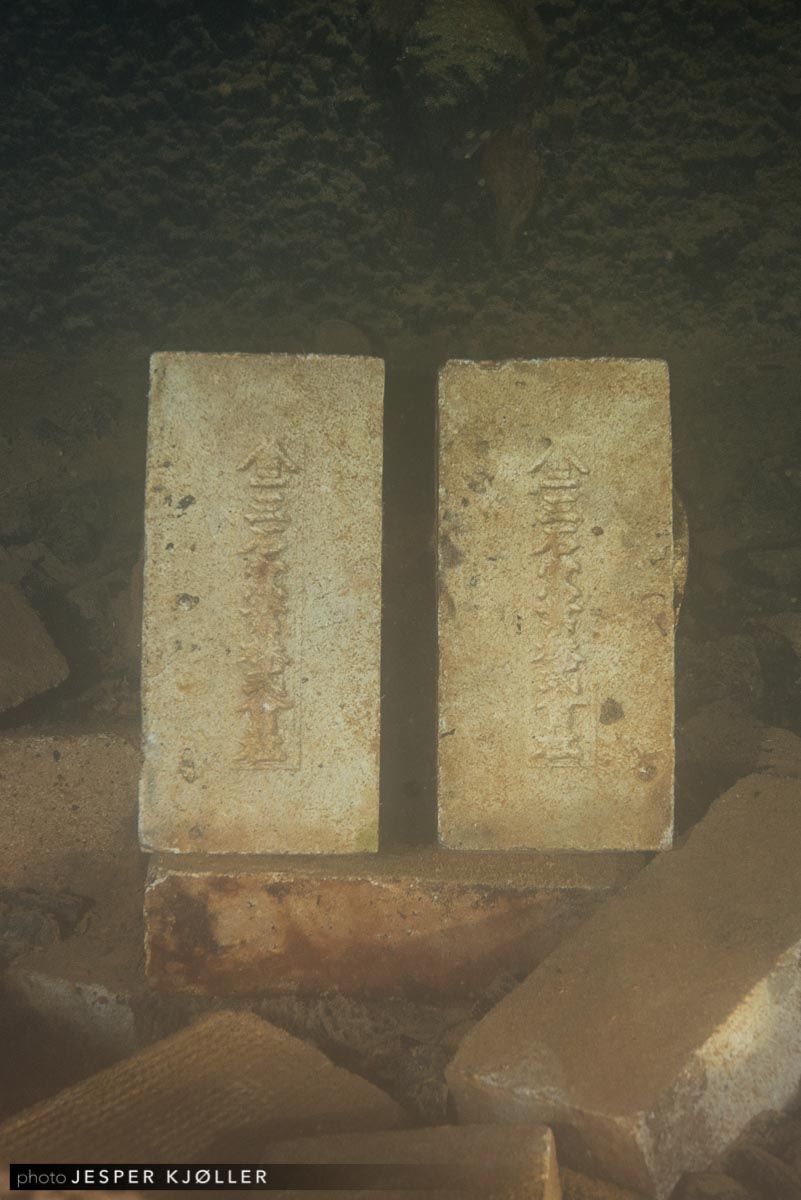
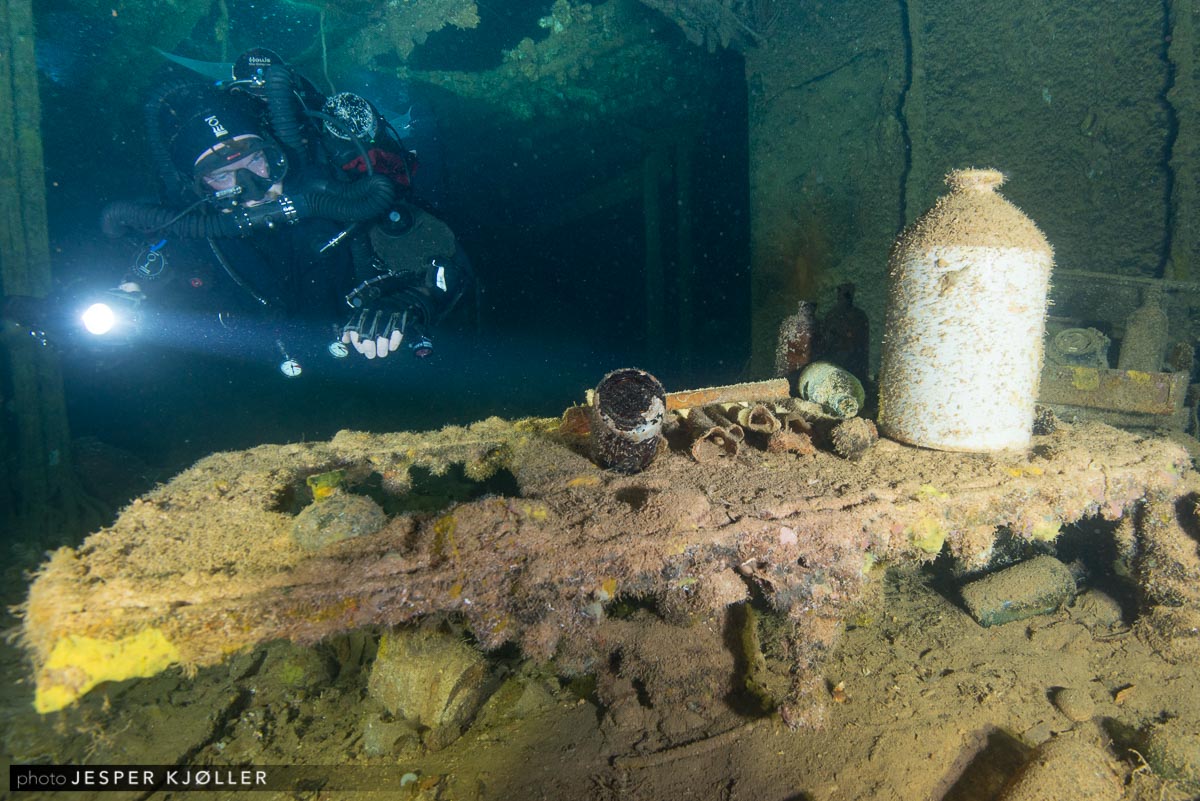
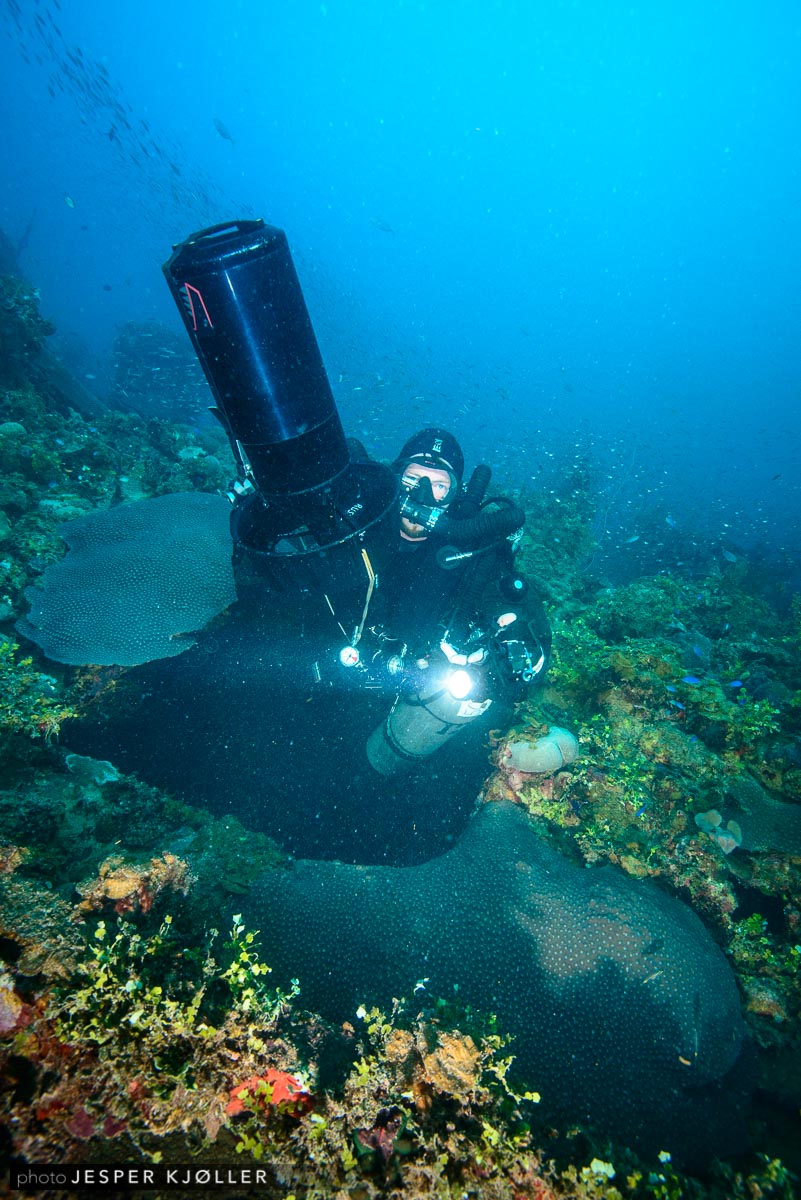
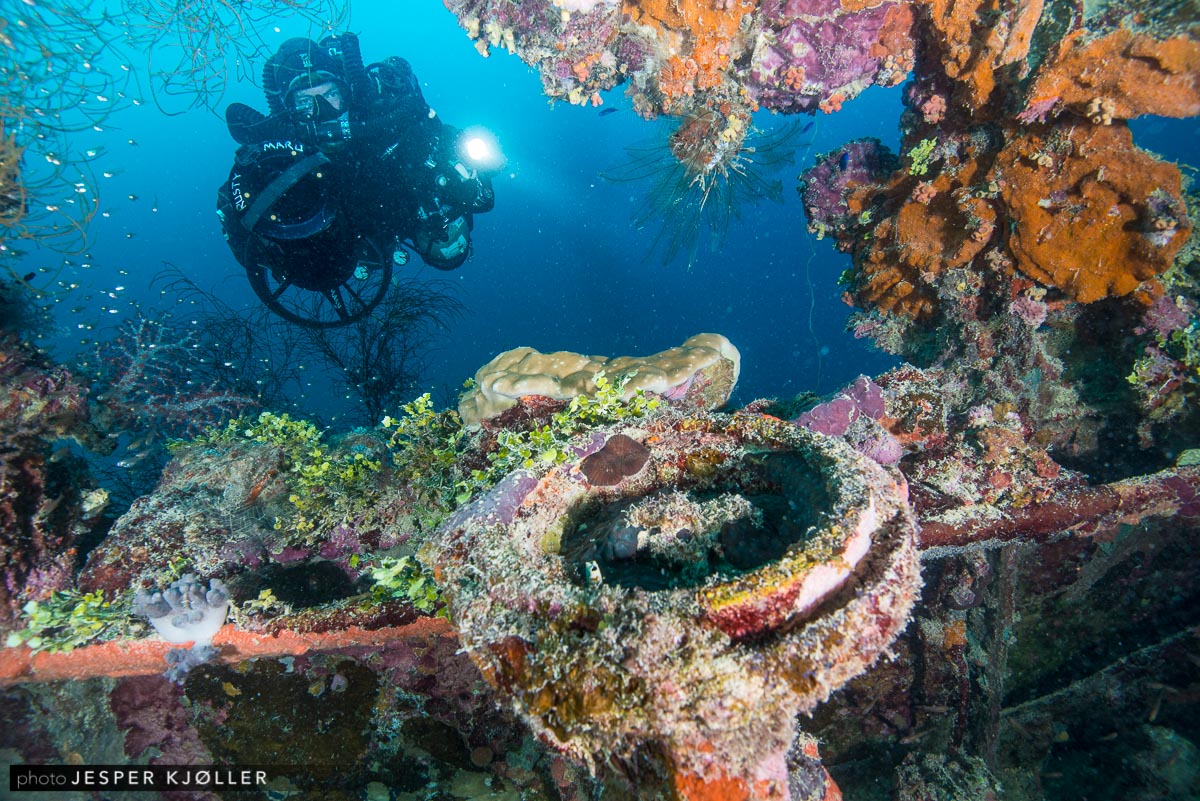
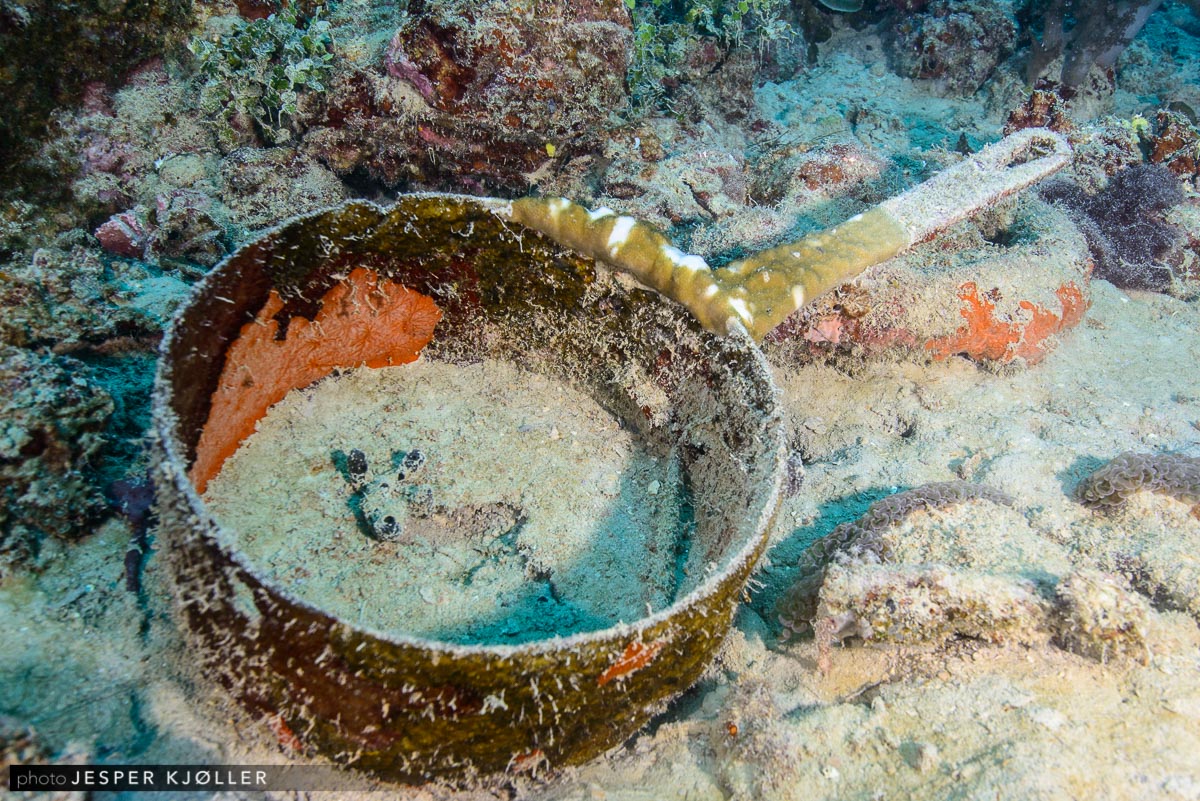
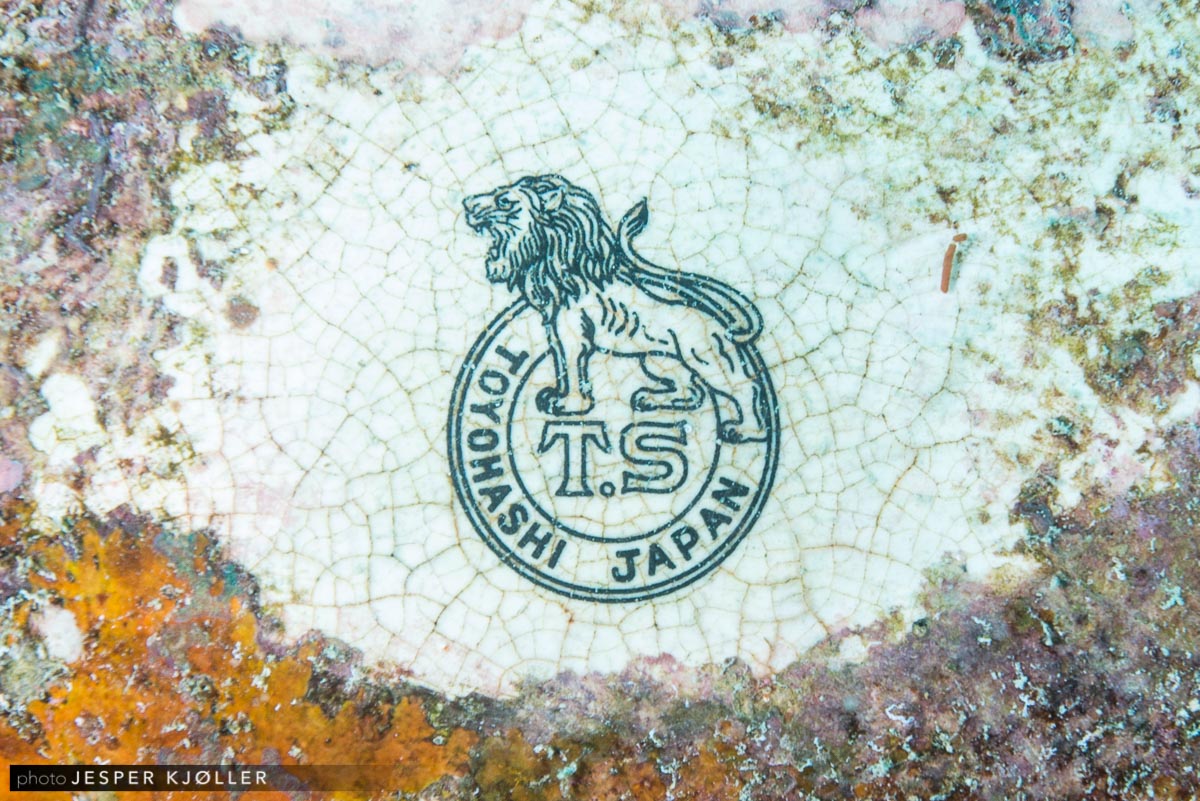
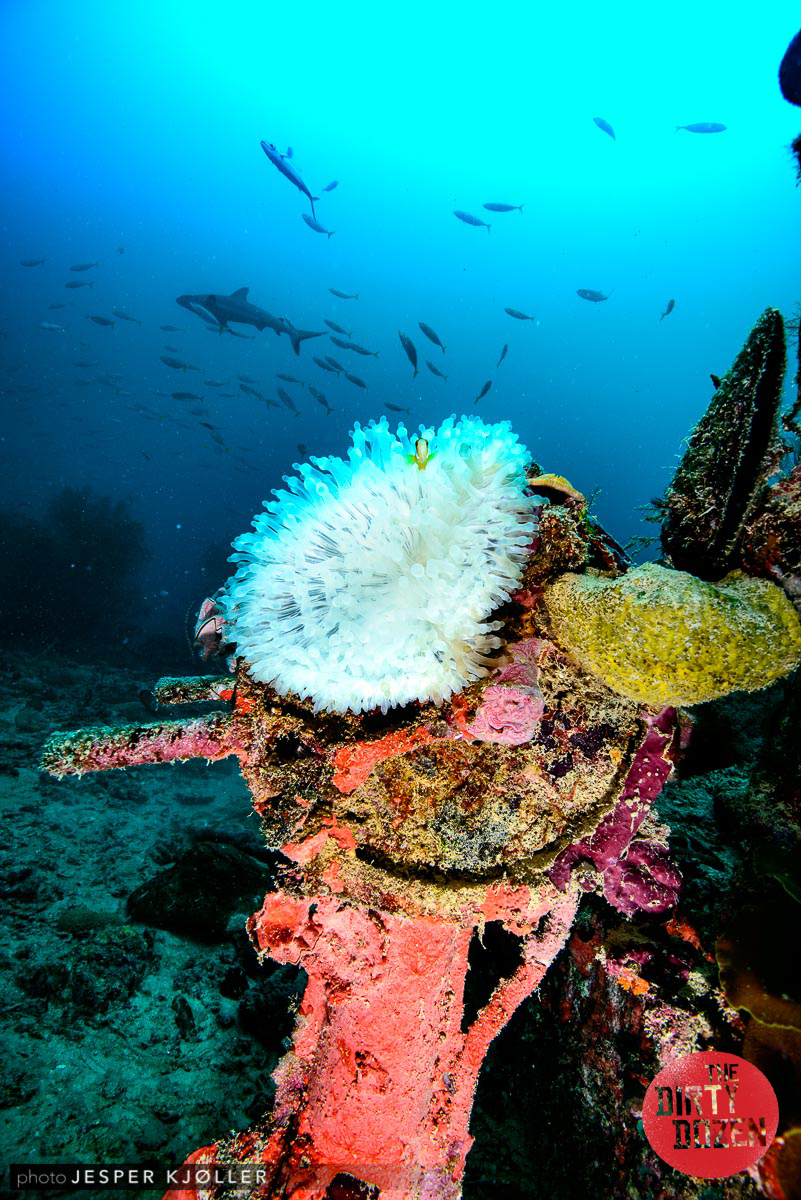
Unkai Maru
It’s still possible to read the gun maker’s markings on the Unkai’s bow gun showing it was manufactured in 1898. The forward holds contain many personal items including gas masks, shoes, china (with the five-pointed blue star insignia of the IJA), and numerous bottles. The engine room is small but accessible. The aft holds are largely empty. On the stern are depth charges and an old-fashioned steering quadrant.
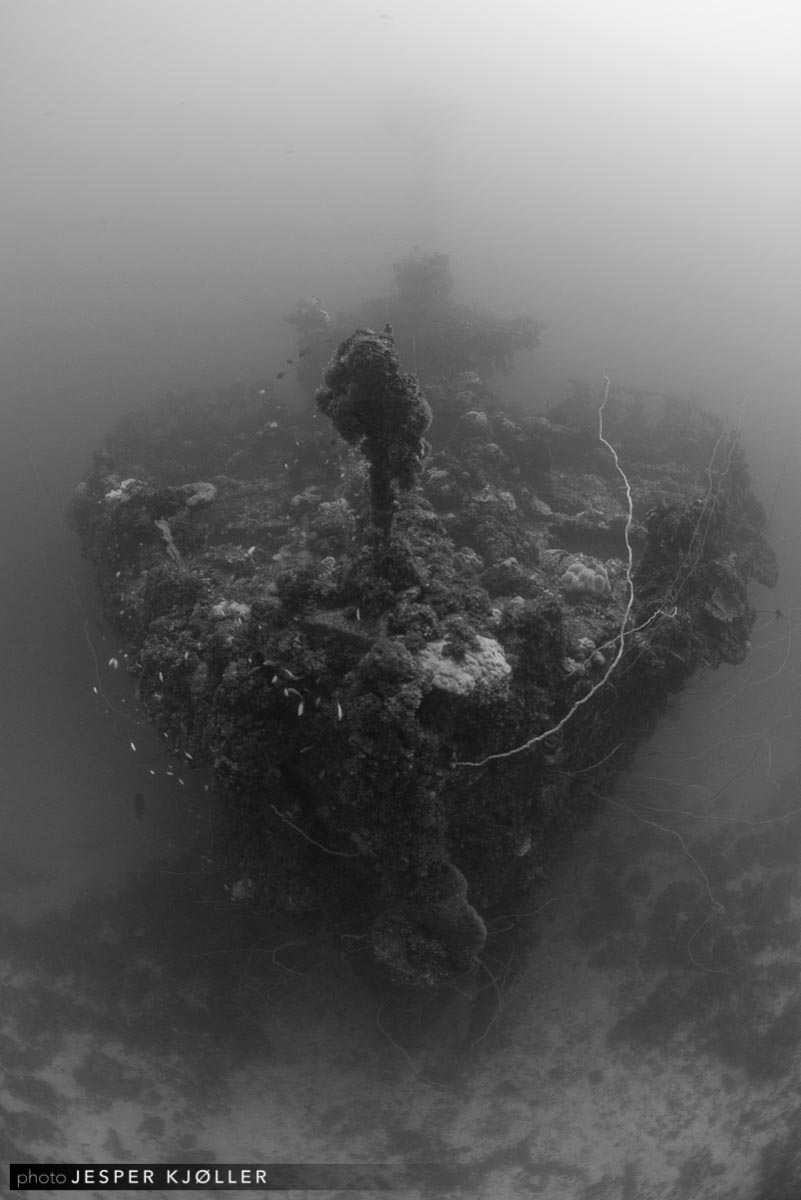
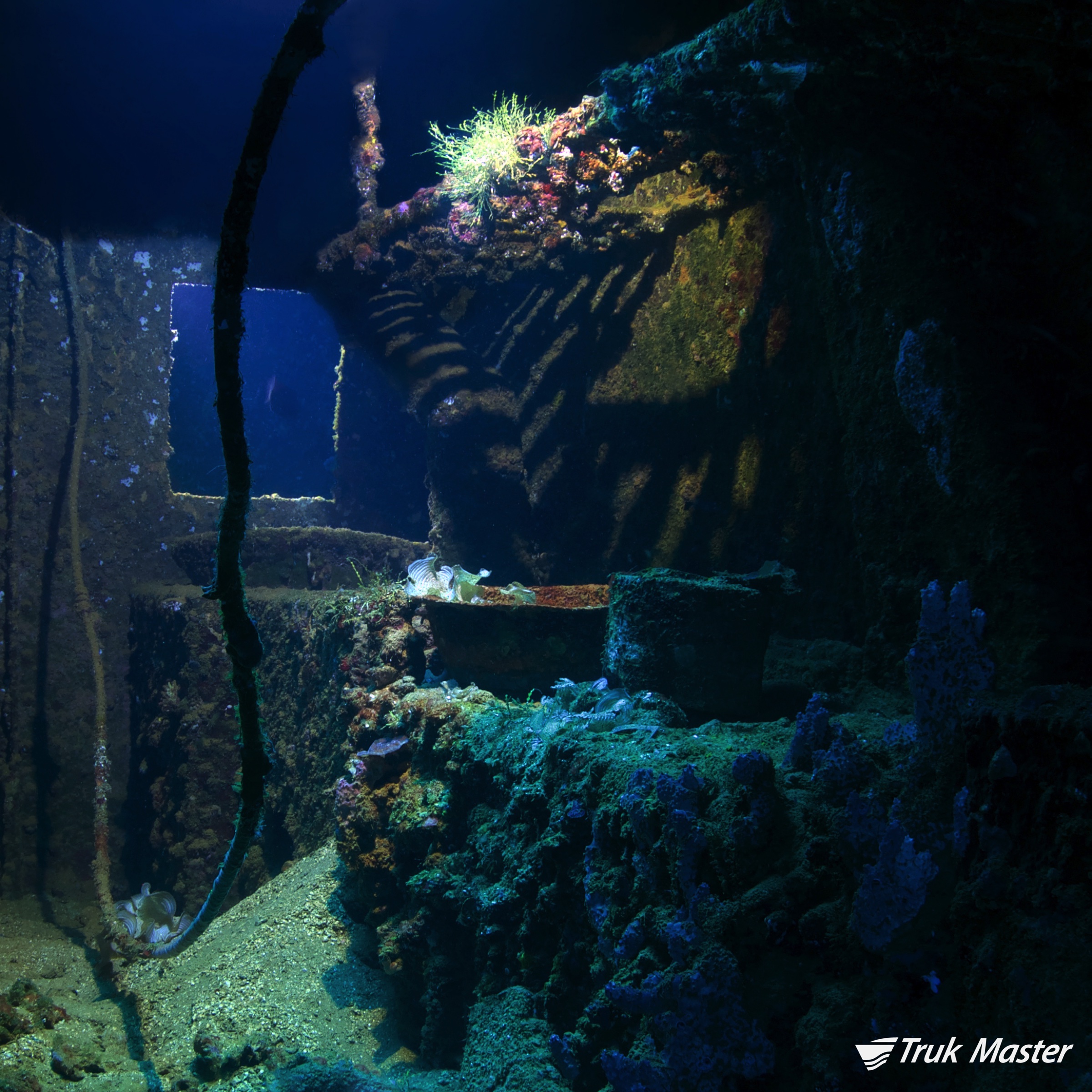
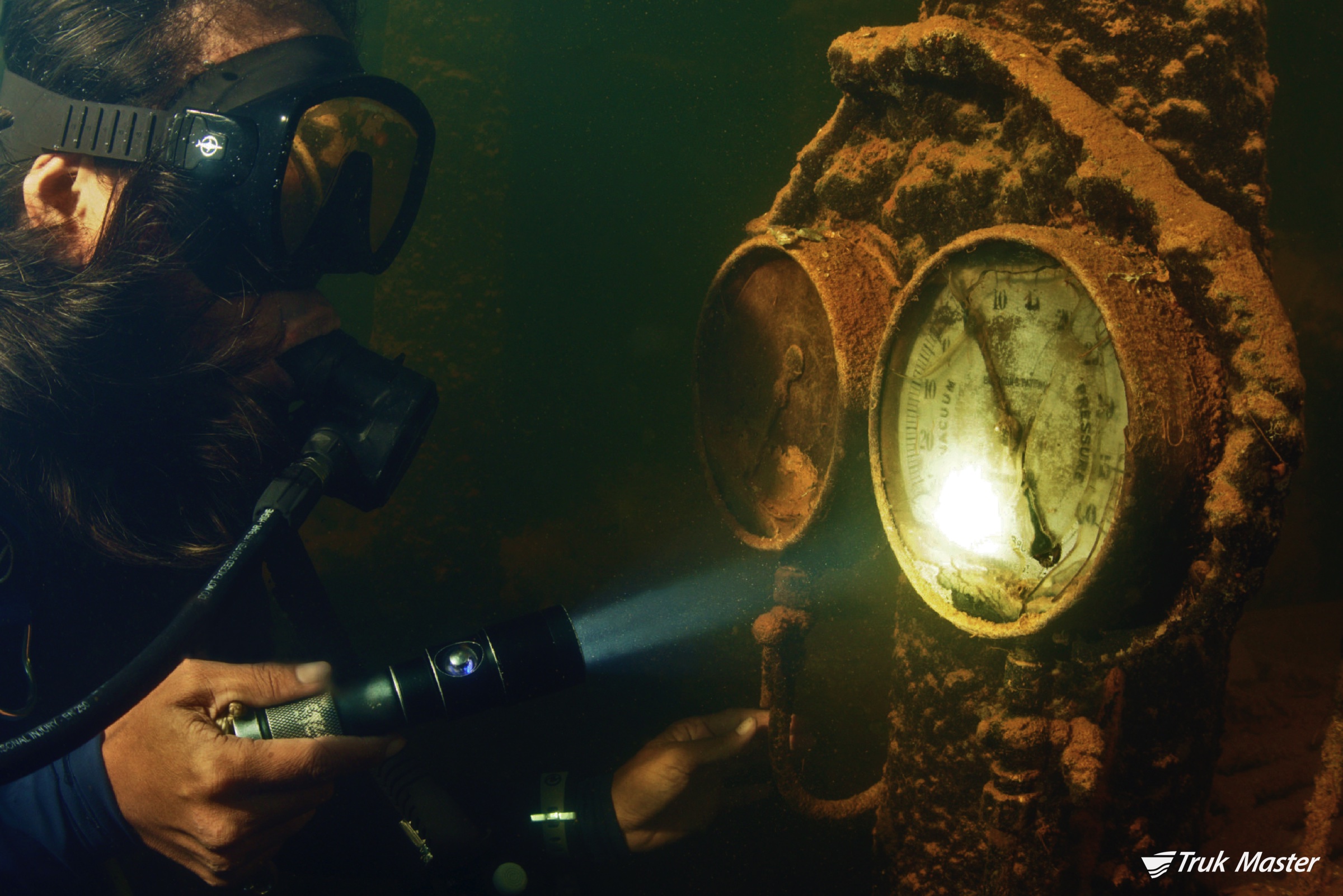

Yamagiri Maru
A popular wreck with divers, the Yamagiri is famous for the huge gun shells that are found in one of her holds along with a steamroller and other construction equipment. The engine room, main superstructure, and forward holds all offer plenty of interesting areas for exploration.

